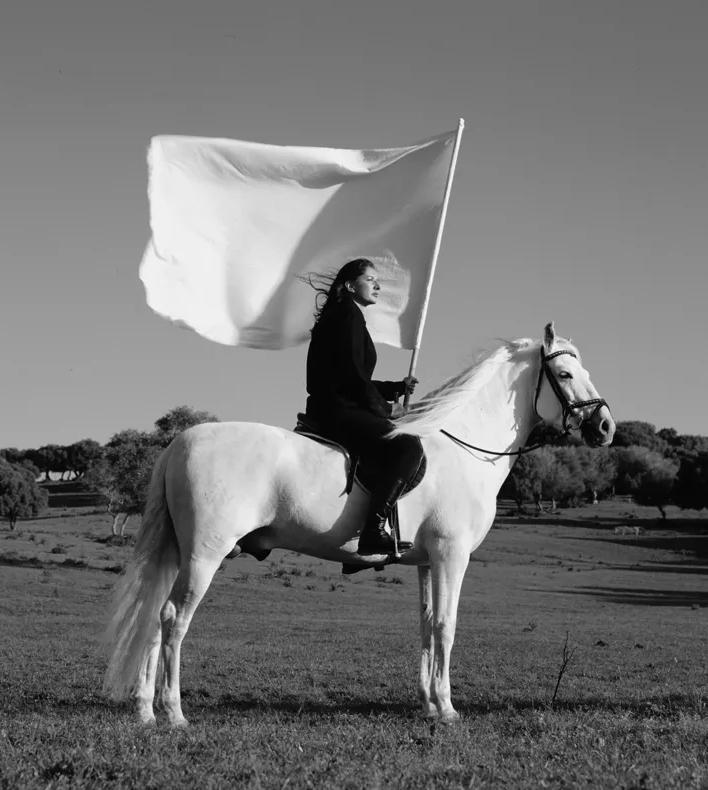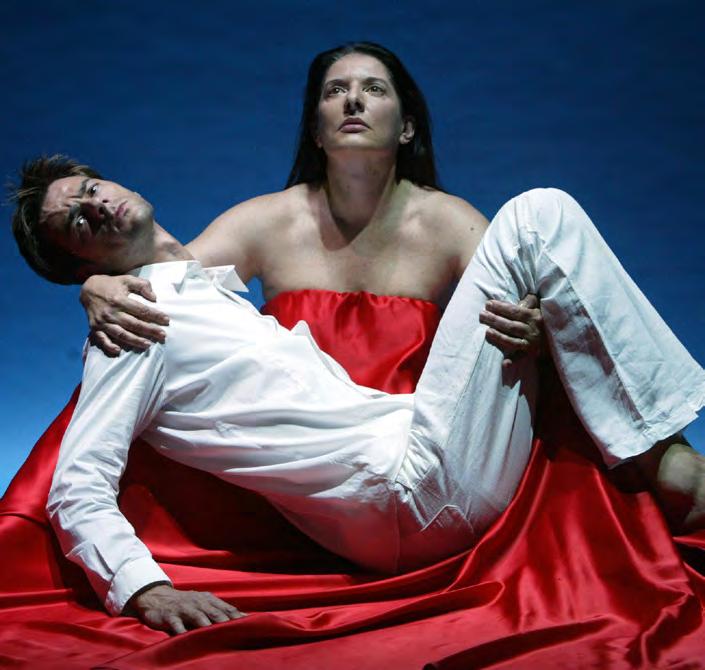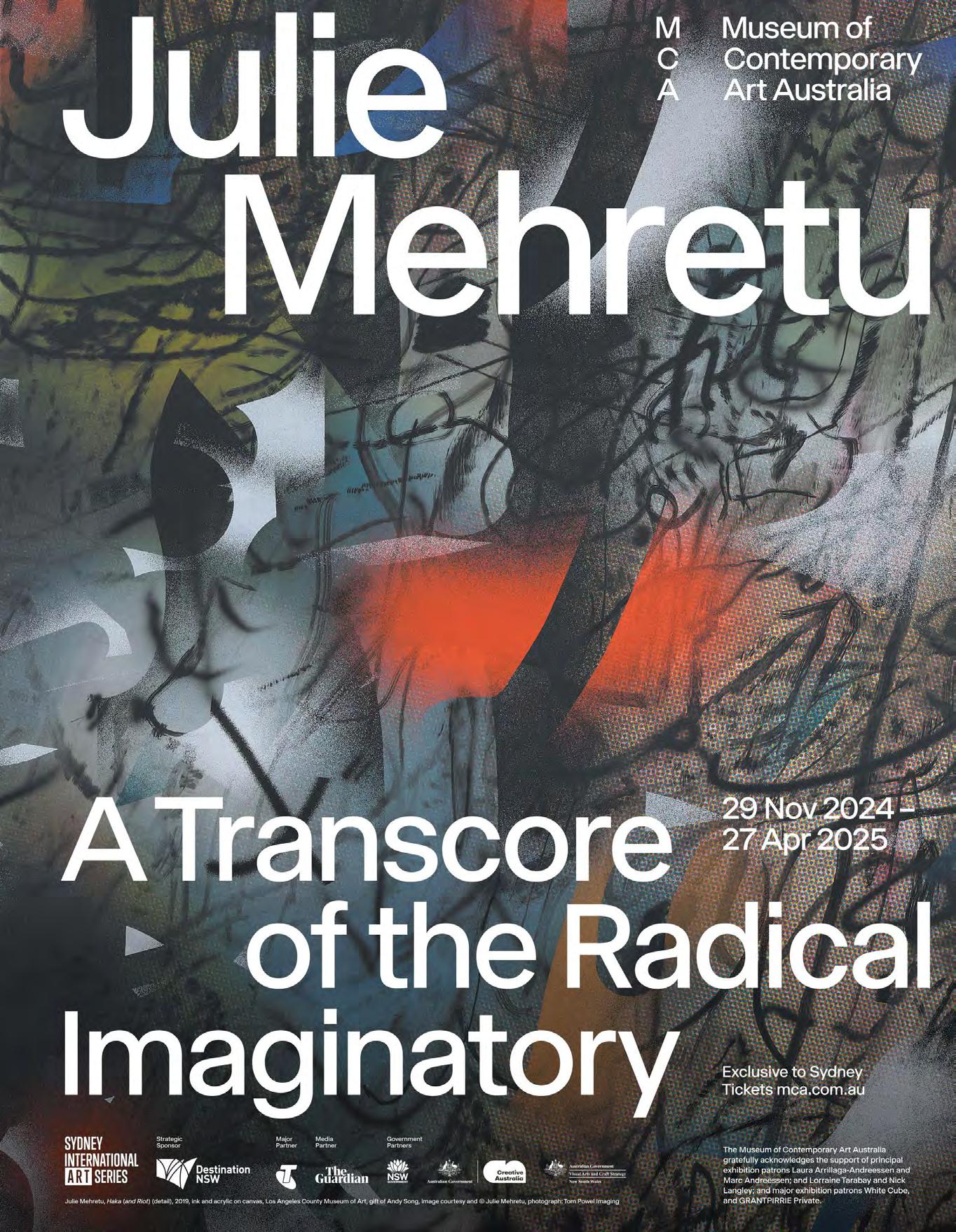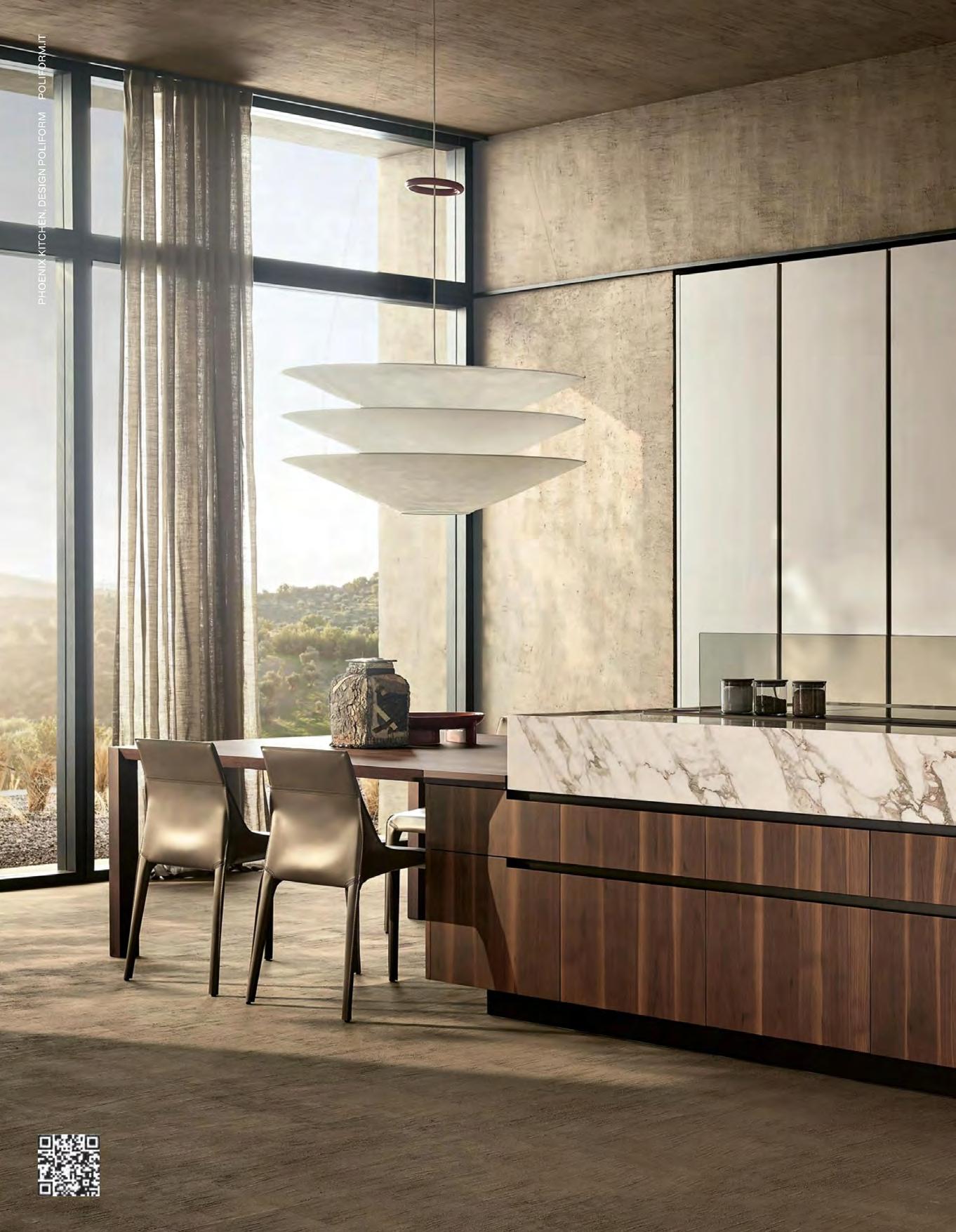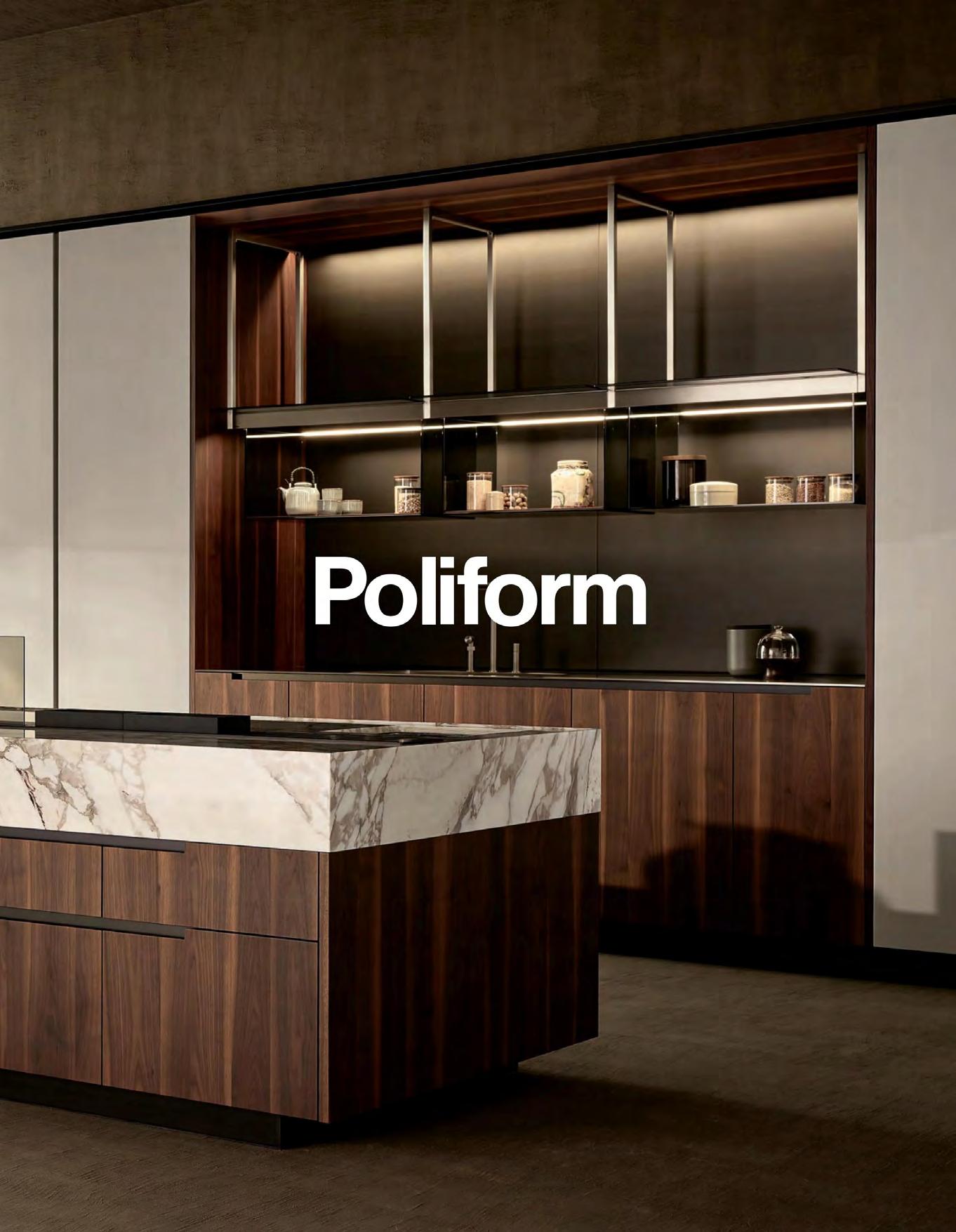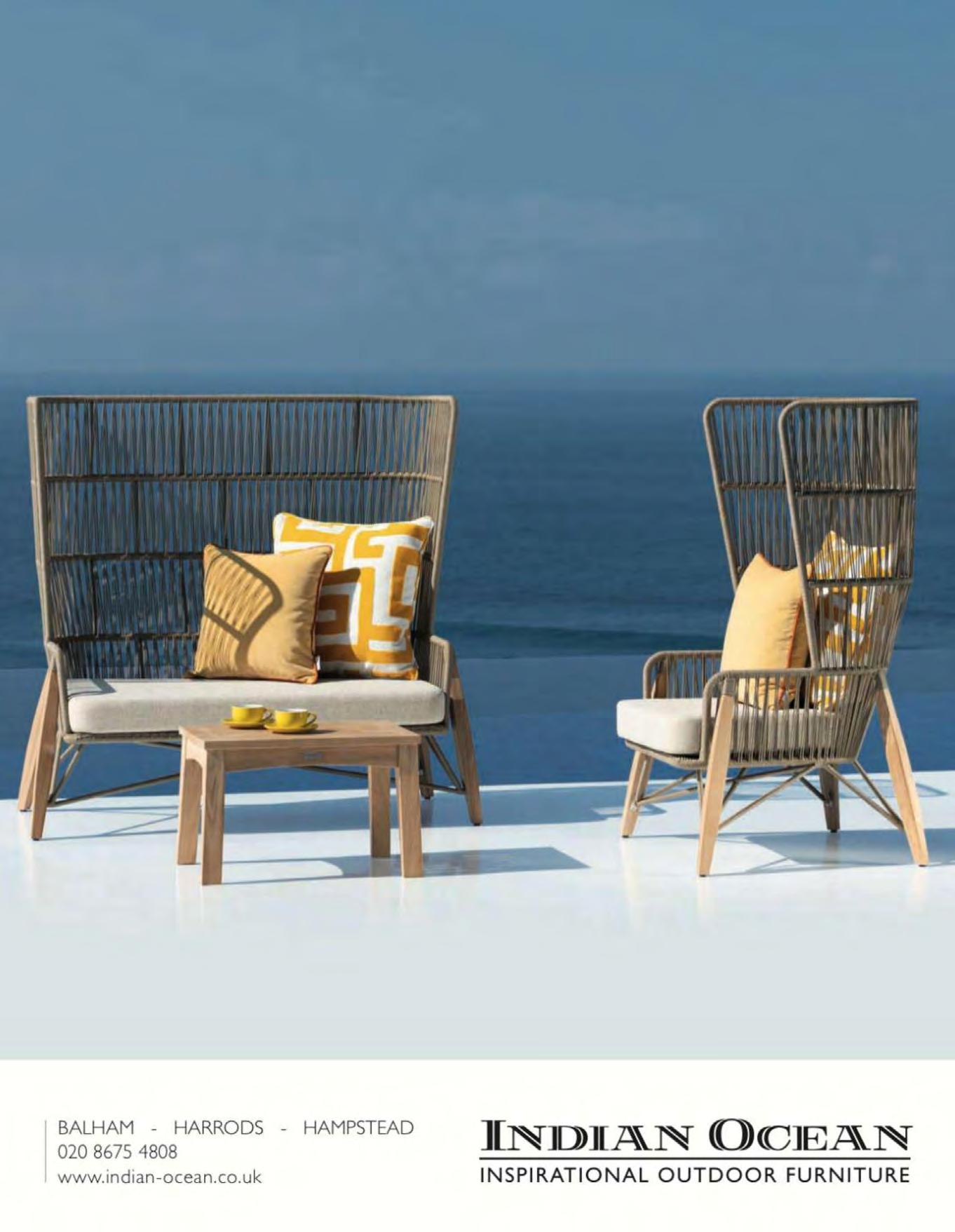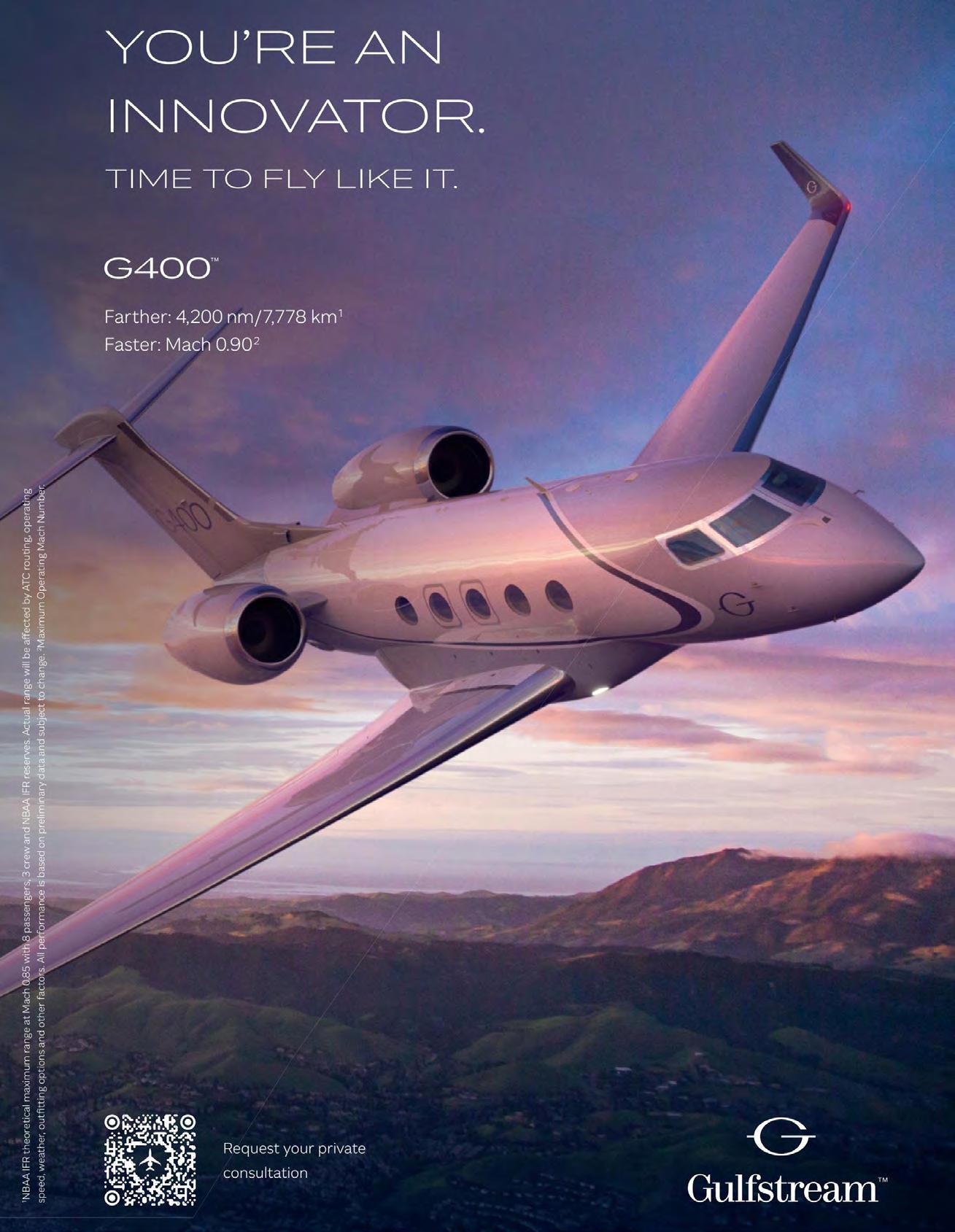REVIEW



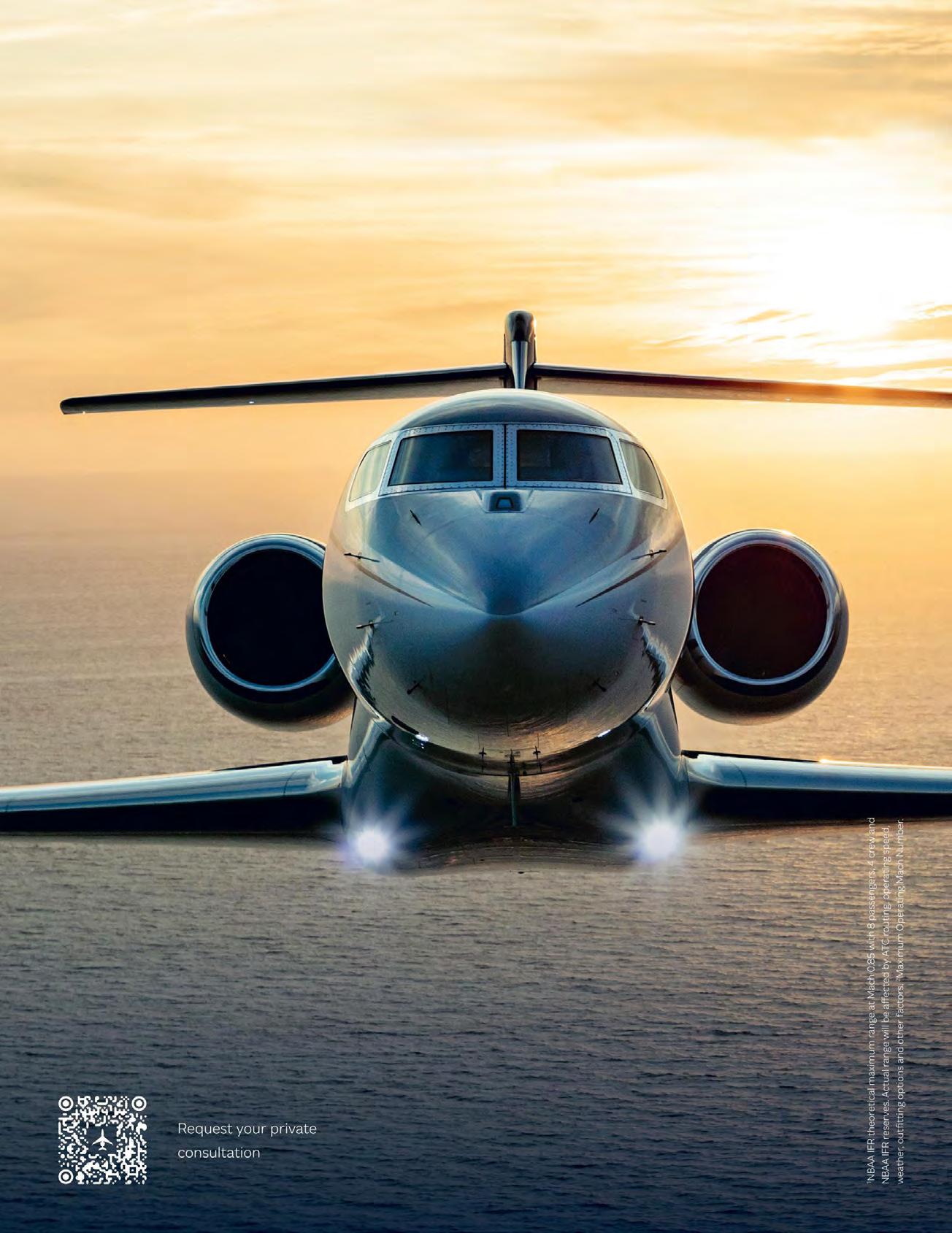
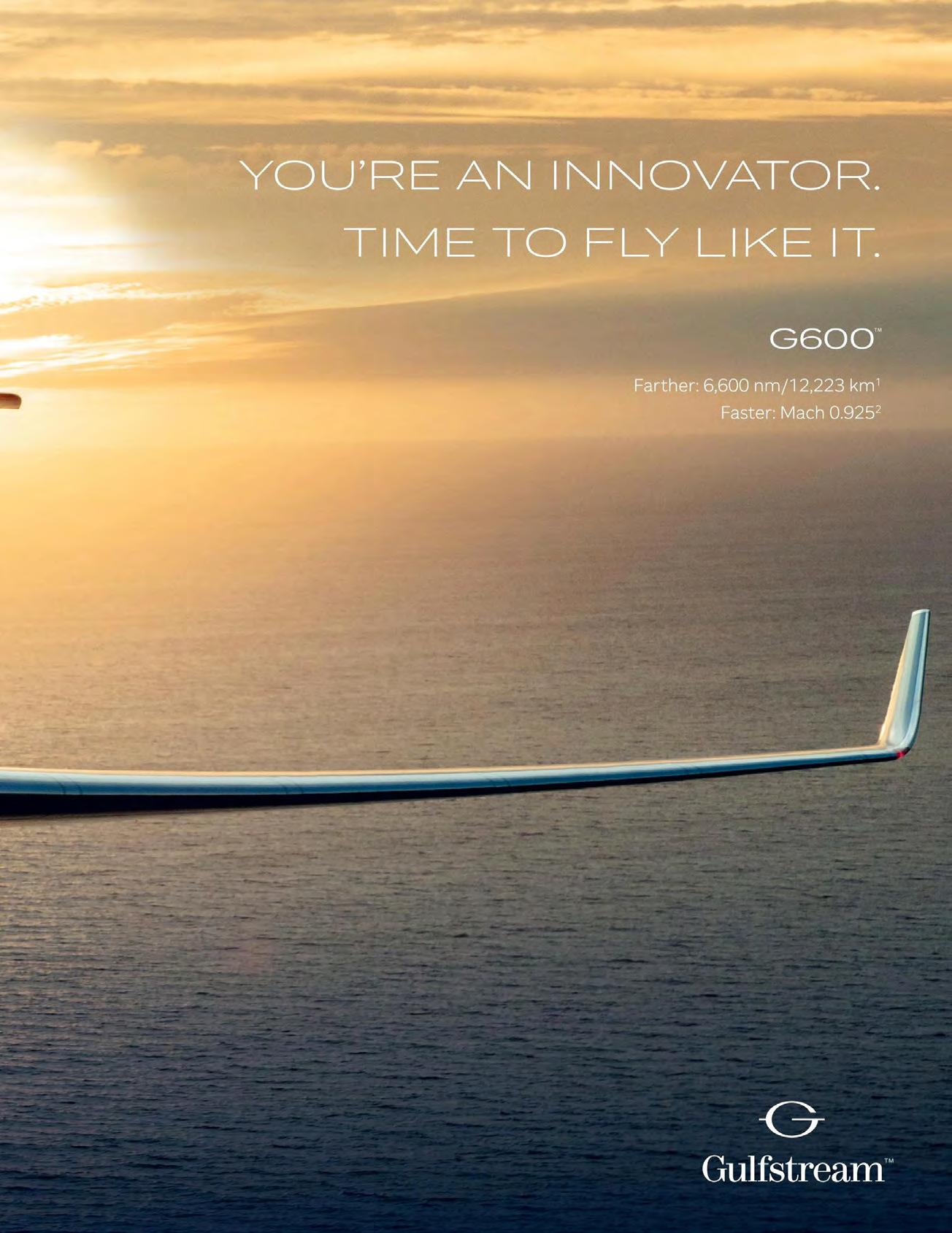
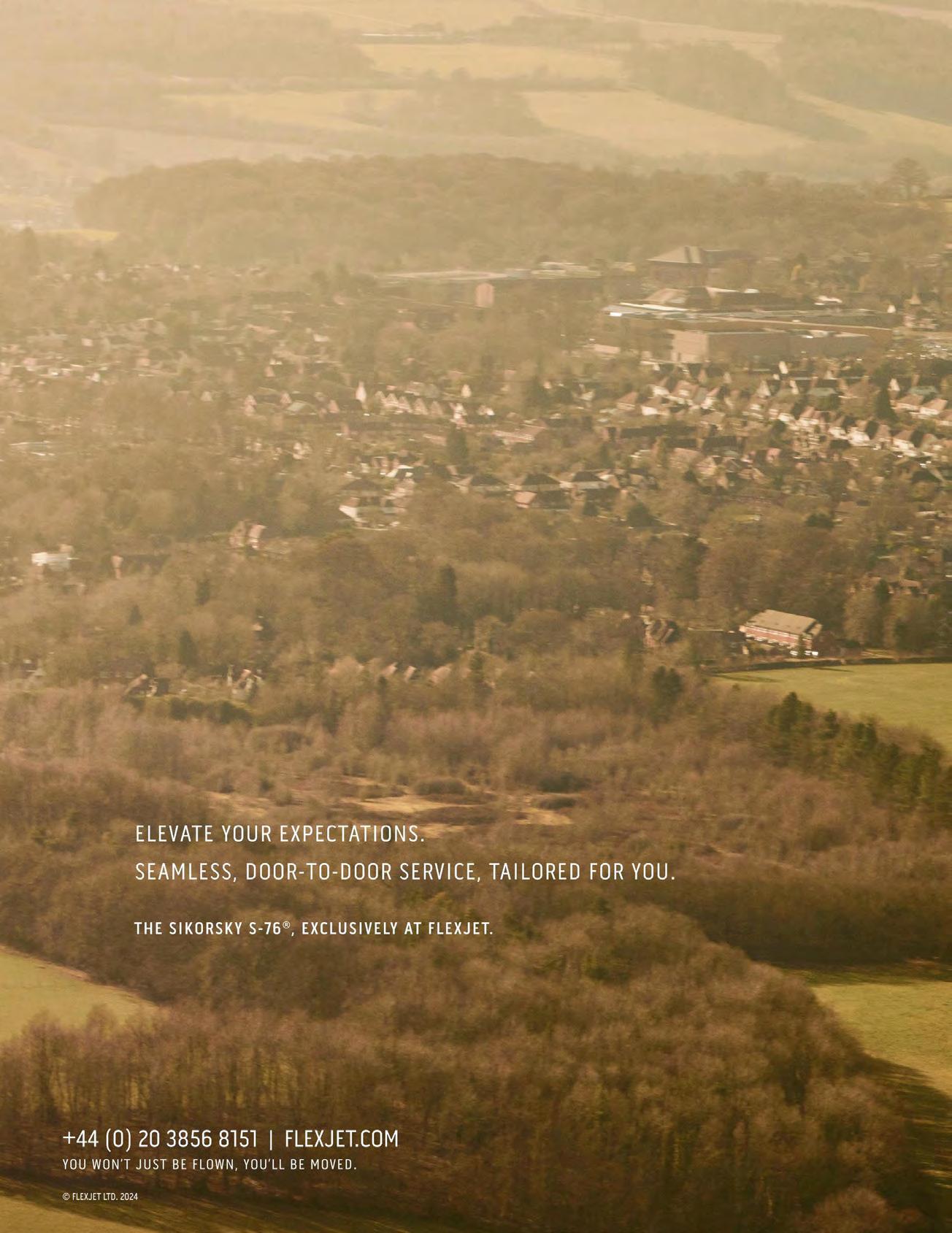
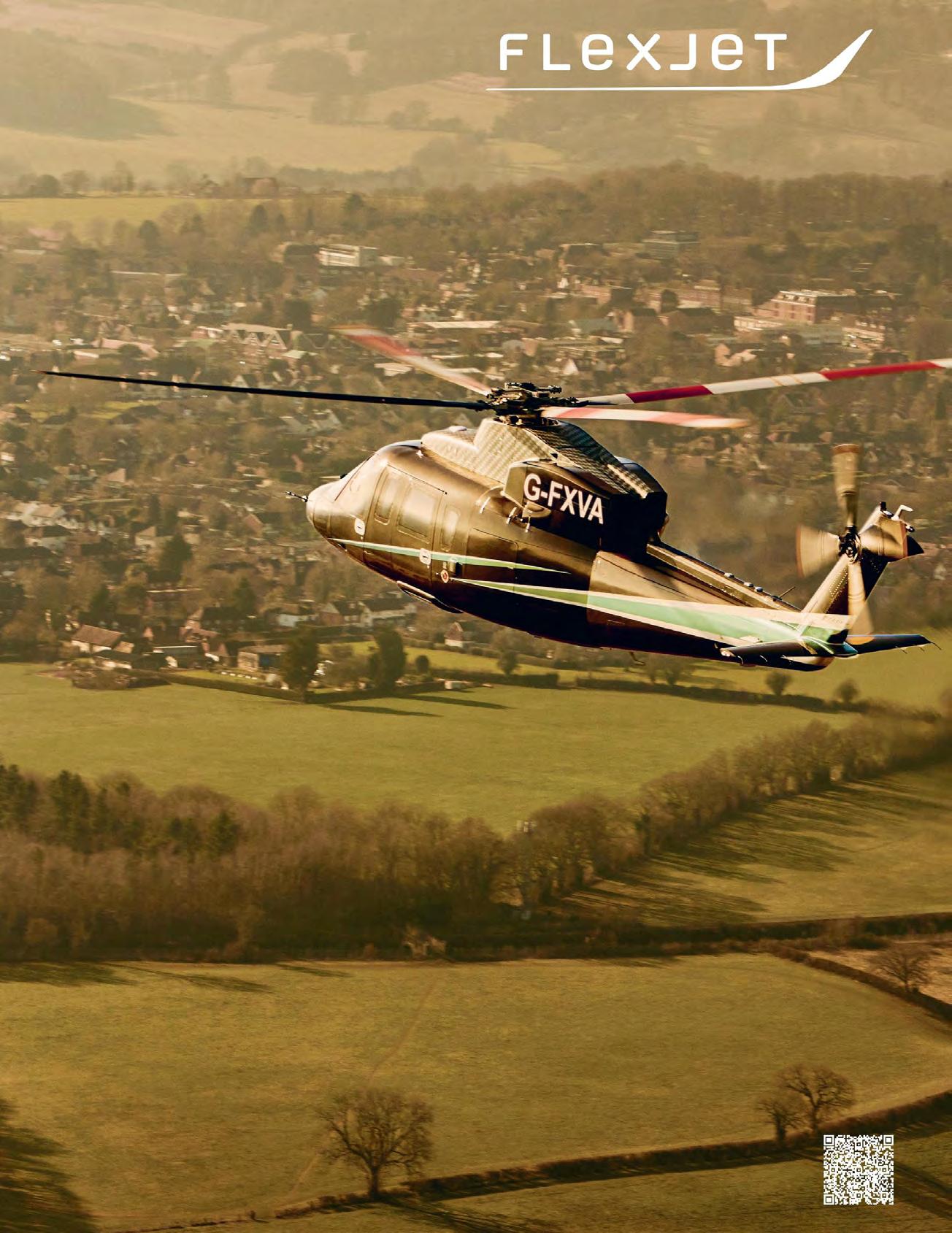


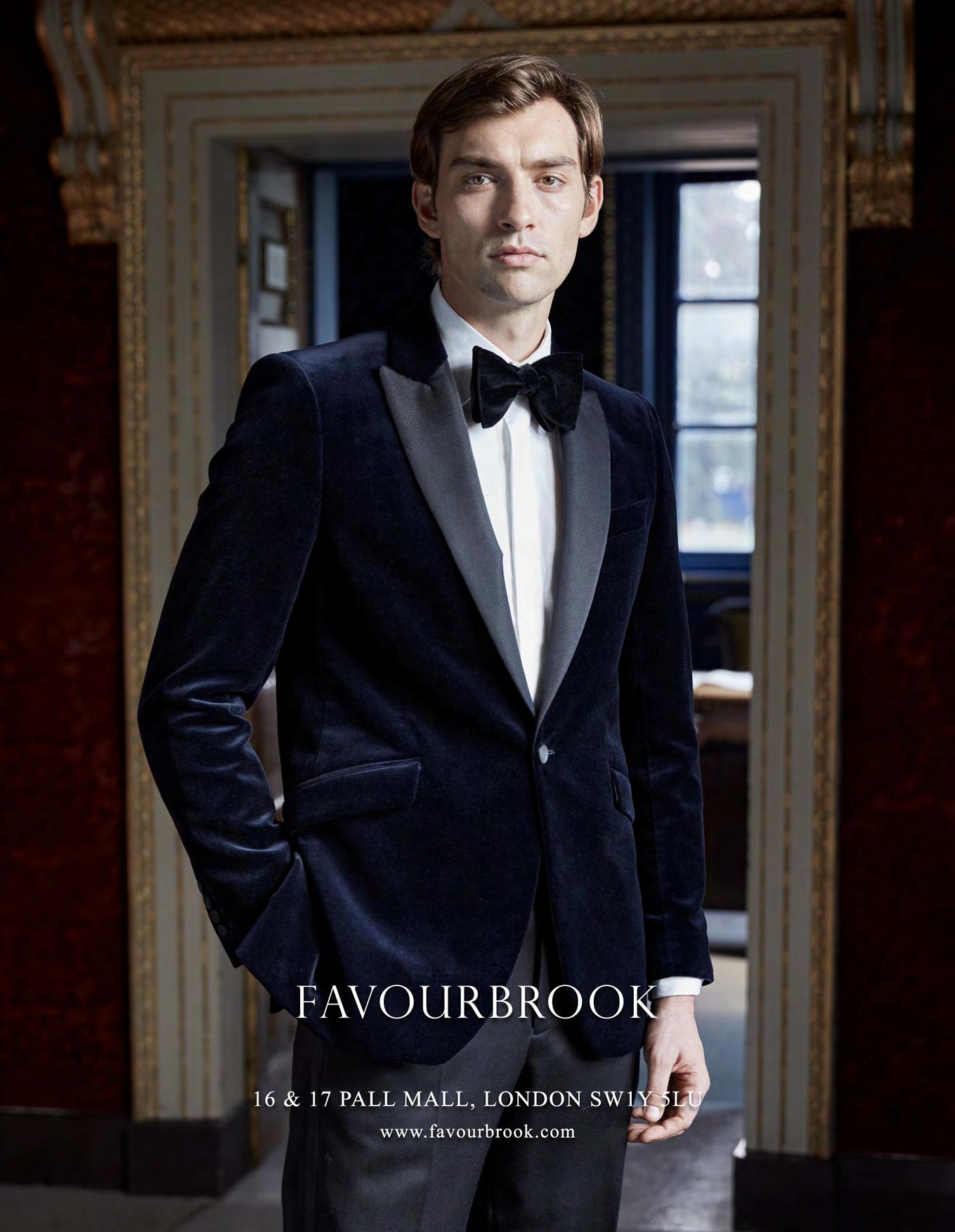
PETER J ROBINSON
BENJAMIN NORRIS
JOHN STERLING
MAT HAMILTON GREEN
BOBBY REYES
SARAH MORGAN
KIMBERLEY SAWYER
DAVID MAHONEY
SUSAN RICE
CLAIRE TINDRED
Managing Editor Lifestyle Editor North American Editor
Publishing and Technology Director
US Style Editor Global Travel Editor
Director, Finance & Operations Business Manager
Advertising and Marketing Coordinator Sales Director



So, here we are at the end of the first quarter of 2025, and - true to my character - I feel my mind still reeling from the start of another year, each one seemingly passing in quicker and quicker succession.
Indulge me in a musing, if you will. A strange phenomenon occurs around the end of each December, reaching its peak in that odd in-between period - the dead week that lies between the final flourishes of Christmas dinner and the first clink of a Champagne flute on New Year’s Eve. It’s a collective delusion; the belief that once the first days of the year roll around, some great reset button will be pushed and all will be right with the world once more. We saw it hit new heights of oddity during the lost years of the COVID-19 pandemic; as 2020 began rumbling towards its end, we all told each other that once the year was done, things will be OK again.
It’s a uniquely human peculiarity. It speaks to our fatalism and optimism in equal measure, while also paying service to our hubris, as if our abstract division of the march of time into months, weeks, days, hours and seconds has any meaning. We face an undeniable and strangely comforting truth: there is no reset button, neither at the beginning, middle or end of any year – our struggles and successes won’t just step onwards, but rather build upon the foundations already laid. The change of the calendar is not a time for fresh starts, but instead for the continuation of our focus andhopefully - better days to come.
It’s an area of thought that was on my mind for much of the production of this, our Spring issue of The Review Magazine for 2025. So much of what we deal with here in the luxury sector swings happily between the classic and the contemporary, the vintage and the avant-garde. However, when pondering such things, it’s impossible not to find one’s mind settling upon those remarkable individuals who endeavour to not merely live in their own time, but rather make the history on which the future is built. This is most evident in our
Benjamin Norris Lifestyle Editor
cover star Jade Holland Cooper, whose designs are blazing new trails (although with plenty of timeless appeal) in the world of equestrianadjacent fashion and beyond. Hers is a tale as old as time, told anew with ferociously literal horsepower: inspiration, heritage, foresight, hard work and relentless dedication, all resulting in something really rather remarkable.
Indeed, our pages are full of such contemplations, of the past informing the present and the future to marvellous effect: the great pilot watches of 2025, for example, have built upon a half-imagined history of a century of moustache-twirling aviation. Safari adventures forever exude the sepia glamour of a Rider-Haggard adventure novel, while changing with the times for the betterment of all involved. The new Morgan Plus Four – which our motoring editor and managing editor were lucky enough to get up-close-and-personal with – has been produced with every effort made to pretend the golden age of motoring never ended. The quest for beauty, which our own Naomi Lake handles with her typical aplomb, remains the same crusade for the spring of eternal youth our ancient ancestors wrote epic poetry about.
Foolish is the man who only ever looks forward and forgets he stands on the shoulders of giants. More foolish still is he who longs for a past he cannot remember or perhaps never knew – and we’re certainly not in the business of wearing rose-tinted spectacles or overindulging in nostalgia. The world changes, the world stays the same. What can we do but shine a light on its high points, achievements, and the pleasures that make our days worthwhile?
So, onwards we go with a feature-packed issue covering all our and your favourite topics of delight, with yet another season unfurling at our ever-searching feet. There may not have been the pressing of a big red button solving all the world’s ills once the midwinter solstice passed, but we’ll keep doing what we do best… and may the glories of 2025 surprise us yet.
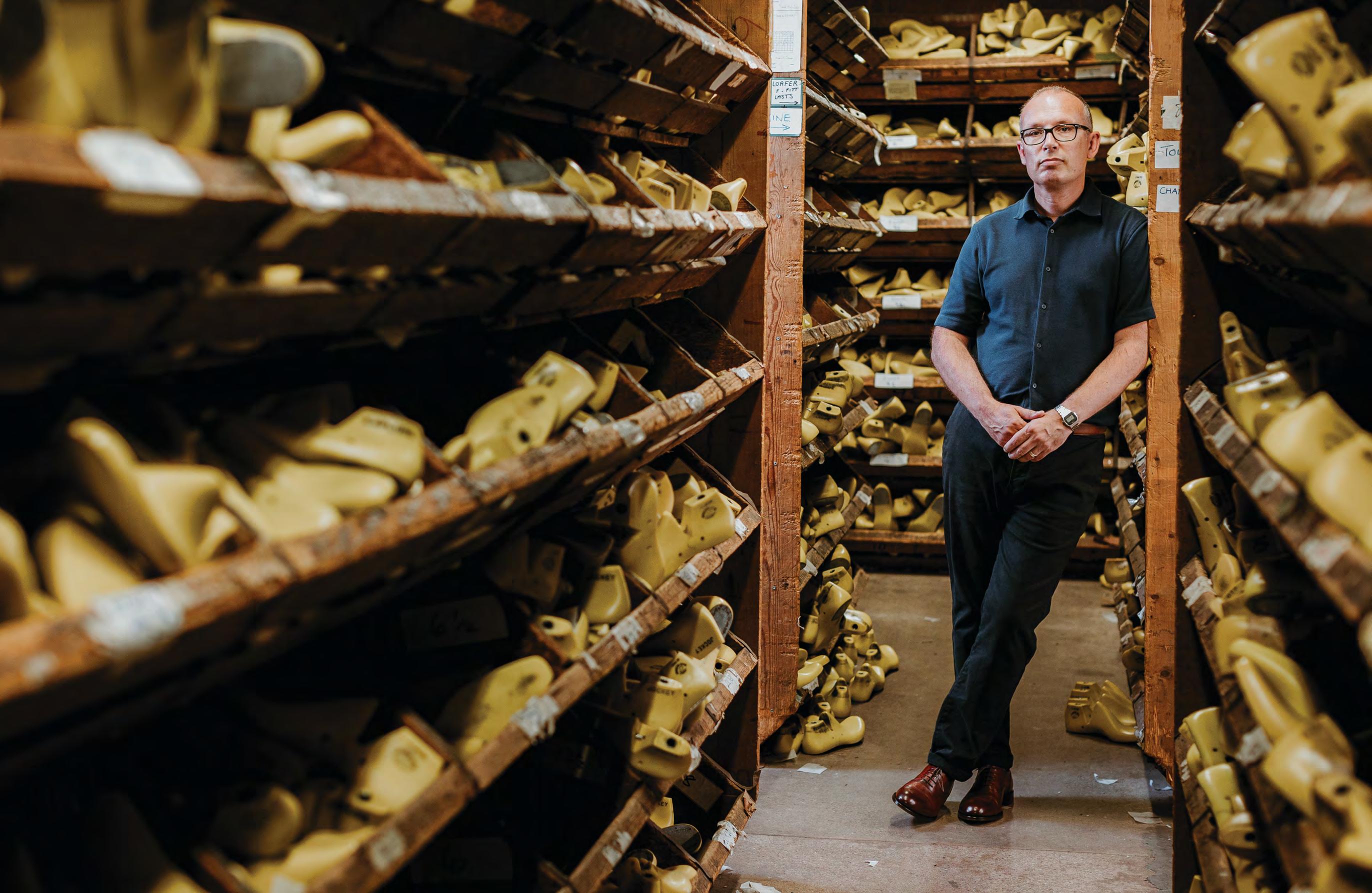
























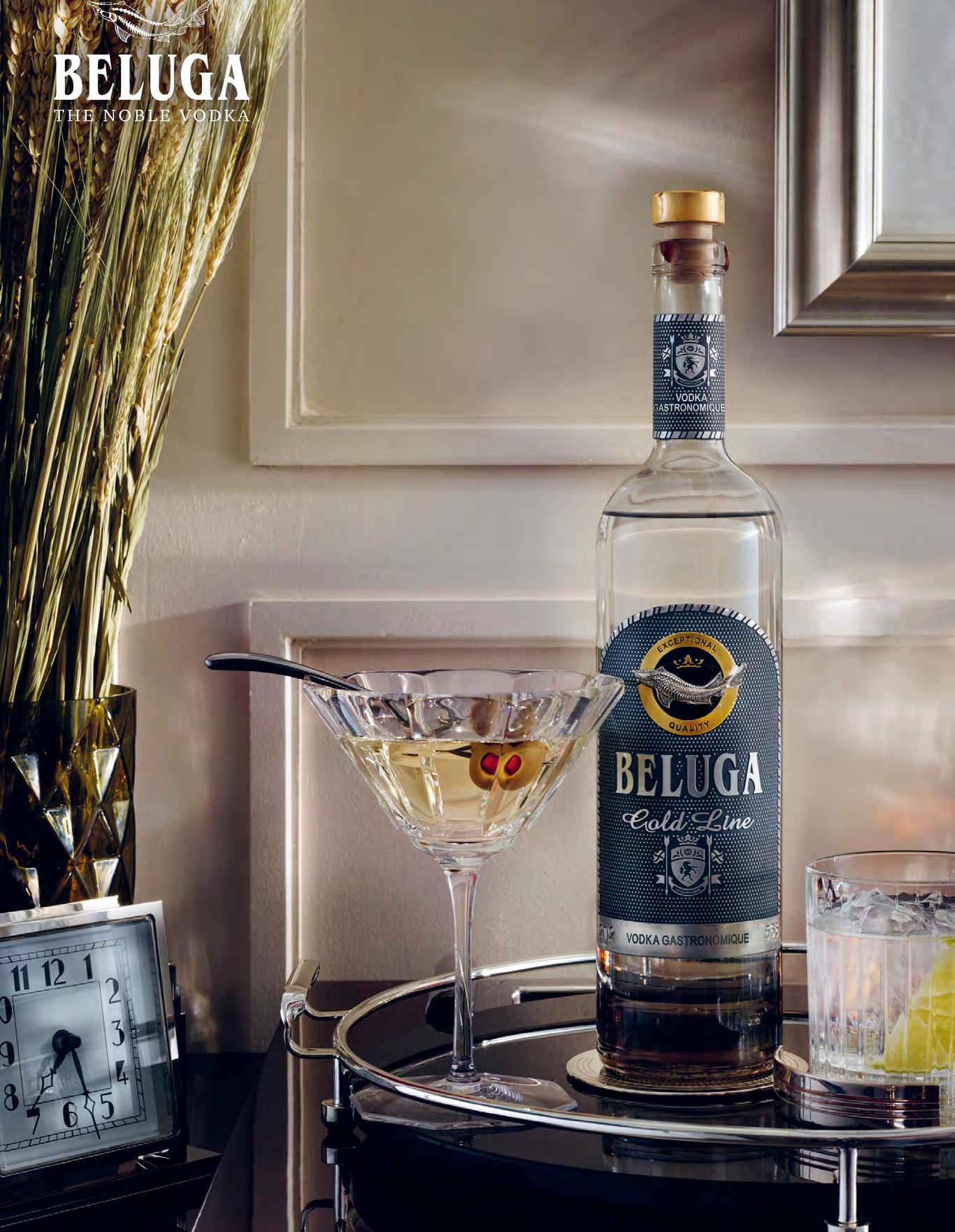

AARON EDGEWORTH MOTORING EDITOR
Gregarious, opinionated, and a destroyer of cocktail menus, Aaron provides automotive content stemming from years of passion and work in the industry. A keen eye for design and a horder of factoids are combined with a love of architecture, good food and the occasional party. Mostly found avoiding public settings.

ROGER CHAN
FEATURES WRITER
Roger is a proud child of two Hong Kong immigrants, born and raised in Essex. His passion for cars was spaked by his father, supported by film and video game franchises of the late ‘90s and ‘00s. His love affair with food stared similarly with Chinese cooking prevalent throughout his childhood. Chan is now a London based photojournalist and content creator working with brands such as Michelin, McLaren and Bentley.

NAOMI LAKE BEAUTY EDITOR
Lake is a makeup artist, hair stylist, model and creative director. She comes to the table with over a decade of knowledge in the industry. When she’s not on set or in a meeting, she’s in a yoga class, checking out a new restaurant or exploring the menu of a cocktail bar, in the pursuit of the perfect Negroni.

Automotive kingmaker
Ian Digman’s illustrious career spans over four decades and includes senior roles at Ford, Volvo, Nissan, INFINITI and, most recently, McLaren. That’s when he isn’t giving guest lectures on engineering excellence. Digman will be writing a regular column for The Review on anything with wheels.

SARAH MORGAN GLOBAL TRAVEL EDITOR
Sarah’s career spans three decades across travel, hospitality and leisure campaigning. When she’s not in the capital consulting for the travel industry, she’s working on launching a new travel series. With a firm belief in holistic therapy and healthy living (well, to a point), a yoga retreat in some exotic, far-flung place is never far away.

FLOREAN SMOUT ASSISTANT TRAVEL EDITOR
When she’s not in the UK designing luxury travel itineraries for her exclusive clientele, you might find her relaxing at home in the Dutch Lowlands. In addition to pursuing her appetite for culinary and cultural experiences, a full-time job we’re told, Florean splits her time between The Review’s Travel and Style teams.


PETER J ROBINSON MANAGING EDITOR
Norris is a copywriter and journalist from Bristol, England. He works regularly with some of the world’s leading luxury brands, and splits his time between the UK, Germany and Hungary. Norris also has a penchant for Alsatian wines and dodgy 80s synthpop.
Robinson is The Review’s managing editor. Having spent the last decade spanning both visual and print media, he has filed interviews across the political spectrum with the likes of Sir David Frost and Donald Trump. Robinson founded the magazine’s sister company, Screaming Eagle Productions, in 2015.


FEATURES WRITER
After graduating from Goldsmiths Rose began a professional career in the arts at The Royal West of England Academy, Arnolfini, Victoria and Albert Museum and the Whitechapel Gallery. Rose joins the team this year to bring you her pick of the worlds finest art exhibitions, auctions and museum tours.
L’homme, le mythe, le Monekene. Marvin is a Development Producer covering the French Riviera and Paris working with a host of documentary and commercial clients. When he’s not on set, you’ll find him indulging in fast cars and fine food.
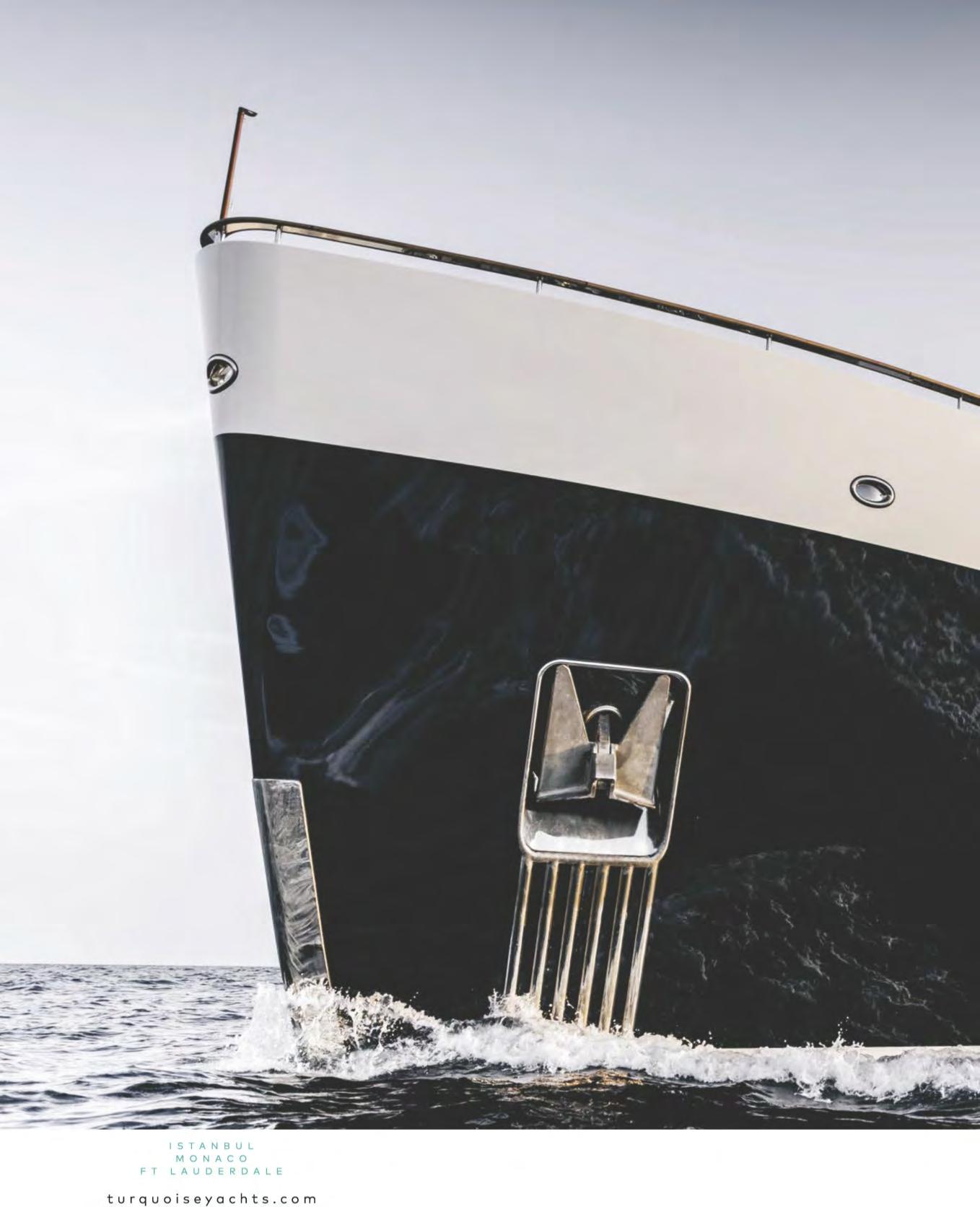

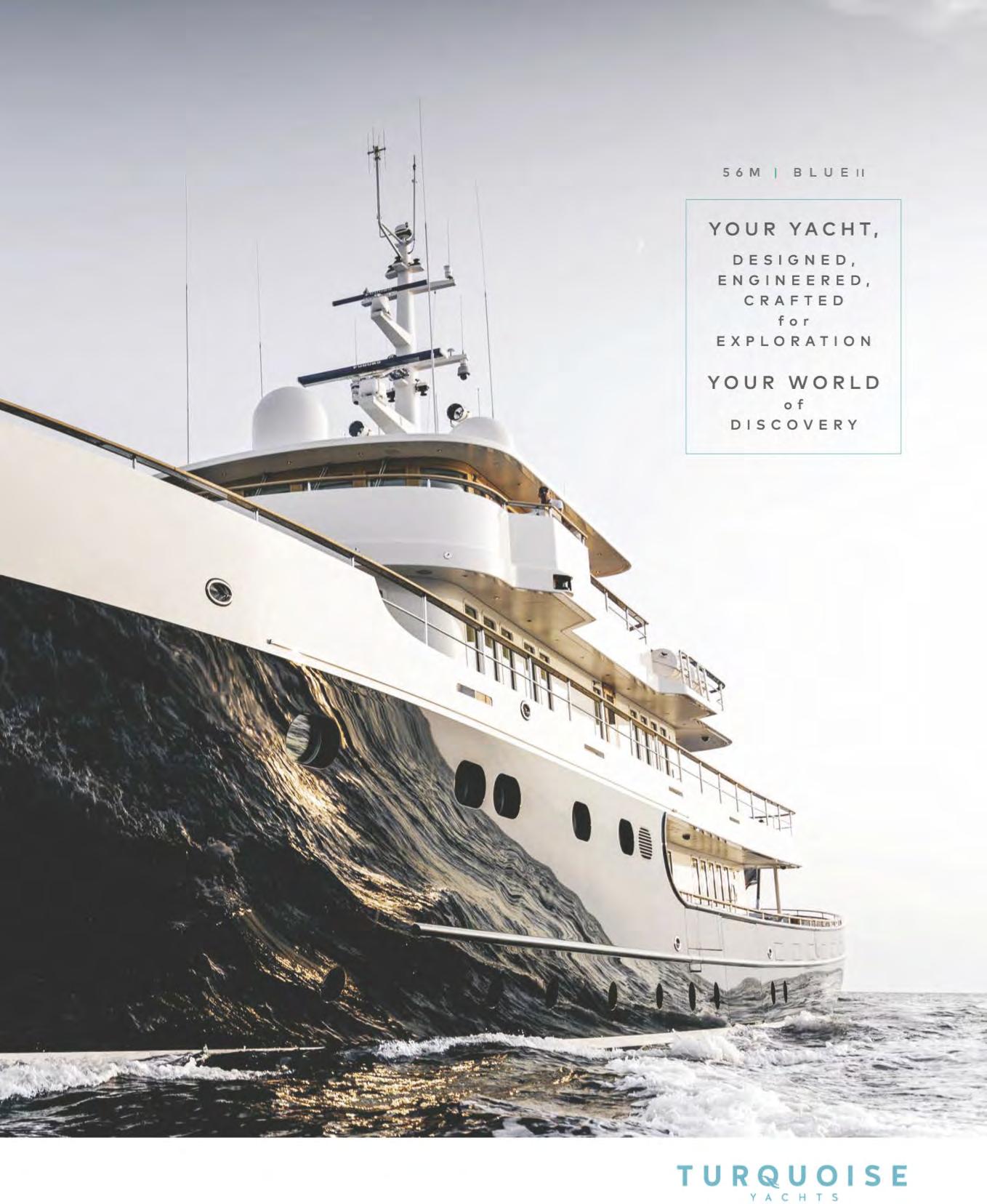
Words: Peter J Robinson - Managing Editor

In a climate where British fashion houses are struggling to find their footing, Jade Holland Cooper is confidently building an empire, one gold-buttoned trench at a time. From a humble stall at Badminton to a £60 million burgeoning empire, she’s proven that intuition, tenacity, and strategic restraint can scale classic style into substance. 15 years in, Holland Cooper isn’t chasing trends— it’s building legacy: expanding into bespoke ateliers, menswear and a new 70,000 sq ft headquarters, all without a single external investor. We join Jade at the Cheltenham Festival as she shares insights into her strategic vision, the challenges of scaling a British luxury brand, and her approach to sustainable growth in a competitive market. Want to know why betting on yourself might be the most rewarding wager of all?
As the sun cast a crisp glow over the undulating course of Prestbury Park, I was back in Cheltenham and the Festival was in full equestrian swing. The Jockey Club Enclosure, brimming with the great and the good, was matching supply with demand, and so no flute was left empty.
The day’s races had already delivered their share of exhilaration. The Brown Advisory Novices’ Chase saw a stunning upset as Lecky Watson surged past the post at 20/1, defying expectations and exemplifying the unpredictable nature of jump racing. Also, putting my spread for the day in serious jeopardy.
Fashion, much like racing, thrives on a delicate balance of tradition and innovation, a philosophy that Jade Holland Cooper has intricately woven into her brand’s DNA.
PJR: I lost the first bet. It was a tip as well, which is slightly irritating, but there we go.
JHC: Oh no!
As I understand it, your first business was selling farm eggs at school. When you take those first steps in your entrepreneurial life and start making money, what’s the effect? Do you have that sudden spark?
I think you are either born that way or not. You’re either entrepreneurial in an authentic sense, or
you’re not. As much as sometimes you want it to leave you, it can’t - and I think whether I knew it or not at that time, the egg business was a serious thing.
Whether that was the addiction of buying, or selling then getting something and selling that, I don’t know, but it is something that I think you’re born with. I’ve seen that over time in people - some only do it for a little while before fizzling out, but I absolutely love it.
Everyone has to have that first hit: that moment when they realise that goods equal sales. But you were faced with a choice, weren’t you? Because you were somewhere between agriculture, diversification at the farm and accepting a place at fashion college in London - I guess you were torn.
I was torn, I felt like I was probably the only kid at school who didn’t really know what I wanted to do. Everyone knew really, from the age of 16, which path they were going on, and then you’re taking the A-levels and writing your CV. Right up until the summer holidays, I didn’t know what to do, but after a good couple of weeks working on the farm I thought, “No, this is what I’m going to do.” So, I turned down the fashion college, and went to agricultural college.
During the first few months of college, I set up a jewellery-making business from my bedroom - there were constantly beads everywhere! I was driving everyone nuts, my keyboard was getting more and
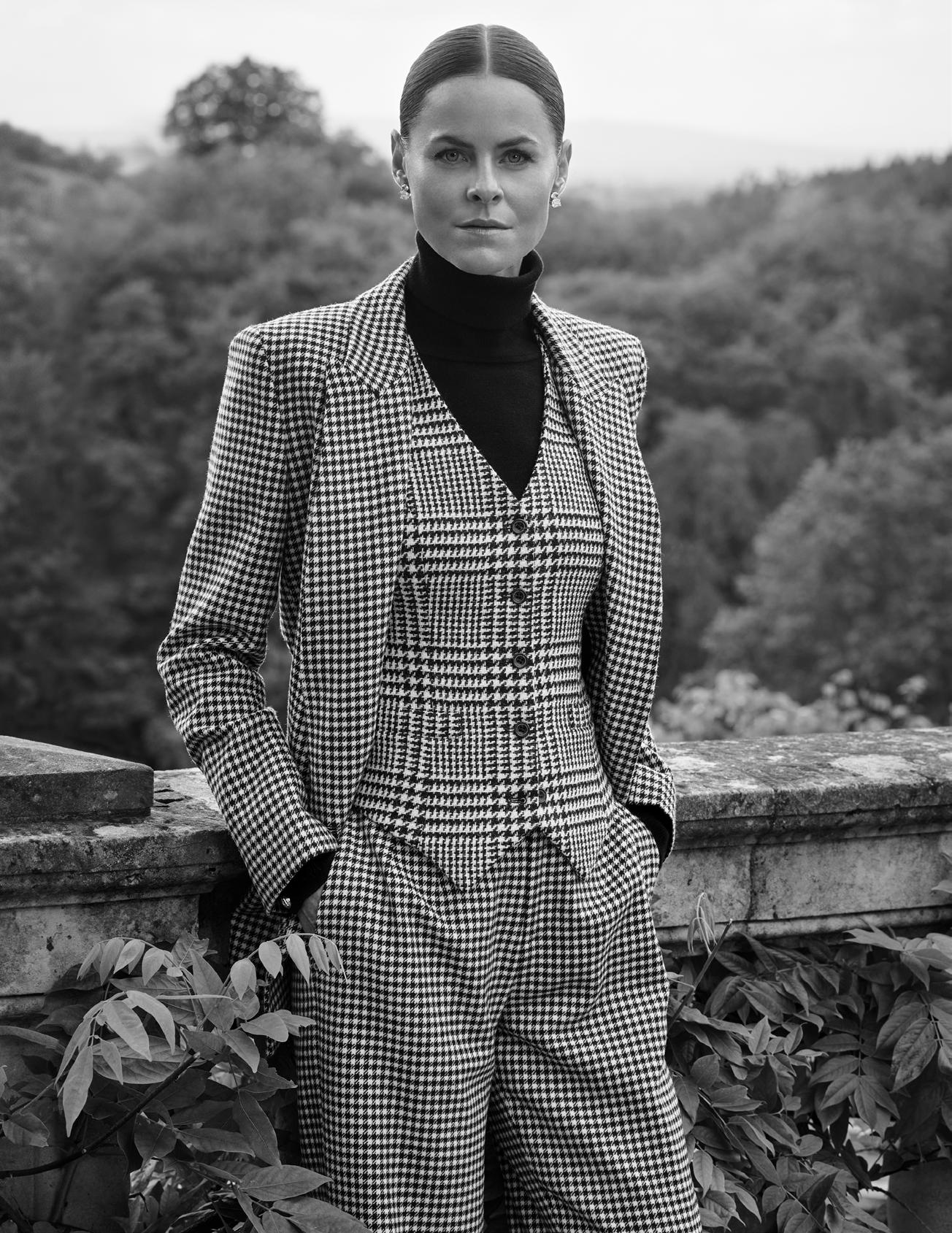


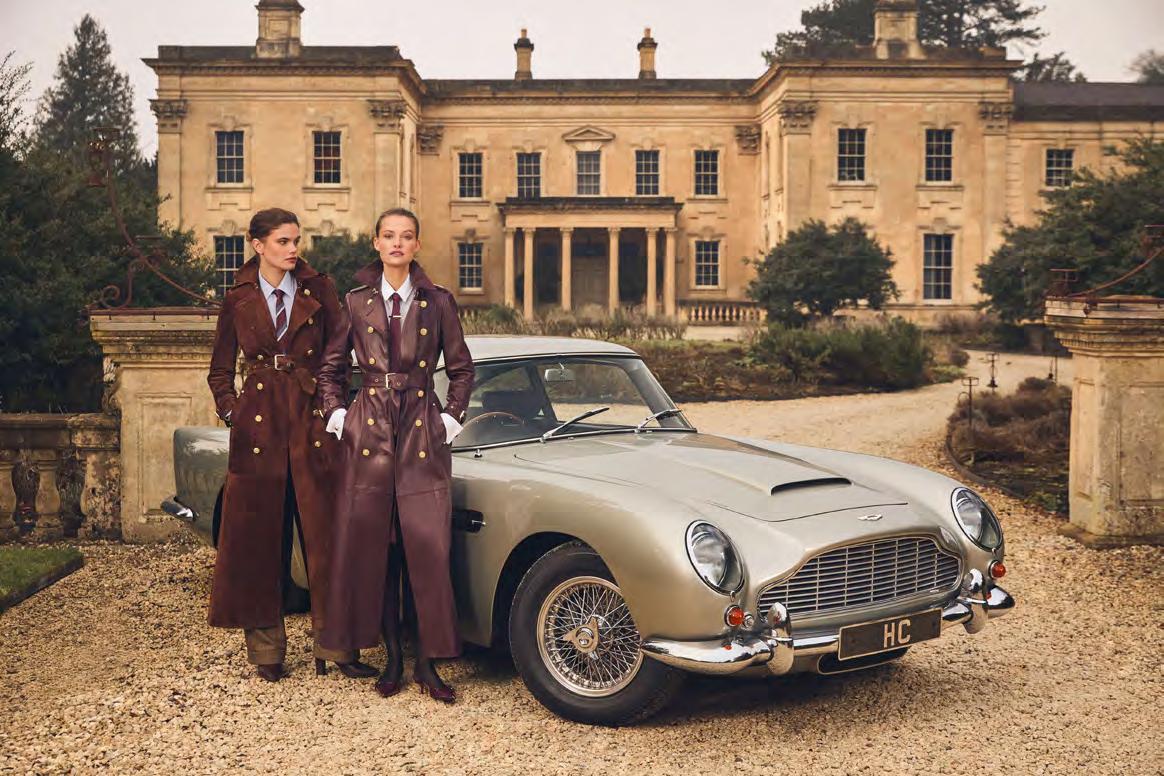
more jammed with beads… but that was a sign, it was me saying: “OK, I want to do more, I’m a trader”.
So, you set up a two-metre stall at Badminton. What informed that initial collection of Tweed Skirts?
Being at places like this. I was coming to events and couldn’t find anything to wear. A lot of people were wearing the same thing. Like, literally the same thing. Look at the amount of people here: 200,000 people over four days, a plethora of different backgrounds, but so many wealthy people with nothing to wear. I just thought, “OK, this is a massive white space.”
I think this is a message to all entrepreneurial people: If you can find that white space and you can work hard enough, you can make a success. I feel thankful I went to the Ag college, because if I’d gone to London I would never have seen that. I’ve kept very true to my consumer, understanding who they are, what they are doing and when.
Scaling from trial events and face-to-face retail to selling online and now boutique, do you have different ways of maintaining that customer interaction?
Instagram has been an amazing portal for me to be connected daily to my customers. It gives you
the connection to your audience in a way that you would never have had a few years ago; it’s a forum of feedback you would never be able to get on that kind of scale anywhere else.
That, for me, is something I have to retain. It’s so important. Also, on a Saturday, I will go into the store at least once a day. Every week I meet with my whole team, keen for them to tell me what’s happening. I’m obsessive about what’s right, what’s working, how we can be better. I am so involved in every aspect.
You’ve described yourself - on a couple of occasions - as being incredibly tenacious.
Yeah, I am.
I think it can be both a gift and a curse. I often describe it to people like, “I’m going to keep hounding you until you give me an answer because I’m tenacious. I’m in the bulldozer. I’ll happily get out if you give me an answer. Or say no.” When you’re starting your business, when you’re levelling up, when you’re pushing it forward: what key traits have helped push you forward on that journey to get where you are?
I think tenacity, emotional intuition, understanding people before they know what it is they want. After
all, you’re not just building a brand, you’re taking your team on a journey. That’s not easy, and some people can cope with it, some people can’t - you’ve got to be able to navigate human beings particularly well. On top of this, you need laser focus, you need to have confidence in your own abilities and you need to understand where your weaknesses are very quickly.
In an interview you gave with Grace Beverley, you talked about your formative years and you said that you were naturally quite shy.
Very shy!
So was I. But everyone has a moment that catalyses them. Was there a key moment for you? Was it a transaction where you went, “You know what? I think the fashion business is working. I think it’s going to be...”
I think it was probably when I became 17 or 18, my confidence started to get stronger. That wasn’t to do with the business - I just started to become more gregarious, more confident, more able to hold my own. And that built more and more, so by the time I was 21, I was pretty ballsy.
You know, you have to be ballsy. “I’m telling myself I’m going to be a big brand.” Believe in me. I am a salesman, I’m going to sell you the dream and we’re

going to go on that journey together. You know, it’s hard, and working the trade stands thickened my skin because the general public will just tell you how it is. If you’re a shrinking wallflower and you’re going to have a cry when somebody doesn’t like it, forget it. Because it’s hardcore and you’ve got to believe in who you are, where you’re going and how that dream is going to become a reality.
Moving into your men’s range was an interesting direction for the brand.
It’s been so successful. It’s been amazing. I always think: we are 98% women, you’re platforming menswear into a women’s brand. A lot of women will buy for their partners, or at least have an input in what they’re wearing. Brilliant, they’re my best marketing tool. It’s been fantastic, we’re seeing a lot of couples here doing the matchy-matchy!
As the founder, CEO and originator, you are the embodiment of the brand. I do wonder, looking from season to season and collection to collection, how you keep it fresh and avoid short-term trends.
You’ve got to be really careful of chasing a trend, I think. What we’re trying to create is a brand, a lifestyle, something with longevity. To do that, you need the cemented foundation, that DNA that you really understand very clearly.
Of course, I’m absorbing all the time. That’s who I am. But you have to absorb and cherry-pick what’s right for what you’re doing. If you try to be Balenciaga over here and Prada over there, it becomes a muddle, the customer becomes insecure and they don’t know who you are. Actually, I think why we’ve been so successful is because women understand the product and it’s easy for them to put together. We always have a good pair of jeans. We always have the black roll neck.
Staples.
Yeah, and actually we also have the new item, the “Oh, yeah, I can weave that into my wardrobe.” It’s not just one-dimensional. Most women can’t afford or don’t want to have a wardrobe that is only applicable for the next two months before going out of fashion again. Most women want beautifully curated products that stand the test of time.
This is what’s been so lovely about opening the Atelier side - what I’m wearing today is a bespoke piece, made with a fabric that’s limited edition. There are a lot of women, whether it be high-profile clients, big clients here, CEOs or female bosses, who want something bespoke. So we’re able to offer a thousand different swatches, one-on-one appointment services with everything made to measure. It’s really special, and we’re doing that for Men’s Wear and Women’s Wear. It’s something I have wanted to do for a long time, but we’re
currently building this 70,000-square-foot empire of an office and we’re at 6,000 square feet at the minute… and we’re about a year late. Once the office is built, we will have 7,000 square feet of beautiful apartment space for a bespoke atelier. It’s a real experience: retail therapy at its finest!
British fashion isn’t having a particularly good time of it at the minute. The headlines are negative, luxury fashion, a lot of them are down, a lot of the British fashion houses are struggling. We are not. You know, are we going to be the next Burberry? I hope so. So many brands are struggling and clutching at straws trying to reinvent themselves. I just think be proud of who you are. I would like to think we are going to be the next up-and-coming luxury British brand. We’re profitable. We’re growing.
“ for women, we’re not accustomed to bespoke clothing and I love being able to provide that level of service with the Atelier side.”
Let’s talk about that growth.
So we’re a profitable, growing British business, and it’s important to remember that we’re not just growing turnover, we’re growing profit, and we need to start celebrating and championing businesses that are actually successful and profitable. I’ve had no investment, I’ve got no business partners. I own 100 percent of the business, and I started from a market stand.
I think to become a really successful entrepreneur, you have to maintain that hunger that you had at the very beginning. In exactly the same way, if not more so. It’s all about growth, hunting down the next challenge, pushing yourself out of your comfort zone. You know, if you’re not nervous, you’re not moving fast enough.
So, how do we move from off-the-rack to a bespoke offering? Presumably, it comes down to consumer requests or needs?
We have a lot of consumers that are at the point where they have everything in the range, and they want something that’s different. Or they’re in an environment like this, where they don’t want to bump into someone in the same outfit. That’s quite common. I want to deliver that service for premium customers looking to have a unique piece created.
We have that customer, and I think there’s probably a thousand options that you can choose from: different trims, different lining, different pocket
squares, different buttons. That’s quite normal for men’s tailoring, actually, they’re used to that. Whereas for women, we’re not accustomed to bespoke clothing like that, and I love providing this level of service.
There are plenty of people who balance family life and work life. But you have a rapidly evolving empire and a husband whose empire is equally rapidly evolving. How are you managing that day-to-day?
I think you have to be really, really disciplined about what the priorities are for the day. So today, my priority is to get all of my work done, then leave at 2:30 so I can do the school run.
You’re leaving today?
Yeah. That’s a real priority for me. Because if I’m organised, I can get all of what I need to do completed today, then I can pick my daughter up from school, which would mean a huge amount to her. Then I can have meetings when I get back. So, you know, what are the priorities? That is a priority. And same for Julian. He took her to school this morning. You know, the kids are an absolute priority. And, you know, I could stay here all day. But if you’re organised, you can get everything you need done.
We want to show our children that working hard is fulfilling and exciting. You know, money without fulfillment or understanding as to how it’s made can be really dangerous, can be really negative. Knowing how hard it is to make £10 into £20, what money means and how hard you’ve got to work is such an important lesson.
We’re both very hands-on and when we’re at home, that’s the priority. Julian’s very disciplined like that as well. When he gets home at five, there’s no more work. That’s it until he’s up in the morning. He’s not doing emails at nine. He says, “That’s why you get a Nokia, if it’s important, well, you’ll ring me”. It’s another important lesson in life. Chop out the noise. Chop out the decisions you don’t have to make.
I imagine when you were growing and building the business there were key advisors that you were working with in the early stages?
I think my parents were a great sounding board, as they’d both run their own businesses. They were really supportive and very measured.
I don’t have a business partner, and that can be lonely because it’s all on you and everyone’s looking to you. What’s the next idea? What’s the plan? Sometimes you’re tired and you don’t feel like it. You’re not a machine and not every day is perfect. I put it into thirds: a third great, a third shit, a third okay. If it goes out of that balance, I’ve got to

address it. It’s hard, but you’ve got to say some of it is magic, and there’s no doubt it’s addictive. I mean, it’s like a drug, isn’t it?
Any chance of Holland Cooper opening in a new territory or setting up pop-ups in snowier climbs?
I don’t want to travel. The growth I’m getting from an e-commerce perspective is so massive that I don’t need to; people are traveling from all over the world to come to the store. Australia, Japan, America, Canada. I said to one lady, “I’m sorry, we’re shut. Have you come far?”
“Yeah, I’ve come from Australia.”
Oh, right. We’re obviously going to open!
You have been supporting or sponsoring the Cheltenham Festival for many years. What’s that collaboration like?
I think it’s become a very symbiotic relationship. My first time working at Cheltenham was 15 years ago. It just became an obvious partnership and the next step was to say okay, let’s formally cement this relationship. Because it’s local to us as well, where we live, where the brand is, where our hotels are - it’s our hometown.
What’s the product of the season for you at the moment?
Our signature product would be the Long Trench Coat. It is iconic for us and you’ve only got to look around here and see so many of them. It still has a really special place in my heart - that coat is just the gift that keeps on giving.
In an era where many British fashion houses grapple with uncertainty, Jade Holland Cooper stands as a calmly executed example of resilience and innovation. Her eponymous brand, Holland Cooper, has not only weathered the industry’s storms but has arguably flourished. This success is arguably a testament to Jade’s acute business acumen and commitment to timeless design. Speaking with Jade reveals a leader whose warmth and passion are as evident as her strategic prowess. She’s there ensuring that her hands-on approach and genuine enthusiasm infuse every aspect of the brand. As Holland Cooper marks its 15th anniversary, it stands as an exemplar of sustainable growth and enduring style in the fashion landscape.
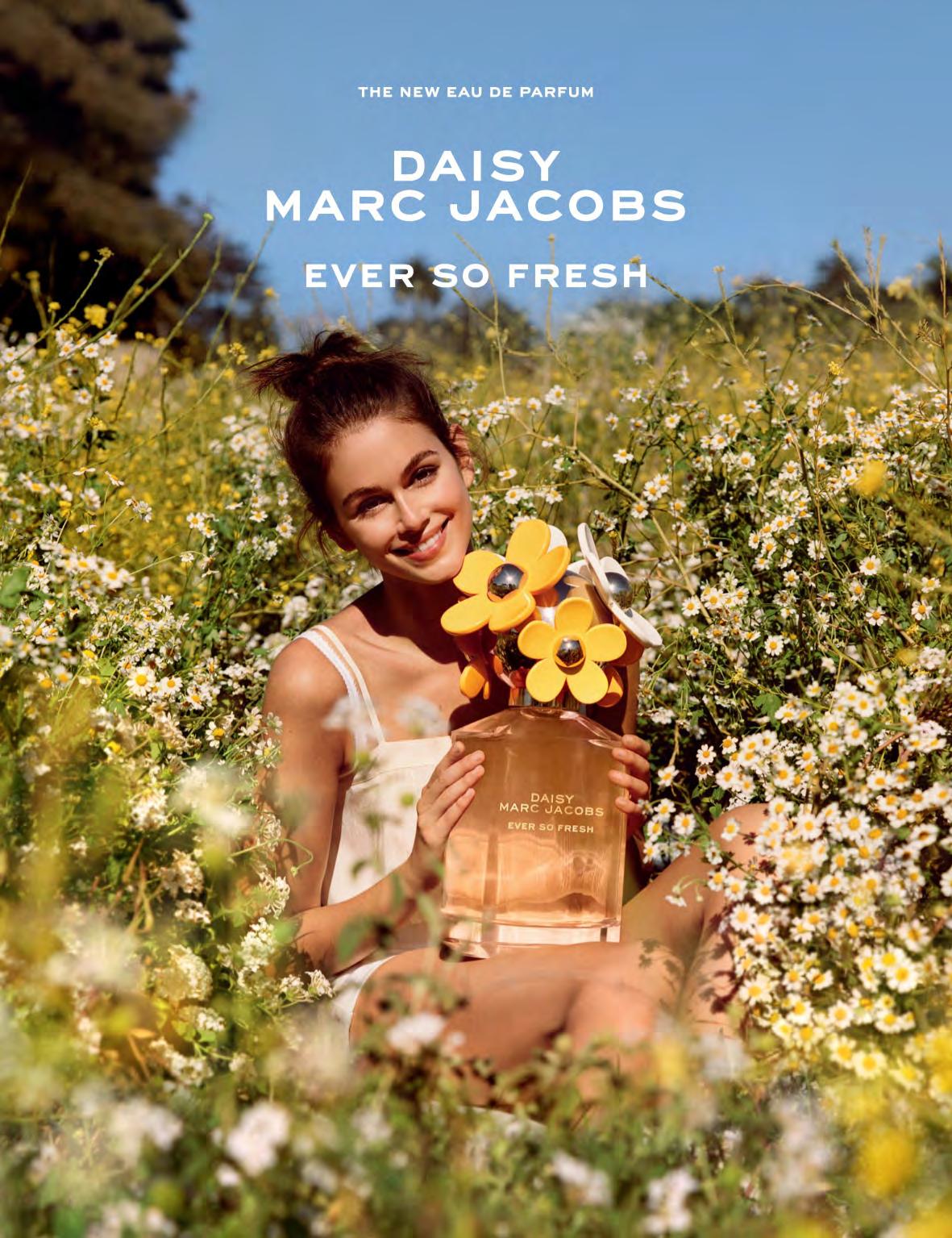

Words: Naomi Lake - Beauty Editor
The air is crisp and fresh, almost metallic, and infinitely refreshing on my face. The rich notes of artisanal ground coffee and buttery freshly baked pastries seep out of the cafes I pass. I can smell the musky earthiness of the mulching leaves beneath my feet as I walk, contrasted by the sweet and uplifting scent of the earlyblooming trees, taking me back to a moment decades prior when we played in a friend’s garden, surrounded by fallen blossom held in suspended animation around us as we jumped together on a trampoline. It’s a day in early spring, and it’s the scent of my favourite early morning walk along the river in London to my first meeting of the day.
I’ve spoken about the importance of scent many times before. It marks our every memory from birth, from the warmth of our mother and her milk to fresh grass stains on our knees in our youth, the first taste of whisky in our teens and every moment in life beyond. Moments of joy, moments of pleasure, reverie, nostalgia and sadness. It’s a mode of transport too; a single scent caught off guard can bring us back to a precise time in our past in a split second, without any conscious focus.
How scent pieces together our understanding of the world around us is an evolutionary advantage, keeping us safe from spoiled food or alerting us of fire. But now, looking at our dressing rooms and bathroom shelves, it’s clear from the toiletries we shower with, the candles we adorn our houses with and the sprays we preen with as we get ready for the day, that our main dalliance with scent is now the pleasure of perfumery.
Thinking of this, my meeting that morning was a precious one, as I was about to find out how one brand, Edeniste, is changing and challenging our known relationship with scent, by mapping the effects of each fragrance molecule on our neurological pathways. I spoke to Audrey Semeraro, the founder of this exciting brand, to better understand their work, its inception and what it took to bring such a revolutionary idea to fruition.
“How scent pieces together our understanding of the world around us is an evolutionary advantage”
“I initiated this project by analysing patents and scientific research in the fields of olfaction and neuroscience. Alongside Michel Sabadi, the former President of Research and Development at Shiseido, we meticulously constructed a comprehensive database cataloguing the cerebral responses to hundreds of fragrance molecules and natural essences.”
Audrey explained that it had been a four-yearlong journey, “characterised by devotion and perseverance” to bottle her idea and release
it into the world. As we spoke, she shared fascinating anecdotes from her childhood that had influenced these ideas, her passion for science had stemmed from time spent with her father, a nuclear scientist, and her enduring love of fragrance had been drawn from her mother, a model for Nina Ricci.
“The journey of our project was extensive, collaborating with numerous neuroscientists, including Gabriel Lepousez, whose research focuses on brain plasticity and circuit mechanisms underlying sensory perception and memory. Our path also encompassed final experiments conducted in partnership with CNRS (Centre National de la Recherche Scientifique, France) and the University of Nice, utilising bio-captors and various questionnaires.”
Whilst we speak, I reach for each fragrance, enjoying the moulding of my first experience of each by her stories and her passion, from the smooth and fruit-driven Vanilla Irresistible with its Somalian olibanum and deep Haitian vetiver essences, to the youthful and playful Neroli Sensual, with its focus on white petal, succulent peach and pear, a lively lift of petitgrain and a light musk finish. But whilst conducting their research, did Audrey’s team come across any other brands looking into the same area?

“Currently, medical institutes and universities are actively researching the effects of scent on the brain, especially in the context of neurodegenerative diseases. Whilst this research is undeniably crucial, with the growing interest in the wellness industry, we take pride in being the pioneering fine fragrance brand that embarked on research and fragrance creation from a neuroscientific perspective.
We eagerly anticipate more brands joining us in this groundbreaking field. It’s essential to note that scientific research, primarily led by dedicated scientists, underpins this work. Japanese researchers have made notable contributions to the science of fragrance molecules’ impact on the brain, known as Aromachology. However, there have been relatively few products marketed in the perfume and skincare domain.”
From this, I was fascinated by how this remarkably in-depth research had been translated into the creative process of deciding the direction of each scent in the Edeniste Eau de Parfum collection. Audrey explained where they made their start.
“At the heart of our seven EDPs lies our patented ‘Destress’ accord, developed in collaboration with world-renowned neuroscientists, perfumer Aurélien Guichard, the Takasago research and development team, and our own Edeniste research and development department. It’s been scientifically proven to control and reduce stress biomarkers, contributing to mood regulation.
This accord features a unique olfactory signature with dry, woody, and musky elements, including Iso E Super (a musk known to highlight our own scent), Ambroxan (the compound responsible for the unique scent of ambergris), the olfactive molecules that constitute white musk, and also Cedarwood extract.
Given the current high-stress lifestyle of many people, the primary need is stress relief. Thus, it was evident for me to create a core collection focused on de-stressing.”
I was learning how the core value of Edeniste is to fortify your well-being with scent. During development, their collection split into two complementary anthologies, their signature Eau de Parfums, and Lifeboosts, a lighter ‘active’ fragrance with which you might adorn your chosen

‘At the heart of our seven EDPs lies our patented ‘Destress’ accord, developed in collaboration with worldrenowned neuroscientists, perfumer Aurélien Guichard’
perfume, with notions such as, ‘Wellbeing’, ‘Seduction’, or ‘Energy’. It allows the wearer to adjust their mood for a fleeting change in their connection with their scent, customising the experience with their overarching EDP. To say I was intrigued to know from where this unique idea came was an understatement.
“The idea stemmed from the desire to create a seamless and versatile fragrance experience. More importantly, it was about creating a brand that prioritises people’s needs, well-being and inner balance.”
The Lifeboots represent a novel category in the fragrance industry, distinct from Eau De Toilette or Eau De Parfum. They are scent boosters, akin to olfactory supplements in a bottle.”
I can certainly attest to their effectiveness, as atop my most reached-for signature fragrance, Rose Fatale, its bottle holding a deep and heady amber-tinged rose, with a pitch of oud and underlying leathery labdanum absolute, now usually lies Edeniste’s Happiness Lifeboost. Noted as a ‘joyful’ woody floral, it seems to be so much more than the fruity mango and fresh watermelon tones that bring a beaming smile to my face every time I layer a few spritzes. I was feeling the effects of their accord, how could I not, it’s science after all.
With the complexities of creating just a single perfume, I couldn’t comprehend quite how it might stretch a perfumer to create such a wide selection of scents that intertwine, to use individually or in combination. I enjoyed hearing from Audrey about the creative process as a whole.
“Creating the Eau De Parfum collection was a meticulous and extensive process, we aimed to craft EDP scents that were not only powerful but also needed to be exceptionally beautiful,
using only the best ingredients and extraction methods.
Working in collaboration with one of the world’s foremost perfumers, a seventhgeneration expert in his craft, I drew upon my life and personal experiences to craft the most meaningful and detailed briefs for each fragrance. I served as the orchestrator, using my life’s journey as the composition, and he, the virtuoso perfumer, translated my experiences into the symphony of scents that make up our EDP collection, all infused with the patented Destress accord.”
It’s one of life’s greatest pleasures to explore human emotion through the arts, and Audrey explained passionately how scent is no different.
“The pursuit of excellence in fragrance formulation was our guiding principle, ensuring that we would stand at the pinnacle of fine fragrance. Our Lifeboosts range, on the other hand, is designed to be the uplifting collection within our offerings, aiming to elevate and enhance your overall well-being.
Creating the Lifeboosts was a real challenge as we not only needed to specify precise elements to the perfumers but also ensure a distinctive olfactory signature that would in turn harmonise well with our Eau de Parfum. This thoughtful approach allows one to mix and match the Lifeboosts to enhance your mood and harmonise the scent of your chosen EDP without complicating the final fragrance, preserving the distinct notes of each.”
Whilst getting to know the collection more thoroughly in my own time, it has been a pleasure to play with the Lifeboots throughout the day, always starting the day with Energy, with its uplifting citrus tones balanced by an
invigorating woody musk, warm and tangy Ethiopian ginger and peppery bergamot to fortify me for the day ahead. Having discovered my own most meaningful combination, I hoped Audrey would like to share hers.
“There are many delightful pairings within our collection. Currently, I find myself reaching for a combination of Jasmin Cruel and Wellbeing, which I particularly enjoy. However, I also have a soft spot for Rose Délice paired with Energy. The beauty of our Eau de Parfums and Lifeboosts lies in their ability to complement each other seamlessly, and I believe they should be chosen based on how you feel when applying them. Ultimately, it’s about achieving the specific effect you desire on your mood and brain.”
Currently available in Harvey Nichols and Harrods, looking forward, was Audrey able to share any of Edeniste’s future plans?
“While I can’t reveal all the details just yet, we’re constantly exploring innovative ways to enhance mood and overall well-being. Our philosophy remains rooted in the idea of using fragrance as a tool to improve emotional state.
There are definitely exciting developments on the horizon as we continue our journey to bring more joy, relaxation, and positivity into your daily life through the world of Edeniste. Expanding globally is also on our radar, driven by the growing demand for our products. However, we are quite selective in where we choose to establish our brand presence.”
Overall, fragrance will be sure to remain an enduring fascination of human nature, but from a scientific perspective will human nature itself ever evolve? We might never know for sure, but at least for now, we might enjoy adjusting it with a tailored combination of Lifeboots.
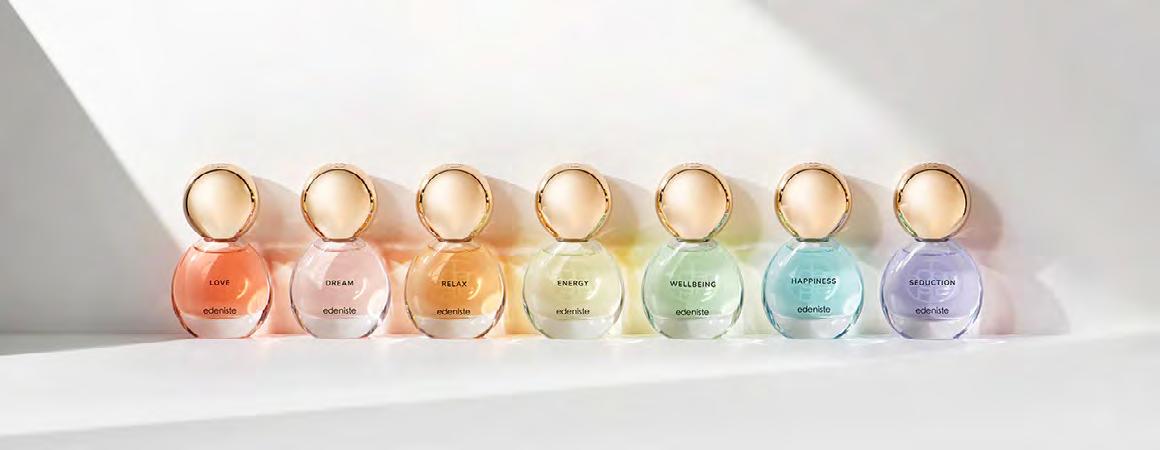
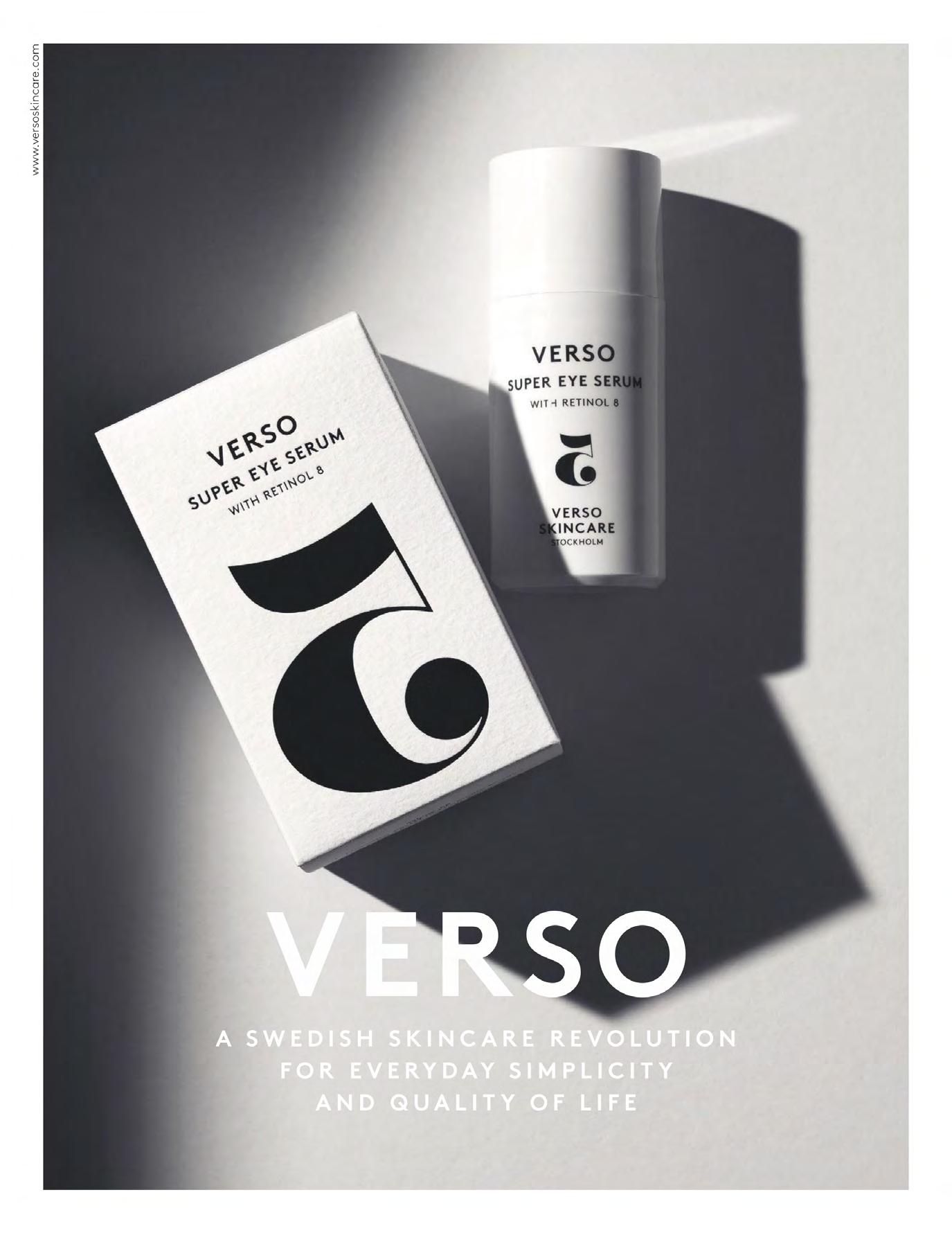
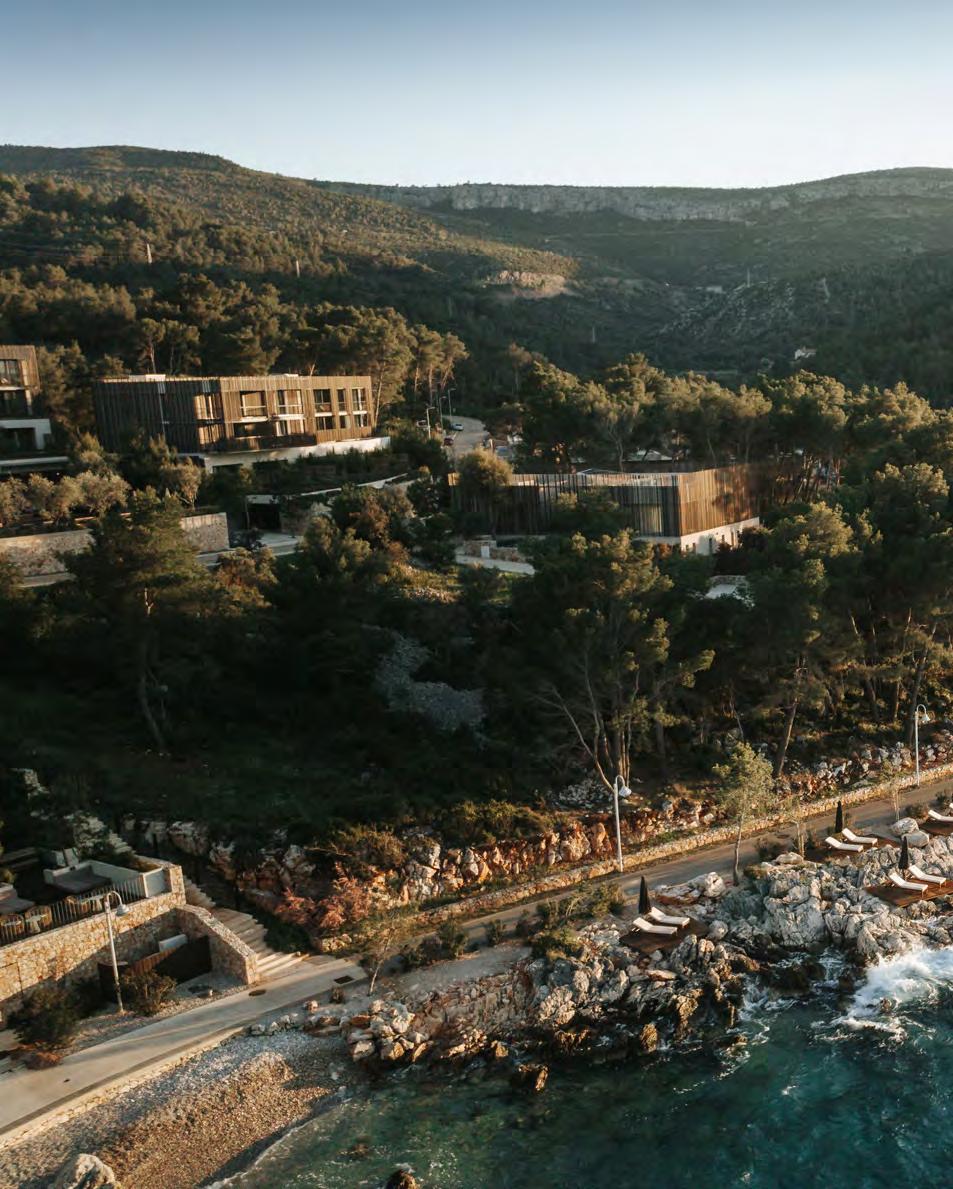
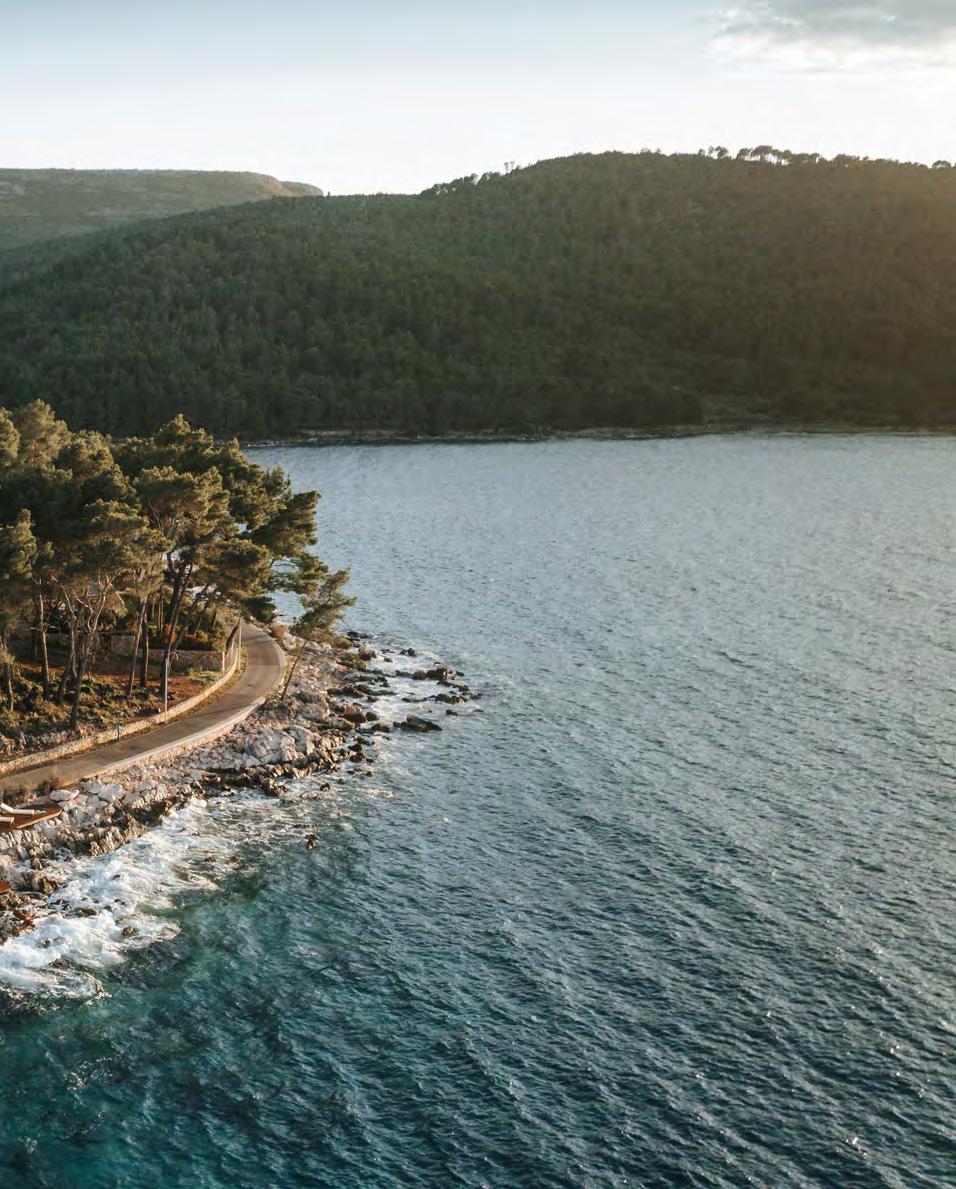
Words: Peter J Robinson - Managing Editor
On the shores of Maslinica Bay, where the azure embrace of the Adriatic Sea laps discreetly, you’ll find Maslina. Set amidst a lush pine forest on a pristine hillside with vast views out to the sea beyond, it’s my type of safe haven. There are destinations that promise escape, and there are those that deliver a truly all-encompassing sense of seclusion. Maslina Resort, nestled on the sundrenched island of Croatia’s Hvar, belongs emphatically to the latter category - a place that doesn’t so much ask for your attention as it gently commands your surrender. It’s a rare thing, even in the well-trodden landscape of high-end hospitality, to encounter a property so quietly assured of its own elegance, so deeply committed to the tenets of considered living, that it recalibrates you.
You might have been charmed into visiting Croatia in the ‘00s, back when the vast majority of daily papers were promoting Dubrovnik as a destination with a cultural significance matched only by its rugged natural coastal beauty. I was first introduced to this gem of the Adriatic when my mother worked in-country during the early 90s. She told a very young me stories of daring-do, each bolstered by some of the most warmhearted and welcoming people she had ever had the pleasure to meet.
Having landed in Split, the usual transfer formalities were replaced by something altogether more interesting: a private Colnago 45 TS speedboat, polished to a mirror sheen and idling with intent at the dock. It is a detail that says much about Maslina’s ethos; an understanding that the experience begins long before the arrival. At 25 knots, we fired across a sea that glittered like cut glass, we slipped past green islands that rose like mirages, the coastline falling away behind us. Not everyone considers a speedboat crossing a worthy substitute for a morning coffee, but for me? It’s the ideal palate cleanser. Already, the noise of the world had begun to recede.
Landing at Maslina is an exercise in sensory recalibration. There are no grand gestures, no obtrusive flourishes. Instead, there is hush—the soft sigh of pines, the warm scent of sunbaked herbs, the rustle of linen as it moves in time with the breeze. The resort seems to emerge from the hillside rather than sit atop it, all low-slung architecture drawing on stone, timber, and brass to achieve a kind of restrained majesty. Here, design is not a showpiece but a philosophy: quiet, purposeful and deeply rooted in the landscape it inhabits.
My suite, a Panoramic Room, offered exactly that—a view so seamless it felt less like a window and more like a painting in motion. The Adriatic sprawled beyond the terrace in every direction, the horizon line a meditation in itself. Inside, the design was an ode to tactility: natural fabrics, hand-finished wood, ceramics with the patina of age. The palette, all bone, sand and sun-washed ochre, worked in harmony with the light. Nothing jarred, nothing demanded. Even the most luxurious details—the rainfall shower carved from stone, the impossibly crisp linens—felt curated for comfort rather than display.
Dining, as one might expect, is a serious affair but certainly not a solemn one. There is joy in the simplicity here—a cacio e pepe that recalls Roman trattorias but elevated with faultless technique, a breakfast of truffled omelettes
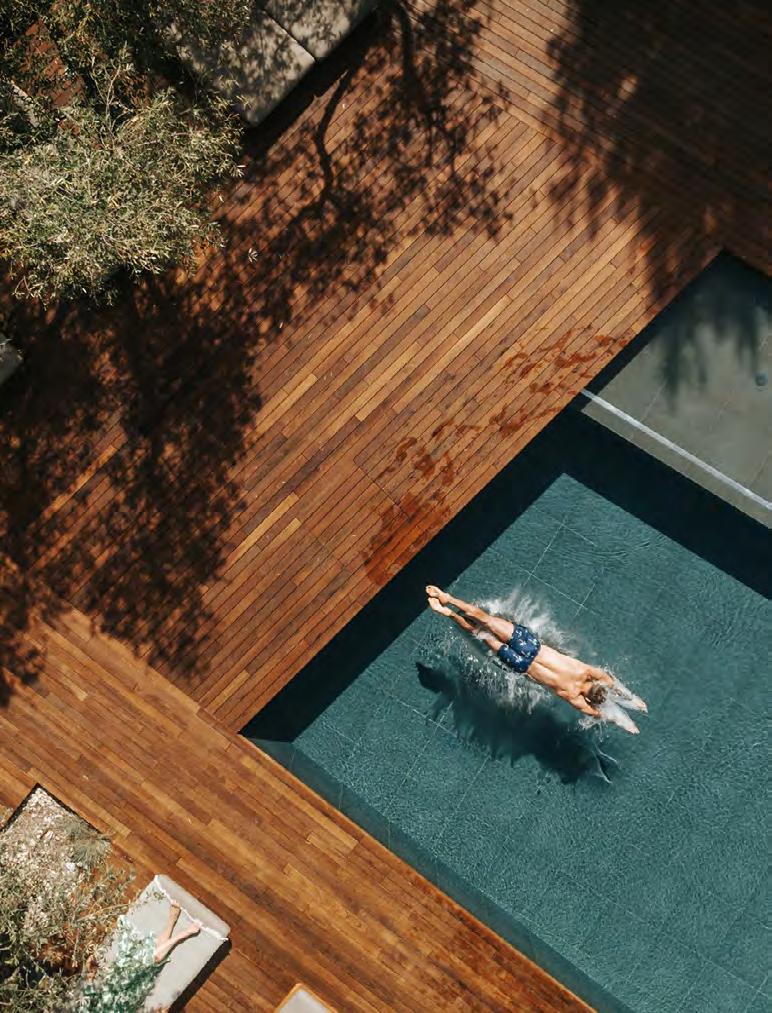
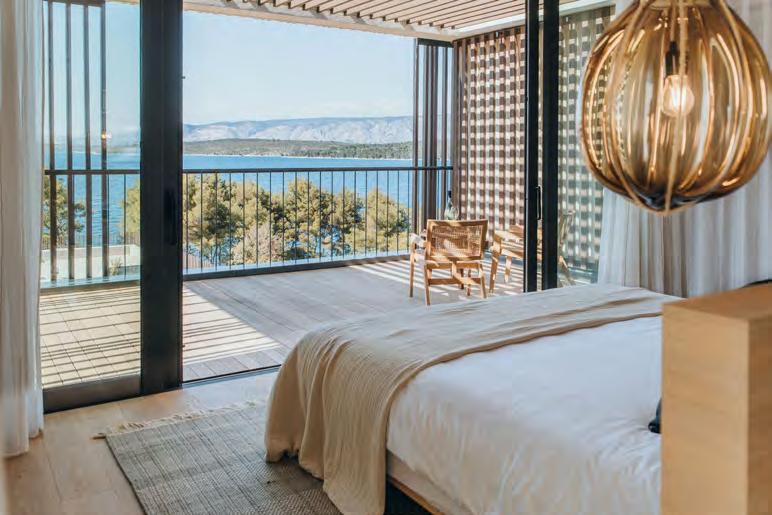
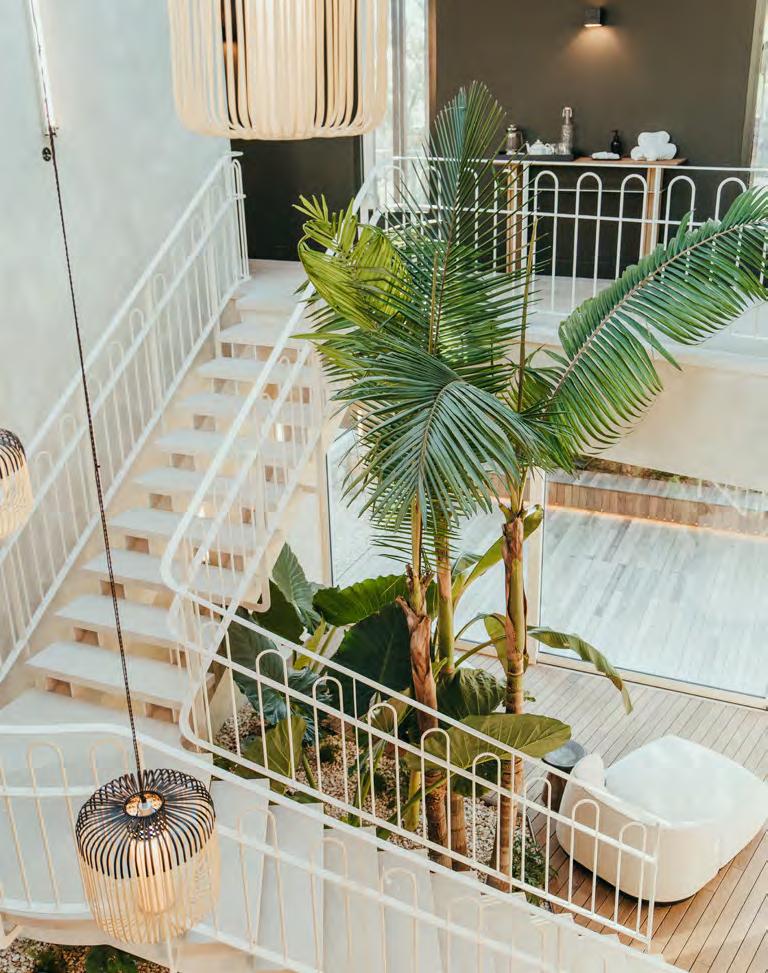
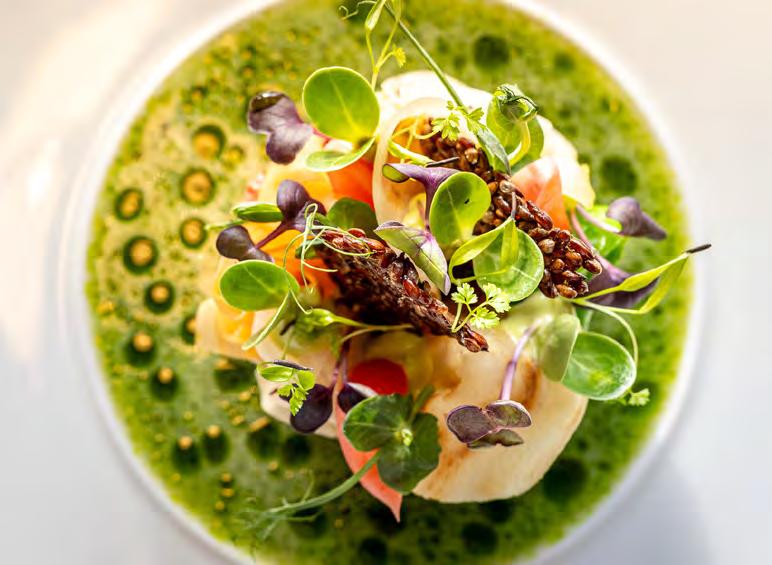
and just-so pastries that avoid the temptation of overstatement. Every meal is contextual. Evenings by the pool unfolded like theatre: beef tartare with a whisper of spice, a fig and lemon cheesecake, all washed down with a perfectly chilled Ruinart Blanc de Blancs. Whilst the dining at Maslina is second to none, I would still urge you to visit Stari Grad, Vrboska or Zavala one evening. You might even opt to take one of Maslina’s wooden bikes, which I covet very publicly.
The pool, the bar, the shaded paths down to the private beach—they aren’t separate experiences but part of the same rhythm. The private beach, a series of sunbeds discreetly tucked into rocky outcrops, is serviced with an attentiveness so well timed it never once feels intrusive. You need something—water, shade, the smallest of adjustments—before you even realise it. That’s what true discretion looks like.
“ excursions unfold at an unhurried pace: visits to the honey-hued villages where time appears to have stopped”
And then there is the spa. Pharomatiq by name, and by nature. The couples’ treatment space is wrapped in black stone and soft linen with an open-air bath. The color scheme reflects the Dalmatian landscape: sand, driftwood, soft clay, and muted sage green. The palette invites serenity and mirrors the tones of the surrounding pine forest and shoreline, reinforcing a connection to nature. My treatment, a smoothing exfoliation inspired by Hvar’s botanical wealth, was delivered not as a formulaic ritual but as a deeply personalised session—slow, intentional and conducted with reverence.
Maslina excels not only in privacy but in possibility. Their in-house team curates a menu of experiences that speak to both the hedonist and the curious mind. Wine tastings that delve into Dalmatia’s underappreciated varietals. Wellness sessions in yoga and sound therapy that act as emotional reset buttons.
Beyond the resort, excursions unfold at an unhurried pace: visits to the honey-hued villages where time appears to have stopped, olive groves that stretch across the island like a living mosaic, and secret bays only accessible by boat—each offering their own kind of story.
What impresses most is how these offerings are delivered. There is an intimacy to the service, but never an overfamiliarity. For the seasoned traveller used to a certain calibre of attention, this kind of intuitive service is often promised, yet rarely delivered. At Maslina, it is the standard.
Even the resort’s growth is being undertaken with an integrity seldom seen in the industry. By the end of the year, five new villas and a suite of private residences will join the estate. Built from cross-laminated timber and embedded into the landscape with minimal disruption, they reflect a continuing commitment to sustainability without sacrificing an ounce of aesthetic rigour. There
“
A place for those who know exactly what they want from a destination—and are equally clear on what they no longer need.”
is no ego in the architecture here—only care, only craft.
Sure, Maslina is a resort you could visit for your Instagram feed. But it’s not about immediacy. It is, instead, a study in slow travel. A place for those who know exactly what they want from a destination—and are equally clear on what they no longer need. There is a confidence in its restraint, an elegance in its understatement. This is hospitality for those who have seen it all, yet no longer need to be impressed but rather crave to be moved.
By the time I left, the usual end-of-holiday pangs had been replaced by something quieter, more permanent. A sense of having been recalibrated, of having dropped anchor somewhere meaningful. I boarded the boat back to Split with no urgency, no pull toward the next thing. Just the taste of salt on my lips, the scent of pine in my hair, and the certainty that this is how it should feel to arrive—and to depart.
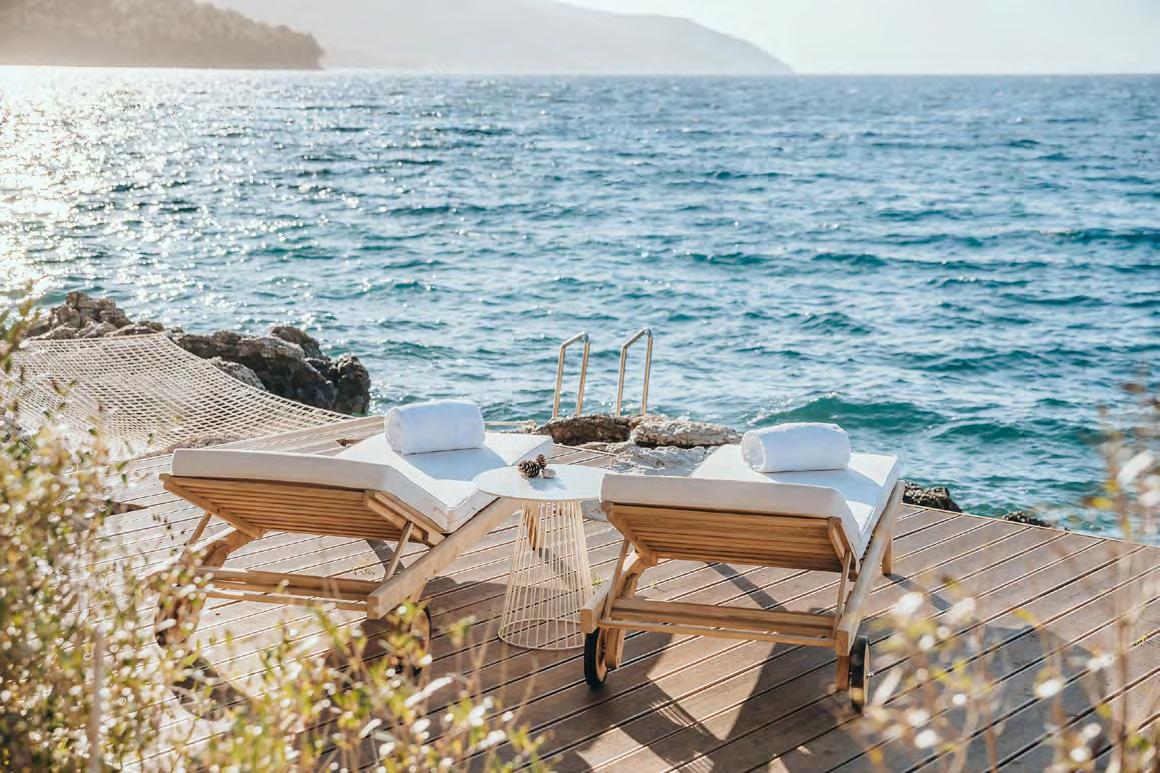

Words: Benjamin Norris
It is perhaps one of the great tragedies every weekend in a beautifully crafted surrounded on all sides by thirty or each glistening with perspiration oils. However, my trip to the spectacular ensured - within an hour of arrival, longer be completely lacking
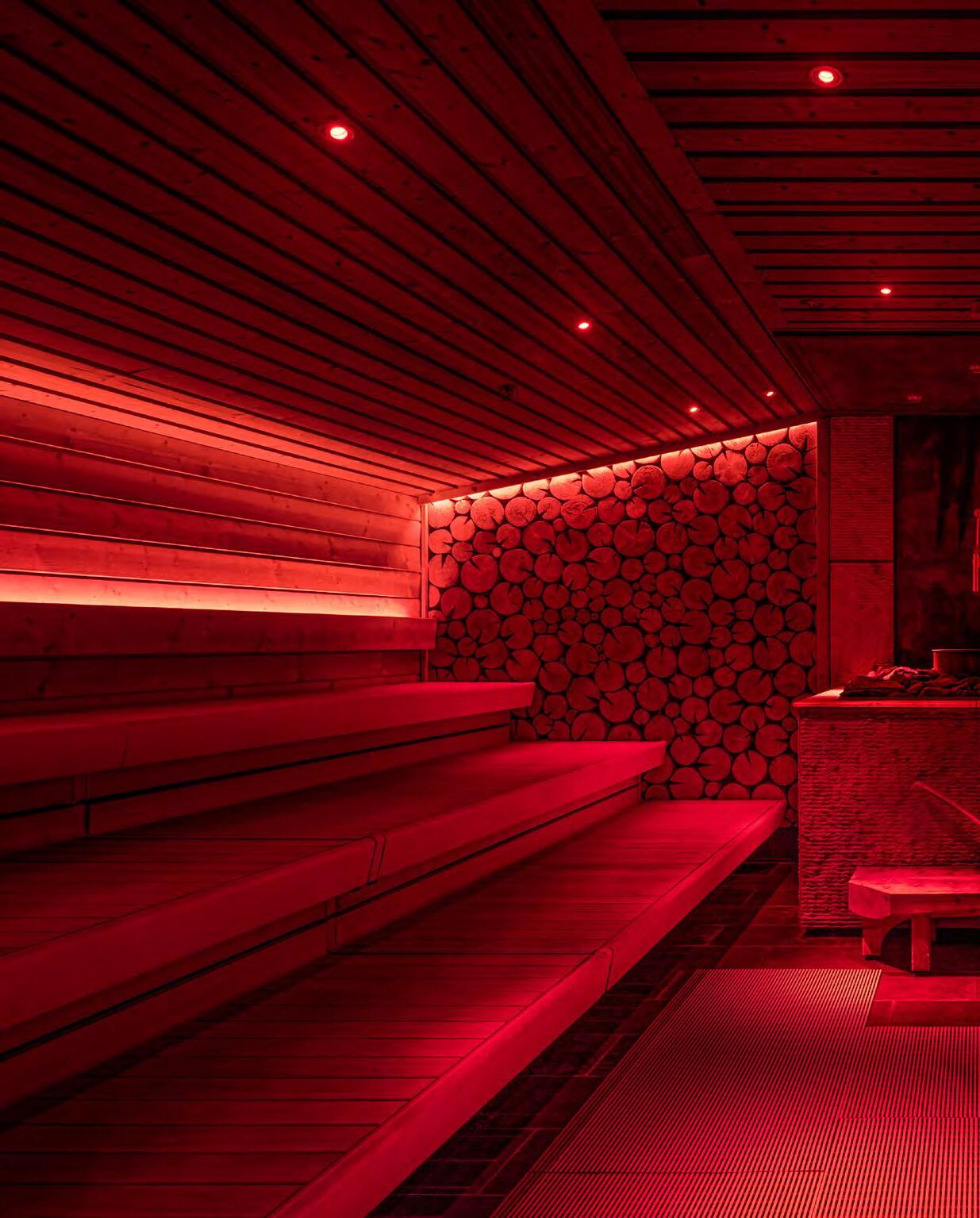
tragedies of my life that I don’t spend crafted replica of a Kyoto bathhouse, or more totally naked Norwegians, perspiration and a curated array of essential spectacular Oslo wellness resort The Well in fact - that my existence would no lacking this experience.

If the beginning of this wellness resort sounds like the stuff of teenage fantasy crossed with a Nordic fever dream, I could only apologise. Except, as you probably expect, I won’t. Firstly, I’ve a job to do, and I’m committed to carrying this burden with pride. Secondly, as any seasoned spa attendee will tell you, there’s nothing particularly sexy about a sauna, even one stuffed to the walls with towering and shockingly well-preserved Scandinavians.
The Kyoto-inspired bathhouse - and the Japanese sauna ritual I attended, which involves a less-than willowy woman dancing through the sauna waving an almost comically large fan to traditional (one assumes) Japanese music - sits on the top floor of The Well.
The hotel, situated on the outskirts of the Norwegian capital, opened in 2015 after an investment of 35 million was poured into the
project (by self-made billionaire and local hero Stein Erik Hagen) and was received with rapturous acclaim. It’s not hard to see why. A vast and sprawling Nordic spa megaplex, The Well boasts a three-storey wellness centre offering a seriously impressive array of saunas, steam rooms, pools of various temperatures, outdoor plunges and hot baths, treatment rooms, chill out areas and ritualised experiences. The works, it’s fair to say.
The abridged review? I’ve visited many spas in my life on numerous continents. The Well is my favourite.
Despite what one might suspect, its position on my list of all-time favourites isn’t due to the resort’s oh-so-Scandi insistence on nudity throughout the spa. In fact, there’s such a nonchalance to the bare flesh on display that all trace of titillation falls by the wayside - I’m confident I witnessed a full business meeting, featuring executives of both genders discussing quarterly finance reports in the birchsmoke and fennel-scented Russian sauna - and
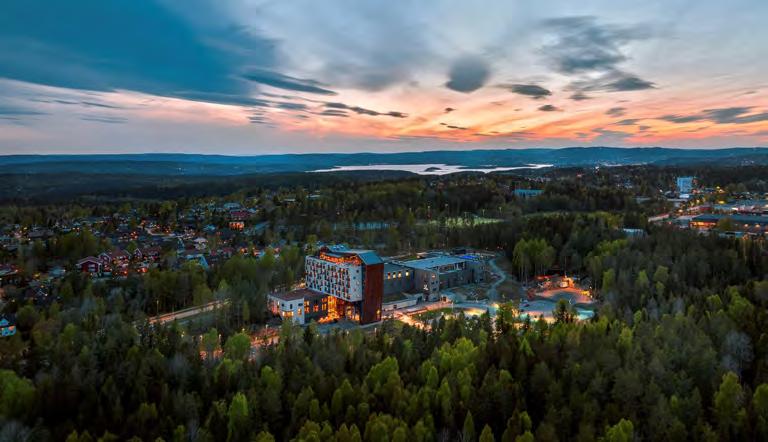
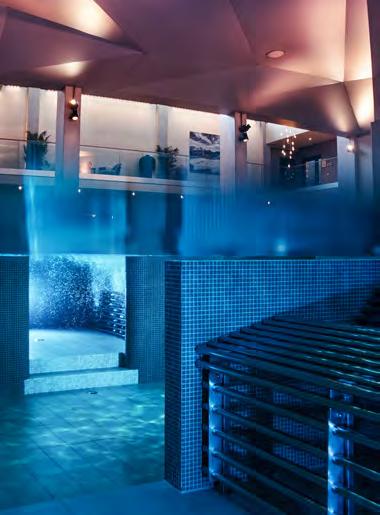
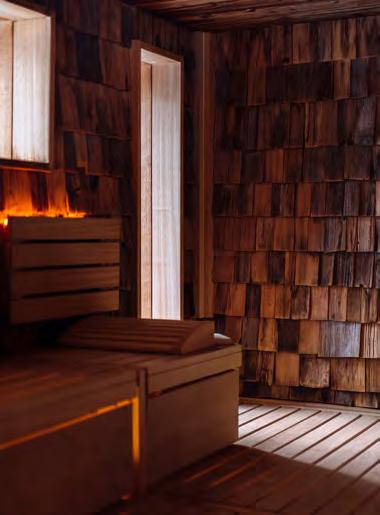
when in Norway, one should hang freely as the Norwegians do. No, my immediate ardour for The Well arose from the sheer commitment to quality and the immersive, enveloping, comforting and bliss-inducing efforts that are clearly being made day-in, day-out. The list of available treatments is a long and all-encompassing one; I think it’s reasonable to say that all skeletomuscular issues are attended to, along with the full gamut of beauty treatments, facials, epilation options, ad infinitum. My selected treatments included a very vigorous sea salt scrub (awakening, cleansing, bordering on the masochistic) and a seaweed wrap (enriching, nourishing and spectacularly messy), each followed by a lengthy massage. Needless to say, I skipped out of those treatment rooms feeling like a new man, the aches and pains caused by days hunched over a keyboard momentarily flitted into the ether.
It was clear that many of the resort’s visitors during my stay had popped out to The Well as day trippers. Who wouldn’t take time out to get away from the hustle and bustle of city life, luxuriate
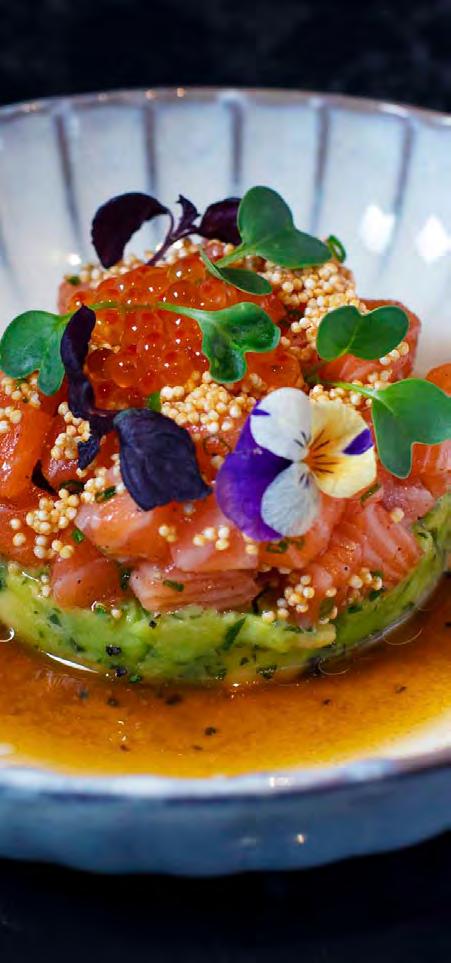
in healing waters or get a proper rub down from someone who knows their way around a back problem? For those of us staying a weekend or longer, The Well does well to compensate for the fact that, beyond a few limited woodland trails on its doorstep, once you’re in the resort there’s not exactly a plethora of other places to go. The hotel and its designers stuck to a clear brief: this isn’t a hub from which to explore the surroundings, it’s a sanctuary.
Suits me fine. The rooms are beautifully designed - mine was bedecked in dark natural woods and a luxuriant teal colour palette, harking back to high periods of mid-century scandi design and featuring what might be the most comfortable hotel bed I’ve slept in. There is (of course) a curated hotel scent, crafted from local botanicals and ever-present throughout the ranges of toiletries, further adding to the sense of being somewhere out of space and time.
Dining options begin with the hotel’s primary
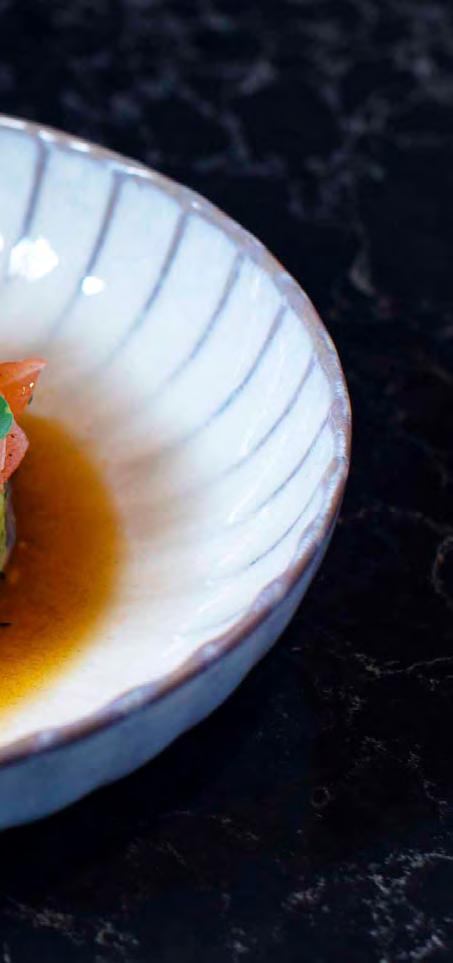
restaurant, offering a solid range of local and international dishes in an airy dining room with woodland views. The pan-roasted cod cheek with peppercorn sauce and griddled vegetables was a solid whack of Nordic comfort eating, the wine list was more than adequate for the dishes on offer.
On the top floor of the resort, you’ll find MORI - the hotel’s newest gastronomic offering and a further extension of the owner’s clear fascination with the orient. MORI (Japanese for ‘forest’) offers a seven-course tasting menu with some clear highlights: the coconut green curry with mango sorbet was a genuinely thrilling mélange of flavours, textures and temperatures. Langoustine on toast is always going to delight, as is a pearly hunk of turbot swimming in a sauce speckled with caviar. The dessert was a multi-faceted representation of the forest floor, crafted in chocolate, nuts and mosslike sponges, and was right up there with the best of them. A couple of courses missed the mark for methe bao bun fell on the wrong side of sweetness and there was a little too much enthusiasm for truffle
overall - but I couldn’t help but be impressed by the atmosphere, the service, and the clear attempt to provide something genuinely bold and innovative beyond the ubiquitous superfood salads and green smoothies one expects from such establishments.
The trip came to a close in the deliciously comfortable library bar, where a cocktail heavy on the aquavit ensured I knew which latitude I was visiting.
A trip to The Well provides further ammunition to my ongoing claim that, when it comes to luxury, relaxation and style, those Nordics have it covered. The winter days may be brutally short and the air may proverbially castrate brass monkeys, but from the top bench in a well-populated and expansive sauna, such things are quickly forgiven.
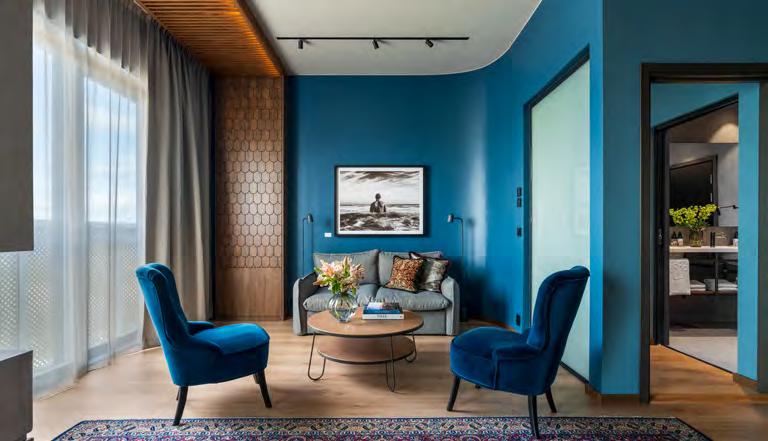
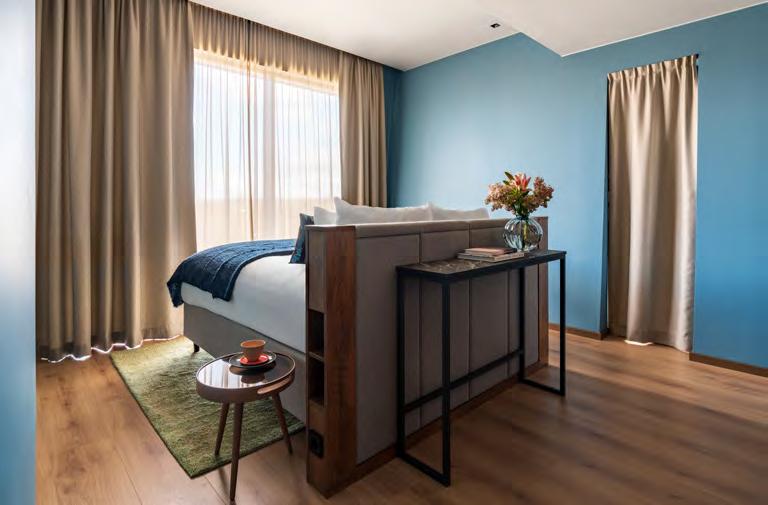

Words: Aaron Edgeworth - Motoring Editor

EDGEWORTH AT THE CONTROLS OF THE HURACAN STERRATO, BARELY HOLDING IT TOGETHER
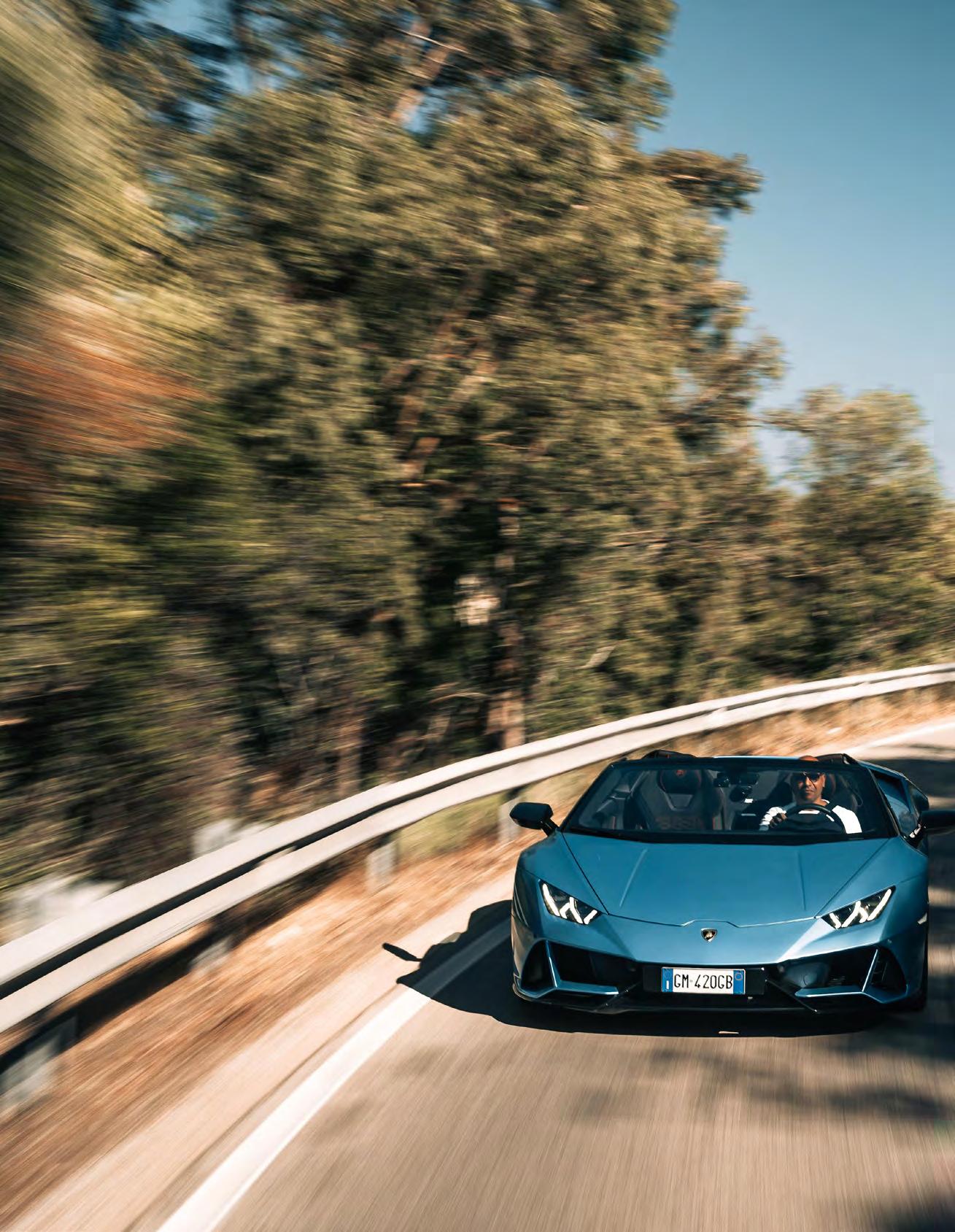
Acouple of years ago, Sardinia was little more than a place I vaguely knew of. As we hurtle towards the end of another calendar year, should you view my passport and accompanying stamps, you’d think I had emigrated there - so many occasions is Olbia stamped in barely-legible ink and at the jauntiest of angles. Don’t get me wrong; I am not sitting here incandescent about said fact, but it is funny where one’s work, or perhaps the zeitgeist, ends up taking you.
The beautiful Mediterranean isle of Sardinia sits below Corsica… OK, scratch that. If the simple geography is problematic, the rest of my ramblings may not be for you.
Sardinia is beautiful, wildly temperate, has good roads, and an incredibly low population density on a relatively large island.
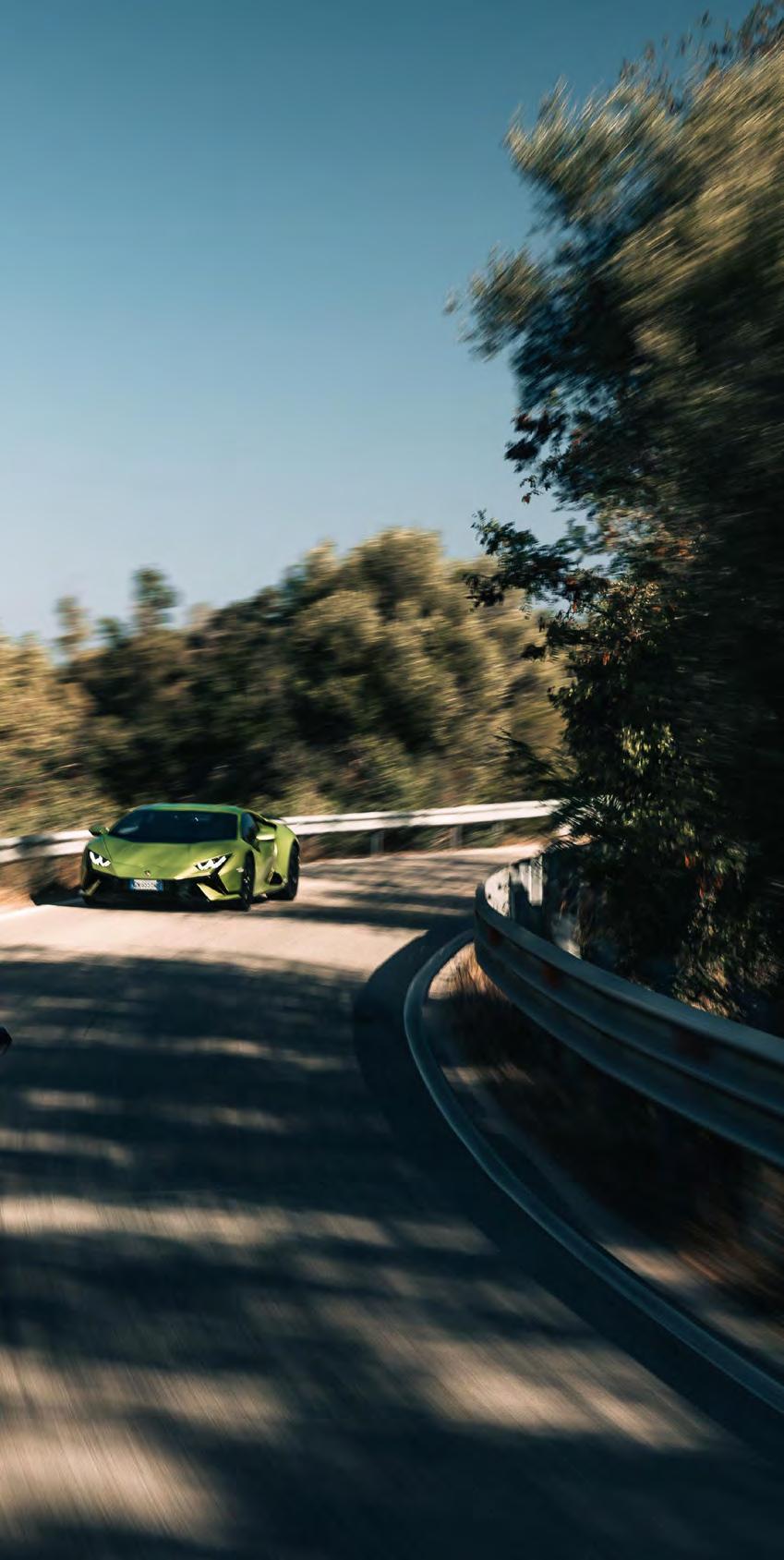
All this makes for a very relaxed and hidden away feel; something that has tempted the great and good of the automotive world to use this island with increasing frequency to host launches, events, first drives and the like. Again, no issue with me there, though as Italian is not yet a language that I have even basic mastery of, it does make life difficult when approached by the inevitable local.
I was here this time as a guest of Automobili Lamborghini, one of the most storied brands in the sports car market - hell, one of the most revered in all of automotive. For my 42-yearold, Countach poster-owning inner child and Aventador fanboy, this was almost a dream. Although, this certainly wasn’t my first raging bull. Or my first rodeo…
I had remarked to one of my favourite people in automotive, the wonderful UK PR for Lamborghini, that at my count, I had experienced the Urus and the Aventador, but that left a rather Huracan-shaped hole in my Lamborghini experience. The Huracan has seen a range of overhauls, updates and specials, much akin to the Gallardo that preceded it. The Huracan has seen different guises, but here, in Porto Cervo, we have the four protagonists of the current V10 Lamborghini line-up.
I am not sure who I need to call, but flights to Olbia from London are SHOCKING. Like, I never arrive on time and seemingly always miss the first evening. This trip, no difference, a delayed flight late in the day meant that I arrived past the point to join my fellow attendees for a meal. They were gracious enough to organise a meal for me at the beach restaurant at the resort of the experience, the 7 Pines Sardinia. A relaxed steak tartare, cacio e pepe and a lovely glass of local white made a perfect bedfellow to the late flight and I was dutifully whisked via golf cart back down to my sea view room overlooking the sparkling Mediterranean sea.
An intimate group of only five attendees (myself the single UK participant), we were a mix of ages, experience and knowledge as to the deeper aspects of the Lamborghini story. We were ferried efficiently down to the port area of Porto Cervo, where, for the fifth year, Lamborghini has created a lounge area and experience for customers past, present and hopefully, the future. The area is a slick, almost futuristic portside zone, where one is drawn in by the resident static cars in the drive, through to the Arancio Revuelto and Opera Unica, a Huracan Sterarto, hand painted over hundreds of hours to showcase one aspect of what we are here to see: the Ad
recently released, Sterrato. Oh me, oh my.
The cars were divvied up for the first of the driving periods. It was deemed that I would start in the Evo Spyder, and as people milled and acclimatised themselves, I ensconced myself in the cabin and settled in. My experience with their products meant that when I was met at my driver’s window by the representative to discuss the car and upcoming drive, he was greeted by a roof already in action and a car already in CarPlay and playing LCD Soundsystem at an appropriate decibel level. Settled in? I was already home.
The Evo Spyder is essentially the entry-level variant in the Huracan lineup. It is 2023 and it is Lamborghini, so that ‘base’ model yields 640hp from her naturally aspirated 5.2 litre V10 engine; an engine old enough to be referred to affectionately as ‘tried and tested’. In a world where smaller displacements and hybrid and turbocharged technology are the mainstays of the market, there is something so reassuringly guttural about the presence of large non-blown engines, at least somewhere, on this vast automotive landscape. The rock-studded hills that this part of the world is renowned for echo loudly with each downshift and each throttle input. Being so
“What the session was able to do is actually showcase the care and precision that underpins the entire brand.”
unobstructed to the aural aspect of the car is, without a doubt, to the Spyder’s benefit. I savoured the car for the first part of the drive as one should in these moments; sunglasses affixed, music loud but unobtrusive and a smile adorned. I will temper this, though. As great a car as the EV Spyder is, age does catch up and without perhaps some of the raucousness that one desires and whilst it certainly proved a great introduction, it more whetted my appetite for the more visceral variants. Onto the next…
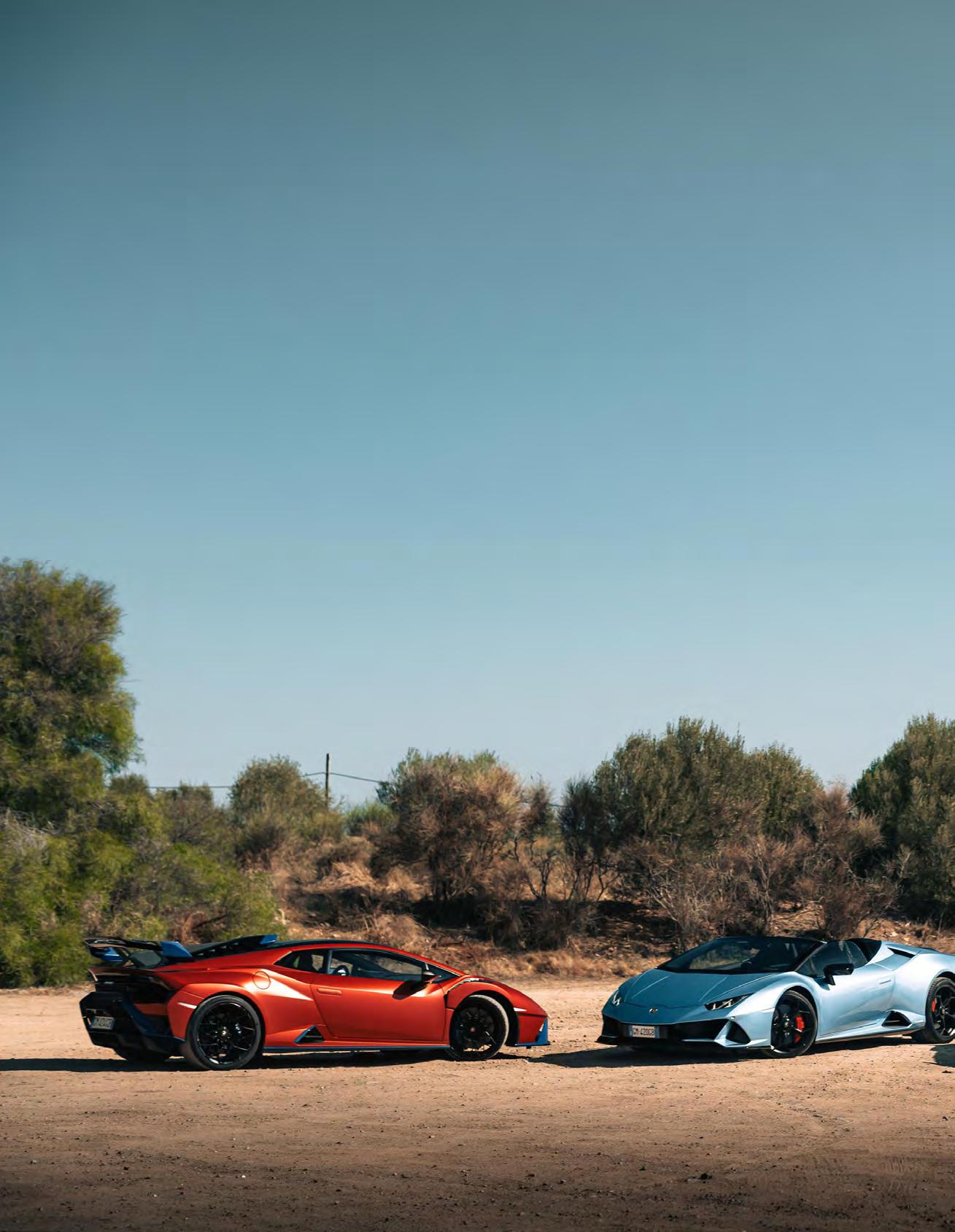
So, the STO. At its release, I am not sure I necessarily bought into the accompanying fanfare. Sure, it has all the requisite ingredients for the track-focused, razor-sharp and weight-gutted special that we all enjoy. But the curious colour combinations, the livery and the spoiler that wouldn’t look out of place on the waves of the Azores, I felt it was (and I fully understand the irony here) somewhat showy. Now, I am not a massive fan of being wrong. I guess it happens so rarely that there is an almost visceral reaction to instances thereof. This however, is one such instance.
From the moment that you step inside and pull the raw carbon door tight into its latch, one knows that there is more purpose, more noise, more stiffness, more daring, more risk. The STO is a real amalgamation of many of the ideals that really underpin the brand. As their tagline reads: “a lightweight approach and functional design combine to express pure performance”. I couldn’t have put it better myself. Well, I probably could, but I’d have to use a hell of a lot more words.
Whilst headline performance figures may seem very linear across the range, it’s the rate of delivery and the engagement of the experience that sets each variant apart. With the vigorous use of carbon fibre - which is
present in over 75% of the panels - as well as adorning door cards, dash, footwells and the louvred engine cover whose slots peek through the rear view mirror at you, the light dancing through as the raucous shout of the engine booms through what feels like a cardboard-thick partition. Oh bring it on, my friends. Bring it on! This is the point in the day where music is switched off, all windows are down, and there is the necessity to seek distance from those I was following, all to allow myself glorious flourishes of that engine note and the pull of the drivetrain. There is such raw beauty and brutality in equal measure with each shove to the chest that the STO offers under hard acceleration and upshifts. The noise, a cacophony behind one’s head. Smells, sounds, weird mechanical whirls and thunks abound and all add to the furious nature of the set-up. Parked up at stop number two, I released myself from the STO’s grip, slightly more tired, slightly more deaf, slightly more bedraggled and massively happier.
Pictures. Coffee. Next.
It’s time for Sterrato. As a seemingly unprecedented trolling from the VW Audi behemoth, Porsche and Lamborghini both launched pseudo-off-road versions of their venerable sports cars, the 911 Dakar and the
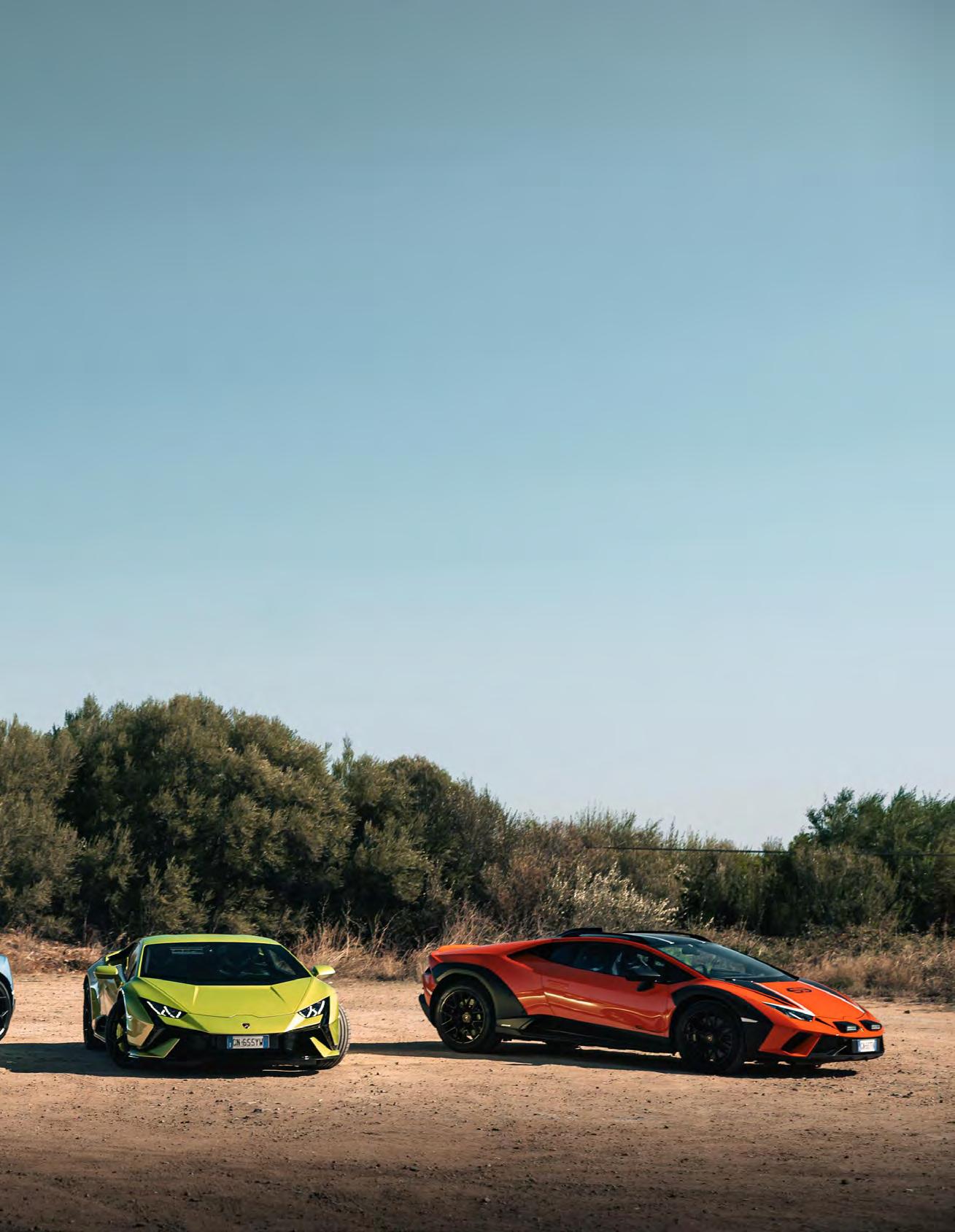
Huracan Sterrato respectively. Though I am pretty sure both research teams will be loath that I include them in the same sentence, it is what it is, and it’s only natural the comparison will be made.
Having seen the aforementioned Opera Unica at the Porto Cervo lounge, I was still unsure. Set 44mm higher than the Huracan Evo, at first glance something seems, well, not amiss, but askew perhaps. The addition of black kick and butt plates adds an air of militaria to the whole package, and whilst visual cues are all well and dandy, what’s it like on Strada, or, more importantly, in the Lamborghini Integrated Vehicle Dynamics package in its dedicated Sterrato set-up?
So, power, speed and acceleration are all down. Not by masses, bar the top speed, but enough to know that there are different battles to be won in the Sterrato. For me, the revelation came about 400m after exiting our latest change car spot. Whilst the forward view, scanning for potholes and the like is very much a supercar driver’s skill, the first time I hit a pothole, that extra 44mm of clearance and the damping set-up, made me laugh. A genuine from the diaphragm guffaw as I
realised that the thing that most slows one down on the road, i.e. the road surface, isn’t going to trouble you here. Plant it, drive it, rumble over it. The ease of exploitation is a riot of laughs. That there needs so little care and attention to the car and its road presence makes for some real hilarity when one knows that liberties are now there to be taken. Wholesale. Lock, stock and barrel. As I said, I cannot attest to the performance off-road. There is folly in Sant Agata, just not that much. What I can say is that there is unoppressed fun to be had with the Sterrato even on tarmac that is simply not mirror flat. As I said, the main issue slowing progress in a quick car nowadays is surface, and when that issue is stricken from thought, then there really is a route to exploitation that takes little or no thought process to engage.
The final bull from the ganaderos of Bologna is the Tecnica. A bridge between EVO and STO, the Tecnica is the (sort of) newest member of the family. So, one is treated to part of the rawness of the STO set-up and modes but encased in an interior that very much allows for the everyday. Visual cues on the exterior are also apparent with a revised front end and venting that gives undoubted


purpose to the already cheek-boned and jawed visage of the Huracan. I will ruin the surprise: this is the one for me.
Yes, each has its own charm. That’s really the success story behind the Huracan and one that followed well from the Gallardo. There is a sense sometimes that these variants are vague rehashes of the previous, but I feel that underplays how well some manufacturers do. The EVO Spyder has a drop-top. Done. Agreed. Has a place. The STO is raucous and uncompromising. Tick. Yes. The Sterrato, off-road. Kind of. OK. And the Tecnica? Well, I guess that’s just the one that does it all, whilst feeling more pointed and directed than the EVO (and has a roof).
The Tecnica, with an interior awash with carbon, Alcantara and leather, is certainly

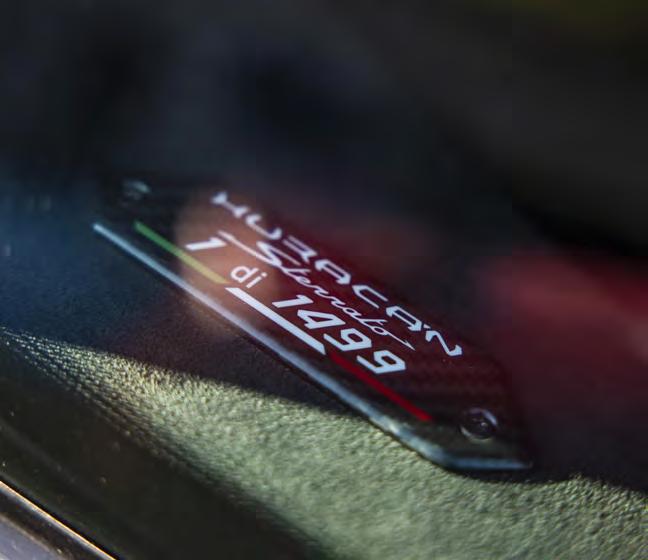
not an STO. The lack of a picnic bench rear wing. Not an STO. It feels like a car that you can exploit in all circumstances rather than the slightly thinner band of usefulness in the other variants. The interior feel is wonderful and is directed heavily towards the Ad Personam features that can be specified, meaning that the Tecnica can be modelled in either direction, street or track. The retention of STO set-up means that there is an added ferocity and a tightening of poise that makes it just feel so engaging under hand and foot. Despite NEVER having it cross my mind on the flight out, the Tecnica was the one that I exited from with the best combination of comfort, glee and wiredness.
So, that was Sardinia, and that was the Huracan range. Whistlestop? Yes. Fun? Undoubtedly so. It also served as a great
reminder that whilst fanfare and fireworks abound for the new model on the block in the Revuelto, the Huracan still stands as a testament to all that is good at Lamborghini and that there is also a passion for the model to develop and seek new targets for both usage and audience. I look to get hold of the Tecnica for a longer period to delve deeper into the proposition. I will also be petitioning Lamborghini for a quarry and a Sterrato, though that may take slightly more than an email to achieve.
As a final note, huge thanks also go to Liliya Dovbenchuk from Lamborghini who aided the event no end. Tim Bravo for dinner amusements and for the loan of one of the in situ Urus S for the day, as my flight on Sunday was scheduled for late in the evening. Perfect.
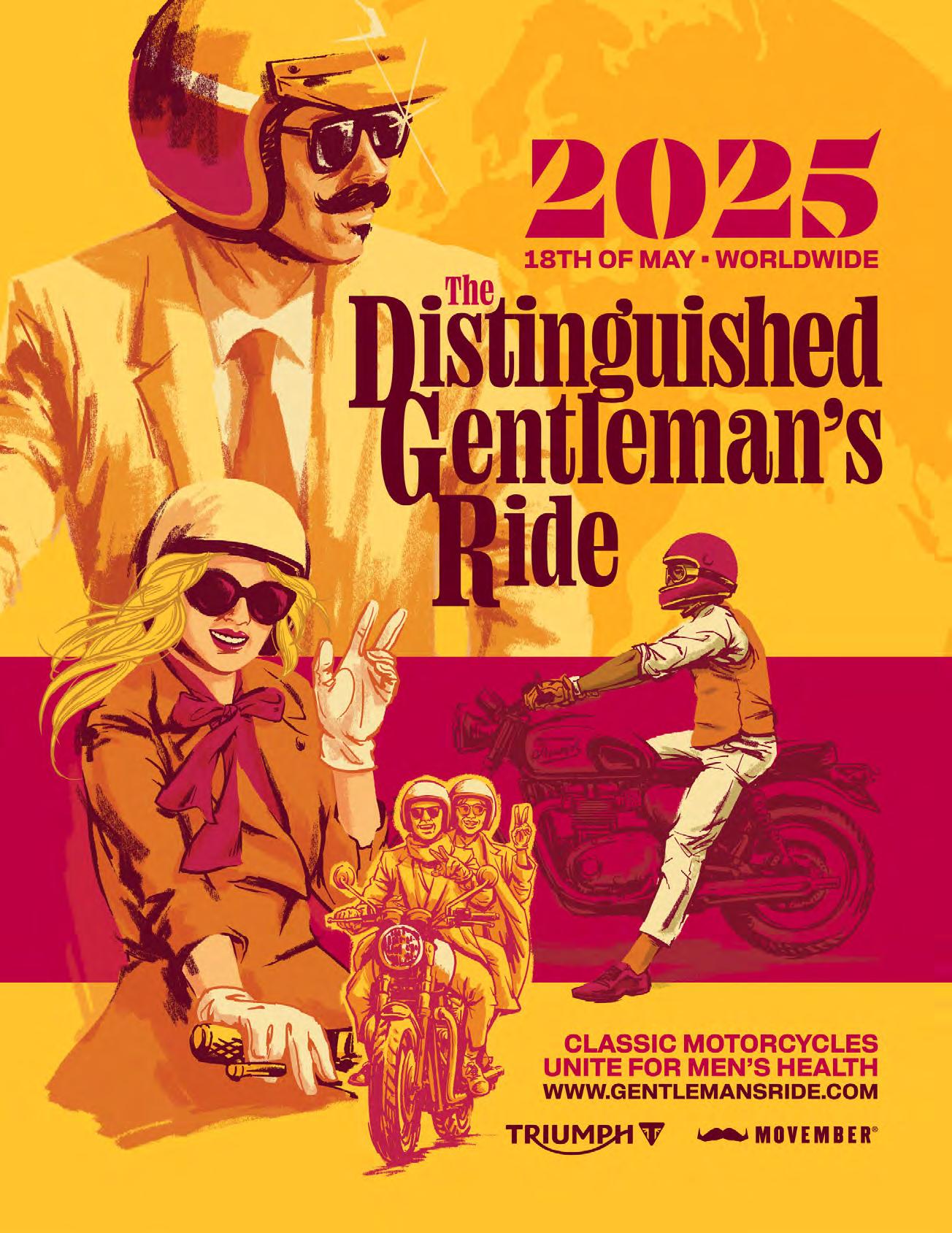
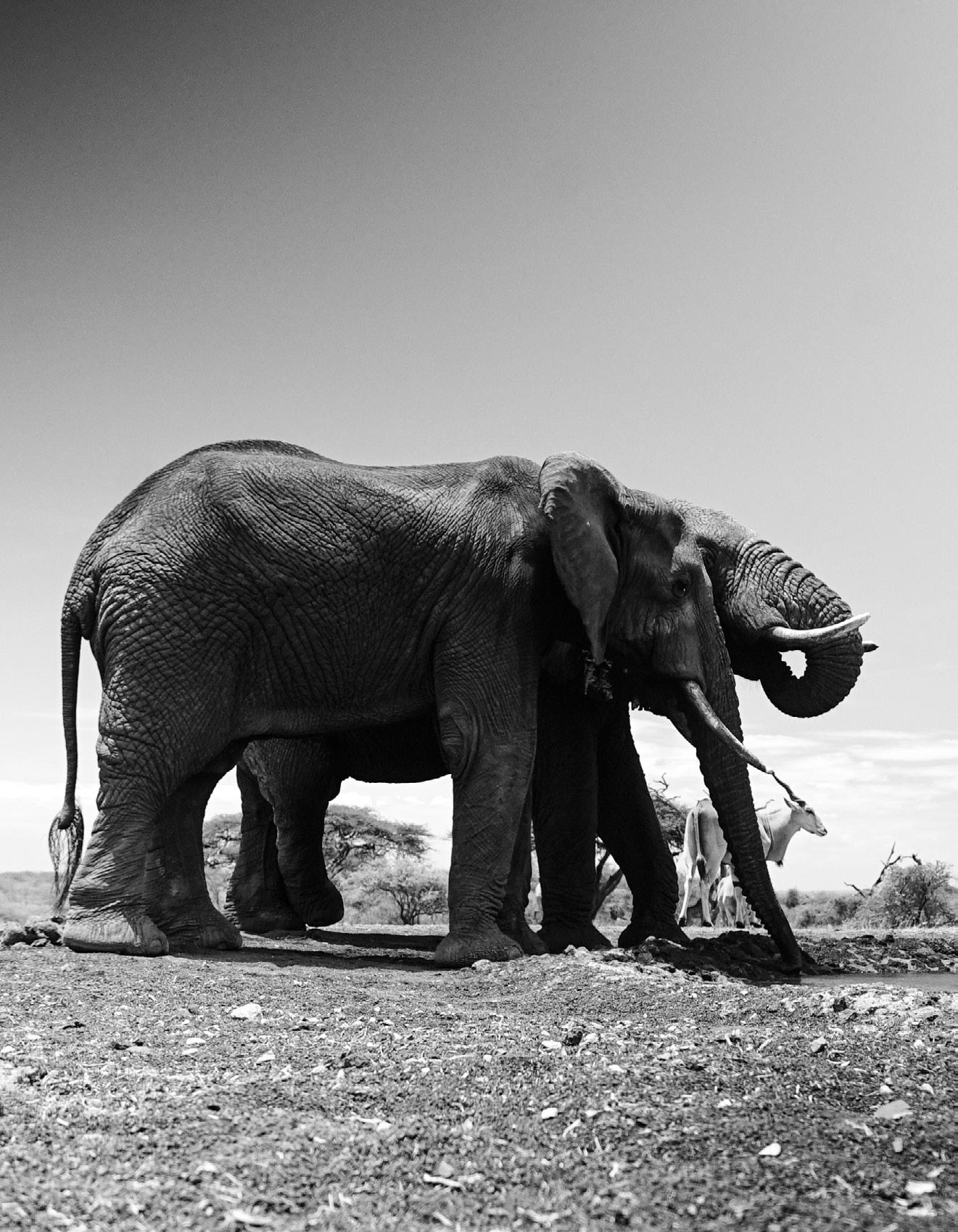
TAP TO SEE A LIVE FEED
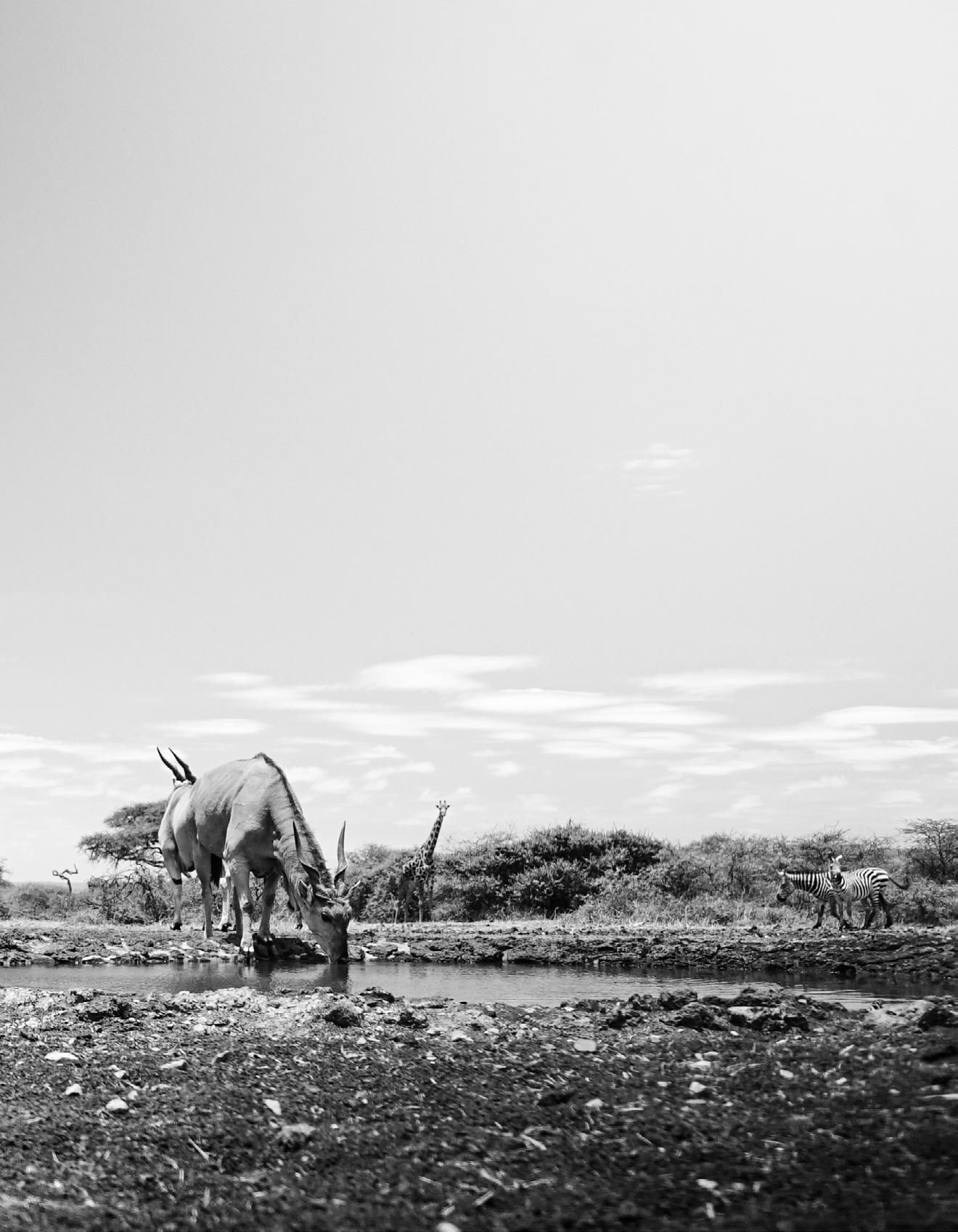
Words & Wildlife Photography: Peter J Robinson
From the sun-drenched plains of the Maasai Mara to the volcanic slopes of the Chyulu Hills, The Quiet Chase follows Robinson as he takes flight to Kenya, tracing a journey through Great Plains’ most exclusive camps, Ol Donyo Lodge, Mara Plains, and Mara Nyika. These sanctuaries, set within some of Africa’s most biodiverse private conservancies, offer more than just elevated safari experiences: they embody a philosophy where refined design, quiet service, and deep conservation are indivisible. From pre-dawn hunts and high-altitude balloon safaris to lion encounters measured in paw prints and tire treads, this is a first-hand dispatch from a world where elegance meets elemental drama—and where the wilderness still writes the last word.

- Ol Donyo
My first leg was London to Paris, with a brief layover and an unapologetic indulgence in champagne, justified by a quietly significant birthday. The flight to Nairobi unfolded overnight, and a short drive brought us to the Tamarind Tree Hotel, discreetly nestled near Wilson Airport—a practical waypoint before heading deeper into the country the following morning. A Cessna Caravan C208B was bound for the untamed expanse southeast of Nairobi. Barely fifteen minutes into the flight, the clouds parted to reveal the majestic silhouette of Mount Kilimanjaro, its snow-capped peak piercing the sky. My mother had told me stories of Africa when she had travelled here. But no one’s stories had done it justice; a beauty indescribable, the crucible of the world.
Our plane descended onto a remote dirt airstrip, the wheels stirring up plumes of ochre
dust. Awaiting us in the distance was a Toyota Land Cruiser, where we were introduced to Peter - the affable head waiter - and Jackson, our adept game driver. They led us to Ol Donyo Lodge, a sanctuary nestled on the verdant slopes of Kenya’s Chyulu Hills. Positioned between the iconic Amboseli and Tsavo West National Parks, this exclusive retreat occupies 111,000 hectares of private land stewarded by a community of
“Our Land Cruiser ambles through the late-afternoon savannah, golden light seeps across the Chyulu Hills, lengthening the shadows of the acacia trees.”
4,000 Maasai and Dereck and Beverly Joubert, co-founders of Great Plains Conservation.
As founders of the Great Plains Foundation, the Jouberts have made it their life’s mission to protect Africa’s wild landscapes and the communities who call them home. Their conservation efforts are matched by a prolific creative legacy: more than forty films, a dozen books and a body of scientific work that has helped raise global awareness of the continent’s ecological challenges. They are also the driving force behind the Big Cats Initiative and Project Ranger—initiatives that speak to their lifelong commitment to safeguarding Africa’s most iconic species through storytelling, advocacy and boots-on-the-ground support.
At Ol Donyo Lodge, eight meticulouslyappointed suites blend traditional safari aesthetics with contemporary design. Each suite features expansive glass doors opening onto private verandas with plunge pools, offering unobstructed views of the savannah and Mount Kilimanjaro. Freestanding bathtubs and both indoor and outdoor rainfall showers enhance the en-suite bathrooms. The pièce de résistance is the rooftop ‘star bed,’ offering an unparalleled opportunity to sleep beneath the vast African sky, immersed in the nocturnal symphony of the bush.
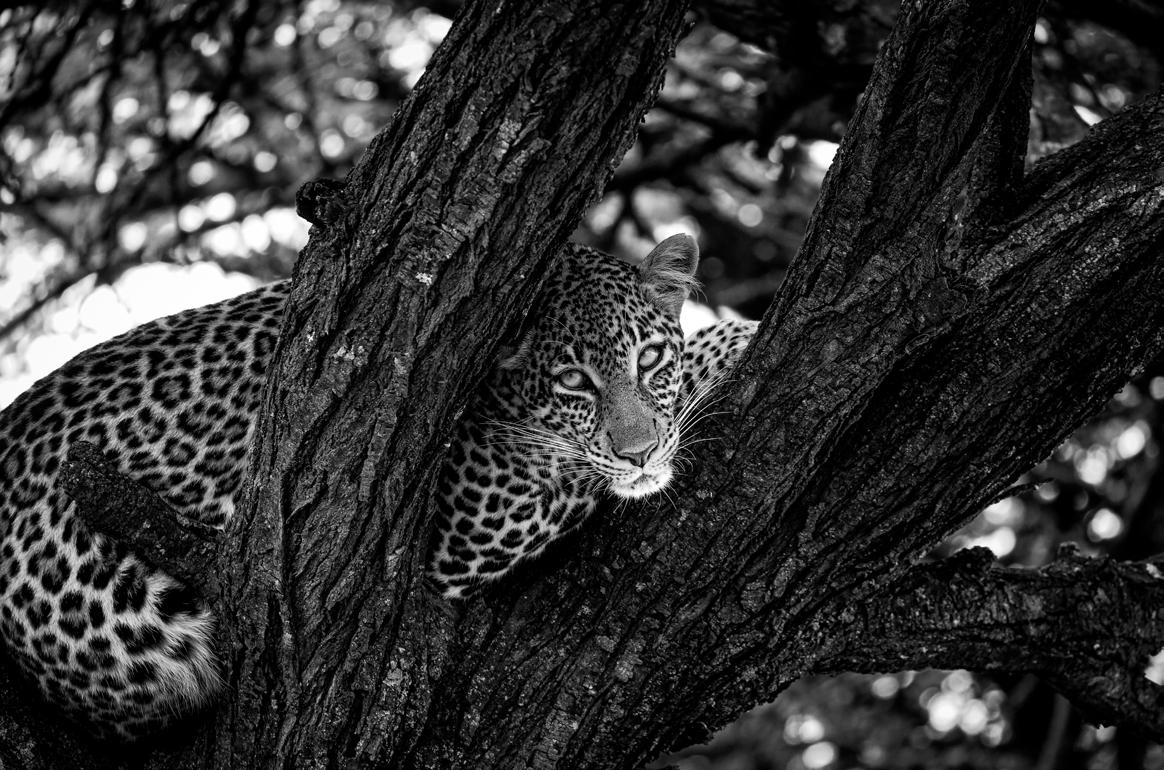
And so, safari. Our Land Cruiser ambles through the late-afternoon savannah, golden light seeps across the Chyulu Hills, lengthening the shadows of the acacia trees. Each guest at Ol Donyo Lodge is provided a Canon EOS 50D with 17–85mm and 100–400mm lenses during the stay. I had switched to the longer zoom, bracing it against the vehicle’s roll bar to steady my shot. A sundowner game drive is perfectly timed for golden hour; as the sun dips, the plains glow in a burnished haze. Up ahead, two zebra stallions clash in the road’s dusty grooves, rearing and biting with startling ferocity as they kick up clouds of ochre dust. We watch with calm, the only sounds a distant hornbill’s call and the rapid click of my shutter. Jackson, our guide, remains quietly poised as he uncloaks a Canon 500mm f/4 V1 super-telephoto lens with practiced ease. It was an opening salvo that merely hinted at the treasures to come.
Dinner that evening was set in the lodge’s intimate wine cellar, a rounded room carved from stone and lined with vintages old and new glinting in the candlelight. Chef William had prepared a comforting, home-style feast – slow-braised lamb and spiced vegetables – served with earnest pride. As a Relais & Châteaux partner, Great Plains has built a reputation for serving some of the most exclusive wines available on safari, with a growing number of guests choosing to stay with the brand for this very reason.
The following morning, we traded the Land Cruiser for saddles, setting off on horseback onto the plains. Ol Donyo maintains an impressive stable of 23 horses, and I settle into the saddle of a chestnut gelding and follow our guide singlefile onto the plains. A tower of giraffes appears among the trees ahead. Sensing our approach, the giraffes pause before continuing to hoover the treetops – we’re near enough to see their long-lashed eyes, yet our presence doesn’t startle them. Even skittish zebra herds seem to accept us, barely flicking an ear as we approach; without the drone of an engine, we move in a quieter harmony with the herds of zebra, wildebeest and antelope such as the eland, impala, oryx and Grant’s gazelle. By the time we dismount, I’m convinced: exploring these hills on horseback isn’t just a mode of transport, it’s a journey back in time, a way of experiencing Africa at the pace of nature itself.
We return to the lodge for a late breakfast, feeling gloriously windblown and hungry. Just as we’re about to dig in on the open-air deck, one of the waiters appears at our table and murmurs, “Elephants at the hide now, if you’d like to go.” In an instant we abandon our plates (with Chef William promising to keep everything hot) and tiptoe off to the nearby hide. From this hidden vantage, we peer out at a scene worthy of an Attenborough film: a family of elephants, zebra
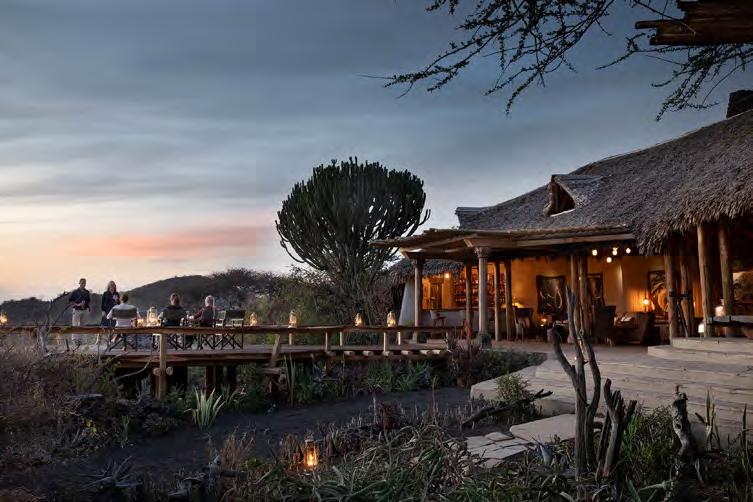
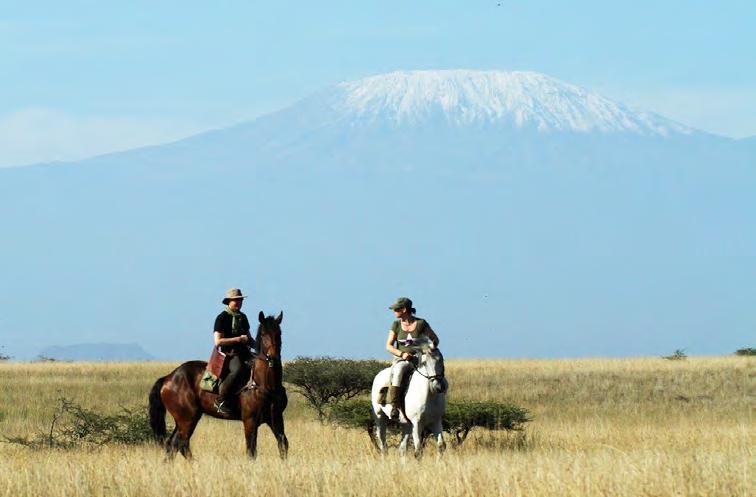
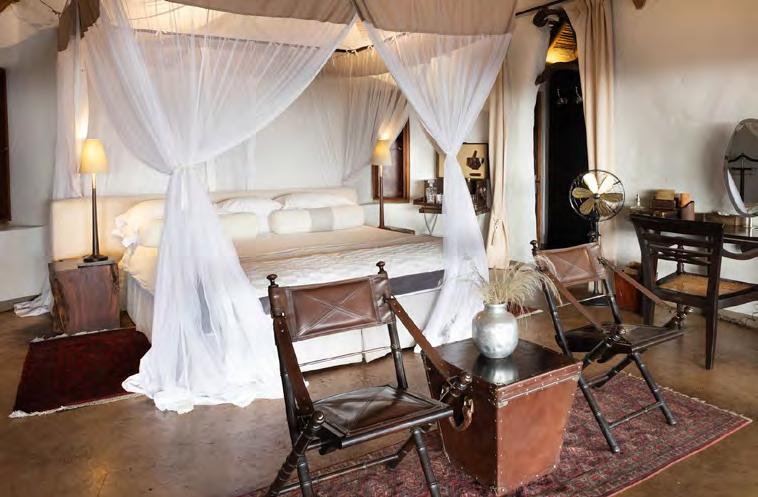
and a cloud of blue butterflies has gathered not 30 feet away. You can actually feel the presence of these giants – the low rumble of their vocalizations vibrates through the ground. At eye level with their feet, we notice details one would normally miss: the deep cracks in an old bull’s gigantic toenails, the wet mud clinging to shins and flanks, the swipe of a rough trunk against a tusk. It’s a thrill unlike any safari drive – a privilege of invisibility as wildlife carries on mere feet away.
As evening arrived, we ventured out into the night with Jackson.With a red-filtered spotlight,
Jackson sweeps the savannah for the telltale glint of eyes. I was quite content sipping my negroni, clinking along in the LandCruiser with my digestif. How bloody civilised. I was told by Jackson that the pride can be found in several locations during the night but after circling the plains for a few hours, the radio transmission came in that they were at the watering hole by the lodge. If you build it, they will come. “Simba,” Jackson whispers, bringing the truck to a gentle stop. There they were, as live and direct as I have ever seen them. For a few minutes we observe them in silence, sipping our Negronis in the darkness.
This integration of luxury travel and land stewardship is perhaps ol Donyo’s greatest achievement. I realise, as we prepare to depart, that the true magic of this place lies not in its private pools or cocktail hour, but in its sense of purpose. Every indulgent moment here is entwined with a bigger picture – each game drive, each sundowner, each night under the stars is helping to safeguard a critical corridor between Amboseli and Tsavo for future generations. So tip well and support the work.
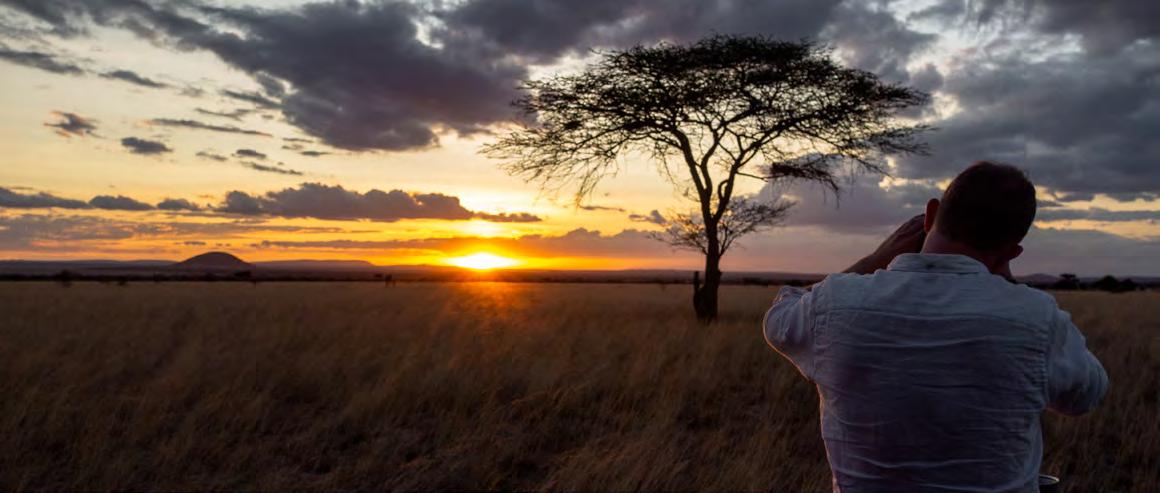
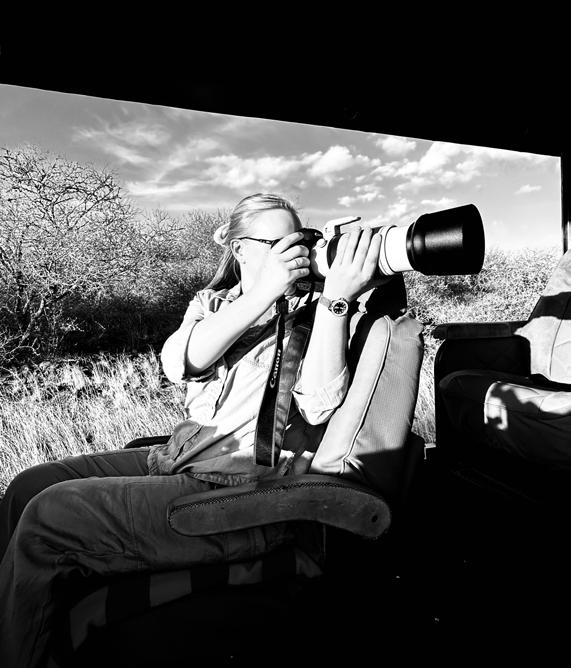
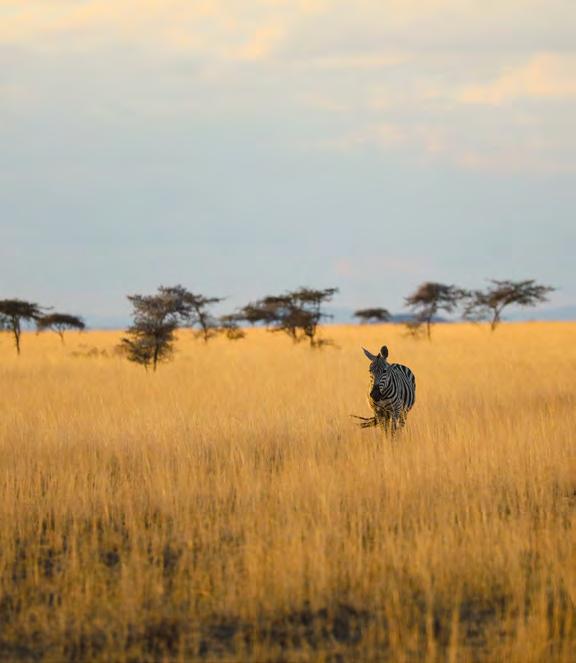

Olare Motorogi Conservancy
The little bush plane dipped low over the savanna and touched down on the Olare Orok airstrip in the Olare Motorogi Conservancy.
Tucked into a bend of the Ntiakatek River within the 13,300-hectare Olare Motorogi Conservancy, the camp occupies a privileged slice of Kenya’s Maasai Mara ecosystem - arguably one of the most predator-rich landscapes in Africa. Built entirely on raised decks with no permanent footprint, it offers both privacy and proximity: a front-row seat
“I glimpsed plump shapes in the water – a bloat of hippos, eyes and ears poking above the surface. A few metres further, a stealthy outline on a sandbank turned out to be a basking crocodile.”

to the theatre of the wild, set in a conservancy that limits guest density to protect the land it leases from over a thousand Maasai landowners.
Before the dust even settled, our safari had begun. Just a ten-minute drive west beyond the runway, a giraffe stood vigilant over a wet, wobbly calf, newborn minutes ago. We watched breathlessly as the mother licked the calf clean and coaxed her baby to stand for the very first time, the calf’s spindly legs buckling and straightening in determined fits and starts. It was a scene of raw new life that left us silenced. Daniel, our guide, had an infectious grin as wide as ours. “Welcome to the Mara,” he said.
The approach to Mara Plains Camp is intentionally dramatic. We left the open grasslands and entered a ribbon of riverine forest, where dappled light played across the wooden suspension bridge ahead. A canvasclad porter gathered our luggage, and we proceeded on foot across a series of raised wooden walkways over the Ntiakatek River. Far below, I glimpsed plump shapes in the water – a bloat of hippos, eyes and ears poking above the surface. A few metres further, a stealthy outline on a sandbank turned out to be a basking crocodile. The symphony of grunting hippos and birdsong under the canopy cocooned us, the very air rich with an earthy, riverine scent.
On the other side of the bridge, Mara Plains Camp central lodge is again an open-air space under triple-peaked marquis tents. Expect Persian rugs underfoot, a library’s worth of hardcover books on African wildlife, and sepia-toned portraits of the big cats we’d likely encounter on the canvas walls. Despite the old-world aesthetic, nothing felt dated – this was curated, living history. Damaris, the camp manager, greeted us with open arms and obligatory cocktails. Standing on the deck, I admired how Great Plains Conservation has balanced elegance with ecology. “The camp is not an imposition on the landscape, but a subtle refuge among the wild,” co-founder Dereck Joubert once wrote, and I see what he means.
With the wilderness literally at our doorstep, Daniel suggested we head out in earnest. “There’s a cheetah I’d like to find,” he said, “she has cubs in the area.” By late afternoon, we’re bouncing along in the Land Cruiser across the sun-drenched plains, the wind whipping pleasantly. With just four to six guests per vehicle, Mara Plains ensures an uncrowded safari. Before long, Daniel killed the engine on a rise and pointed to a lone balanites tree in the distance. Under its sparse shade was the sleek, spotted form of a female cheetah. She seemed restless, emitting little yelping chirps. “She’s calling for her cubs,” Daniel whispered. “We
STAY
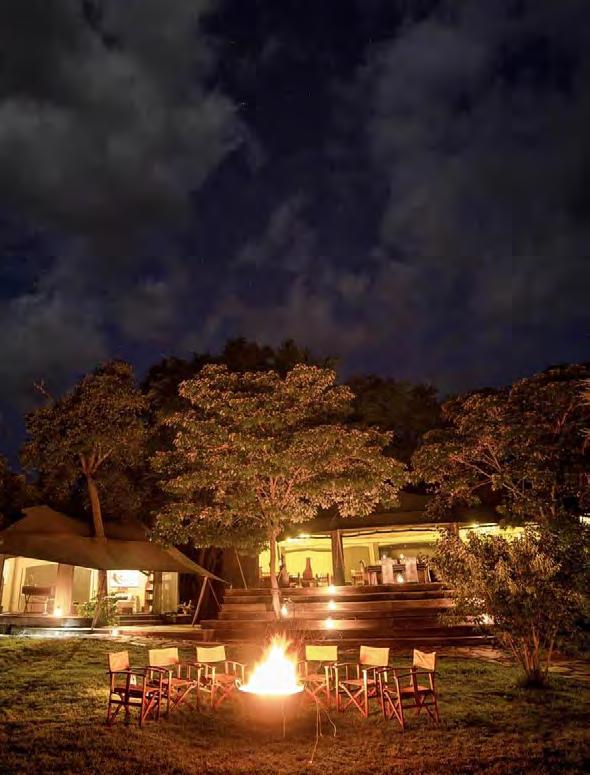


know that she’s already lost one cub, that’s why she’s calling”. The reunion wasn’t to happen; daylight was waning and the mother was still anxiously calling when we left.
Our last stop of the evening was a search for the Marsh Pride of lions – one of the Mara’s storied lion lineages. We found them in lazy repose after a nocturnal feast, sprawled on their backs in the grass with full, round bellies, looking as content as housecats. Lionesses groomed bloodstains off each other’s chins, while a few cubs suckled and tussled in play. Daniel identified the pride’s matriarch for us and even pointed out a big male dozing under a croton bush a few yards off, almost invisible in the shade. We sat for nearly an hour with this lion pride, utterly absorbed.
The wake-up call came at 4:30am (mercifully delivered with French press coffee and still-warm muffins) as we were embarking on a hot-air balloon safari. There is a moment in a balloon safari when the roar of the flame subsides and you realize you are floating in perfect silence. That moment came as we drifted over the Masai Mara plains just as the sun’s first rays spilled over the horizon. Below us, the herds were on the move: elephants marched in stately file, and even a dazzle of zebras looked like toy soldiers from our lofty vantage. The perspective from above was breathtaking – the Mara became a living tapestry of animals and acacia trees on a vast green-gold canvas. For an hour we floated, sometimes low enough to pick out hyena trails etched in the grass, other times high enough to see the serpentine loops of the Mara River far in the distance.
The following morning we bounded across the bridge to see Daniel waiting eagerly outside. As we gently headed out of camp, Daniel told me: “The hyena are hunting, and I think there will
be a kill… but we need to rally to get there and cross the river”. With that, the chase was on.
A cacophony of cackles and squeals filled the air – the hyenas had isolated a young wildebeest from its herd. The hyenas had brought down the wildebeest with ruthless efficiency and immediately dozens were swarming the carcass. To say they were territorial, blood stained mouths and all, would be an understatement. Daniel, sensing our astonishment, simply said: “Out here, every day is a fight for survival. That we get to witness it is a privilege.” We returned to camp in a contemplative mood that morning, the ferocity and efficiency of the hyenas replaying in my mind. It struck me that in just a couple of days, the Mara had shown us the entire circle of life – from a newborn giraffe’s first steps to an apex predator’s kill.
Our final morning at Mara Plains brought a different sort of surprise. As we sat down to plates of fresh mango and warm croissants, we heard singing in the distance. Through the bush emerged a procession of Maasai warriors – the Maasai staff from camp, dressed
A FORMIDABLE DRINKS CABINET RESIDES IN THE MAIN CAMP, BE GOOD TO IT
in their traditional red shuka blankets and beadwork, carrying spears and staffs. They formed a circle around our table and began a rhythmic, resonant selection from their bush repertoire. There were fifteen Maasai, clapping and singing in harmony, their smiles as broad as ours. I was moved to tears of joy as my throat tightened. This didn’t feel like a staged show for tourists. We were speechless. To be encircled by singing Maasai in the middle of the Mara, under a brilliant blue sky, with giraffes ambling in the distance, celebrating a birthday remains one of the most unforgettable and heartfelt celebrations I have ever had.
Mara Plains is not merely a camp but a case study in ecological and cultural symbiosis. Its aesthetic elegance is matched by an ethical clarity. To reside at Mara Plains is to be momentarily embedded within a landscape of profound biological and anthropological resonance. It is not spectacle; it is stewardship. All too soon, it was time to bid farewell to Mara Plains and continue our journey onward to Mara Nyika Camp.
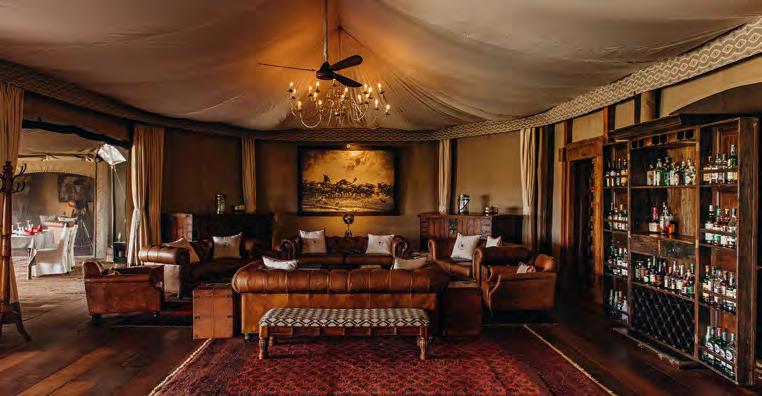
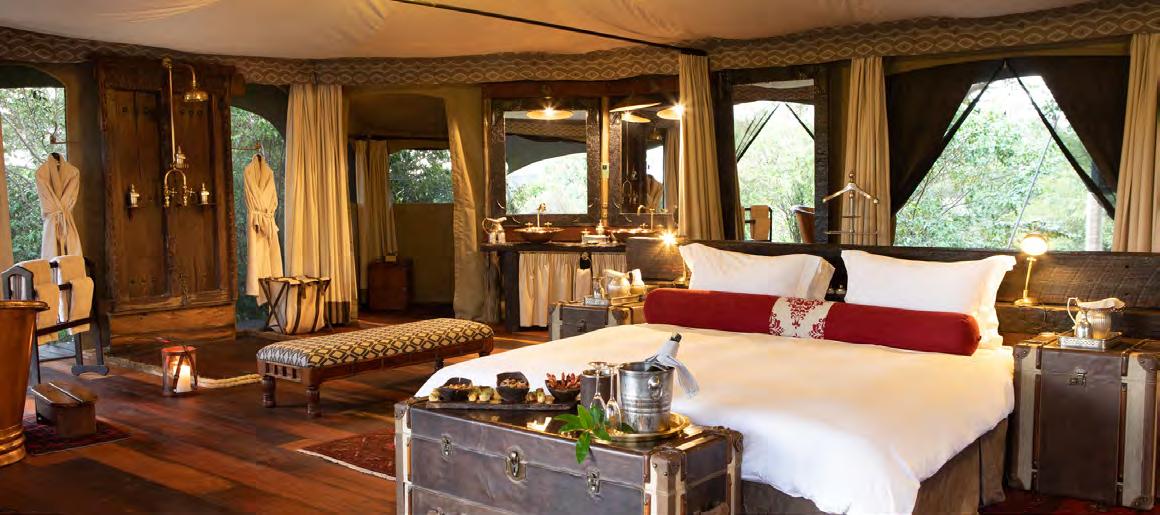


Our final destination, Mara Nyika, lay to the east in the Naboisho Conservancy – another jewel in Great Plains’ collection. The approach to Mara Nyika set the tone. As we neared camp, rounding the final bend of a dusty track, a massive bull elephant emerged before us, standing resolute in our path as it watched the rest of the pack crossing. We halted in awe. The elephant swung round with a flap of its ears, indifferent to our schedule. After a few moments of abject silence, the pack lumbered off into the bush, yielding the road and granting us passage into its domain. As we gently rolled forward, we caught sight of movement overhead – a family of striking Vervet monkeys perched in the trees, their long tails swaying like silken banners.
Our tented suite itself was a study in refined safari chic. We stepped through into a broad lounge tent furnished with leather club chairs, a Persian rug, and a writing desk covered with field guides. Beyond that, the interconnected bedroom tent featured a grand, pillowy bed positioned to take in the full roving hills in the distance.
By late afternoon, it was time to explore the world beyond the camp. We met our safari guides, Mosinko and Simon (affectionately nicknamed “SK”), who would be our companions for the Mara Nyika adventure. We set off into the Naboisho Conservancy. Mosinko settled into the driver’s seat, while SK, brimming with energy, rode shotgun. As the sun dipped lower, the vast plains turned dusky green and there was a profound silence except for the trill of crickets waking up. Little did we know, the tranquility was merely the prelude to an adrenaline rush soon to come – the Mara had a grand drama in store for us that night.
Night fell swiftly, ushering in a new cast of creatures and a new surge of energy in the bush. We had just packed up the last sundowner glass when a call crackled over Mosinko’s radio. He listened intently, then gave us a grin: a pride of lions was on the move not far from our position, possibly gearing up for a hunt. In a flash, we were back in the vehicle, bumping down a narrow track with headlights off (to preserve our night vision) and a red-filtered spotlight at the ready. SK swept the red beam to and fro until – there! – eyeshine. We counted one, two, three... at least five lions, fanned out and stalking.
Mosinko quickly killed the engine and we sat in absolute stillness. We could make out a herd of impala grazing about a hundred meters ahead, blissfully unaware of the silent approach. The lead lioness dropped into a low crouch, inching forward. Our own breaths were held; the whole world shrank to the circle of red light and the
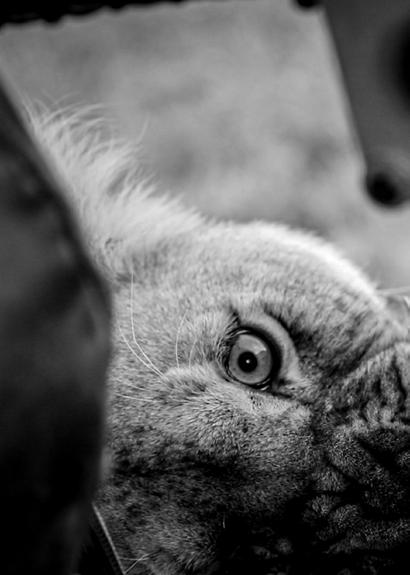
tense slow-motion chase playing out within it. Suddenly, an impala snorted an alarm –perhaps catching a whisper of the predator on the breeze – and in an explosion of motion the herd bolted. In that same instant, the lioness launched herself from cover, and three other lions followed suit, pounding after the fleeing impala in a cloud of dust. We caught a flash of tawny bodies streaking across the plains. For a few seconds, chaos reigned – dust, scrambling hooves, and lions zigzagging in pursuit. But the hunt was unsuccessful. We let out the breaths we’d been unintentionally holding.
We returned to base, dined magnificently and slept blissfully, and dawn came gently with a pink glow on the horizon and a chorus of birdsong filtering through the canvas walls. The anticipation of a morning game drive quickly drew us out of our comfy beds, and we arrived at a favorite watering hole of the guides in time to catch a family of elephants enjoying their morning ritual. We watched, enchanted, as a matriarch and her young calves splashed in the water, trunkfuls of water spraying and tails swishing happily. Not far off, a tower of giraffes and a dazzle of zebras gathered, drawn by the promise of a cool drink.
Evening eventually fell, and we set off with a mix of excitement and sadness, knowing it was our last safari outing. SK playfully challenged me to a little photography contest – who could get the best shot of the day. I was game. Just as twilight settled, the radio buzzed again. This time, the news was that a large pride of lions was on a hunt nearby. Our guides exchanged
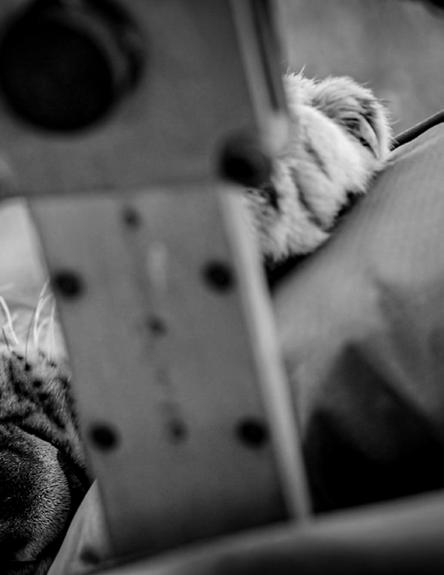
quick determined looks, and we set off at speed. When we arrived, Mosinko deftly killed the engine and signaled for quiet. Dusk had deepened to near darkness, and we surveyed the scene: out on a grassy clearing to our right was a cluster of zebra, perhaps two dozen, oddly still as if sensing something. To our left, barely visible against a line of shrubs, were the lion pride. SK had his camera ready, and he gave me a nod as if to say, “Get ready.” I braced my lens.
In a split-second, the tableau erupted. One of the lionesses launched herself at the wildebeest herd with a roar, and the herd bolted. In the fray of dark shapes, I saw a blur of tan streak past our bonnet. Another lioness gave chase from the flank, driving her quarry inadvertently closer to us. I clicked my shutter repeatedly, trusting the high ISO and hoping for at least a few crisp frames of this mayhem. Suddenly, a heavy thud jolted the vehicle. For an adrenaline-soaked moment I thought we’d been hit by a wildebeest. But SK, eyes wide and laughing in disbelief, whispered, “You might want to move closer to the front” Indeed, one of the female lions was suddenly very interested in me as I sat alone at the back of the Cruiser to get a higher vantage. She looked right into my eyes as she sank her claws and teeth into the spare tyre of the cruiser. I managed to capture a photo of that lion, eyes intent, as she bit down into the tyre: evidence of a story I’d be telling for years.
When our small bush plane later soared over Naboisho, I looked down and could barely
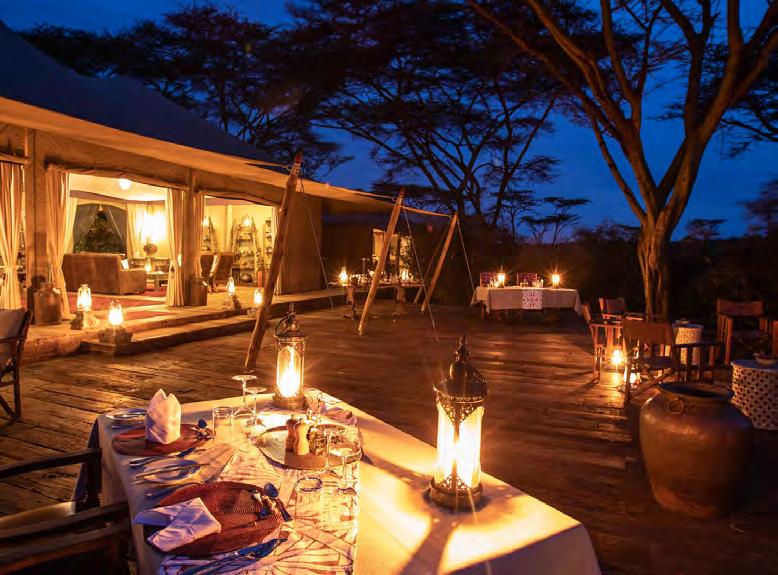

spot Mara Nyika in the forest below – its sandcolored tents merging with the terrain. It struck me how appropriately inconspicuous it was; a secret treehouse known only to those invited. In an era of ever-increasing noise and distraction, Mara Nyika offers a sanctuary of quiet elegance and wild potency. We had witnessed a fruitful alliance of luxury and conservation – a coming together of people and nature in the truest sense. And that, more than any lion’s kiss to a tire or gourmet dish, is the lasting treasure I carried home.
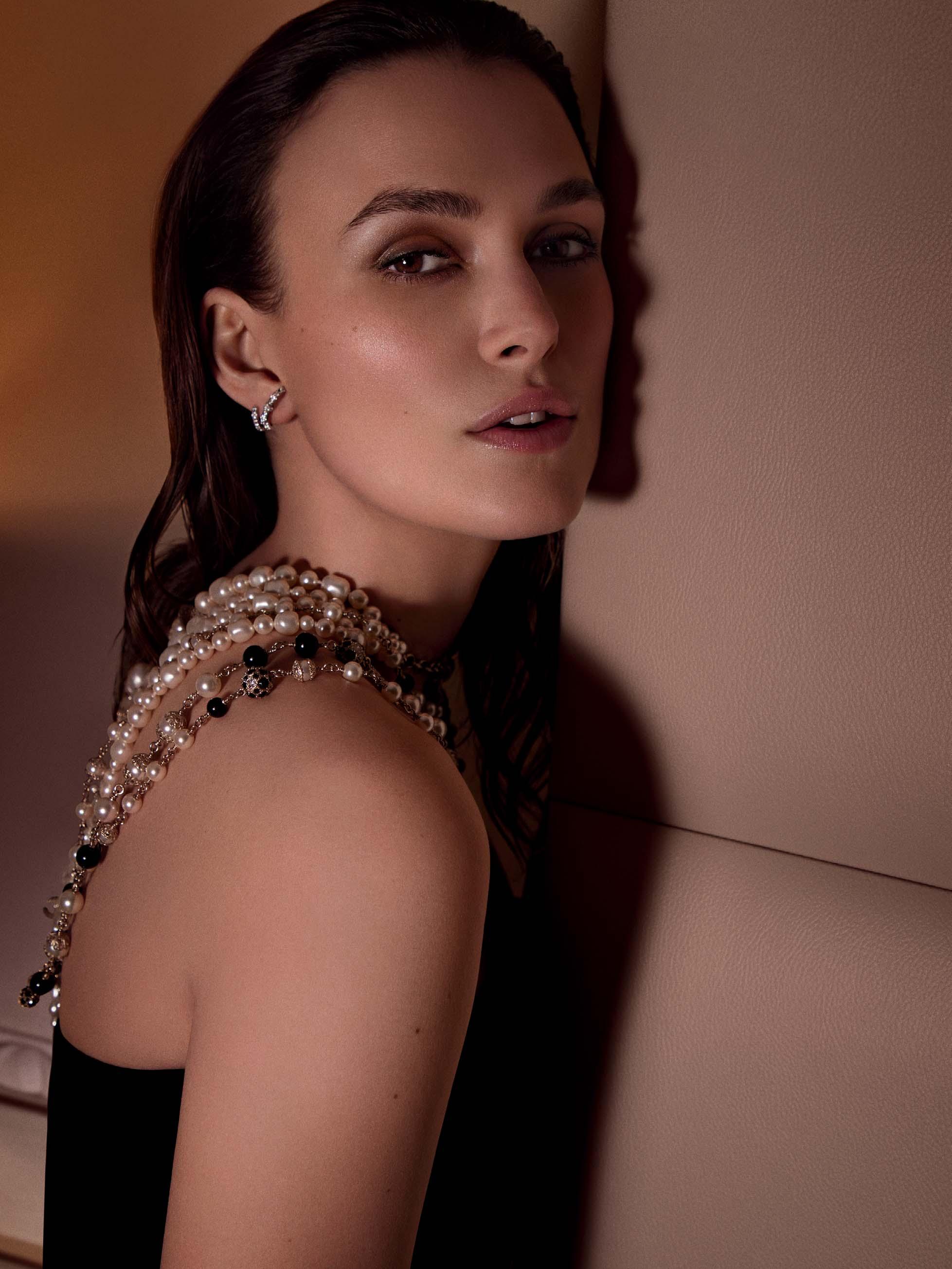








































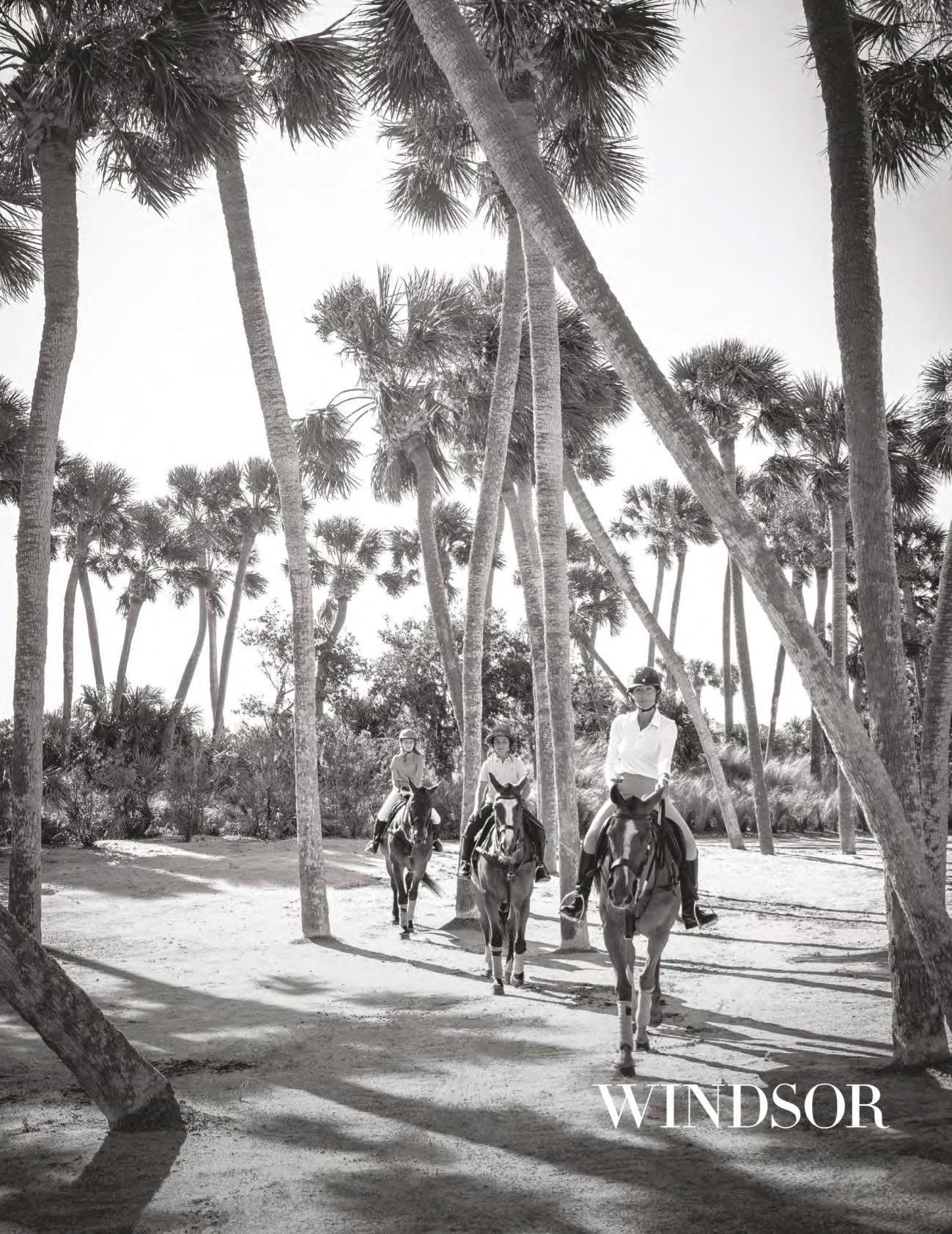


To say that Copenhagen’s gastronomic scene has had a good decade would be a remarkable understatement. It wasn’t so long ago that the Danish capital was barely a speck on the global foodie atlas, and (some would argue ignorantly) associated with little more than cheap pork products, pickled vegetables and tinned herring. How things have changed.
Words: Benjamin Norris - Lifestyle Editor
Whether that rather brutal assessment was ever truly accurate, or an extension of the British gourmand’s outdated prejudice towards Germanic dining options, is an argument for another day. Since the turn of the millennium, Denmark has revelled in the potency of its natural produce, its canny knack for making a star ingredient of preserved and fermented ingredients, and its peoples’ affinity for foraging and making the most of the treasures of forest, farmland and sea. The results, as we’ve seen, have quite literally altered the world of fine food and wine. Restaurants across the globe have rushed to align themselves with the New Nordic Manifesto borne of Michelin-baiting eateries like Noma, and championing miniscule food miles, seasonality and preservation - all second nature to Denmark’s chefs and home cooks alike.
Copenhagen is a curious city for the food critic; something which truly dawned upon me after accepting the invitation to review two of the city’s current leading restaurants. Both hold Michelin stars, both champion local and seasonal produce via expansive and rather glorious tasting menus, and both very much are the vision of their singularly talented chefs. And yet, and yet.
Let’s start at Marchal, prettily situated in Kongens
Nytorv, the closest thing Copenhagen has to a town square and overlooking the harbour. It’s the in-house restaurant of D’Angleterre, Copenhagen’s palatial hotel and one of the more recent additions to The Leading Hotels of the World’s portfolio. It’s utterly swoon-worthy, and a historic gem worthy of a city break in itself.
Marchal is heralded by executive chef Jakob de Neergard, a beaming, effervescent and rather flamboyant individual who is known throughout Denmark as a vanguard of timeless French fine dining. While his approach contains flourishes of Escoffier classical cooking, the Gallic associations are merely a solid foundation on which to showcase the best of the Nordic nation’s ingredients. Make no mistake, this is contemporary Copenhagen cooking that nonetheless recognises the Francophile obsession with butter, cream and pitch-perfect saucing. No complaints from me.
We kick things off with a green gazpacho complete with an olive oil sorbet. It’s a deeply herbaceous and refreshing opening salvo, and while the words ‘olive oil sorbet’ couldn’t be less Danish, the cleanliness of the flavours and willingness to celebrate simplicity and clarity tells diners exactly where on the European map they’re currently placed. Spectacular oysters dressed with wasabi and caviar follow. Fabulous.
I’m then faced with a dish that, quite frankly,
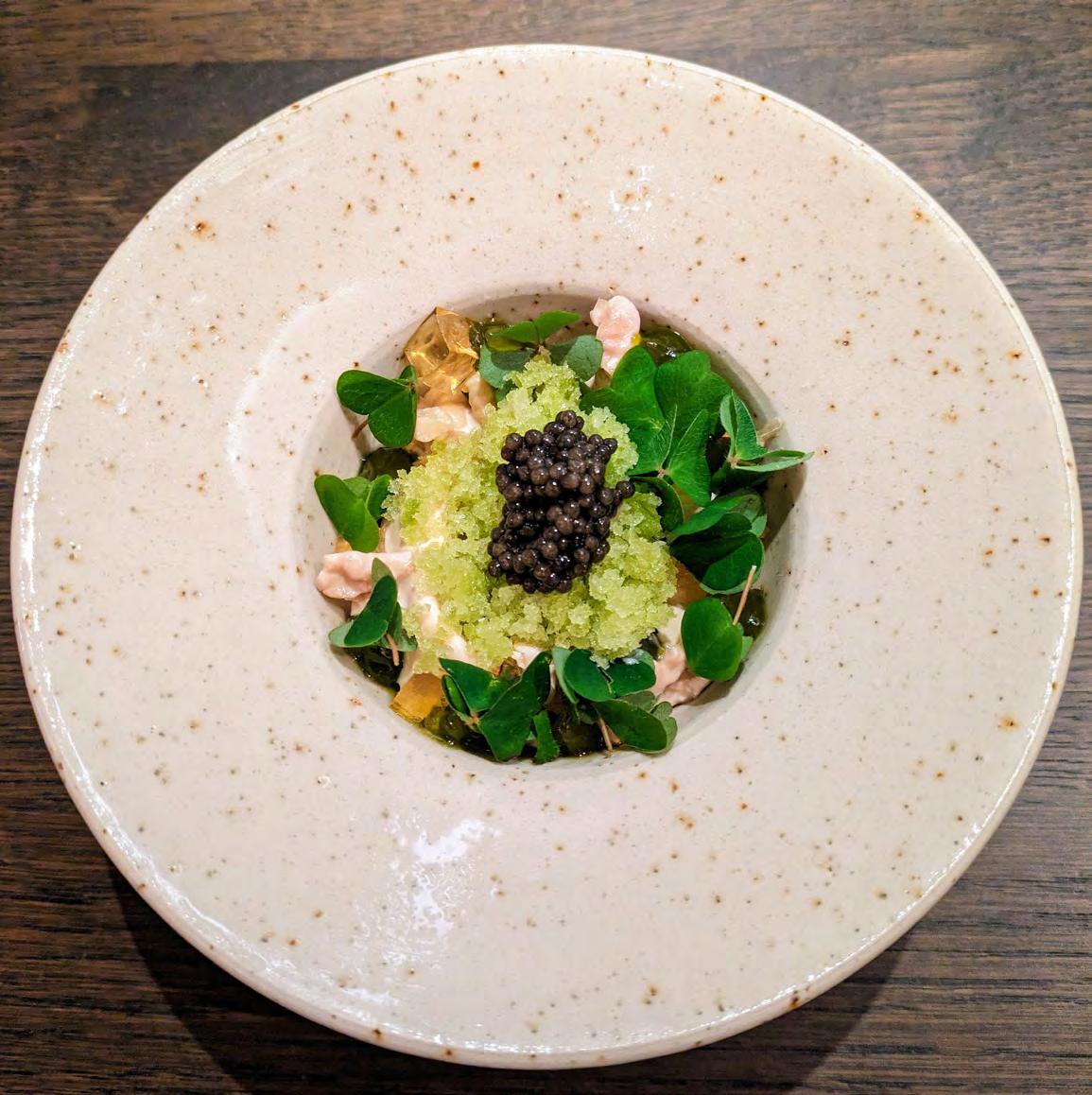
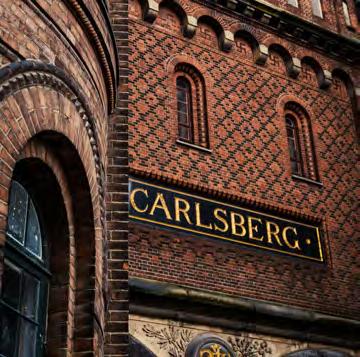
I’ll be remembering for decades to come. Listed as ‘caviar en surprise’, a tin of caviar is placed before me. As a committed devotee of the sturgeon’s egg, I was excited. Upon opening, the dish reveals a shimmering and wonderfully generous layer of jade green, low-salinity and delicately nutty caviar, which in turn reveals an exceptionally smooth puree of Jerusalem artichoke and white lobster meat. It’s about as luxuriously soft, comforting and cosseting as a fish course can be - food that transports you to the safety of the nursery, albeit with a decidedly grown-up flavour. I was smitten.
Apparently, caviar stocks and pricing fluctuated
wildly throughout the pandemic, with exports dropping in 2021 by almost 30% and creating the fishy equivalent of a wine lake in the key caviar regions of France and Switzerland. Jakob tells me he always wanted a house caviar to call his own, but never in his wildest dreams did he imagine it would be a suddenly within-reach Rossini Oscietra. For all the devastation the pandemic wrought, we can perhaps be thankful for this.
The restaurant’s signature dish of halibut with endive and, yes, more caviar follows, and I’m reliably informed that there’d be nothing short of a riot should they ever remove it from the
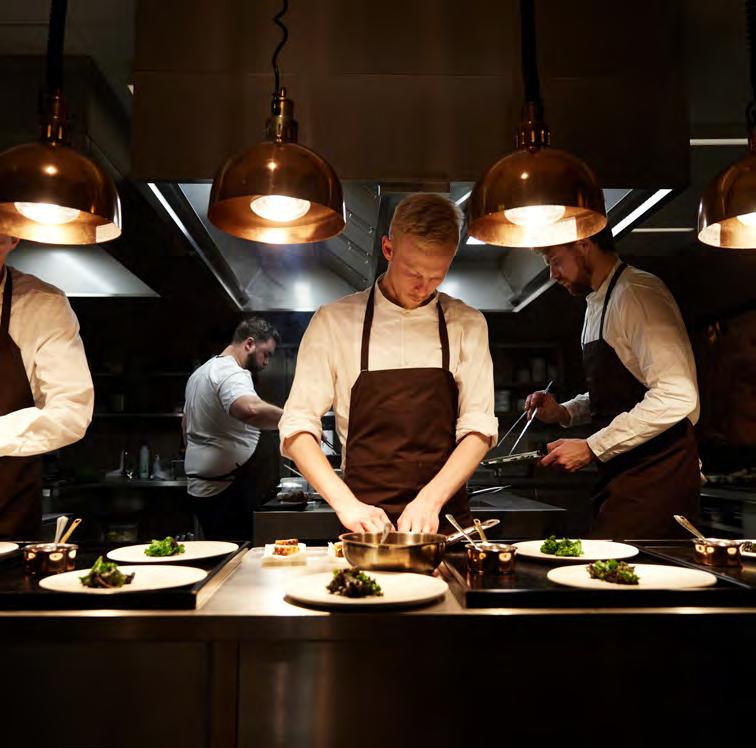
menu. I’m inclined to understand why, but is it Danish? At this point, I’m beyond caring. It’s an exercise in glorious simplicity, bold fish cookery and bloody gorgeous flavour combinations.
Poussin with foraged chanterelles and golden corn kernels rounds off the savoury courses and returns my taste buds to the forests and farmlands, before we finish with a thoroughly nordic whack of fresh wild berries and cream.
Grandiose yet refined, opulent yet precise, Marchal undoubtedly deserves its place on any foodie’s must-visit list when in Copenhagen, and highlights the importance of tradition as a foundation from which to take your diners on flights of opulent fancy.
Onwards, then, to STUD!O.
The recently opened restaurant is positioned in a curious cubic wooden unit in Copenhagen’s spanking new ‘Carlsberg City’ neighbourhood, which has seen a dramatic reimagining of the Carlsberg beer factories and headquarters into a decidedly sleek and vibey corner of town. It’s an imposing quarter - Carlsberg founder J.C Jacobsen was a notorious eccentric and esotericist, and this very, very much comes across in his architectural choices. The gateway to Carlsberg city is flanked by two enormous stone elephants, each emblazoned with giant
swastikas - a nod to his fascination with Indian mysticism.
It was the 1880s. They were different times.
Sitting in the centre of Carlsberg City, STUD!O
“Seated at the chef’s table in front of an almost-silent open kitchen, I watch Sorenson and his small team whip up course after course of sheer wonderment, plated to perfection.”
Michelin-starred restaurant embodies his belief in the importance of sustainability, zero waste credentials and local, foraged and seasonal ingredients with real panache, offering a regularly changing 13-course tasting menu providing a powerhouse of flavour and theatrics.
No doubt about it, this is dinner with a show. Seated at the chef’s table in front of an almostsilent open kitchen, I watch Sorenson and his small team whip up course after course of sheer wonderment, plated to perfection. I’m not prone to superlatives when it comes to restaurant reviews, but it really was incredible; a choreographed performance of how to eke out intense flavours and provide powerful contrasts from often very humble ingredients, all while evoking what makes this part of the world unique with each and every serving.
Highlights of the tasting menu included achingly soft Bisserup trout served with smoked cheese and ‘flash brick weed’ (my best guess? A sort of shredded seaweed biscuit), celeriac with fermented honey and golden chanterelles, oysters and blue mussels with beach-foraged herbs, pollack with smoked butter, and a pièce de résistance in the form of pressed veal tongue with hemp and hedgerow berries.
It’s become something of a flex for menus offering tasting menus to serve a bread course, and they have a habit of either falling flat or being an unwelcome bulky addition to proceedings. STUD!O’s bread course, however, had me literally reaching for more - I watched my designated loaf rise and build a golden crust in the glass-fronted oven a couple of feet in front of me, and it was served with the kind of whipped butter I’d gladly bathe in. Wow.
The inventive veered almost into the bizarre with the addition of walnut ice cream with pine needles and caviar, but Sorenson is a man who takes his risks in calculated fashion. It was a glorious combination, boasting aromas reminiscent of coastal forests, and one I’d leap at the chance to have again. Smoked vanilla with wild blueberries, and - teetering on overkill - a selection of seven beautiful petit fours bring the show to an impressive finale.
is the brainchild of Christoffer Sorensen, a young chef who hit the gastronomic headlines for winning the coveted Michelin young chef award in 2021. Sorensen is a remarkably talented young man with a razor sharp vision for what he feels the next leap in Copenhagen fine dining needs to be. His small but dynamic
Christoffer Sorenson is a serious-faced chef, his steel-blue eyes rarely wandering from his station piled with edible flowers and micro herbs. However, after I was served his dish of squid with roasted chicken skin and fermented cucumbers, I caught him watching to see my reaction as I raised my fork to my mouth.
“Yes?” he asked.
“Fuck yes.” I replied. What more could I possibly say?
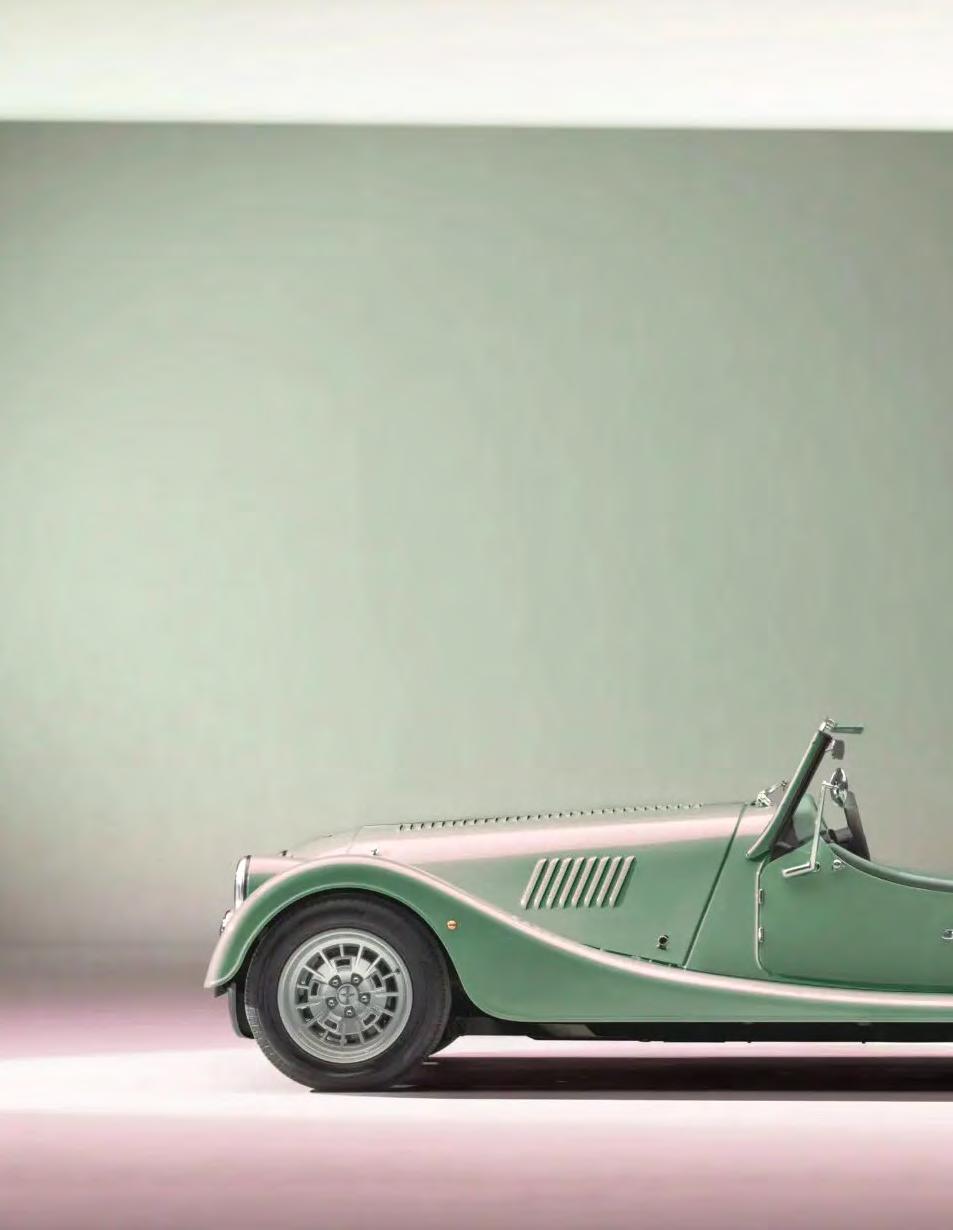
Words: Aaron Edgeworth - Motoring Editor
Morgan has always held a special place in my heart. Mainly because it held a special place in my father’s heart. Now, I have never really delved into the reasons why it was a marque of repute with him, but this editorial led me to ask exactly that question. More of that later. It also got me to thinking that, before the encyclopaedic knowledge, the access, the deep-seated passion had really taken root, I kind of didn’t need to know his reasons even as a child. I just got it. Like, I could look at a Morgan and see why he liked it; I could see why they were special. A Morgan is, at its essence, a car that has changed so little in both form and function and until recently, had always eschewed the modern-day trappings both mechanically and internally.
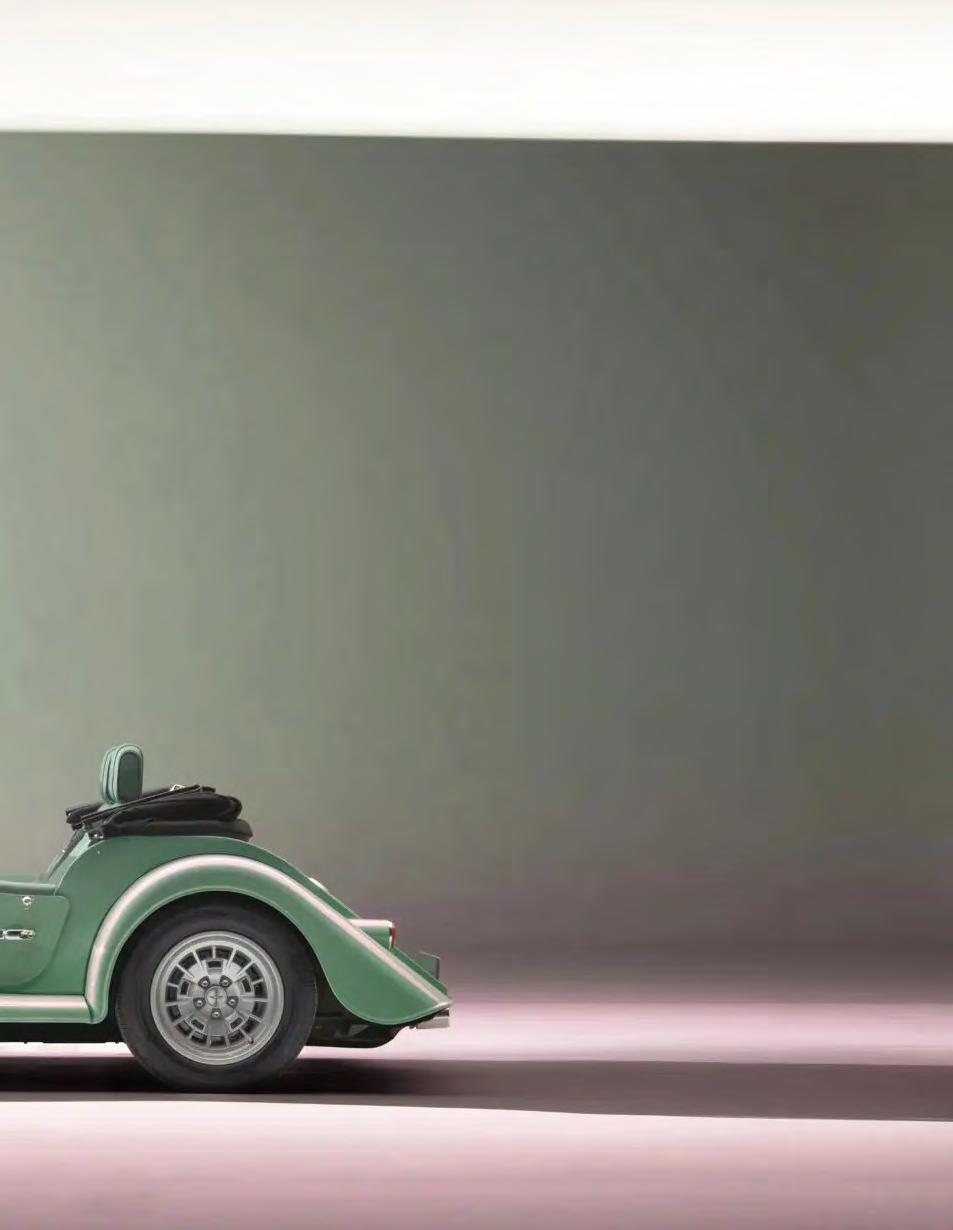
Adesign originally penned way back in 1950, the Plus Four (or previously, +4) has a long and storied history besides the Prince-esque change of name. Originally constructed from an ash and steel construction, since 2020, it has taken the contemporary form of ash bonded with aluminium. The engine is BMW taken and is the same engine that saw such success in the ‘hot’ hatch segment with the M135i.
I was in Greece attending a wedding when the car itself was delivered by my commanding officer, Managing Editor Peter Robinson. That meant I missed the brand tour and background provided by those lovely chaps up in Malvern. That the experience centre and new factory sit basically on the same site as the old adds somewhat to the mystique surrounding the brand.
There is the longest possible story attached to why I was ferrying the communal Nissan Note back to Gloucestershire. It’s mostly one that concerned the HORRENDOUS aftersales and service that seems to be the norm at both Mini and the Berry Group, but, a year off the road later, I digress. Anyway, serendipity - or Berry’s
inability to do their job - meant that I was in the position to head west and return in the Plus Four. Two hours behind the wheel beckoned. You had me at Plus Four.
First things first. As with most other things that I come into contact with on four (and now two) wheels, I like to survey the metal before me and take in some of the elements at first sight. The Morgan could have had me going over the various aspects of not only the design, but the supremely well specified example, for at least a breathless week. Given the sheer depth of options available nowadays, Morgan being no exception, to bring together such a cohesive end product is no mean feat. Doff of the cap number one.
The car supplied was presented in Verde Zeltweg, a darker hue than British Racing Green, but still light enough to allow cast shadows to reveal the curves, kinks and lines of the body shape. A matt stripe graphics pack is successful in its shadow-like qualities, as anything brighter may have come across garish. And whilst I would usually lament anything other than silver wheels, be it wire, alloy or otherwise, the dark grey wire wheels in conjunction with the other exterior options come together in a fierce form. It’s almost military in its smart casual livery, and the functional elements of the build are still finished to the highest quality. Take, for example, the knobs used to tighten in the removable door panels. They are milled aluminium, turned with a diamond pattern,and they feel as good under finger as they appear to
the eye.
Moving into the cabin, likewise, the fit and finish is superb. Commensurate to what I realised was a circa £98,000 list price. The dash was painted in the same Verde hue as the exterior, and the leather and carpets were shod in black leather and wool respectively. All very lovely, all simply charming.
However. Yes. However. There are a couple of anomalies in the build and design, that, to me, simply beggared belief. Ok, so the first is perhaps overly harsh, but that is one hell of an inelegant solution to a folding roof mechanism. Seriously. The number of times that I either caught my finger, or the opposing bracket slipped out, or I simply didn’t know whether the roof was securely fastened… well, I lost count.
The second, I say with a shudder, actually comes in two parts. The first, less severe: the digital centre dash display. It provides gear information, drive mode and speed, if selected. Now, useful as that may be, if one is to throw a screen into what is otherwise a very traditionally adorned cabin, then - for all that is holy - provide information. Hell, chuck in CarPlay. My point is this, in this day and age, if you are going to concede the need for a screen, then just embrace it. Make it functional rather than adorning one’s dash with the automotive equivalent of an etch-a-sketch. Part two? The gearstick. Oh my *insert expletive and deity of choice*. Lifted straight from the car that lent the engine, a 1 Series BMW, in all her strangely angular plastic goodness and just like they used to do in the forties. Nostalgia, innit? I hated it. Still do. It just seemed so out of place given the care taken elsewhere. How long would it have taken to fashion one from wood? I’ve seen woodworking videos on YouTube and I’m


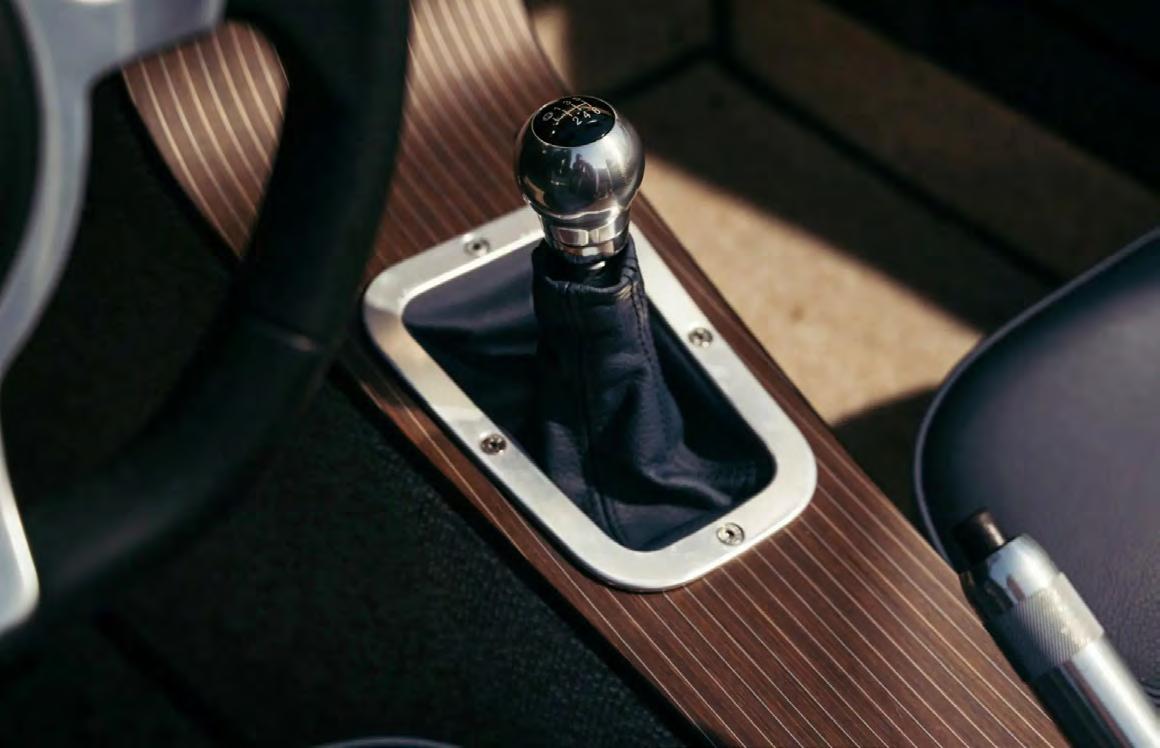
convinced it could not have been that hard. But I don’t work wood and I don’t make cars, so hey, I may be wrong.
So that’s my initial two pennies worth, for, well, whatever that’s worth. What would the Morgan offer other than an addition to my sartorial armoury? As I said, my erstwhile and esteemed editor had done the collection duties and initial days in the car, so my time would not be brief, exactly. Truncated, perhaps. That meant that I would need to fill as much of the remaining sand in the hourglass behind the wheel to really ascertain how these things tick.
Making use of that BMW drivetrain does have some benefits, countering the obvious offence taken with the gear stick. The unit itself is a strong one; a turbocharged four pot, she is good for 255 bhp and 295 lb ft of torque - 400Nm in new money. In a car that tips the scales dry at a smidge over a ton, those figures aren’t to be sniffed at and they power the classical silhouette down the road to 62 mph in 4.8 seconds. I bemoan that speed these days has become too cheap and accessible, and whilst the ‘cheap’ may not be applicable here, the speed certainly is; every part of that 4.8 seconds felt as it probably did fifty years ago. Utterly scintillating. The car leaps forward and has an engine and exhaust note like very little else on the road.
As one scrolls through the modes only to settle inevitably on Sports + and the gearchange to manual, one is conscious that these may be the only signals, obviously bar screen and stick, that the car underneath is a modern representation of the product. The deep warble of the engine provides a stirring backdrop to drives, and on the overrun the pops and bangs at first may seem slightly out of place, just like that gearstick.
After a while, however, they serve as the accents to the drive, the lilt of the journey, the sing song to the progress. They can alert people to your arrival in the village, echo deeply between city buildings and float across the fields and landscapes the country wide - each scenario seeming more perfect than the next. That’s because the Plus Four doesn’t seem out of place anywhere and, I guess, one could remark that’s central to what makes it timeless. To some degree I think that is true, but that the engineers up in Malvern have seen the benefit and necessity of progress and evolution, and have taken all that requires and all that is available to create a product that - dynamically, at least - is leaps and bounds ahead of its predecessor. A car that nods to heritage, but is very much made in modernity. It’s a task that is far from simple.
My time with the car, after that initial journey back from West, was punctuated by a couple of necessary events and one day committed to filming with the car.
One event saw me attend a media launch for another car manufacturer. Never fear, they are so far apart in the automotive ecosystem that no offence was meant or taken. The address for the shindig? The Rosewood Hotel in Holborn, London. For those of you who haven’t had the pleasure, the Rosewood occupies an enviable position in the heart of central London, her crown jewel being a wonderful private courtyard entrance. This entrance takes one from the hustle and bustle of Fleet Street into an oasis of calm, but one not resplendent with car parking spaces (as is the case on the surrounding streets). There was no doubt in my mind, however: dress well enough and the car will do the rest.
Once I had fulfilled the initial issue of my own dress, the latter issue of parking, just as predicted, took care of itself. I rolled through the arch on a surprisingly sunny London day to be met with the now ubiquitous pairing of S class and V class occupying both the hotel’s available bays. Doorman, upon first glimpse of the Morgan, knew exactly what was required of him next. I was sent on a brief lap of the
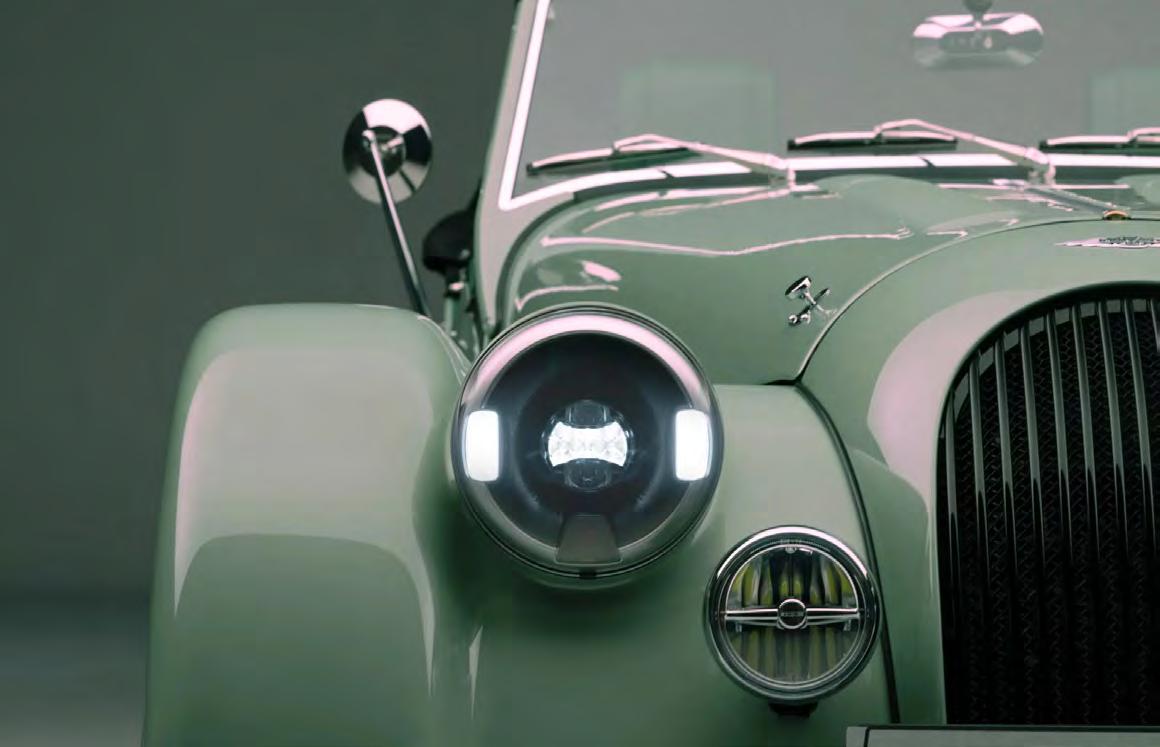
black whilst negotiations took place, but let’s just say on my return through the arch, I was presented by not one, but both spaces… as if my parking skills would require it. I reversed the Plus Four into the sun dappled bay and knew that she was the star of the event - not me, and perhaps not even the product we were there to see given how much the conversation post-lunch concerned my car, and not theirs.
The second event was attended alongside my editor: a launch by the equally massive English institution that is Dunhill. Elegance would dictate that there was only one choice of chariot. It takes a fair effort for me to eschew available free alcohol, but a balmy London night driving into and out of town seemed nothing less than idyllic. Whilst Pete and I wondered over the splendour that was the Gentleman’s Accessories Compendium, part of my mind was already listening to the turbo chatter and pops of the exhaust due to arise on the way home. With another nod to modernity, the use of a Sennheiser stereo system means occupants have the choice of the wonderful exhaust note, or their own choice in music, which a range of hidden speakers pump into the cabin with clarity and force. Testament to my unbridled
joy seen in the Plus Four, the speeding citation received shows - at least to some degree - the fun that I experienced behind the wheel.
My final sojourn in the Plus Four involved a day in the wilds of the Cotswolds. Again, to aid those not in knowledge of the area, think quintessential English countryside villages. Think farms. Think tweed. As it turns out, think Morgan Plus Four. During my day in the country, I saw another three Plus Four out and about in what appears to be their natural habitat. In my days in London, I didn’t spy another. I did however in those two days see a Ferrari LaFerrari Aperta and a Porsche Carrera GT. I am not claiming to know much about desirability and/or exclusivity, but as remarked earlier, I do know how to count. The necessary wave of appreciation, light flash or horn toot (to one driver I think I managed the triumvirate) was given with gusto.
Days filming can often be long arduous occasions. This was a day I revelled in each opportunity I had to reshoot a pass, try again down that long straight, or get that turn in just right. Hell, for once I was the one demanding more, asking for another take, and not just
for the ones where I may have looked slightly paunchy. The car was faultless, another aspect of modernity that certainly isn’t to be sniffed at. The balance of nostalgia only goes so far when one is at the side of a road nursing an engine that seems to be quaffing fluids like a prime Oliver Reed. Methylated or otherwise. Here, not a warning light, puff of smoke or even the suggestion of a rattle.
What to say of the Morgan Plus Four? She was tight, precise and eminently engaging. Something that cannot be said of many a more contemporary product. It is a car that is certainly a choice, and a discerning one at that. Some may lament the cost versus many other products. German speed can be had at a mere fraction of the cost. Some, like me, will rage into their pillows at night over the abhorrent gear lever. But for many, this is the zenith.
This is what motoring was always meant to be about, and with the foibles of age now a thing of the past, the Plus Four is like Don Ameche in Cocoon, slightly wizened by time but possessing all the energy of one decades younger. I for one, hope I age as well as the Plus Four. My appetite for the Six has been whetted.
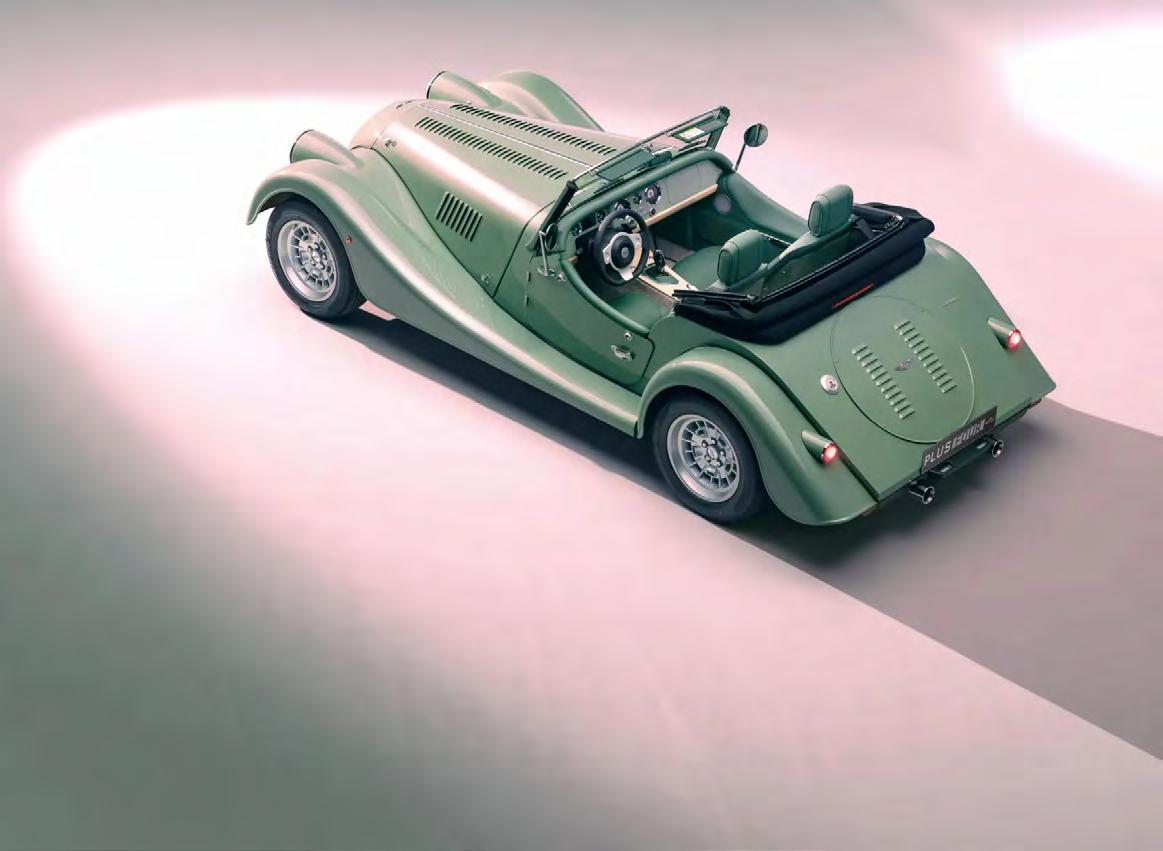
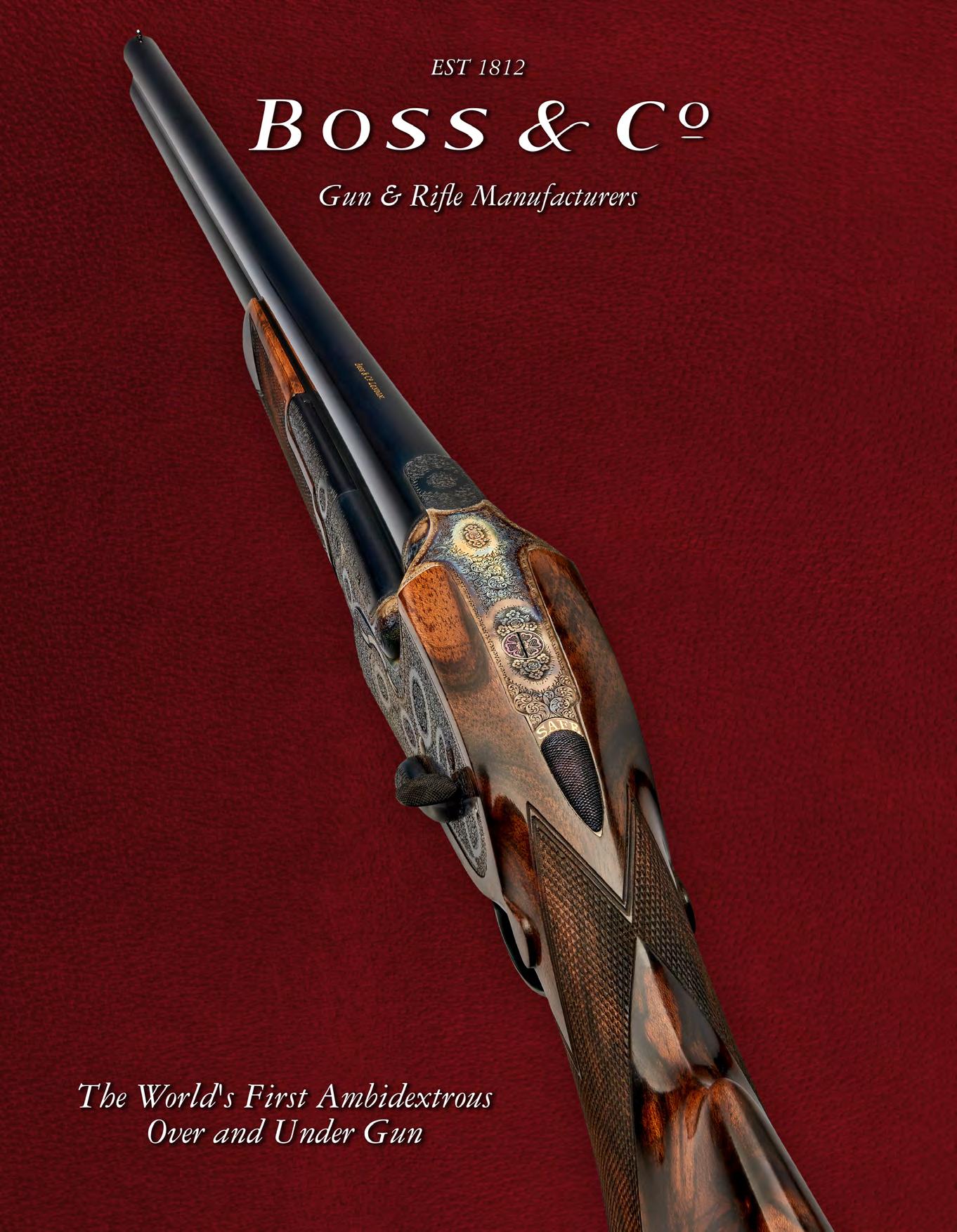
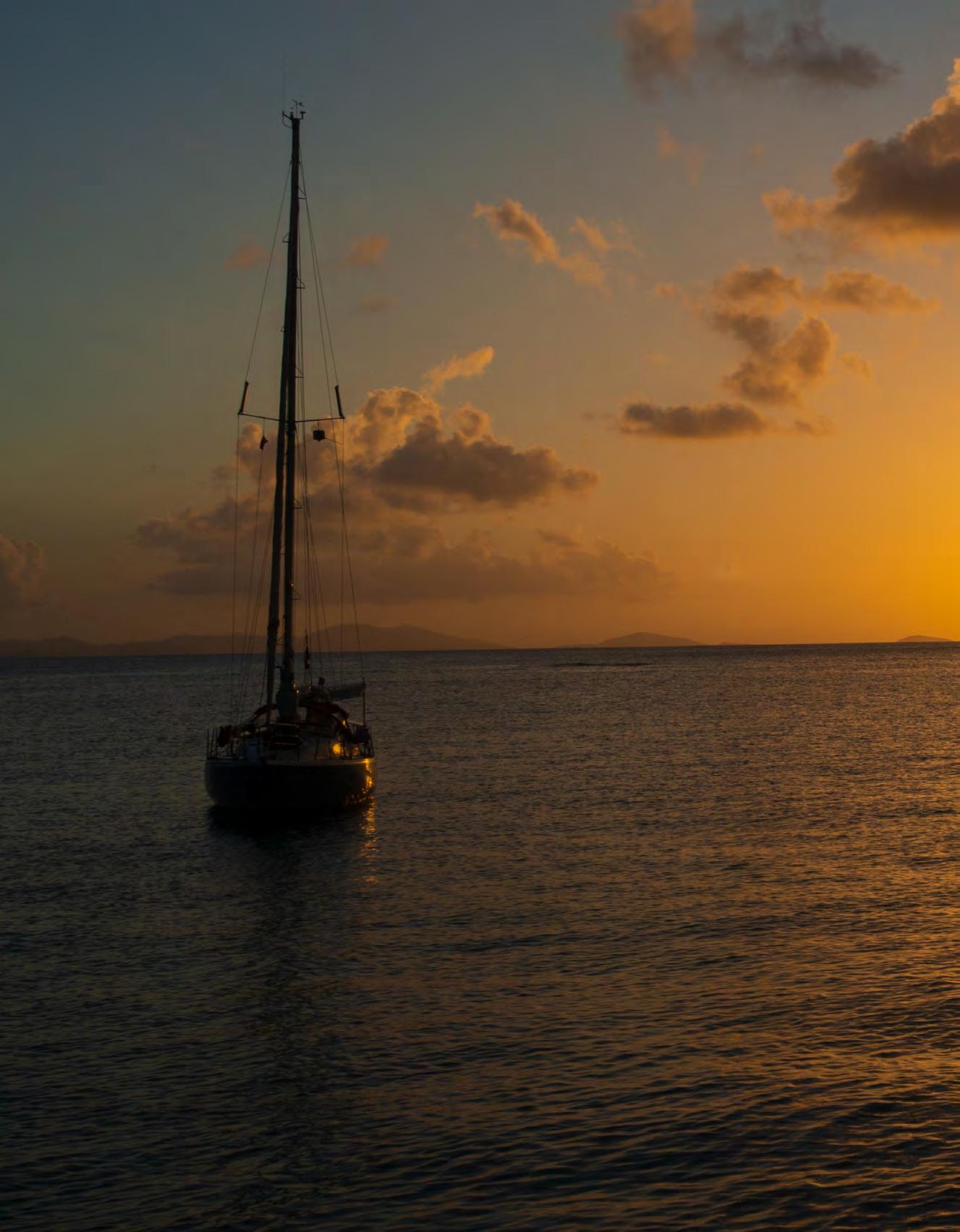

Words: Peter J Robinson - Managing Editor
Charting a course with The Moorings’ 403PC as both vessel and vantage point - this is a trip unbothered by timetables and defined by tides, as sometimes the most faithful travel companion is actually the wind itself. It’s a story of anchorages more than destinations, of shoreline rituals, seasoaked afternoons and the kind of quiet only found offshore. Join Peter Robinson as he drops anchor in some of the BVI’s most storied bays, snorkels through kaleidoscopic reef tunnels, dines beneath palms at beachside kitchens and trades tales with fellow mariners over rum and reef-fresh lobster.
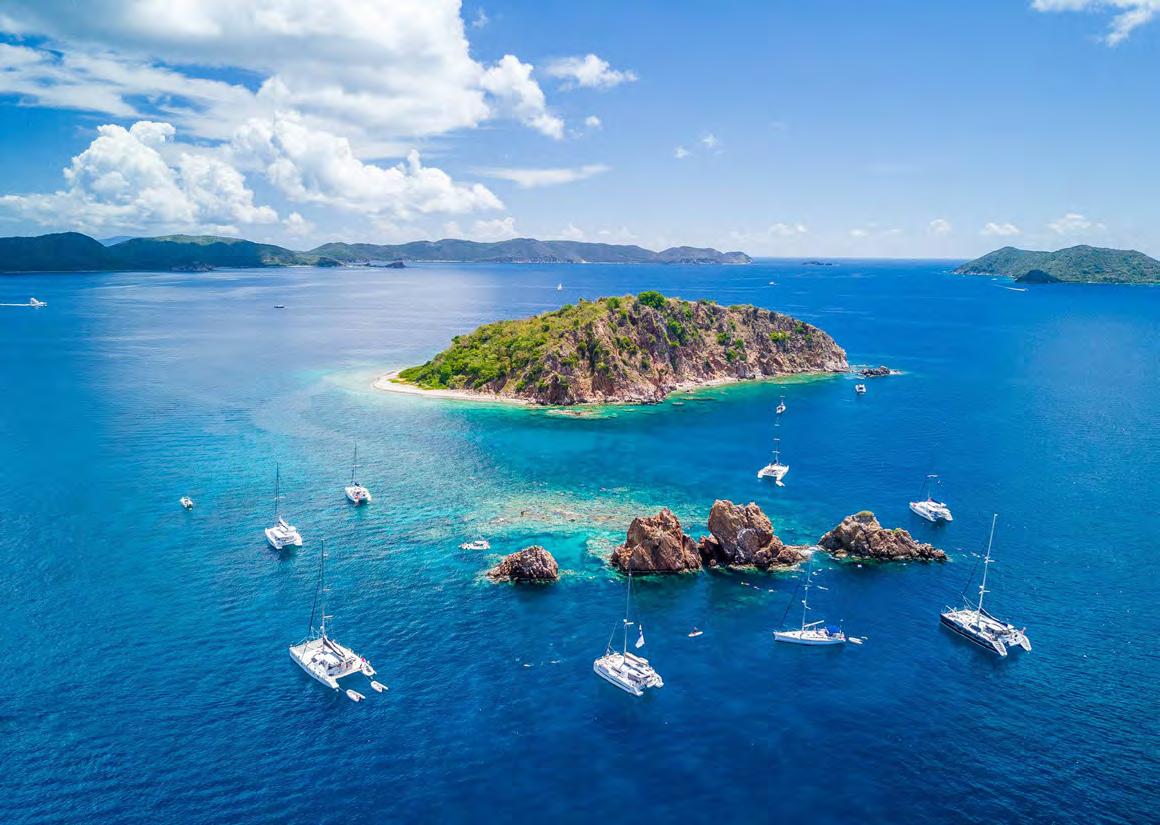
The outbound Virgin Atlantic flight from Heathrow to Miami was an almost surrealistically empty leg. I took a row of window seats and settled in for the switch-off. A few hours later, arriving at Miami International Airport felt like being thrust into a sprawling shopping mall—vast, chaotic, and surprisingly sparse on refined spaces for relaxation. For travelers accustomed to lounges and intimate airport bars, navigating Miami’s endless concourses can test even the most patient. Each year, approximately 50 million passengers pass through MIA, with over 400,000 flights taking off annually. Monorail anyone? While travelers to the BVI have options via Puerto Rico, St. Thomas, or Antigua, the direct Miami route was efficient for me, offering a manageable nine-hour, 30-minute flight, augmented by whatever I could charm from accommodating flight staff.
My stay in Miami was brief; just an overnight respite before continuing on to Beef Island. Energised by traveling again and a few residual in-flight G&Ts, I decided against a quiet evening at my airport hotel. Obviously.
Instead, a short cab ride to Miami’s vibrant nightlife led me to Balans, where I met Julian
Sahut. Julien is a distinguished sommelier with over a decade of experience in the wine and hospitality industry, and has garnered acclaim for his expertise and contributions to the field. As Head of Wine at Sexy Fish in both London and Miami, he oversees an impressive collection of over 1,000 wines and approximately 230 Champagnes. For those fortunate enough to find themselves with an evening to spare in Miami, a visit to Sexy Fish and a conversation with Julian is indispensable. I’m reliably informed the food, though perhaps overshadowed by the wine selection, is similarly spectacular.
Feeling a little dazed the following morning, I returned to Miami Airport for the three-hour flight into Terrance B. Lettsome Airport bound for The Moorings base on Tortola.
The Moorings’ premier base lies in Road Town, Tortola, a 15-minute scenic drive from the airport. Founded by Navy veteran Charlie Cary and his wife Ginny in 1969, The Moorings offers bespoke sailing experiences across more than 20 stunning destinations worldwide. The company was built based on a genuine passion for sailing and upstanding customer service. In 2024, the company announced a significant
investment of over $100 million to acquire 160 new yachts, expanding their fleet to 750 premium vessels. This expansion includes a partnership with Dufour for 50 monohulls and the addition of 110 catamarans from Robertson & Caine, enhancing the variety and quality of their offerings. Additionally, The Moorings has introduced power charters in Dubrovnik aboard the Moorings 403PC, providing guests with new avenues to explore the Adriatic Sea.
Our vessel was indeed a 403 PC Cat. Sleeping six comfortably in three luxurious cabins, this dual-hulled beauty offered exceptional stability—a blessing during occasional Caribbean squalls. Multihulls, with their expansive beam and twin hull design, are especially appealing for those new to sailing, minimizing the motion experienced in rougher seas. I am just as happy sleeping in a hammock on deck, truth be told.
It’s entirely up to you whether you opt for a bareboat charter or take a slightly larger vessel and add a live-on skipper and chef. Our skipper Shem joined us at the marina to take us through the safety briefing and discuss the all-important provisions run as we opted to don our chef’s whites aboard.
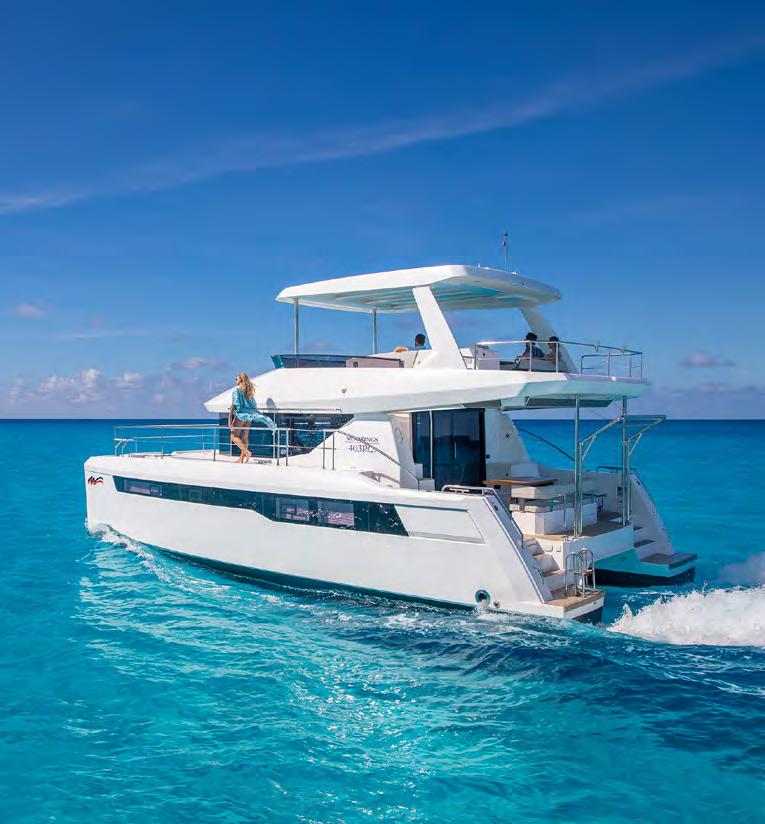
In my opinion, part of the experience of sailing or motoring is picking up provisions from port to port. The onsite Moorings Market has everything you might need, from fresh fruit to high-grade rum. If you’re early enough and send your shopping list in advance, they can also arrange a delivery for you, like any marina. After a thorough safety briefing and provisioning run, we set out from the marina around sunset. Cocktails flowed as we made a leisurely passage southeast of Colison Point, off Virgin Gorda, dropping anchor just as the sky painted itself in shades of pink and gold.
The evening concluded at CocoMaya, nestled idyllically south of Fichers Cove Beach. Its palm-fringed setting, glowing fires, ocean vistas, and the soothing sounds of the Caribbean surf provided a more than satisfying backdrop. Portions were notably generous; their menu features a variety of Asian and Latin fusion dishes served family-style, encouraging sharing. The restaurant also offers private beach dinners with chef’s tasting menus, which your skipper will be happy to book in advance.
The best part of living aboard is that, when you’ve finished dinner, you can retire to your yacht and continue into the evening, bound
for a late finish. All that remained was to argue over control of the boat’s Bluetooth till the small hours, uninterrupted beneath starlit skies.
After morning coffee we set sail for the eastern end of Virgin Gorda and The Bitter End Yacht Club whilst desperately trying to get the Grand National on BBC World Service. ‘The Bitter End’, established in the 1960s by the Hokin family, is nestled within a sheltered bay renowned for its remarkable natural beauty and biodiversity. Local lore claims that the bay earned its evocative name due to sailors reaching this serene refuge as their ultimate ‘bitter end,’ exhausted from their voyages, yet captivated enough never to leave. The location maintains its legendary allure, regularly hosting international sailing legends and adventurous celebrities seeking solitude and inspiration.
Directly in front of the resort, approximately 70 mooring balls are available, with 15 or so that can be pre-booked by contacting the resort directly. The remainder operate on a first-come, first-served basis. As you navigate through North Sound with its steep, lush hillsides, you’ll spot the marina masts in the distance.
The market is a convenient stop for provisions, and you can find fresh produce grown locally at the resort. The Quarter Deck has everything you need, from catering to casual snacks to fine dining. We settled in for lunch on their beachfront deck, ordered cocktails and took in the panoramic views. Try the fresh ceviche, grilled mahi-mahi tacos, and their signature lobster salad.
The Bitter End once again returns as the perfect place to stop before heading off to Anegada, as the North Sound offers a good angle for sailing in the Northeast trade wind.
We inevitably ended up browsing their gift shop for essentials—like yet another dry bag to add to the ever-growing collection no one seems to remember to pack. The afternoon on the beach was spent in hammocks and laying out on the sand before returning to the boat to moor for the night off Prickly Pear Island. As we all watched the sun come down from the top deck, transfixed on the horizon, we knew there was no leaving the boat tonight. My last memory was watching a lively group on the shore a few hundred metres away light a bonfire and what seemed to be worshipping coconuts (Wilson?).
In the mornings, when the deck was finally quiet and calm, I would sit and look out across the bay, coffee in hand. Watching the Windsurf foiling guys cutting through the water so silently, whilst the Frigates fished for breakfast, were stolen moments of peace. I couldn’t help but wonder what reckless abandonment had taken place on the beach the night before. So I decided to take a morning dip and swim to shore. Little remnants of the party remained, tightly positioned logs around a sizeable open fire (and no rubbish in sight because, thankfully, some people get it). After taking in the view from the shallows and exploring as far as one can barefoot, it was time for breakfast. Except for a few rather fetching-looking coconuts, the beach seemed entirely deserted. I took one as a prize and swam it back to the boat in search of rum.
Having made landfall at Guana Island later that afternoon, we savored our modest maritime bounty of coconut mixed generously with Mount Gay rum. Cooking aboard any yacht is either a communal effort or one you can happily delegate to a chef. Each port offers distinct local flavors, the usual American suspects and the occasional unexpected delicacy. Sailing in these waters is always a nuanced game, intricately dependent on shifting weather and seas. Earlier that morning, passing the famous Baths, the beach was sadly off-limits due to choppy conditions. Ever adaptable, we heeded Captain Shem’s advice,

deciding instead to anchor in calmer waters off White Bay for leisurely afternoon cocktails, comforted by the knowledge that flexibility is a luxury unto itself in these islands.
One of the true luxuries of yacht charter for me is the flexibility it affords, especially when it comes to dining. While Marina Cay Bar and Grill was our initial plan and had been privately hired, we gracefully pivoted to Marché At Trellis, indulging in sushi, tacos, and a decent bottle of wine. As the wind strengthened and the beach lanterns began their dramatic dance— reminiscent of a scene straight out of ‘Sleeping With the Enemy’—we appreciated the unique
“As the brand encompasses so much history, there were boats from all eras of production and across all sizing classes.”
advantage of yachting. With dinner conveniently boxed, we left the rather empty restaurant and shifted the dining venue from shore to deck, a testament to the unmatched spontaneity and ease of travel by sea.
The following day, after collecting supplies at Trellis Bay Market, we set our sights on Jost Van Dyke, one of the most beloved yet still delightfully untamed islands in the BVI. Named after the legendary Dutch pirate reputedly active in the area, Jost Van Dyke offers a rugged charm and storied past. White Bay, known for its famously lively beach parties, acts as a magnetic hub where revellers arrive by boat to enjoy its renowned bars like the legendary Soggy Dollar. It’s known for creating the Painkiller, I am told. Yet, as quickly as these crowds gather, they disperse by evening, leaving behind only a handful of moored yachts and visitors in the island’s serene, scattered residences. Our group arrived as the sun set, opting to embrace the tranquillity unique to yacht travel. We relaxed onboard, taking in the spectacular panoramic views of St John and Tortola, leisurely cooking dinner, and quietly contemplating the spectacle of daylight fading gracefully into night. Indeed, each traveller defines serenity differently, and this quiet, reflective evening proved to be ours.
In the cold light of day I could take in the actual majesty of our surroundings. The cove was fringed in the whitest white sand, enveloped in a neon bath of warm Caribbean water. I was told that the eastern beach was far less crowded, as it is lined with only a villa or two as well as Ivan’s – a beachfront budget hotel. The western side is the main attraction, though the sand on both parts is equally silken. Preferring to keep my morning calm, I opted to swim to shore, dry bag filled, in search of lunch. It turns out Ivan’s Stress Free Bar serves a top-shelf Jerk Chicken Mango wrap and a cold beer. It also had low occupancy, which was my speed for this trip.
As golden hour once again delivered its light show, we arrived at Cane Garden Bay. Nestled along Tortola’s lush northern coast, it’s a crescent of sand that has, over the years, played host to calypso kings, barefoot poets, and mariners chasing one last rum. With the golden hour gone, we swam ashore, dry bag in hand. I am positive captain Shem thought we were all mad. We drifted between Myett’s Garden & Grille—with live music wafting through the palms—and the open-air terrace of Paradise Club Lounge, where DJs were warming up for various club nights.
Despite its festive reputation, the bay’s rhythm felt muted at first—just a few locals and early arrivals sipping Caribs. We flagged a cab and cut across the island on Shem’s suggestion, arriving at a tucked-away Marina bar. Somewhere
between the second and third venue, we paused along the roadside to take in the sound of a local high school marching band rehearsing. It was the kind of unfiltered moment that reminds you there’s more to these islands than their beaches—some kind of daily life beneath the hedonism.
The following morning, we charted a short hop to Sandy Spit, a pinprick of sand and palms just off Little Jost Van Dyke. Known to some as “Corona Island” (thanks to its appearance in a string of beer commercials), it’s the sort of place that looks as if it’s been photoshopped into existence—almost too perfect to be real. The shallows are deceptive, so while you can dinghy in with care, swimming ashore is far more entertaining. We did just that, beers in hand, wading through crystalline water to toast the morning on our own private dot of paradise.
Further along the eastern edge of Jost Van Dyke lies the Bubbly Pool, a curious geological quirk where waves from the Atlantic surge through a narrow rock channel, churning a natural basin into a cascade of seawater. You reach it by mooring off Diamond Cay and making the short trek from Foxy’s Taboo, the more elusive sister venue to the infamous Foxy’s in Great Harbour. The latter, of course, is home to the legendary New Year’s Eve bash—an annual bacchanalia that draws sailors from every corner of the globe. But even outside party season, the Bubbly Pool delivers a proper punctuation mark on a day of island wandering: remote, unruly and always rather affirming.
Dinner reservations secured at Pirates Bight, we navigated toward Norman Island’s sheltered anchorage known simply as The Bight. This crescent of calm water is a magnet for sailors, and no stop here is complete without a detour to the Willy T. Short for William Thornton, this floating schooner bar has achieved near-mythical status among the nautical set. Named after the architect of the U.S. Capitol Jost Van Dyke, the vessel has long since traded architectural drawings for cannonballs of rum punch and groups diving from its upper deck.
Aboard the Willy T, the energy is part theatre, part tradition—crew and captains mingle with curious tourists, music pulses from the speakers, and brave souls hurl themselves into the overcast sea below. Beyond its daily carnival of cannonballs and cocktails, the Willy T plays host to some of the BVI’s more colourful calendar fixtures. The Virgin’s Cup, held each October, is a spirited regatta in honour of the territory’s legendary women sailors. This is followed closely by the Interline Regatta, when airline crews from around the world descend on the islands for a week of sailing
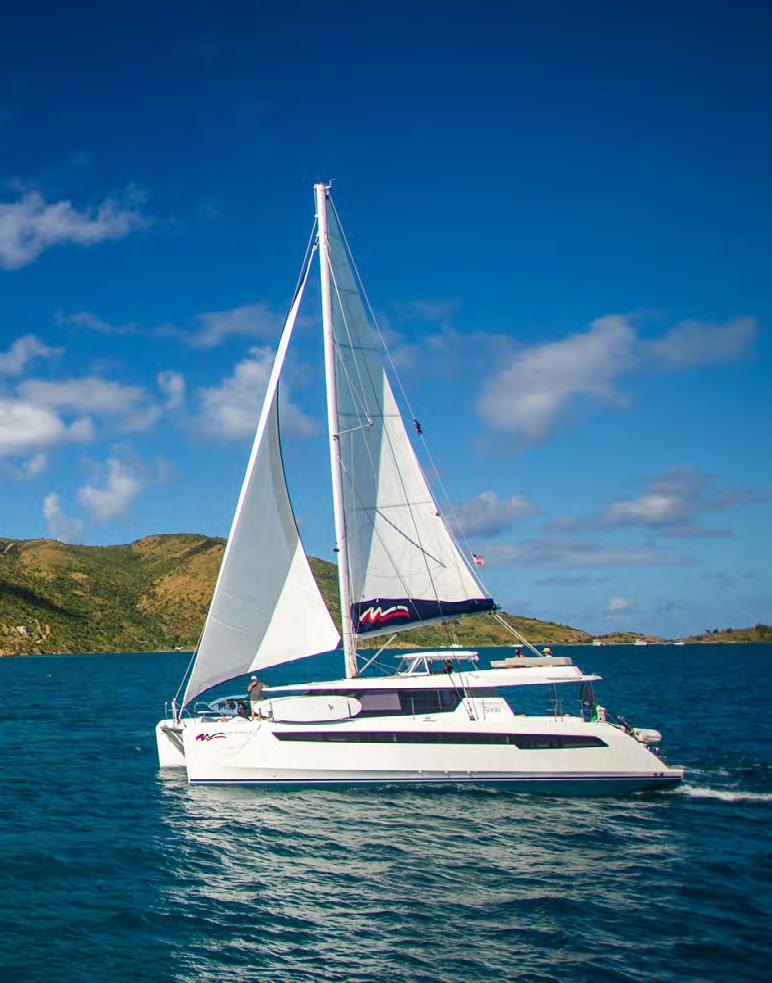
and shoreline revelry. Later in the season, competitive fishing tournaments turn this floating institution into a dockside clubhouse, where tall tales are swapped over cracked conches and one-too-many Painkillers. We exchanged pleasantries (and Painkillers) with a lively crew from New Jersey before making our way to the more composed tables of Pirates Bight, where fresh seafood and an open-air terrace awaited. The contrast, like everything in the BVI, was perfectly pitched.
The Bight is a well-trodden waypoint for seasoned sailors, offering over 100 mooring balls that hug the dramatic coastline of Norman Island. This 610-acre privately held isle—rugged, uninhabited, and flush with folklore—is ringed by hidden coves, hiking trails, and crystalline waters that make it a magnet for divers. Just offshore, The Caves and The Indians rank among the most celebrated snorkel and SCUBA sites in the Caribbean, with
plunging rock formations and coral tunnels teeming with technicolour marine life.
Norman Island’s literary fame as the muse for Robert Louis Stevenson’s Treasure Island is well-earned; its topography, riddled with secluded bays and pirate lore, lends itself to the imagination. But the historical reality is no less compelling—the island has long been rumoured to have sheltered privateers and hidden Spanish doubloons. Today, however, its treasures are culinary. Pirates Bight, the island’s singular restaurant, offers open-air dining framed by a sweep of white sand. The conch fritters come crisp and golden, the day’s catch is reliably fresh, and if the breeze turns favourable, the terrace transforms into a lively dance floor. The American contingent seldom misses a beat.
Another early start, fins in hand, we set out toward The Caves—an iconic snorkel site
carved into the western edge of Norman Island’s anchorage. Hemmed in by steep limestone cliffs, these partially submerged grottoes offer a cinematic backdrop to an underwater theatre of colour. Vibrant coral fans and soft sponges sway along the cave walls, while reef-dwelling species like sergeant majors, parrotfish and yellowtail snapper dart through shafts of sunlight that pierce the blue. It’s a site as inviting to first-time snorkelers as it is rewarding for those who know where to look.
For those drawn to deeper immersion, a short dinghy ride leads to the dramatic formations at Pelican Island, known locally as The Indians. Rising jagged from the sea, their silhouette evokes a feathered headdress, hence the name. Below the surface lies a technicolour maze: coral bommies, sea fans and a maze of swim-throughs teeming with blue tang, spotted trunkfish, wrasse, angelfish and flatworms clinging like delicate origami to the rock faces. The northeast side, fondly referred to as the “fish bowl,” is especially dazzling, but be warned: this exposed site is outside the protection of Norman’s inner waters, and the currents can sweep through with surprising vigour, rewarding those who plan their entry with care.
No voyage through the BVI would feel complete without a visit to The Baths—a geological marvel that manages, even through its fame, to deliver a sense of discovery. Perched on the southwestern tip of Virgin Gorda, The Baths is a sprawling natural sculpture garden where house-sized granite boulders rest like sleeping giants on sugar-soft sand. If you arrive early, and with the right captain, the place rewards you with an eerie stillness as though the island itself is pausing to exhale.
These cathedral-like formations are the result of ancient volcanic activity—molten rock that cooled slowly beneath the surface, hardened into crystalline granite, and eventually broke into the hulking, rounded shapes we see today as softer volcanic layers eroded around them.
The formations stretch southward toward Devil’s Bay, linked by a winding route of ladders, ropes, and shallow pools that invite you to climb, wade your way through their crevices.
You’ll find similar formations scattered at Fallen and Broken Jerusalem nearby, but The Baths holds the crown—part geological history lesson, part elaborate dreamlike playground. Arrive by water, swim in with a dry bag slung across your shoulders, and for a moment, forget the world beyond the boulders exists at all.
Dinghies must tie off at the floating dock line to protect the delicate seabed; from there, it’s a short swim to shore, dry bag slung over your shoulder like some amphibious courier. The designated swim line creates a buffer between moored vessels and the beach, adding a measure of calm to your landfall. On our arrival, however, the scene was uncanny in its emptiness. Aside from one American couple surveying the boulders, we had the entire place to ourselves. Even Captain Shem, not one to dramatise, was caught off guard by the absence of foot traffic. It felt, in that rare and fleeting moment, as though we had reached a peak.
Our final destination was a decent motor northeast to Anegada, the BVI’s anomaly—low, flat, and utterly otherworldly compared to its volcanic siblings. Rising a mere 28 feet above sea level at its highest point, this limestone and coral atoll feels less like part of the Caribbean and more like a mirage. It’s a place where the horizon blurs and the reef-strewn shallows flicker in every hue of turquoise imaginable. Encircling Anegada is an underwater world worthy of its isolation: a labyrinth of reefs, submerged caves, and wreck-strewn seafloor that tempts divers and snorkelers alike. Among the usual suspects—needlefish and parrotfish— you might also encounter bonefish, stingrays or the iridescent flash of a juvenile reef shark weaving between the shadows. Anegada may be geographically unassuming, but beneath the surface it tells a story few islands can match.
As this was our last evening in the BVI and the weather was starting to look a little inclement, we decided to stay aboard till supper and watch the last flashes of pink start to fade across the sky.
Potters by the Sea is the sort of salt-stained outpost where bare feet and war stories are more appropriate than dress codes and wine pairings. Like many of the BVI’s shoreline haunts, it caters to the sailing faithful—those who drop anchor not just for a meal, but for the ritual of it. Lobsters are plucked straight from the shallows and slapped onto torchwood grills, their shells hissing as the scent of char and brine fills the air. The drinks list is sparse and unpretentious—white or red. This isn’t a place for linen napkins or tasting menus; it’s a shoreline canteen at the edge of the map, where time slows, conversation stretches, and the sea is always within reach.
Chartering with The Moorings proved to be an effortlessly orchestrated entry into the rhythm of the British Virgin Islands. From the setup at their flagship base in Tortola to the confidence-inspiring presence of Captain Shem, the logistics faded into the background leaving only the joy of the journey. Our 403PC catamaran was faultlessly appointed, intuitive to crew, and stable across changing seas, making each anchorage feel like a private estate with a rotating view. From anchoring beneath the golden hush off Virgin Gorda, to sipping Painkillers aboard the infamous Willy T, the trip unfolded organically. We dove The Indians, navigated the cathedral boulders of The Baths, and capped it all with grilled lobster under torchlight on the surreal flats of Anegada.
Each stop offered its own vignette—part castaway fantasy, part mariner folklore. The voyage stitched itself together with sails, salt, and the sublime art of drifting just far enough off course. In the end, the only itinerary worth following was the wind.
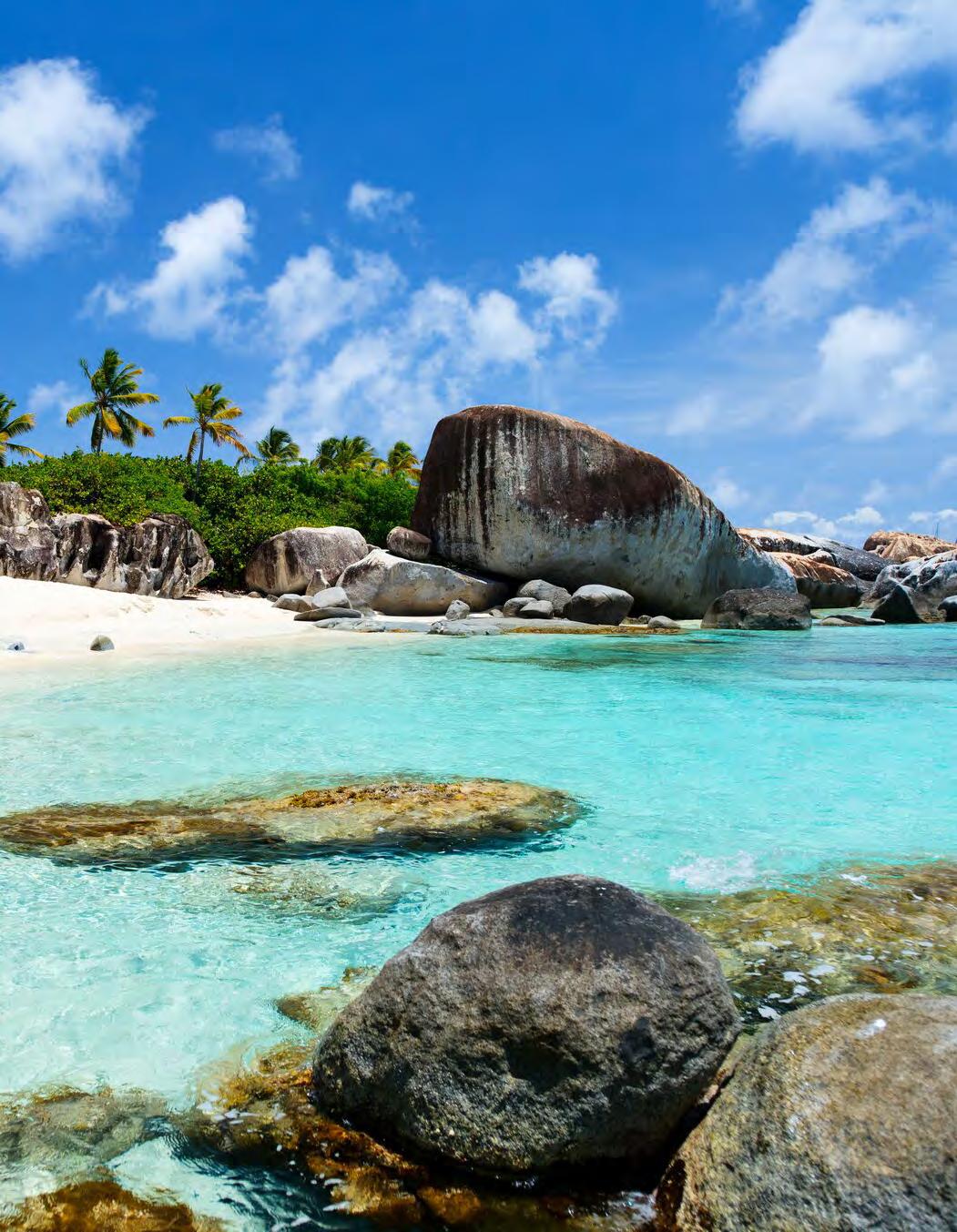

Words: Benjamin Norris - Lifestyle Editor
There’s an irresistibly distinguished history and appeal to pilot watches. It’s one which harks spectacularly back to the golden age of aviation; those magnificent men in their flying machines, all impeccably twirled moustaches and shearling bomber jackets, representing an era of lightning-fast technological advancement and exploration.
Pairing peerless style with functionality, today’s pilot watches continue to pay homage to those early innovations. While the pilot watches of the 21st century have vastly superseded their original intended purpose (they’re certainly no longer the exclusive property of military aviators or airline captains), they continue to inspire individuals with jet-setting ambitions and intrepid intentions.
To wear a pilot watch in 2025 is to send a clear signal; one of borderless sophistication, international aspirations and a particular blend of sleek elegance and rugged masculinity. With razor-sharp accuracy and adventurous bold, and eye-catching appearance, it’s no wonder they’ve never truly fallen from fashion.
Worthy of a place on any sincere timepiece enthusiast’s wishlist, let’s take a close look at the following selected pilot watches and their most recent iconic iterations.

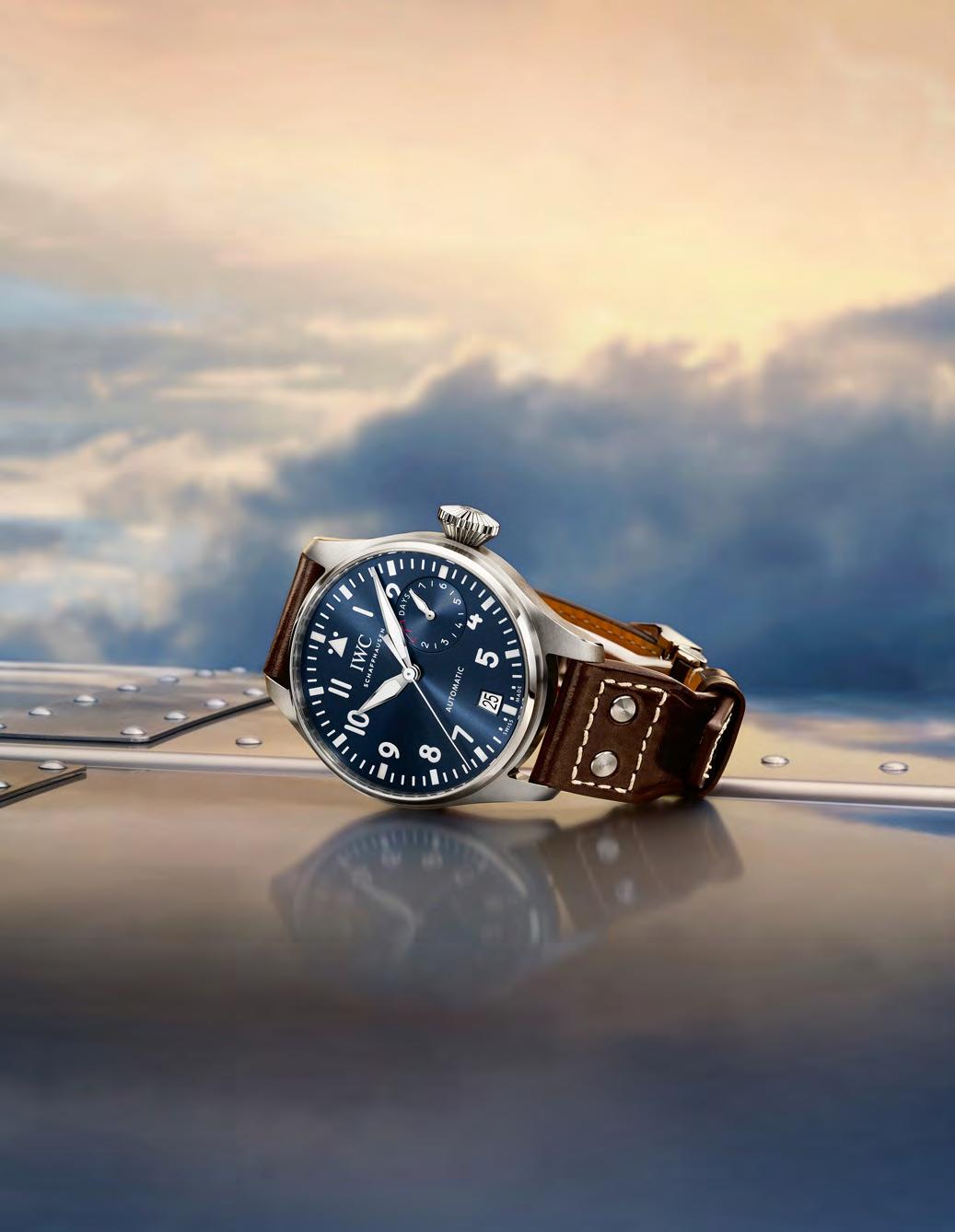

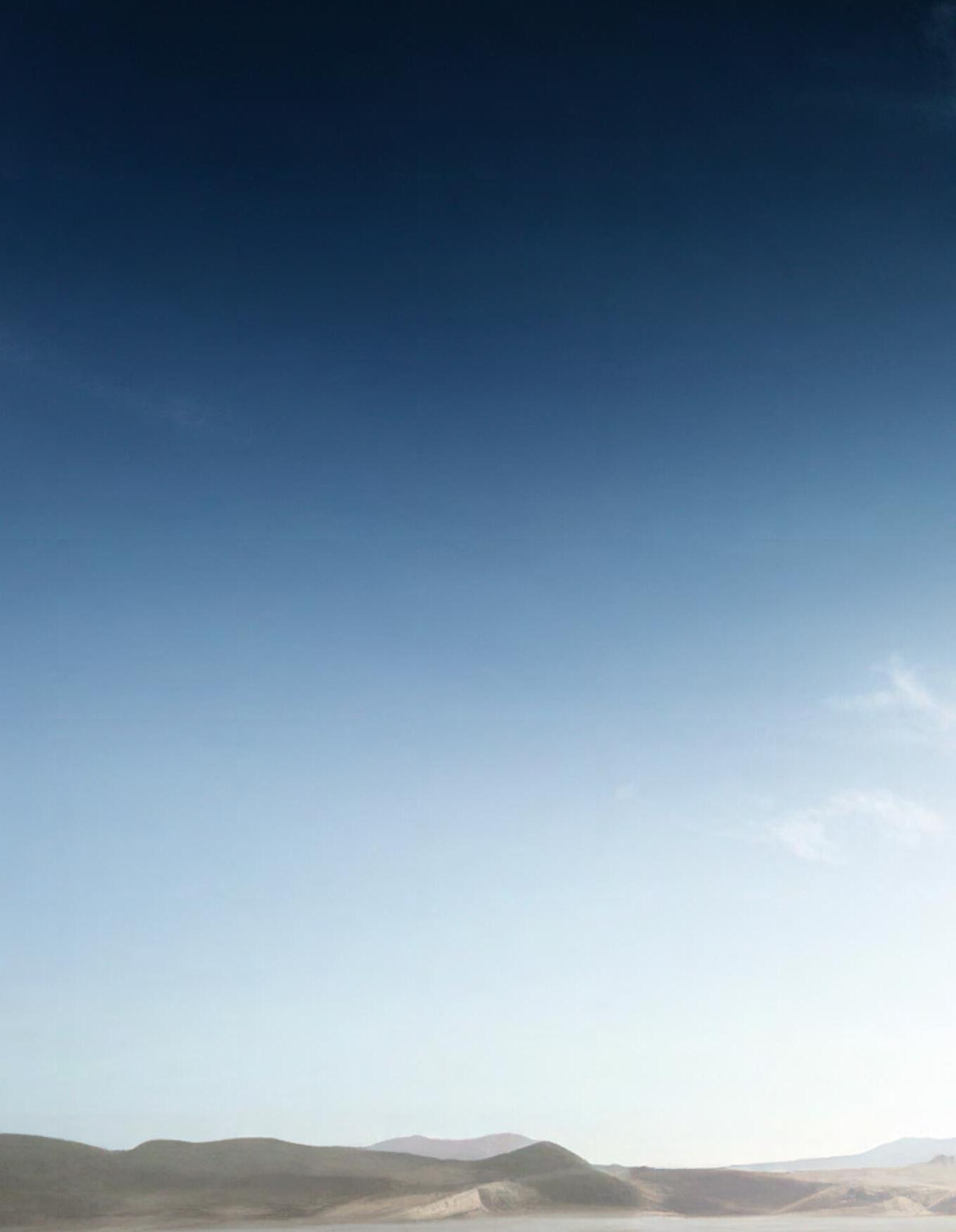
There’s something delightful about the fact that contemporary watchmakers remain enamoured with the innovations at the heart of today’s aeronautics, not least here in the UK where it remains one of our proudest industries. The Bremont MBI - produced with a meticulous attention to detail by leading UK watchmaker Bremont, who have a diehard following in the aviator watch world - was specifically commissioned by military engineering company Martin-Baker in 2007.
Martin-Baker is the world’s premier producer of ejector seats for ultrasonic fighter jets, and they had one key request: to produce a timepiece that performed brilliantly, looked the business, and could withstand the intense pressure of being ejected from a jet at speed and altitude. To say that Bremont nailed the brief and execution would be an understatement; the MBI is a sleek and high performance watch capable of surviving the crushing 19G pressure that ejection involves, making it an instant cult favourite among passionate aviator watch enthusiasts.
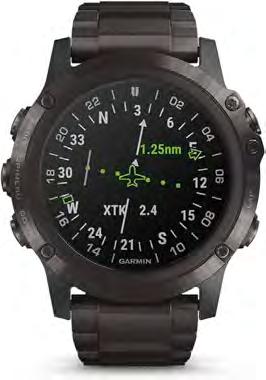
There’s no doubt about the fact that contemporary high-end pilot watches aren’t produced for those who actually sit in the cockpit, and are instead aimed at those who aspire to a cross-continental and jetsetting lifestyle. However, the D2 Delta from Garmin somewhat breaks the mould by offering to the market a bonafide aviator’s timepiece, carefully and lovingly crafted to meet the demands of today’s pilots in stunning digital style.
The smart complications are, frankly, staggering. The Pulse Ox sensor is a case in point, tracking blood oxygen and haemoglobin levels to ensure health at attitude. That’s alongside complications including NEXRAD weather readings, airport data and flight logging, avionic connectivity and dynamic colour mapping via an associated smart device. It’s all rather serious stuff, and while most of the owners of the Garmin D2 Delta PX Aviator Smartwatch aren’t going to be captaining flights between London and New York, the majority of the features in the timepiece are ideal for health and fitness enthusiasts down on solid ground, too.
The fact it looks incredibly stylish, provides no shortage of conversation starters and makes you feel like Tom Cruise in Top Gun… well, that surely doesn’t harm its appeal.

If you’ve kept half an eye on the last few years of development within the luxury timepiece realm, you’ll already be more than familiar with the flurry of excitement surrounding Panerai’s recent launches. It’s a brand that consistently outdoes its own high standards when it comes to flair, style, and undeniable trendsetting allure.
A tried-and-tested Panerai classic range, the Luminor Collection - and especially the Base 8 Days release - is an enticingly sleek reinterpretation of the classic model, and a pilot watch par excellence. With elegant indices finished in the range’s signature Super Luminova, there’s no doubting the aviator credentials of the timepiece, and when coupled with the distinguished crown-protecting bridge, this is about as representative of high end 21st century pilot watches as a watch can be.
This reimagining of the Luminor comes in a lightweight titanium, bringing a thoroughly futurist component to the head-turning wrist appeal and ensuring comfort and versatility for a range of seasons and outfits. The P.5000 calibre movement is all present and correct, offering an eight-day power reserve and astounding accuracy… and while this isn’t the most complicated or dazzling aviator watch on our list, the Panerai Luminor Base 9 Days Titanio wears its winning combination of practicality, simplicity and style with absolute panache.


It wouldn’t be a list of iconic aviator watches without mention of the Breitling Navitimer. There have been dozens of releases and reinterpretations of this recognisable and much-loved timepiece over the past hundred years. However, the 2023 launch - perhaps even more so than any over the past few decadesremains true to the early 20th century original, albeit imbued with a delicious retrofuturist allure and the kind of sophisticated accuracy the brand built its name upon.
Aviator watches, by and large, offer something of a minimalist appearance. It isn’t hard to understand why - legibility is central to their design credentials. However, the Navitimer has a look and wrist appeal entirely of its own, offering a dazzling display of complications, scales and dials, each with a specific purpose and raison d’être.
The tachymeter, slide rule bezel, chronograph with subdials and more are a key reminder of the Navitimer’s provenance: this was never a military aviator’s watch, but rather one designed and developed for the Aircraft Owners and Pilots Association in the 1950s. As such, it’s a timepiece created for the joy of flying and the liberation and glamour at the heart of international travel, which goes some way towards explaining its enduring popularity and iconic status.
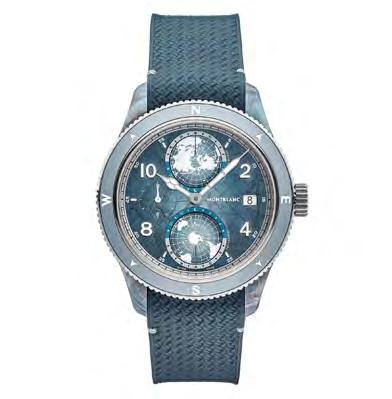
Montblanc’s foray into the world of high end timepieces continues to prove enormously successful, with the impressive 1858 collection a genuine high point in a product range that straddles the classic and contemporary with seeming ease. The Swiss brand showcases a thrilling vintage aesthetic with this timepiece, coupled with the kind of durability, accuracy and size/weight credentials that guarantee market appeal in the aviator watch world.
The 1858 is all about borrowing from both the vintage and the avant garde, boasting a bronze bezel and generously sized dial for navigation calculations, and the much sought-after ‘Cathedral Hands’ (inspired by European gothic cathedral design flourishes) that have already proven a winning feature of the Montblanc limited edition range. The finishing touches include oversized numerals and a fluted crown - both lending an essence of 1930s fighter pilot glamour; all moustaches, aerial antics and derring-do. What’s not to love?

On the hunt for a truly legendary aviator watch? You’d do far worse than to add the Bundeswehr Chronograph to your collection. As far as contemporary pilot watches with a peerless historical pedigree are concerned, the Bundeswehr ticks a whole load of enviable boxes. The originator of the model was military issued and exuded remarkable finesse for its time, featuring a groundbreaking flyback chronograph. Frankly, it’s every bit as stylish and exciting as ever in its latest incarnation.
Another feature of the Bundeswehr Chronograph that adds to its enduring appeal is its size, weight and overall wrist feel. It’s a real outlier in its class - most vintage-inspired watches feel somewhat small and flimsy on the wrist, but the “Bund” - as collectors call it - packs a modern-feeling 42mm, making it brilliant as a dress watch and one for casual wear too.

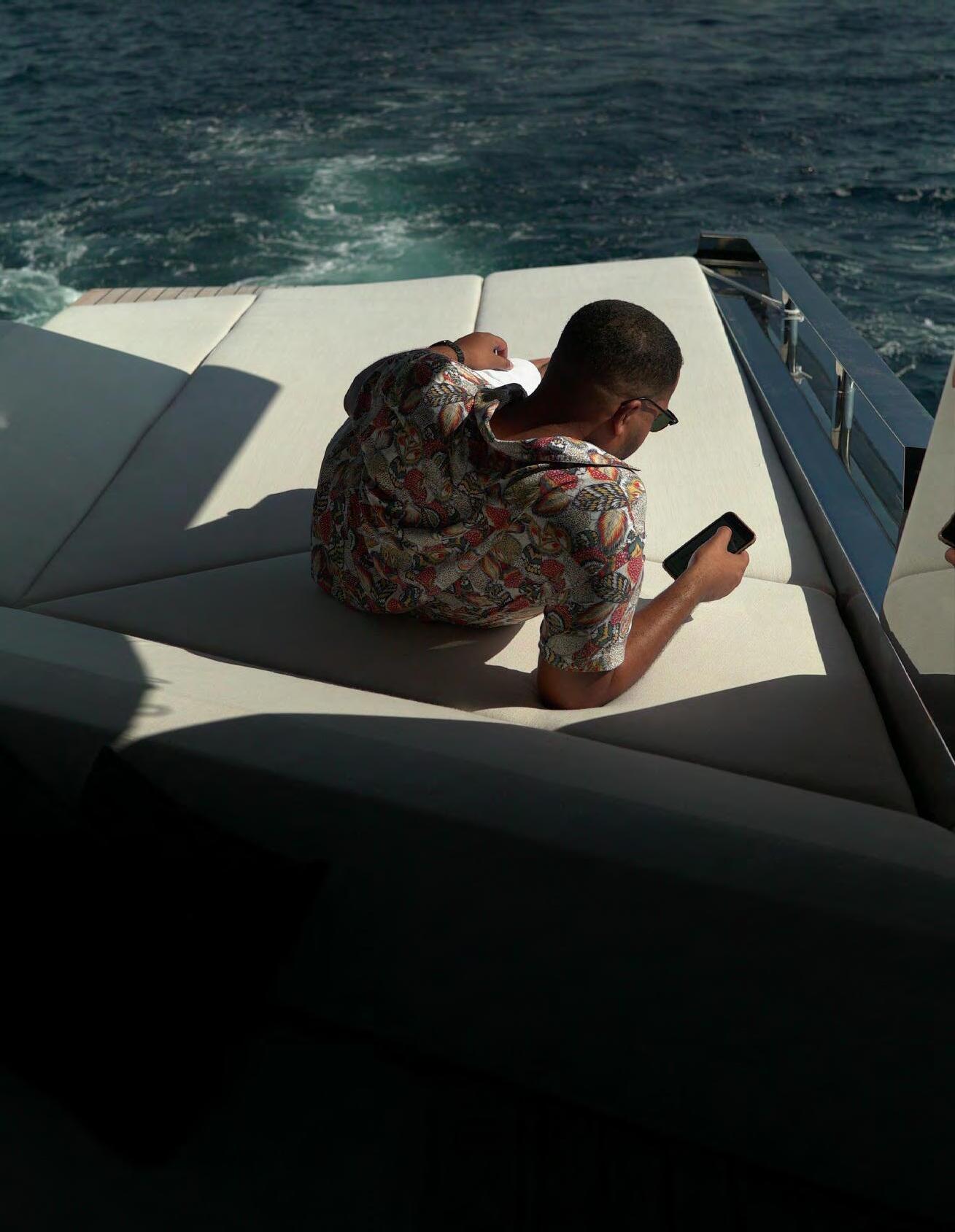
Words: Peter J Robinson - Managing Editor
Marvin and I had spent the weekend in Saint-Tropez, orbiting the Wallywhy200 launch. The yacht itself was unmistakably Wally; unapologetically angular, it cut through the regatta-stirred waters of Les Voiles de Saint-Tropez like a prowling statement piece. Moored near the Musée de l’Annonciade, she played host to a revolving door of creatives, collectors and design obsessives. Over plates of Sicilian amberjack and olive oil as green as fresh grass, we dined at Restaurant Sicilia alongside Wally Managing Director Stefano de Vivo and the brand’s legendary founder and chief designer, Luca Bassani. It was more salon than supper.
There’s a distinct kind of choreography that unfolds at events like these. Boats glide in, helicopters stir the air above Pampelonne, entourages stretch between tables and tender rides.
This is how things tend to unfold in Saint-Tropez. One moment you’re on a passerelle discussing naval architecture, the next you’re comparing notes on Grimaud rosé over lunch at Le Club 55. There’s a tempo to the season here, and for those participating, secure transport is a necessity.
When Les Voiles came to a close and the sails began to retreat like a well-choreographed curtain call, our next act was already in motion. Waiting for us at the marina was a 130 Land Rover Defender in obsidian black, delivered by ROLZO with the kind of unfussed service that quietly
separates true luxury from its imitators. All muscular lines and matte intent, the Defender was equally at home parked outside the Byblos as it was cornering through the switchbacks above Gordes with all the swagger of a French cavalry officer returning home.
We left Saint-Tropez behind and headed northeast—sunlight flickering through pine canopies, hilltop villages rising and falling like chapters in a novel. The car became part of the rhythm, not the focus. That’s what ROLZO does. It handles the details so you can disappear into the journey.
By the time we pulled into Hotel Les Bories & Spa, the sun had begun its slow descent behind the Luberon hills, casting long shadows across the lavender-fringed gardens. The terrace was alive with the low murmur of aperitifs and late arrivals, the garden flushed gold, the scent of
cypress mingling with salt from the pool below. A 246 GTB Dino and a Pininfarina-designed Peugeot 504 Coupé were parked casually out front. We joined the soft clink of glasses at the bar, ordered a bottle of chilled Provençal rosé, and watched the pool catch the day’s final shimmer. Everything in place, everything just so.
ROLZO is, in many ways, a quiet enabler of high-functioning travel. Whether you’re arriving by yacht, flying in with a film crew, or simply in need of a saloon with legroom and boot space, the experience is frictionless. From Cullinans to Land Cruisers, 488 Pistas to Austin Healey 3000s, the logistics are invisible.
Used by some of the world’s leading hospitality groups, ROLZO’s strength lies in its understanding of discretion and delivery. ROLZO is not a car rental company in the traditional sense though. It is a full-spectrum
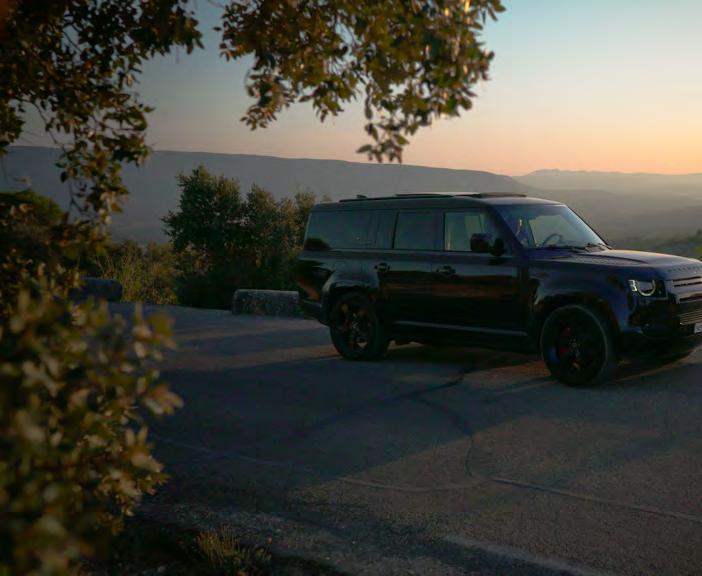
luxury mobility platform that offers on-demand vehicles, chauffeurs, VIP airport services, and meet-and-greet—all through a single, digital interface. From booking to delivery, the process is seamless. ROLZO curates vehicles like a collector curates art—each selected for both performance and provenance. Whether you’re hopping between meetings in Mayfair, hosting friends at La Réserve in Ramatuelle or arriving by tender in Port Hercule during the Monaco Yacht Show, the platform flexes around the user. It’s no wonder the brand has become the preferred provider for a growing roster of toptier hospitality names.
The platform operates in over 100 countries and 500 cities—though, by design, you’re never meant to notice. That’s the point. It’s one of the few brands able to follow its clients across the arc of their global itineraries. The service is as present in Gstaad and Palm Beach as it is in
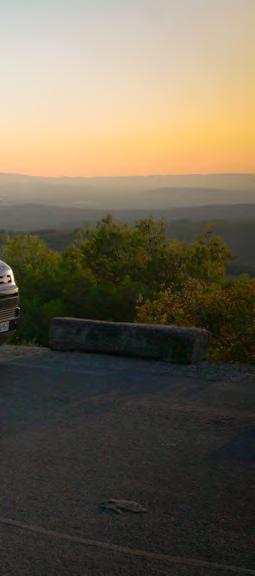
Dubai, Singapore or Cap d’Antibes, where yacht season blends effortlessly into summer estate life.
The company’s DNA is deeply embedded in luxury. CEO Tom Ripert refined his taste for brand execution at Fendi and Louis Vuitton, and CTO Khaled Shehata engineered security systems for NASA and the French Ministry of Defence before turning his mind to the architecture of digital luxury. That pairing— style and infrastructure—has helped ROLZO build one of the most commercially agile and financially confident travel-tech companies in the premium space. Their growth curve is not just healthy, it’s architectural.
But what perhaps matters most is the aftercare. ROLZO’s team doesn’t disappear once the engine turns off. There’s always a thread of continuity, an invisible support that understands when you might need to reroute last-minute, add
a second vehicle for an entourage, or schedule a chauffeured transfer with barely an hour’s notice.
The next morning, we loaded up and headed out—Gordes, Ménerbes, Roussillon all scattered like jewels along the ridge. The Defender had settled into the journey and so was almost forgotten. Not because it hadn’t made an impression, but because it had done exactly what it was supposed to—become part of the flow.
That’s the quiet luxury of ROLZO.
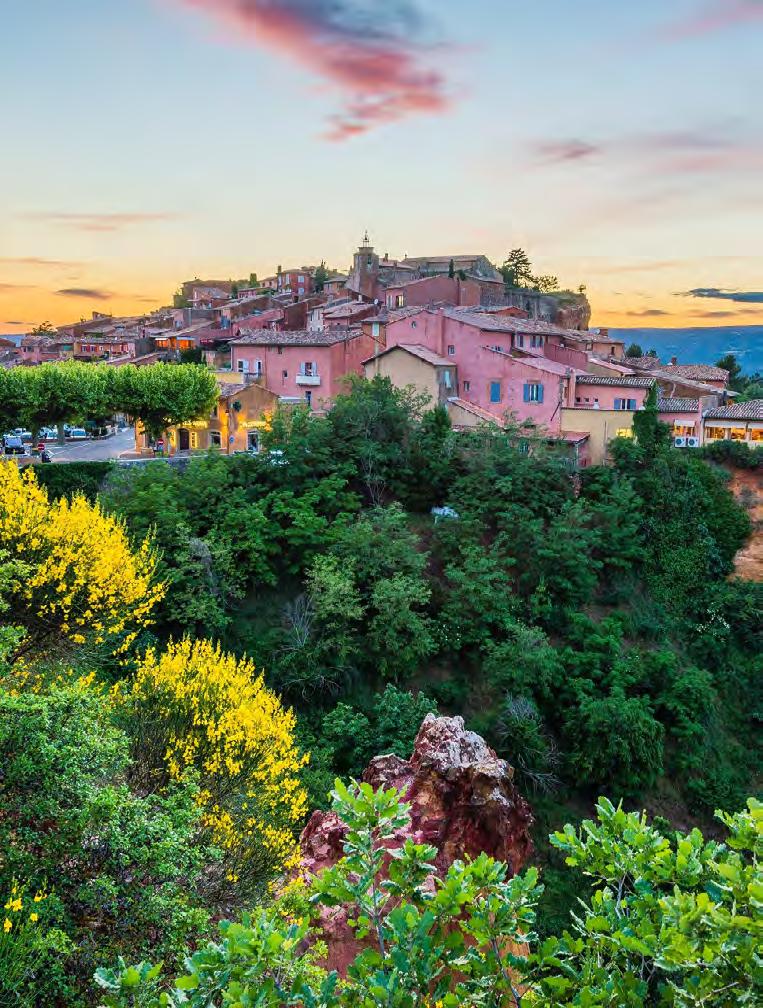
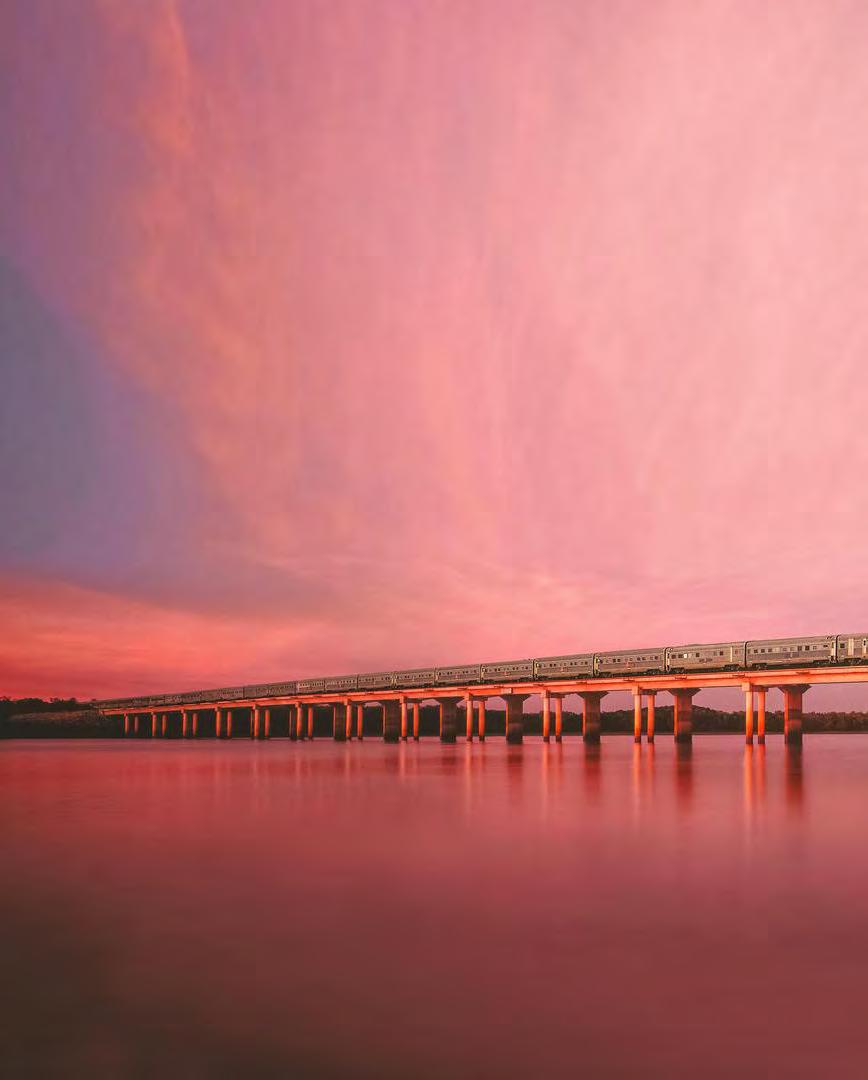
Words: Florean Smout - Assistant Travel Editor
Australia is a country laden with no shortage of cultural significance for people right across the globe, and one which continues to inspire fascination. It’s not hard to see why: there’s the iconic wildlife, the fact that we grew up with the inescapable 90’s pop culture figures of Steve Irwin, Kylie and more, and a potent cinematic presence that presents its panoramas as something at once familiar and alien, epically inviting yet almost completely unknowable.
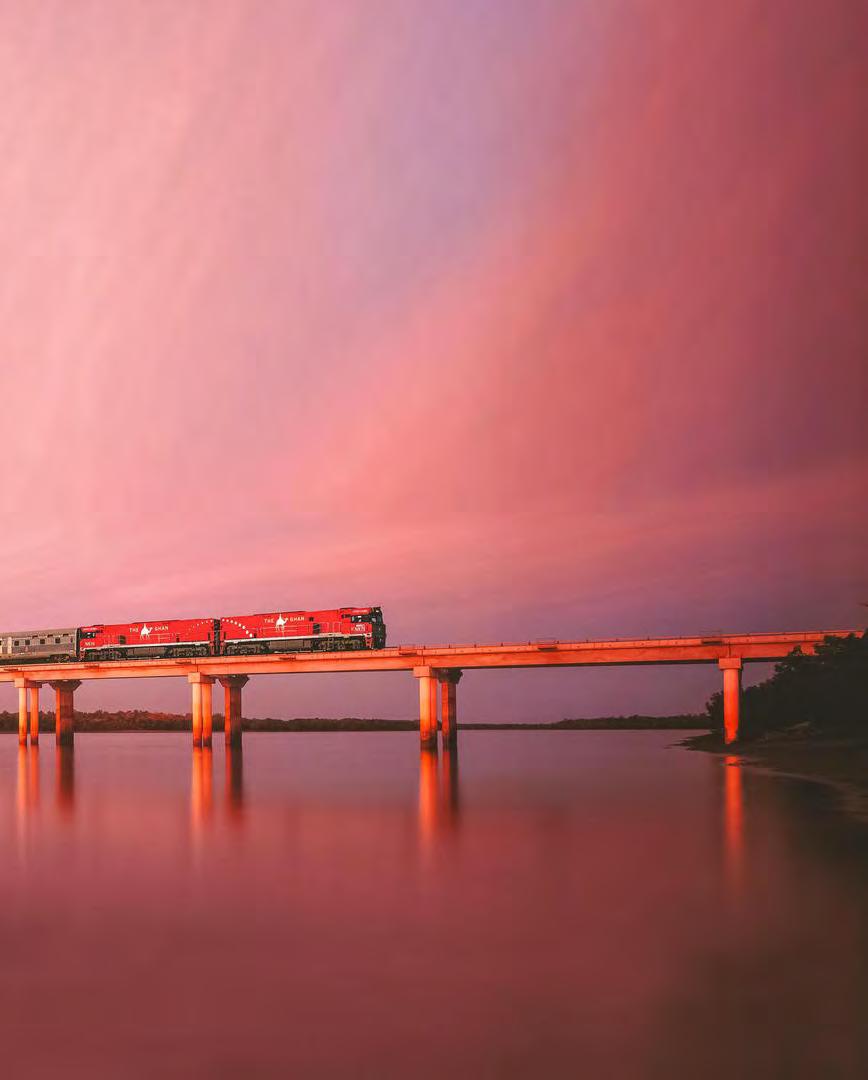

Around the time I was graduating from secondary school (and as is traditional in the Netherlands), Australia’s pull seemed to be at its most powerful. Indeed, half my graduating class decided to head on a backpacking adventure Down Under. However, instead of opting for the more traditional beach-and-beer gap year, I embarked on the Trans-Mongolian Express, a 4,735-mile train journey from Moscow to Beijing. Despite fully standing by my decision (and at the time feeling rather smug about not going for the popular choice), the gap year kids bound for ‘Oz’ did plant a seed; one of lingering curiosity to see what Australia was truly all about. It was, it turned out, a curiosity that would only grow in the years to come.
When Journey Beyond invited me to experience The Ghan, a legendary rail expedition from Darwin to Adelaide with stops en route in Katherine, Alice Springs, and Coober Pedy, I wasn’t exactly a tough sell. In addition to travelling through the iconic Red Centre, we’d also explore some of Journey Beyond’s marine expeditions and city adventures. As one of Australia’s largest experiential tourism businesses, with a portfolio of 13 iconic brands, I knew I was about to experience the Australia highlight reel of a lifetime.
My journey began in London with a flight to Sydney via Singapore, before continuing to Darwin. The Northern Territory city of Darwin would mark the start of The Ghan - a truly legendary rail journey befitting of countless bucket lists. After concluding that epic locomotive odyssey, I’d make stops in Melbourne, Hamilton Island, the Great Barrier Reef, and then back to city life with a final night in Sydney.
That’s about 23,500 miles door to door.
Though a direct flight from Singapore to Darwin would have been faster, the aerial views of the Outback were mesmerising. Miles of unspoiled, deep red earth against the bright blue Outback sky were a hypnotic preview of the adventures ahead. It was a stunning introduction to Australia’s rugged beauty, and one that more than scratched an itch that started stirring so many years ago.
After what felt like a lifetime crossing almost half the planet, the first breath of fresh air, sunshine on my skin, and non-airport ground underfoot were blissful to say the least. A brief exploration of downtown Darwin led to a delightful local treat—crispy fried alligator bites with a view of Darwin’s
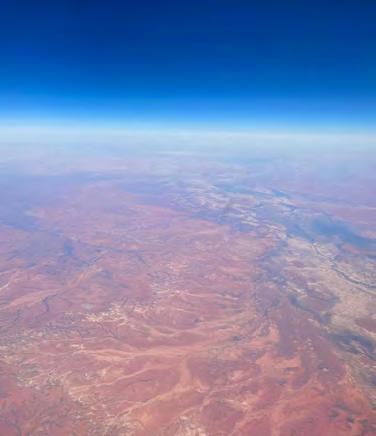
OUTBACK VIEWS FROM 42,000 FEET
kicked off with a Darwin Harbour Cruise, I was of course eagerly anticipating a spectacular sunset. The adventure began aboard the Charles Darwin, a comfortable three-tier catamaran, where the crew welcomed us warmly. With celebratory refreshments in hand, we settled in for a memorable evening exploring the waters of the Northern Territory’s capital.
The buffet dinner was bountiful and (not surprisingly) heavy on seafood, accompanied by insightful commentary from a local guide. The combination of champagne on tap and over 30 hours of travel had made my eyelids heavy beyond belief. There was, of course, no chance I was going to give in and miss out on the signature Top End sunset. As the sun began to dip below the horizon, I stood outside on deck, fresh air on my face, in a faint attempt to scare off the zzz’s. I witnessed a sky transformed into a canvas of oranges, pinks, and purples, each hue reflecting off the calm waters below. As day turned to night the party continued, stars dotted the sky, and the city’s lights twinkled upon our return to the harbour.
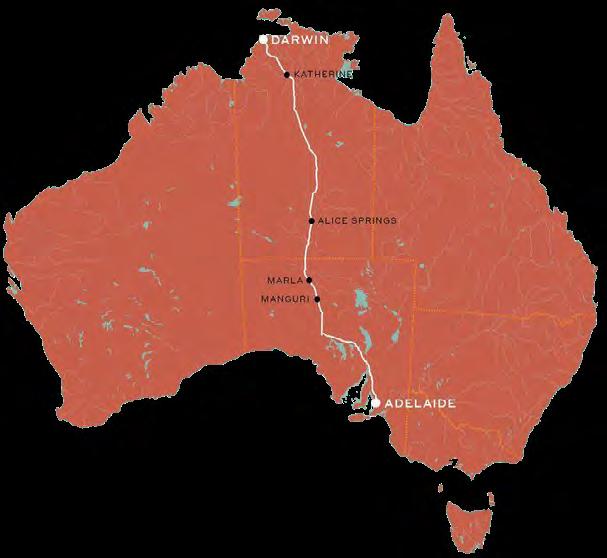
I’m certainly no Francis Bourgeois, but there’s something so romantic and intriguing about crossing lands unknown in the comfort of a sleeper train. Being given the opportunity to see vast landscapes that many won’t ever get to witness, solely due to its sheer remoteness, is a rare delight. The rhythmic ‘gedunk gedunk’ of the train sliding over the rails and sleepers, for miles and miles to come was my kind of speed. My adventure aboard The Ghan would span four days and three nights, taking me from Darwin to Adelaide via Katherine, Alice Springs and Coober Pedy.
Upon arriving at the station, there she was in
all her glory and frontier spirit. A striking red locomotive with the cameleer logo, hinting to the train’s trailblazing history of pioneering cameleers who found their way into the Red Centre over 150 years ago. Behind the locomotive followed miles of polished stainless-steel carriages shimmering away in the morning sun.
My Gold Twin cabin was compact and charming. The cabin-width window was the star of the show and welcomed me in with the promise of a widescreen view of the unreal terrain yet to come. A continuously changing picture frame. The bedding was a nostalgic bunk arrangement: the top bunk to be folded out in the evening hours and the lower bunk easily transformed into a comfortable sofa from where you could either disappear into the views or a book. Of course, I tried both - and I can report that the top bunk had a bit more sway to it, rocking me to sleep with the sound of the rail sleepers disappearing underneath me at a steady pace. The cabin even had its own private bathroom, where you could attempt to swing a cat. Regardless, it was much better than sharing with fellow travellers no matter how well-heeled. Despite the understandably limited space, the cabin was thoughtfully designed and offered all the comforts needed for a restful journey.
I found myself spending most of my time in the sociable and inviting lounge carriage, equipped with an array of games and books, where fellow passengers quickly became friends. Be sure to order a cocktail from Loz, the Ghan’s resident bartender. I suspect her charm alone has resulted in guests returning time and time again. Adjacent to the Lounge carriage was the classically styled Queen Adelaide Restaurant, which truly embodied the romance of rail travel. The occasional rattling of crockery, cutlery and glassware provided another audible layer to
the soundtrack of the trip. The staff were fully synchronised and delivered exceptional service in a cosy atmosphere. Not to mention the chefs creating the most lovely local and seasonal dishes in the unimaginably tight galleys.
Our first off-train excursion in Katherine was the Nitmiluk Gorge Cruise, an experience that connected us with the ancient landscape. As our boat navigated the winding Katherine River, we were surrounded by towering gorge walls etched by time. The sound of cicadas echoed across the cliffs as we were enveloped by nature. Our guide shared fascinating stories about the geological history and the cultural significance of Nitmiluk to the Indigenous Jawoyn people, a moment where spirituality meets natural beauty.
Alice Springs, our second off-train experience, gave the exploration of Simpsons Gap top billing. We spent the morning seeing sites such as Anzac Hill Memorial, an Aboriginal art studio, John Flynn’s Grave and a delightful lunch at the Alice Springs Desert Park. Post-lunch we took in the Ghost Gum Walk; a gentle one-hour circular Cassia Hill Walk which offered stunning views over the MacDonnell Ranges. The day was a sensory assault and left me wondering if we’d ever make it to the Gap at all. But grand things come to those who wait. A dry riverbed with ancient Ghost Gum trees unfolded before me. Bright orangey red cliffs towering above it reaching into the crisp blue sky. Following the path into the gap between the canyon walls, I found the permanent waterhole and an overwhelming feeling of peace. The majesty, strength and utter grandeur nature can display is always worth the effort.
Later that evening and back at base, the team had set up for a bbq dinner under the stars at the historic Alice Springs Telegraph Station. Established in 1871, it marks the site of the
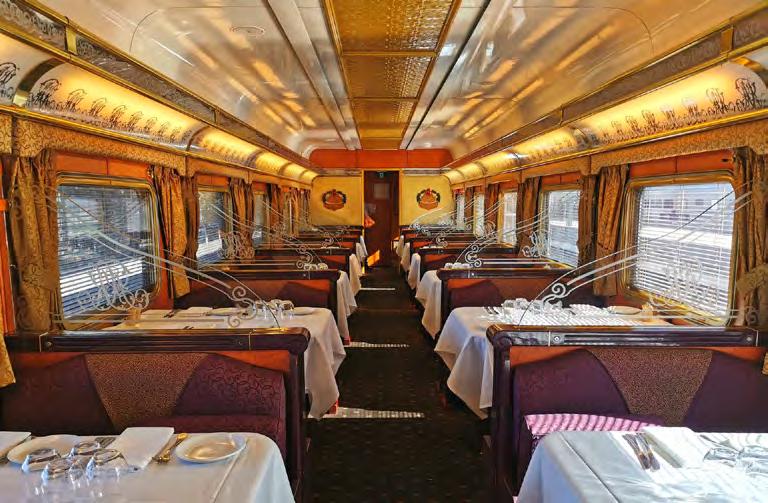
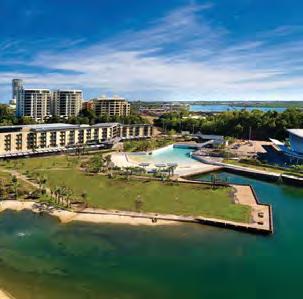
Set on Darwin’s vibrant waterfront, the Adina Apartment Hotel Darwin Waterfront blends modern comforts with the city’s rich cultural heritage. Offering functionality, convenience, style and local charm.
The hotel’s location is a standout feature. Situated along the lively waterfront precinct, guests have easy access to an array of dining options, bars, and activities. Families will appreciate the green spaces lining the waterfront, perfect for picnics and leisurely walks. If you want to explore further, downtown Darwin, boasting charming boutiques, galleries, and the Museum and Art Gallery of the Northern Territory, is only a five-minute walk away.
Stepping into the lobby, you’re greeted by a modern ambience accentuated by vibrant Aboriginal artwork. While the common areas exude warmth, the guestrooms are more subdued in design and focus on functionality. Each room offers a kitchenette suitable for the more independent traveller. The rooms offer a comfortable retreat, with the highlight being the stunning waterfront views from some of them (definitely worth requesting!)
It is noteworthy that the hotel is part of Indigenous Business Australia’s portfolio, reflecting a commitment to Indigenous talent and culture in the hospitality industry. Staff undergo cultural competency training, and initiatives are in place to promote Indigenous leadership.
Temperatures can rise quite significantly in Darwin with an annual average of 24.7 - 32 °C, so the Wave Lagoon across from the hotel is the perfect place to cool down and relax in crocodile and stinger-free waters. It rolls out 10 different wave patterns, creating the perfect beach simulation.
The Adina Apartment Hotel Darwin Waterfront offers a comfortable stay in a brilliant location and is the perfect base for exploring the Top End.
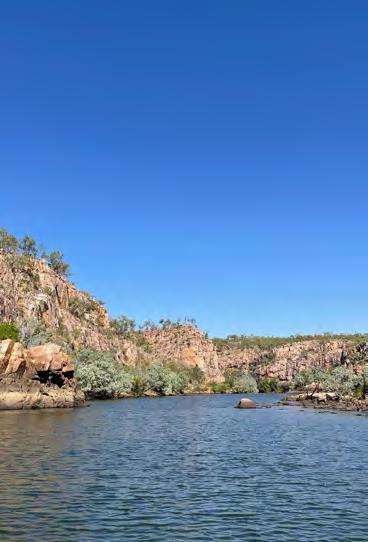
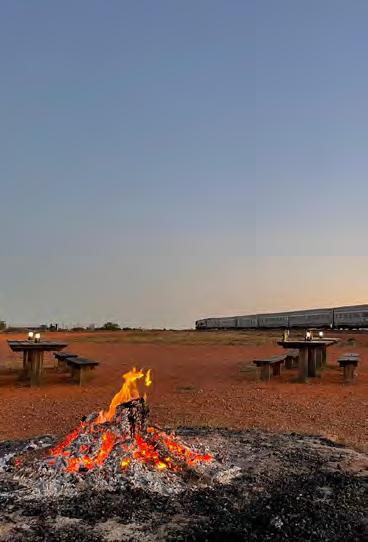
first European settlement in Alice Springs. The station played a pivotal role in the Overland Telegraph Line between Darwin and Adelaide, connecting Australia to the British Empire’s undersea network. This revolutionised communication - what once took months by sea could now reach London in just five hours, transforming 19th-century connectivity. In this rather historic setting, we enjoyed an evening of live music, dance, stargazing, camel rides, and roasting marshmallows over open fires. The very definition of wholesome.
Our final stop was Coober Pedy, often referred to as “the opal capital of the world”. Imagine a lunar landscape dotted with mounds of earth from mining operations. It was a stark and
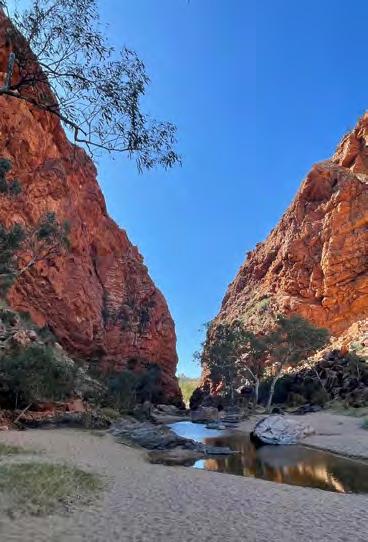
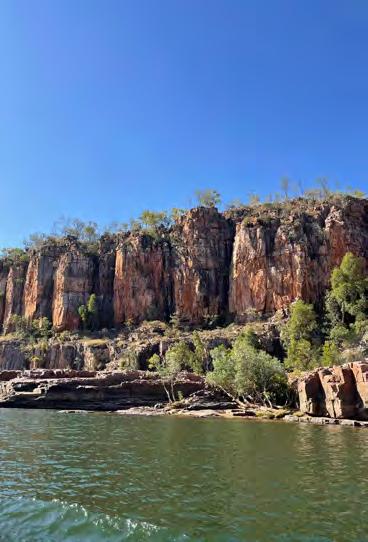

barren environment, where temperatures rise so significantly that locals live in dugouts; homes carved into the hills to escape the extreme heat.
Before diving into Coober Pedy, we visited the Breakaways Reserve, where the colourful low hills appear to be ‘broken away’ from the higher ground, creating a surreal panorama that changes colour depending on the angle at which the sun shines. This landscape, once an inland sea, has transformed over time into a dramatic display of natural beauty.
In Coober Pedy we started off with an underground Greek-style lunch in an old mining tunnel. Very on brand. We then met our host, Outback Opal Hunter’s very own Yanni. We donned hard hats and were given pickaxes to try our luck at finding opals at Quest Mine. The blue light illuminated the opal veins in the rock, making it look so accessible. Perhaps the opal rush started to hit, as I asked Yanni if perhaps he had some explosives instead. Sadly, no ammonium nitrate was at hand. The Quest Mine experience was followed by a guided tour of The Umoona Opal Mine and Museum, which offered an insightful journey into the history of Australia’s national gemstone. We saw the underground caverns, hand-dug shafts, and tunnels showcasing the often harsh reality of opal mining.
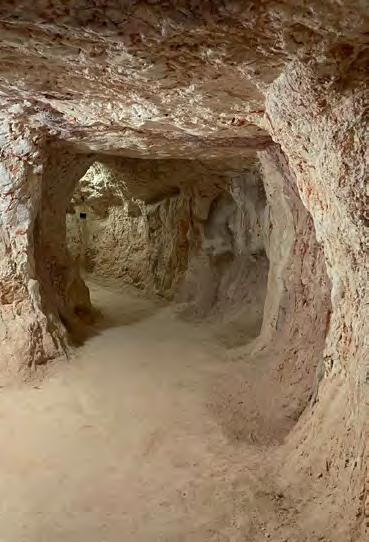
As evening fell, we returned to the Manguri siding; a unique location on the track from where you can see the entire length of the train and guests attempting to frame it all in. Here we were treated to sundowners and canapes by the bonfire. Standing in the bright red sand, staring into the sunset being kept warm by the fire was the most wonderful touch. Several more nightcaps were had to celebrate the end of the wonderful journey through Australia’s Outback.
The Ghan isn’t just an expedition; it’s an experience that immerses you in the heart of Australia. It’s’ there in the vast red deserts, the ever-changing landscapes, and the most insane moonsets. It’s in the camaraderie among passengers, the wonderful team and great service,
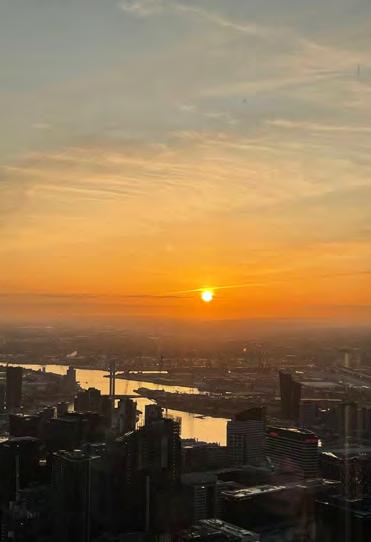
and the chance to disconnect from the outside world make it a unique passage.
I still have a deep sense of gratitude for this journey. The Ghan leaves you with not just memories, but a profound appreciation for the diverse beauty of Australia and the stories of its people. If you seek an adventure that combines the natural wonders of the Outback, prestige and history, The Ghan is the escape for you.
After four days of remote nature, we headed to Australia’s second most populous city: Melbourne. What to do if you have less than 24 hours to spend in a city and still want to soak it all in? Head to its highest point and drink in the views. In Melbourne, that means paying a visit to the Skydeck on the 88th floor of the Eureka Tower. This isn’t just any viewpoint—it’s the southern hemisphere’s highest observation deck at nearly 300 metres.
From this height, you have 360-degree views of Melbourne and beyond. Snap a selfie, or send a postcard (yes, it also has the highest postbox in the southern hemisphere), or just simply sit down to observe the sprawling cityscape.
For those craving more adrenalin, the Skydeck offers VR experiences that let you test your nerves on a virtual plank walk high above the city and explore 16 iconic Melbourne landmarks. VR experiences don’t really do it for me, so I stepped into The Edge instead—a glass cube that extends three metres out from the building. Standing on its transparent floor, looking down at the city far below was a captivating change of perspective. I finished my champagne and enjoyed the remaining orange hues of the sunset, before heading to Eureka
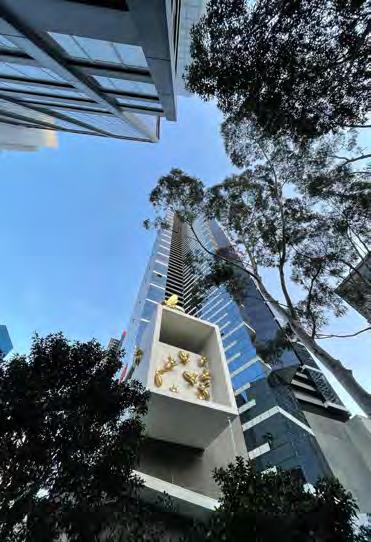
89 on the 89th floor in the restaurant’s private elevator.
Stepping into the dining room, you’re welcomed to a sultry, almost nightclub-esque, atmosphere. The black and red interior, with leather and high-gloss accents, reflects the sparkling lights of Melbourne’s skyline.
Enjoy the six or eight-course tasting menus curated by Chef Renee Martillano, who celebrates classic Australian produce with a modern aesthetic. The culinary journey began with a standout starter: spanner crab with smoked crème, wasabi, and daikon gastrique. The creamy texture, hint of spice, satisfying crunch, and balanced acidity set the bar sky-high. The trio of Yarra Valley caviar from the kitchen provided a perfect interlude. Especially the Ikura Shoyu Zuke, marinated in soy, sake, and wakame, delivered a satisfying umami punch. If I lived in New South Wales, I’d have these pearls of goodness on a weekly delivery.
After only one night in the city, and despite loving Melbourne’s energy, the concrete skyrises made me long for another escape into nature. Contrasting the red, dry, Outback dirt, we headed to the tropical Hamilton Island. Part of the Whitsundays and in the heart of the Great Barrier Reef, you’ll be surrounded by pristine white beaches, clear azure waters, vibrant coral and marine life. Perfect.
This car and carefree paradise island is known for its stunning natural beauty. The island itself also has plenty to offer, from top-notch accommodations such as qualia, to exploring
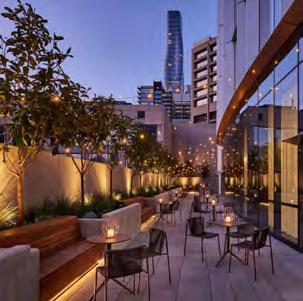
Nestled in the vibrant heart of Melbourne’s CBD (Central Business District), the Hyatt Centric Melbourne offers contemporary sophistication amidst the city’s lively energy. With its sleek design, warm hospitality, and commitment to sustainability, this urban oasis offers a modern retreat for discerning travellers seeking both style and substance.
Upon stepping into the lobby, you are enveloped in a blend of modern elegance and inviting comfort. The interplay of clean lines of the brutalist brickwork softened by plush rugs and furnishings creates a welcoming atmosphere where guests can unwind and recharge after a day of exploring the city’s delights, or meetings.
Situated on Downie Street, just a short stroll from iconic landmarks like Crown and the South Bank precinct, the hotel boasts a prime location for both business and leisure travellers. If you’re in town for a conference or eager to explore Melbourne’s renowned culinary scene, the Hyatt Centric Melbourne serves as the perfect home base for your adventures.
The rooms at Hyatt Centric Melbourne are a sanctuary of contemporary luxury. The light wooden décor, with terracotta, beige, sage and dark accent colours make it feel warm and welcoming. It’s a sleek cocoon with seating arranged to enjoy the city view from the floor-to-ceiling windows.
But it’s not just the accommodations that make a memorable stay, the hotel’s facilities are befitting. Take a refreshing dip in the heated 25-metre pool tucked away on level six, where zen-like ambience and mood lighting create the perfect escape from the city’s fast pace.
The Level 25 Restaurant and Bar offers a curated menu of locally sourced ingredients with panoramic views of the Yarra River. For those on the go, Allie Lane in the lobby offers a quick caffeine fix or a delectable pastry to fuel your adventures. In the evening, the lobby comes alive with the soulful melodies of live music, creating the perfect ambience for an evening in.
The Hyatt Centric Melbourne provides its guests with an invitation to immerse themselves in the vibrant spirit of Melbourne, where luxury meets local charm in perfect harmony.
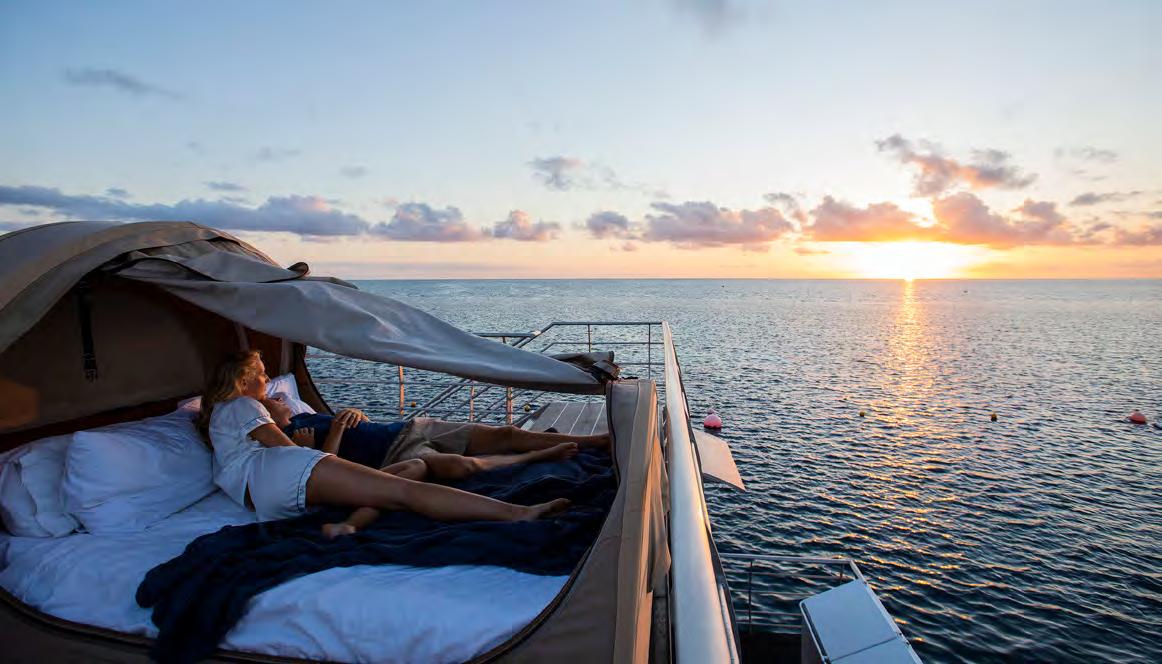
the Whitsundays and Great Barrier Reef. I opted to take my golf cart to Hamilton Island Wildlife to pay a long-overdue visit to the koalas. These sleepy leaf munchers stole my heart and I have to say I got a little carried away. Even after deleting 90% of the pictures I rattled off, I still have over 50 photos of the same koala on my camera roll. I cannot bring myself to delete any of them. The modern digital scourge.
After a stay at the exceptional qualia, it was time for a more rustic experience the following morning. Bright and early we headed to the marina where we joined eager fellow travellers for a cruise to Reefworld, a pontoon set on

“ you’ll be surrounded by pristine white beaches, clear azure waters, vibrant coral and marine life.”
LEFT TO RIGHT: KOALA NUMBER ONE, THE OBJECT OF OBSESSION | SMILING TURTLE | CORAL SEA PEEKING | SWEET SWAG BED | HELI VIEWS | SUNSET OVER THE REEF
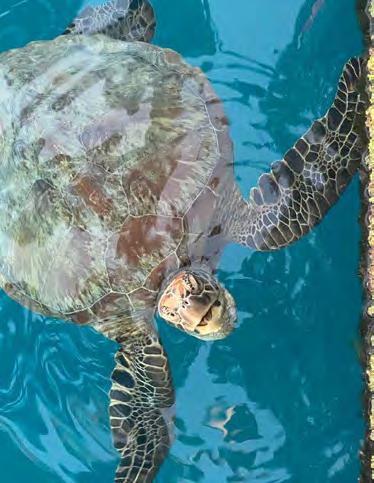
the edge of Hardy Reef, located on the outer Barrier Reef from the Whitsunday Islands. As we cruised into the open waters of the Coral Sea we became spectators to the majesty of breaching whales. The raw power and grace with which these colossal creatures soar through the air, followed by a playful splash back into the water is a spectacle that left me feeling in awe of nature and the beauty of life.
Having docked to Reefworld we swiftly checked into Journey Beyond’s Reefsleep. This two-day, one-night experience is a once-in-a-lifetime opportunity to sleep under the stars amidst nothing but the ocean. On the top deck, you’ll
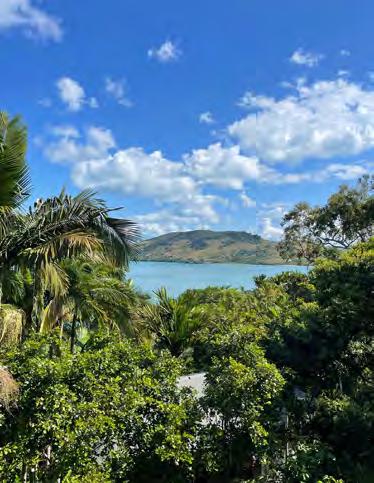
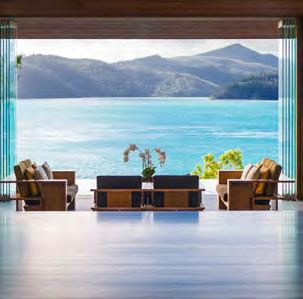
Nestled on the northern tip of the tropical Hamilton Island, qualia is a secluded oasis amidst the breathtaking Great Barrier Reef. This serene retreat, spanning 30 acres of meticulously landscaped grounds, embodies the pinnacle of luxury and tranquillity, offering an idyllic escape for discerning travellers. Developed by the late Bob Oatley, esteemed Australian winemaker and patriarch of the Oatley family, qualia exudes a no-expense-spared ambiance, making it one of Queensland’s most exquisite resorts.
find 12 swag tents, which function as daybeds and accommodation by night. If you prefer not to share a shower block with strangers, opt for the Reefsuite experience: Australia’s first underwater hotel room with glass-walled en suite and floor-to-ceiling views of the spectacular underwater world of the Great Barrier Reef.
Having changed into my swimmers and collected my wetsuit and snorkel gear, I set off to explore what I came here for: the World Heritage-listed Great Barrier Reef. Happily floating above vibrant coral gardens teeming with colourful fish, I even spotted one of the octopuses that the Reefworld team had seen romancing a female
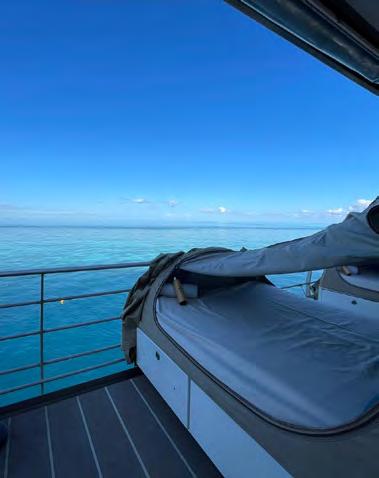
Chris Beckingham, responsible for qualia’s architectural design, envisioned a luxurious retreat that harmonises with its natural surroundings. The resort’s aesthetic is a fusion of open space and harmony, crafted from the finest timber and stone. Set amidst native foliage, each pavilion embodies a unique sense of privacy and serenity, creating a perfect sanctuary for its guests. The design philosophy, encapsulated by the word ‘qualia’— meaning a collection of deeper sensory experiences—reflects a commitment to sensory perfection and understated elegance. The overall aesthetic is modern yet warm, creating an atmosphere that is both inviting and exclusive.
Service at qualia is impeccable, with every detail thoughtfully curated to enhance the guest experience. Each pavilion comes with its own golf cart, making exploring the resort and the car-free island effortless and a lot of fun. The staff are attentive and personable, ensuring that every need is met with a smile. Facilities at the resort are top-notch, including two stunning restaurants, a serene spa, library, several pools and an array of water activities to be enjoyed from Pebble Beach.
Dining at qualia is an exceptional experience, with two outstanding restaurants offering diverse culinary delights. Pebble Beach, the resort’s waterfront restaurant, serves contemporary Australian
octopus a few days before. The ocean has a small dating pool apparently.
After the day guests had left Reefworld and one last guided snorkel tour, the pontoon became eerily quiet as only a small group of Reefsleep and Reefsuite guests were left. Freshly showered, we settled in for yet another magnificent sunset, whilst the team passed us obligatory cold ones and whipped up a banging charcuterie station. It hit the spot in the most perfect way, especially after a day spent in salt water and sun. After dinner, I ventured to the underwater observatory to say goodnight to the American Fridge Freezer-sized Groupers.

cuisine that is fresh, healthy and pops off the palate – so satisfying. The reef fish with saffron broth: crisp and warming - a wholesome experience. In the evenings, Pebble Beach transforms into a fine dining venue with a tantalising tasting menu. The Long Pavilion, the resort’s other dining option, provides a more relaxed setting while maintaining equally high culinary standards.
Breakfast at qualia was also quite the occasion. Instead of going for my usual egg-based intro, I opted for a sweet start to the day and ordered the French toast. Best decision I’ve made in my life. I might have found God on that plate - imagine a thick slab of brioche, perfectly soft yet crunchy, generously coated in cinnamon sugar, and topped with a medley of fresh fruits, nuts, and a dollop of thick cream finished with a drizzle of syrup. Utter decadence and perfectly executed simplicity. Safe to say this dish has ruined any French toast experience I’ve had since.
qualia is more than just a resort; it is a destination that offers a perfect blend of luxury, natural beauty, and impeccable service. Whether you are looking to immerse yourself in the serene surroundings, explore the wonders of the Great Barrier Reef, or simply indulge in world-class dining, qualia provides an unparalleled experience. This secluded oasis on Hamilton Island truly epitomises sensory perfection and offers an unforgettable escape for those seeking a slice of paradise.
Before tucking myself in for bed, I realised I could actually see the Milky Way in the night sky. I stayed awake for as long as my eyelids would allow, only to wake up very early the following morning to witness the sunrise, and the tide change leaving some of the the reef dry. After brushing my teeth and waving good morning to the local turtles, it was time to head to the mainland. This time, not via the two-hour cruise. A helicopter transfer whisked us back to Hamilton Island, along with a flyover of Hardy Reef’s infamous heart-shaped and aptly named Heart Reef and Whitehaven Beach.
On the flight to our final city later that day, my
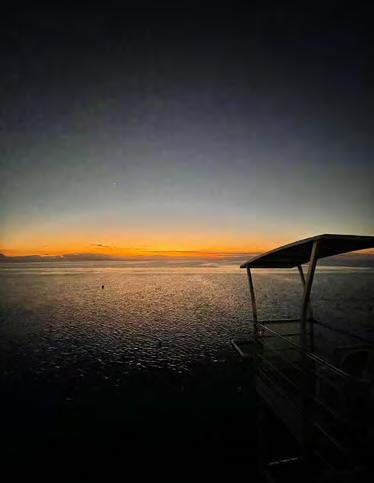

The Intercontinental Sydney, a jewel in the heart of Australia’s iconic harbour city, has recently unveiled a magnificent $120-million refurbishment, seamlessly blending historic charm with contemporary luxury. Nestled within the heritage-listed 171-year-old Treasury building, this hotel stands as a testament to timeless elegance and modern sophistication.
seat allocation was once again perfect for aerial views, as the Sydney Harbour Bridge and Opera House were on my side of the plane. A very strong introduction. 23500 miles and counting.
The last evening of the Journey Beyond Australia adventure was celebrated with dinner on board the 78ft cruiser, Spirit of Migloo in Sydney. The three-course menu was delightful of course, but the uninterrupted views of Sydney’s iconic
Situated at the crossroads of Sydney’s vibrant CBD and the picturesque harbour, the property offers unparalleled views of the Sydney Harbour Bridge, the Opera House, the Royal Botanic Gardens and beyond. The hotel’s location makes it an ideal base for both business and leisure travellers, providing easy access to key attractions, shopping districts, and dining hotspots.
The essence of the Intercontinental Sydney is captured in its unique fusion of old and new. The hotel is housed in the historic Treasury building, a structure rich with history dating back to 1851. The recent refurbishment, led by Woods Bagot, enhances this heritage with contemporary elements, creating a harmonious blend that is both nostalgic and forward-looking. I particularly enjoyed the curved, plisse wall, made with a mix of Verde Oceania marble and limestone, upon entering the lobby. The wall’s natural curve leads you into the Treasury bar, where the same marble continues in the design of the bar itself. Set in the atrium of the old Treasury building, its red brickwork, limestone arched balconies and lush greenery, create a warm and inviting space for a morning coffee, lunch or late-night cocktail. It’s the perfect place to admire yet another historic marvel: the exposed caged lift, which still operates between the first three levels of the 171-year-old sandstone building and is
sights lit up at night from the 360-degree top deck stole the show. Sailing by one of the most recognisable skylines in the world, gave me a sense of the size and scale of Sydney. Witnessing the city in real life after watching the New Year’s fireworks since I was young, cemented the need to return and fully experience its excitable and friendly vibe.
This sense of place and the desire to return
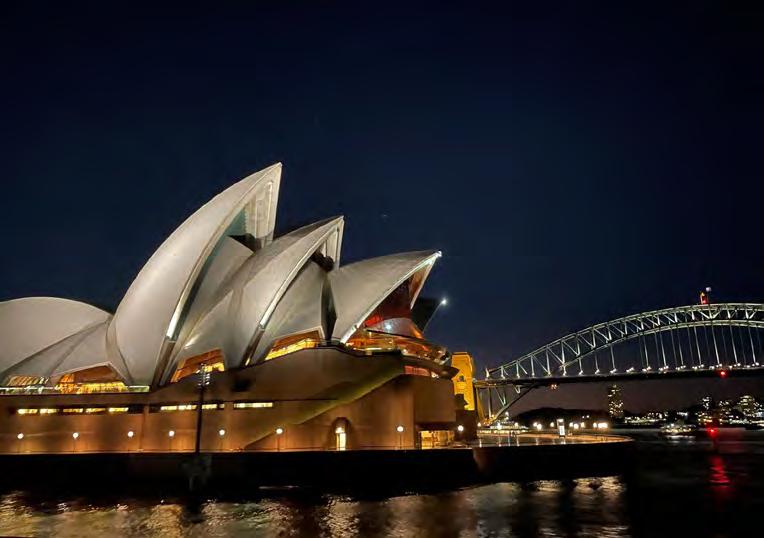
the oldest working lift in the southern hemisphere.
Culinary excellence is at the heart of the Intercontinental Sydney experience. The hotel boasts two new hospitality venues that have quickly become the talk of the town. The Aster Bar, perched on the 32nd floor, offers a 270-degree view of Sydney’s most famous landmarks. The elevated sky bar and dining space allows guests to indulge in exquisite cocktails, such as the highly recommended Beyond Margarita (it truly does go beyond!), while soaking in the stunning scenery. The outdoor seating area is perfect for enjoying a sunset drink with the girls or a romantic evening under the stars.
The Intercontinental Sydney has masterfully redefined luxury with its recent refurbishment, offering guests a unique blend of historic charm and modern elegance. Whether you’re here for the breathtaking views, the sumptuous accommodations, or the exquisite dining experiences, this hotel promises an unforgettable stay in one of the world’s most beautiful cities. The harmonious integration of the old and the new, the impeccable service, and the stunning facilities make the Intercontinental Sydney a must-visit destination for discerning travellers.
marked the perfect conclusion to my Journey Beyond adventure. For me, travel is about tasting a destination and always leaving something undiscovered to ensure a reason to return. It’s a formula that helps reduce my fear of missing out and encourages me to live more in the moment. Each journey, with its blend of incredible experiences, enriched my appreciation for Australia’s endless wonders and fueled my wanderlust for my next adventure Down Under. TR
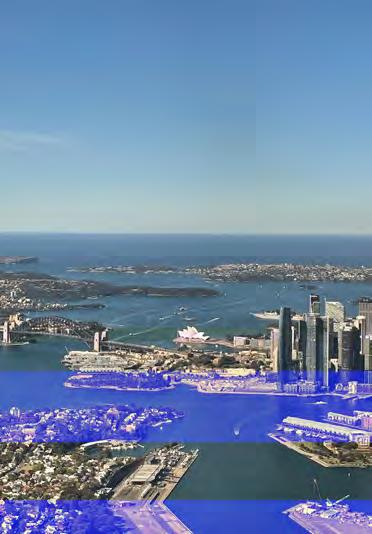

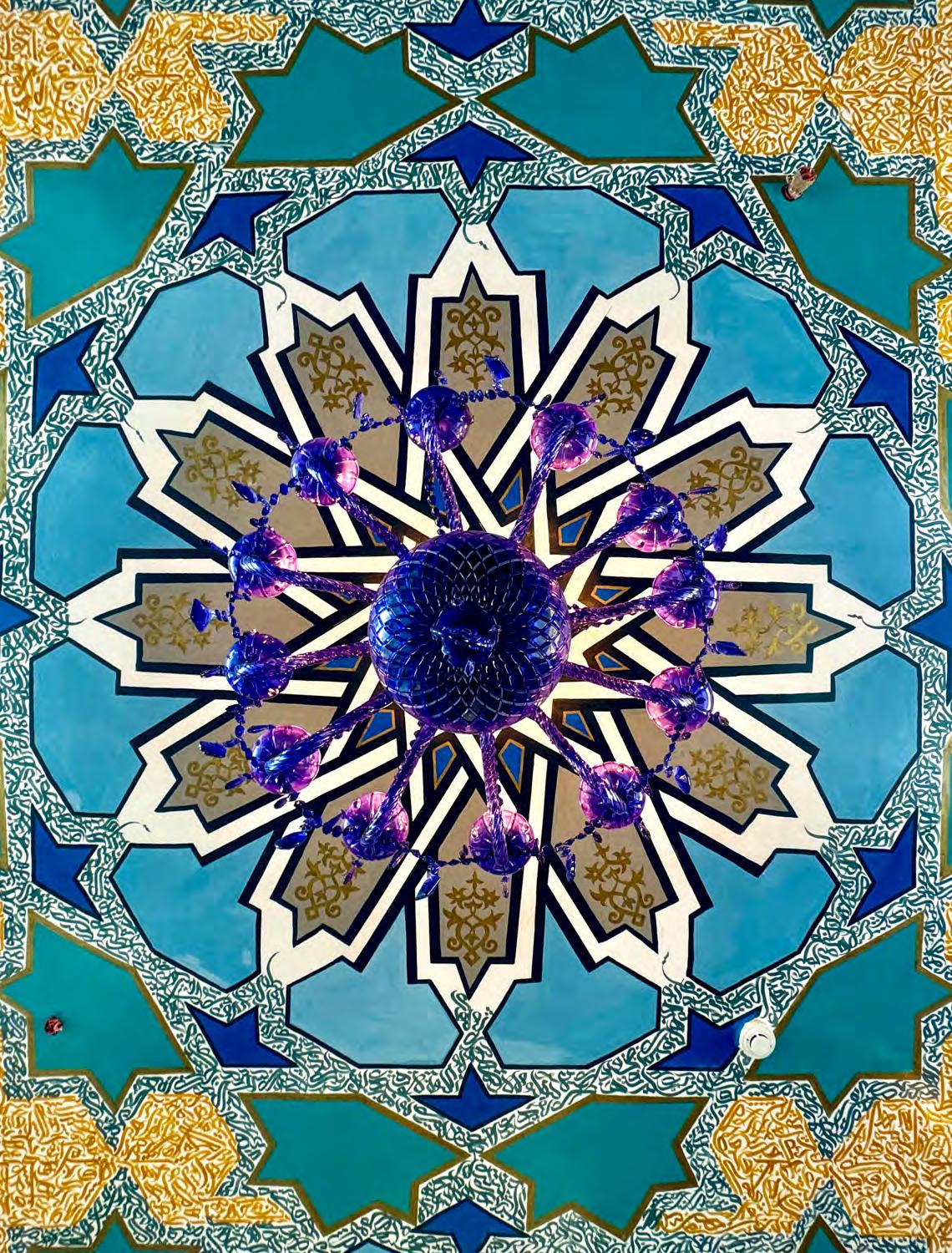
Words & Photography: Phoebe Holman
Egypt, one of the four oldest civilizations, is an ancient land steeped in Bedouin traditions. Whereas Dahab feels like a powerful fusion of culture and progression, a place where the past and future coexist harmoniously.

The long, winding road out of Sharm El Sheikh carries you into the heart of something more raw. Engulfed by towering, shadowy mountains for 90 kilometers, the road feels like journeying into One Thousand and One Nights folklore. It feels dramatic to arrive in the dark, like the start of a wild adventure; the anticipation lingers knowing that come the morning when the sun rises, so does a new world.
The Safir Dahab Resort was the first hotel stop, nestled on a natural lagoon just a five-minute drive from Dahab’s city center. Waking up to the view was spectacular; rugged mountains encircle the crystal-clear waters while palms and vibrant hibiscus layer the gardens in colour.
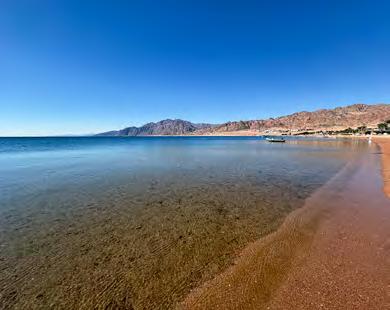
Out on the lagoon, the steady winds make this a paradise for wind and kite surfers. Onshore, the mountains embrace the right side of the bay, creating a sheltered haven for sun worshippers.
The Safir’s understated elegance and thoughtful amenities make it an ideal getaway for couples and families alike. It has it all: activities, spas and a variety of excursions offering no shortage of adventure or relaxation. The spa treatment I indulged in included a sauna, salt and coffee scrubs, a Turkish bath and a deep tissue massage - I floated out of my two-hour appointment.
When it comes to dining, the hotel offers a feast of flavors, blending traditional Egyptian cuisine with beloved Western classics. Masoor dal, labneh, falafel and eggs make for a savoury feast. The homemade apricot, date, and strawberry jams and the sesame and pistachio honeys are also not to be missed, not least when enjoyed with the freshly-baked breads.
I reached out to Hamedusha, a local fixer who had arranged my transfers. He took me to the infamous Blue Hole, nestled in the Southeast Sinai National Park, just 20 minutes outside the city along the coastal route to Abu Galum. Snorkeling or diving at this world-renowned site is unmissable.
As you enter the water, you immediately drop through a shallow canyon and follow the reef on the right into the Blue Hole. The waves carry you along on top of the underwater world, corals bursting with the sharpest colors on the right and a deep, hypnotic blue drop to the left. Plunging to a depth of 130 meters, the Blue Hole is a magnet for technical and free-divers alike. Whether you’re exploring its depths or simply skimming the surface, it’s a special site with so much to offer.
Back to Dahab city which hums with life - goats,
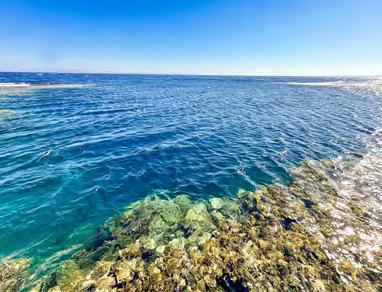
cats, dogs, cars and scooters weave through the streets as people go about their day. But just a five-minute walk down to the Eel Garden area, north of Lighthouse, lies the tranquil oasis of Nour Boutique Hotel. Upon entering Nour, any lingering hustle dissolves, replaced by an immediate shift in energy. The air carries delicate wafts of doTerra essential oils, wrapping you in a sense of calm as your eyes are instantly drawn to the stunning decor.
Everywhere you look, there’s something to marvel at. The interior is artistry. A blend of color, style and finesse comes to life through intricate patterns, artwork, tiles and handpainted furniture. It’s endlessly chic even down to the thick, elegantly draped curtains. The beauty of Nour lies in its authenticity - 90% of the decor is unmistakably Egyptian. Every detail sings with pride in its heritage, creating a space that feels both rich in history and uniquely its own. The most striking sight is the hand-painted ceiling artwork by Mido. The Rub El Hizb, (Islamic star) engulfs you as you enter, intricately decorated with the Arabic alphabet. This motif flows throughout the hotel, adorning the furniture with hand-painted lettering, showing respect for their culture in every room.
Ema, the hotel owner, warmly welcomed me and introduced Nada, one of the Egyptian Front of House staff. Nada’s kind offer of Turkish coffee
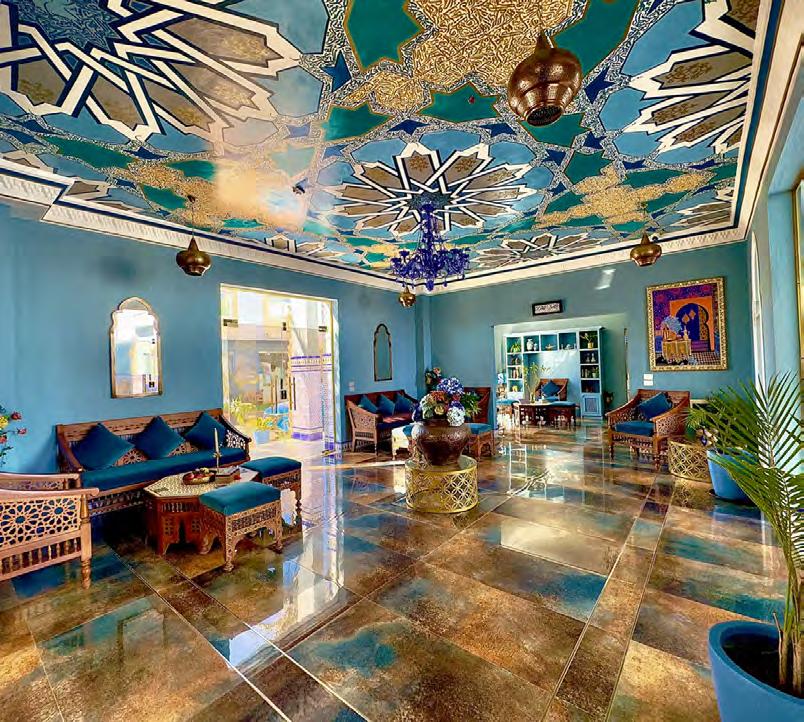
and dates set the tone for my stay.
Every room at Nour is beautiful and unique. Among the 16 suites, some boast horizonstretching balconies while others have poolside access. However, all have independently commissioned artwork. Ema’s touch is evident in every detail, bold blues, fuchsia pinks, and hand-painted furniture give the hotel a playful yet elegant Matisse-like charm.
The highlight of my room was the terrace, where I watched the full moon rise over the Gulf of Aqaba, behind Saudi Arabia’s Hijaz mountains. As night fell, ochre and rose hues faded, and the moon’s alignment perfectly echoed the hotel’s symmetry. Proof that its design was guided by the sun and moon.
Once settled, the lovely Shams, whose name means “sun” in Arabic, guided me down to the private beach, where we watched the full moon rise over the horizon. Arriving on the night of a full moon felt like more than mere coincidence - after all, Nour itself means “light.”
After the remedial display from the moon, I couldn’t wait to hear more from Ema the next morning. We put the world to rights over coffee in the awe-inspiring lounge area, and she told me about her rich history of living and working in the travel industry in Dahab. As a Scottish woman, married to an Egyptian both having worked in travel, wellbeing, and hospitality for
over 30 years, she claimed:
“Dahab attracts a certain type of people and the soul of it is exactly as it was in 1992, local, sustainable, real, and raw.”
You can tell people who visit Nour Boutique
“Shams, whose name means “sun” in Arabic, guided me down to the private beach, where we watched the full moon rise over the horizon”
Hotel are looking for something extraordinary, whether that be with the staff, the decor, the luxury, the location or the wide range of wellbeing offers. The hotel guests reflect that broad-reaching offering; it’s inherently multicultural with Egyptian, Gulf and international guests.
Ema explained that since the 2011 revolution, political and regional developments have significantly impacted Egypt’s economy, with the prolonged transition slowing growth. In
response, the Ministry of Tourism launched a domestic travel subsidy program (2013–2016), encouraging Egyptians to explore their own country. This initiative not only reduced reliance on international tourism but also made travel more accessible for those who previously couldn’t afford it.
Nour is in its soft opening phase, with an exciting new restaurant set to launch this spring. As a well-being hotel first, hospitality naturally follows, shaping an ever-evolving guest experience. The hotel itself offers a multitude of classes; massage, meditation, yoga and developing its wider retreat offer, too.
This hotel is so uniquely crafted; no two rooms are the same and the intent is for the hotel to continuously evolve. “I won’t say it’s ever finished—it’s a work of art,” Ema shares, and indeed, a work of art it is.The lobby and rooms showcase stunning commissioned pieces by Latvian artist Amalija Andersone, featuring Middle Eastern women, vibrant colors and wildlife, adding to the hotel’s style. “What is required will always appear.” This philosophy adds to the hotel’s mystery, reflecting the owner’s passion for crafting a feeling rather than just a space. It strikes me that when I gladly return, there may be new excursions, wellbeing pursuits, artwork or unexpected touches. This boutique hotel can never be replicated - nor will it ever truly be complete.
The true rapture of this place lies in its deep connection to the earth and its elements - a harmony that resonates in every detail. Upon my arrival, a taxi driver taught me the Arabic word for beauty, gamil, and I can’t think of a more fitting description. This hotel doesn’t just reflect gamil - it embodies it in every sense. An absolute must-stay in Dahab for those seeking both opulence and authenticity.
Knowing I had to experience the Wadi - the vast mountainous landscape surrounding Dahab - I was introduced to Malakot, meaning Kingdom of God. There was something profoundly spiritual about turning off the tarmac road, onto the sand, suddenly weaving through the very mountains I had been gazing at for the past five days. As the sun began to set, the granite and sandstone shifted in color, glowing amber and rose.
Our destination was a Bedouin camp for a full moon ceremony, an experience unlike any other. It began with a communal organic Temazcal sauna, where heated granite from the surrounding mountains served as the sauna rocks. After the intense heat, we cooled off in a natural oasis plunge pool, gazing at the starry sky. The evening continued with a deep sound healing session under the rising moon,
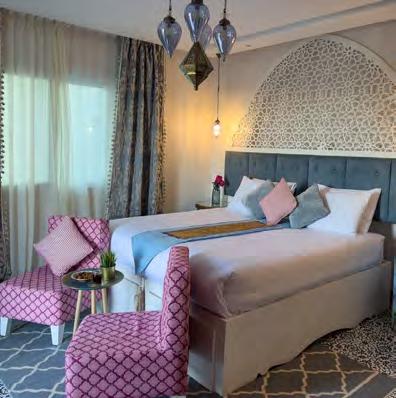
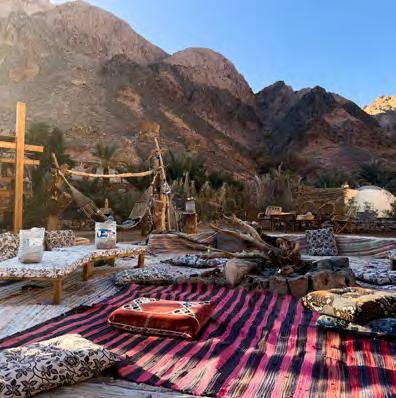
where voices, instruments, and resonance filled the air. Culminating in storytelling around a flickering fire. For me, the sound healing under the moonlight stirred thoughts of my ancestral lineage and I felt an undeniable connection to the ancient energy of this place.
The saunas are built directly into the land and you can trace the origin of this style to the indigenous people of Mesoamerica. Deefalla Sollyman, the Bedouin owner of Malakot, guided me through the site. Taking over from his father, his family has cared for this land for over 30 years. Cultivating date palms in the oasis and offering authentic mountain experiences for those seeking a deeper connection to the Wadi.
Deefalla explained that the Mzeina Bedouin tribe - the largest Bedouin group in South Sinai - has lived and operated in this Wadi for over 300 years. Visiting Malakot is a profound encounter with oneself and the land, it leaves you enriched and questioning. (Deefalla Pic)
On a quest to deepen my connections to the natural world, having heard so much about the marvels of the Red Sea, I was excited to descend from the mountains and dive into the ocean. Thanks to PADI (Professional Association of Diving Instructors), I was connected with
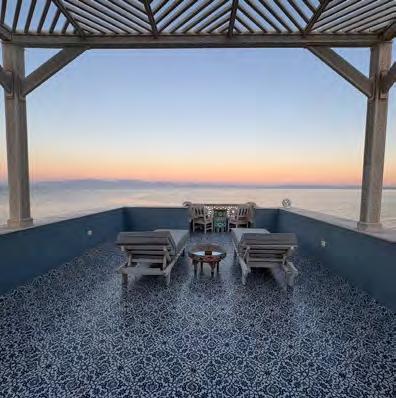
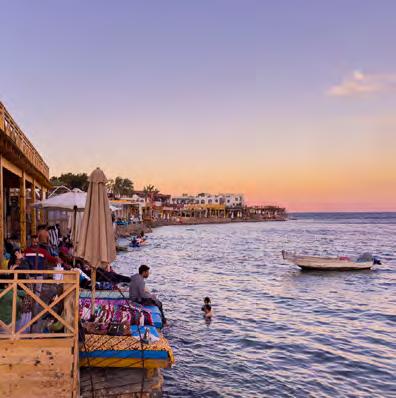
SlyDive, a Green Fins-accredited dive center in Dahab. Co-owned by Karim, the Training Director who is also a captain/actor and UNFPA ambassador alongside other partners who have equally as impressive CVs - a dive instructor, a geologist and another captain - this centre exudes expertise.
Dive centres can feel intimidating as a solo female traveler but at SlyDive, I was met with warmth, fun, and engaging conversation. My 1:1 instructor, Diaa, had an impressive background in pharmacology and human psychology, which he used to understand my reactions deep underwater. I instantly felt at ease as we went through the reactivate PADI programme for my advanced status, set up the kit, and went through the diligent dive briefing. Thorough, calm and intellectual, he made the experience seamless.
Our first dive was off the Lighthouse area, a stretch that feels like an Arabian Sorrento, (Dahab Lighthouse pic) with beach cafés lining the rocky coast. Entering the water, at three meters I was immediately engulfed by a shoal of a thousand tiny fish, unexpected in the shallows. As we swam deeper we passed coral farms and an underwater museum of Pharaoh statues featuring Horus and Bes (the sky and protector gods, respectively), descending to
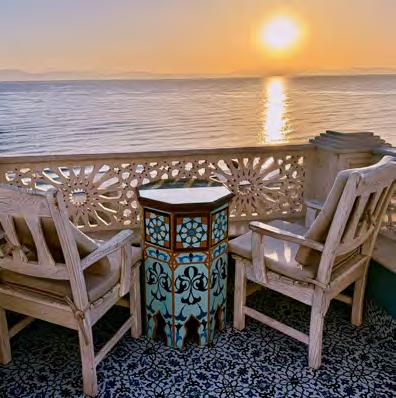

27m, where an elephant sculpture lay. These recycled-material statues serve to pay homage to ancient civilisations whilst diverting divers from fragile coral reefs, providing new habitats for marine life and allowing areas like the popular Blue Hole to regenerate. At Mashraba, another underwater museum awaited, surrounded by pufferfish, angelfish, and vibrant anemones.
The most exhilarating dive was The Canyon, located in the national park. Descending along the reef, I found myself hovering over what seemed like a tiny cave. As I carefully deflated, moving upright into the narrow space, the descent felt both thrilling and trepidatious. At 30m, I swam through the underwater canyon, with Diaa’s torchlight illuminating hidden shoals. Looking up at the narrow opening we had just passed through, it felt impossible that we had made it down with our gear - a testament to skill and control.
Currently, 70% of dive sites are within Marine Protected Areas, yet only 15% are fully protected. SlyDive champions respectful dive tourism, using adventure as a tool for ocean conservation. They even host Ocean Dive Cleanups, offering free dives for volunteers clearing plastic and debris. Their efforts extend beyond divers as they focus on including locals too. Calling on the Bedouin to participate,
ensuring even non-swimmers can join through beach cleanups, showing again how Dahab’s communities come together to protect their precious land.
With Sinai’s strict environmental regulations, restoration projects can be challenging. Yet, SlyDive is pushing boundaries, proving that progressive conservation and world-class diving can go hand in hand.
After all the activities, you quickly work up an appetite. The local fare is fresh, flavorful, and deeply satisfying, with something for every craving. For a beachside Egyptian breakfast, Coral Coast is a must. Their spread is vibrant and unctuous; falafel, roasted vegetables, Aish Baladi (local flatbread), mutabal (a smoky aubergine dip), and eggs cooked to your liking. It’s the perfect fuel for a day of Dahab adventures.
For seafood, I visited Darwish Fish Restaurant

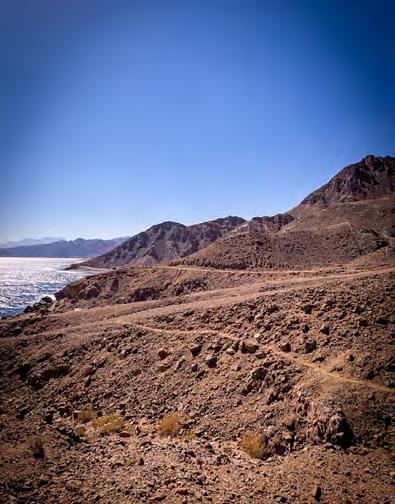
and Shark Restaurant. Darwish had a more authentic, local feel, with a simple but satisfying process - choose your freshly caught fish (delivered just hours before), have it weighed and enjoy it lightly fried, served with rice and tahini. Shark catered more to tourists but offered excellent service and a relaxed dining experience. Garlic butterfly prawns, perfectly grilled dorada and tender squid, all served with flatbreads, rice and an array of Middle Eastern dips. Absolutely delicious.
The restaurant that truly stood out for me was Seaduction, a Lebanese gem in Assalah. I sampled the chicken makloubeh - a fragrant spiced rice dish; the fattet shrimp was an unexpected yet addictive combination of shrimp, yogurt, chickpeas, nuts and fried pita. The sujuk is a Lebanese spiced beef sausage glazed in molasses. These dishes felt deeply traditional yet excitingly unfamiliar, offering bold new flavors and textures that satisfied every sense.
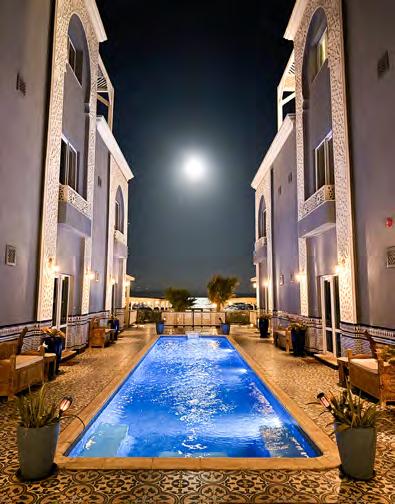
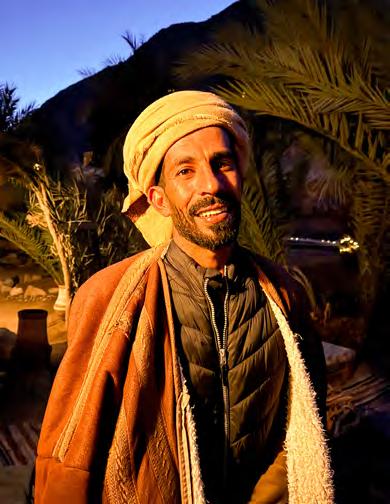
February seems like the perfect time to travel to Dahab, a distinct lack of crowds and a perfect temperature, but it’s not for the faint hearted, the further you venture away from the shelter of the mountains, the breeze gets stronger. Perhaps it’s nature’s way of keeping one alert.
Dahab means “gold” in Arabic, and I’ve found myself drawn to the Middle Eastern proverb: “If silver is speaking, then gold is listening.” The true wealth of Dahab isn’t in tangible gold, but in the quiet wisdom the place imparts - if you take the time to listen you are compelled to hear its messages: of community, harmony with nature, multiculturalism, classlessness, and beauty. There is much to learn, whether from the splendor of its antiquity or the progressiveness of its people. Gold, Mother of the World - or in Arabic, Dahab, Om El Donya feels like the perfect name for this place, where the land, sea, and culture come together in a harmony as rich and timeless as gold itself.
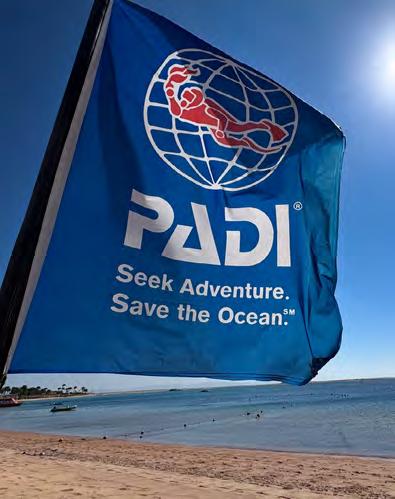
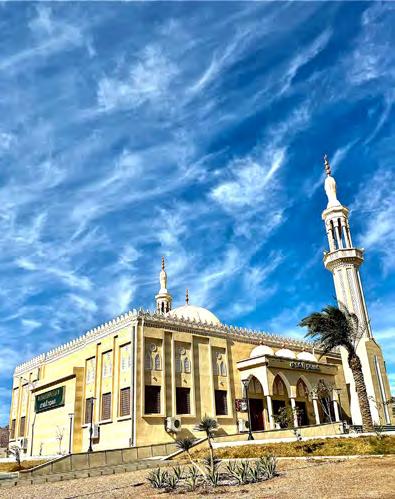


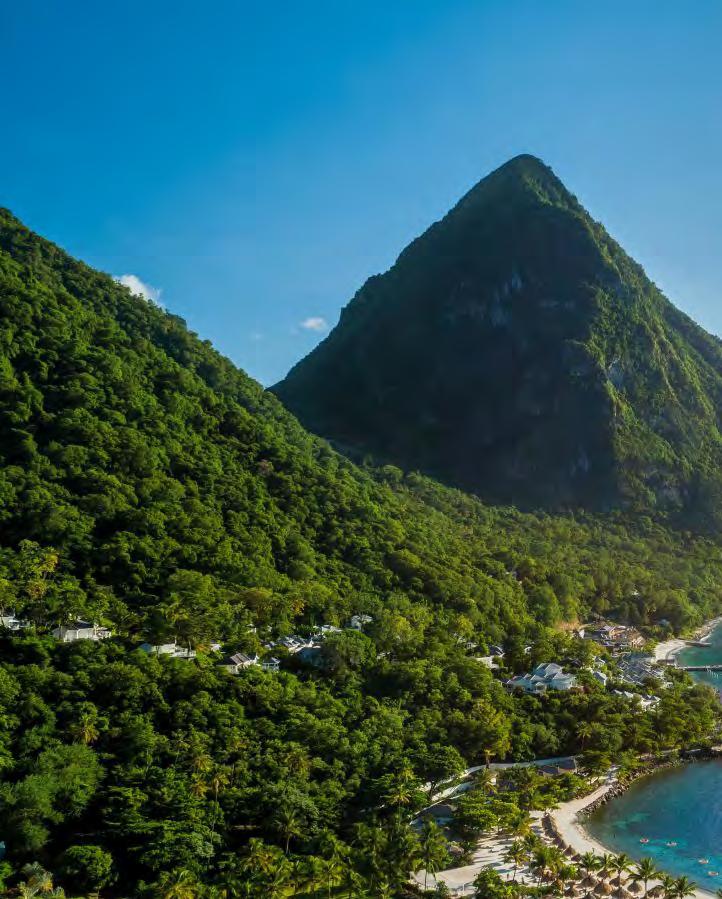

Words: Sarah Morgan - Global Travel Editor
The Caribbean has long been part of my soul food, strongly influenced in my 20s when I was part of a marketing team tasked to ignite tourism from the UK to the key islands of Barbados, Jamaica, Antigua and St Lucia. The two tapered volcanic Piton Mountains were chosen as the iconic image to entice travellers to the region, and were etched into my mind as a bucket list destination. But whilst I have travelled to many of the stunning islands of the West Indies, St Lucia has eluded me for over three decades, leaving me with a slight niggle that I may have missed the moment to see her at her best.
The mango-shaped island - only 27 miles long and 14 miles wide - was born from volcanic origin and is fringed with soft sandy beaches, golden in the north and dark silver in the southwest. However, the iconic beaches are merely a gentle introduction to the immense beauty of this island.
Lush rainforest covers a large swath of St Lucia, with waterfalls, lofty mountains and deep valleys creating a natural topography that has, in large part, been the island’s greatest asset and saviour. It has protected her from overdevelopment and allowed Mother Nature to stay truly in charge.
We arrived at the tail end of Storm Brett - a potent reminder that nature still has a firm grasp on the everyday lives of St Lucians and travellers alike, particularly at the start of hurricane season.
My first impression, after a pleasant transition through the small and intimate Hewanorra International Airport and on the one-hour transfer, is of an island that has successfully managed to embrace the hospitality industry, yet not sold her soul in the process.
World-class hospitality has been gently and sympathetically woven into the fabric of the island, with a palatable authenticity and harmony appearing still intact.
“On earth, there is no heaven, but there are pieces of it.” - Jules Renard
Our first stay is at the incredibly chic Sugar Beach, A Viceroy Resort in the south of the island.
Set in a former, 100-acre sugar plantation on the southwest coast of St Lucia, near Soufriere, this stunning resort sets the bar for luxury.
And I mean luxury. The highest echelons of opulence are present and correct across all the pillars of resort design, service, facilities, restaurant choice and standards, but perhaps most luxurious of all is its unique and breathtaking location.
The resort sits nestled in the rainforest valley between the UNESCO World Heritage site of the two magnificent Pitons. These twin grand masters of the island rise skywards to emerge like gentle giants, holding the heart of the resort in its grasp.
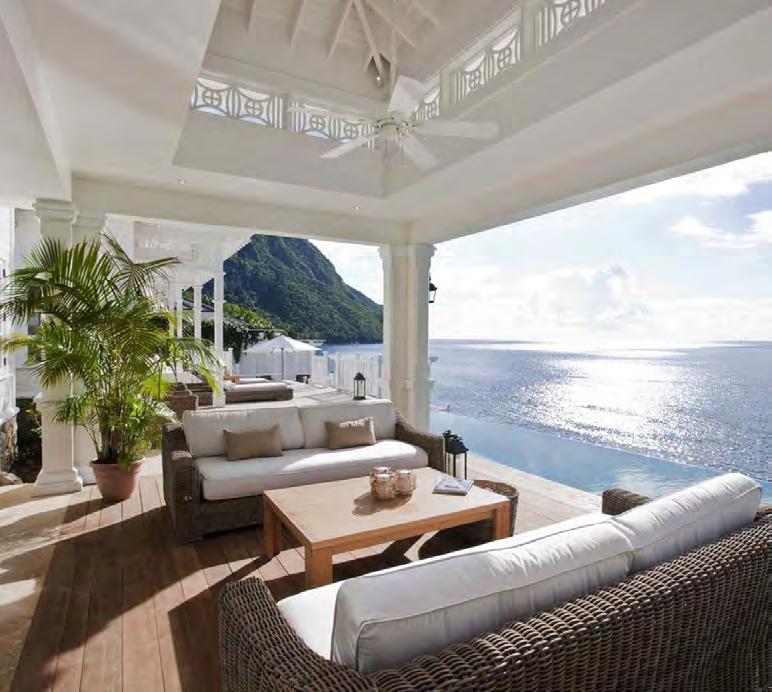
For me, arriving at this resort - having lived with the imprint of this image for over 40 years was a moment that will stay with me forever. Awe-inspiring and humbling all at once, and the ideal introduction to a stay that was long, long overdue.
The resort offers a collection of 149 guest suites, cottages, villas and newer residences, all built sympathetically into the mountain landscape and immaculately designed to ensure that every guest feels a sense of discreet personal space, tranquillity and harmony.
Our beautiful one-bedroomed plantation-style villa had a peaceful lounge, as well as a most impressive four-poster bed in a lofty bedroom, a shower large enough for a rugby team (sadly none in sight), a walk-in dressing room and an elegant slipper bath, all wrapped up in pristine white décor and dark wood furnishings with evocative black and white photography of the island-dotted around the villa.
However, the most exquisite moment was stepping out onto a vast marble terrace with plush sun loungers - our private plunge pool overlooking the beach below and a panoramic view of the Pitons framing the Caribbean horizon.
It’s moments like these that after 40 years in the travel industry, I remember what a privilege it is
to travel and to get up close and personal with all that the world has to offer. It’s an endless source of inspiration, driving us to pack a bag with an open heart and explore and expand.
The villa comes with our very own butler, Nymaki, who takes care of us with such warmth.
“There is a genuine sense of peace and expansive space wherever you explore.”
Be it a restaurant booking, an excursion, or recommending one of the most potent rum punches I have ever tasted from a beach boat bar that comes every day to tempt the pampered guests.
There is a genuine sense of peace and expansive space wherever you explore, be it the beautiful gardens with Calabash and Shak Shak trees, the two immaculate white sand beaches or The Rainforest Spa built of tree houses and

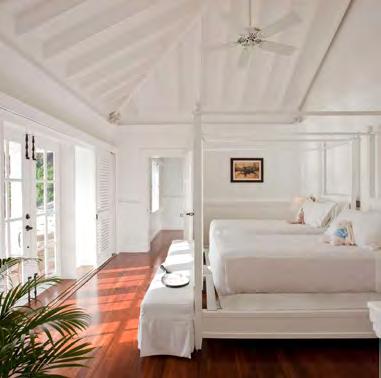
walkways into the natural rainforest with its peaceful waterfalls and abundant birdlife. The gym also offers a grand state-of-the-art fitness suite with an outdoor yoga deck and a fitness schedule to suit most tastes… if you can drag yourself away from your sun lounger.
If you get bored of beach life, you can stumble a few yards to the peaceful pool. Here you’ll uncover gentle underwater music and a collection of cabanas that offer an even greater level of discreet space, with packages of goodies to enjoy as you relax.
By night, the resort energy evolves into an elegant boujee vibe with beach fires, cocktails and live music. The restaurant choices range from the relaxed Bonte Restaurant on the beach to the elegant fine dining at Saltwood or the Asian fusion Cane Bar. The Saltwood menu was pristine and thoughtful with the highlight being a tomato gazpacho with basil oil, served with a salmon mousse and a glass of Chateau Miraval. The Cane Bar is a chic restaurant with a Southeast Asian menu, offering a variety of intensely flavoursome small plates including sushi, maki rolls and sashimi - perfect for sharing.
Leaving this beautiful resort after just a precious few days by boat to head north was

a wrench that I can’t deny. To look back and see the magnificence of the Pitons with Sugar Beach nestled between these giants is soulstirring and a hard act to follow.
I plan to return one day to experience this little piece of heaven again at the brand new residences that are currently being finished; an encounter I’m sure will deliver a whole new level of sublime.
“I’ve learned that home isn’t a place it’s a feeling.” Cecelia Ahern
Our journey to the next stay was partly by exhilarating high-speed water taxi up the Caribbean west coast to the quaint and intimate Marigot Bay, before we headed North on the interior roads through the twists and turns of the island. It was another wonderful opportunity to glimpse the raw natural beauty of this rainforestwrapped island.
Our home for the next few days is C’est La Vie, situated in a quiet residential area close to one of the key yachting hubs of Rodney Bay.
Arriving at C’est La Vie is like coming home
with the warmest welcome and a gentle hug. This grand colonial-style plantation house offers uniquely designed and flexible accommodation, including the traditionally decorated threebedroom Flamboyant Villa with a master suite that spills onto a beautiful veranda, a separate spacious one-bedroom apartment at garden level, and a standalone one-bedroom cottage on two floors set in the grounds.
C’est La Vie is the perfect space for large family gatherings or group bookings of up to 10 guests.
The house sits elegantly in its own abundant and serene tropical garden with a large free-form swimming pool and its waterfall. The house also has access to a secluded beach and cove for snorkelling and beachcombing.
What sets this property apart on the island is the dedicated team and exceptional personal service, led by the charming Sherma. The small passionate team is attentive without being intrusive, always accessible to assist guests throughout their stay with a highly personalised service.
Everything is taken care of, allowing the houseguests to completely relax with a private chef to prepare the most amazing meals and a concierge service to assist with any plans.
Everything about this property screams authentic Caribbean. Without the distractions of a resort or larger hotel, I found an inner stillness and equilibrium here in this grand house that is a rarity for me.
C’est La Vie, creates a wonderful space that allowed me to work yet still feel rested and rejuvenated at the end of our stay. It may not have all the bells and whistles of the more contemporary properties on the island, but its romantic grandeur and attention to detail and heartfelt pride from the team is exceptional.
My favourite moments included enjoying the most stunning creole breakfast, (gluten-free versions lovingly created), and trying a variety of
stunning wines from their world-class wine list of over 220 bottles hand-picked by the team’s passionate young sommelier.
“Luxury is in each detail.” Hubert de Givenchy
A short drive to the northernmost tip of St Lucia is the Cap Estate, one of the most exclusive areas on the island, where we arrived at the understated boutique resort of Cap Maison. A low-rise hacienda-style property, the estate sits in a stunning bluff location in a captivating natural cove that overlooks Pigeon Island.
The resort is a foodie paradise and a favoured destination of the celebrity set due to its exceptional service levels and its discreet yet intimate atmosphere.
With just 50 exquisite rooms and individual villas each offering the ultimate in privacy amid luxurious space and matched by exquisite attention to detail, this resort was an absolute delight.
Our distinctive Ocean View Suite with Pool and Roof Terrace reveals itself gracefully over 3000 square feet of thoughtful space; a magnificent kitchen, dining and lounge area, decorated in a mix of Caribbean and Mexican styling, that spills out onto a relaxed terrace. A vast four-poster bed sits majestically beside a second

outside terrace and a stunning en-suite marble bathroom, complete with bathroom robes that felt like silk and products worthy of taking home.
But the ultimate sweet spot, after a short climb up an innocuous winding staircase, was a vast roof terrace with its immaculate sun loungers; a chic covered sitting area and yoga space and a large plunge pool with a massive 270-degree uninterrupted view of the Caribbean Sea. Pure bliss.
The Cap It All Inclusive package is a definite yes from me, allowing guests to graze across the resort - be it the relaxed ‘toe in the sand’ moment at the Naked Fisherman beach grill
at the small beach area or dine at the islandrenowned Cliff at The Cap.
Executive Chef Craig Jones, classically French trained but St. Lucian-inspired, and a long-time island resident creates innovative, contemporary food within a perfect Caribbean setting and emphasising local, fresh ingredients.
His signature dishes include Ceviche of Reef Conch and Ahi Tuna with a mango balsamic jus, Kurobuta pork belly with Razor Clams and squid served with coconut foam.
For special occasions, I can recommend two highly personalised experiences that are real showstoppers. The first? A private chef

who prepares and serves a delicious bespoke three-course meal with your favourite wines on your roof terrace under the stars. The second is the Cellar At Cap experience with Robbie, the resort’s sommelier who passionately creates the most extraordinary four-course meal served in the resort’s very own cellar, with wines paired perfectly from their collection of more than 2000 bottles. The rock shrimp risotto was a culinary masterpiece.
This particular evening we had the added delight to meet the man responsible for managing this immaculate resort.
Ross Stevenson is a gently spoken man and a powerhouse of the hospitality industry, who exudes a passion for excellence that has been hard-earned from crafting some of the very best resorts around the globe including Gleneagles, The Royal Crescent, Cliveden Group and Cobblers Cove in Barbados.
His humbleness is a foil for the dedication and strong leadership that has him conducting this orchestra of understated perfection.
On our last morning, I sat looking out over the clear azure waters of the Caribbean Sea, mesmerised by the soaring birds and the intoxicating horizon.
In that one moment, I felt surrender to a depth of calm and inner tranquillity that was pure bliss. A feeling that comes from the effortless delivery of excellence-wrapped raw natural beauty.
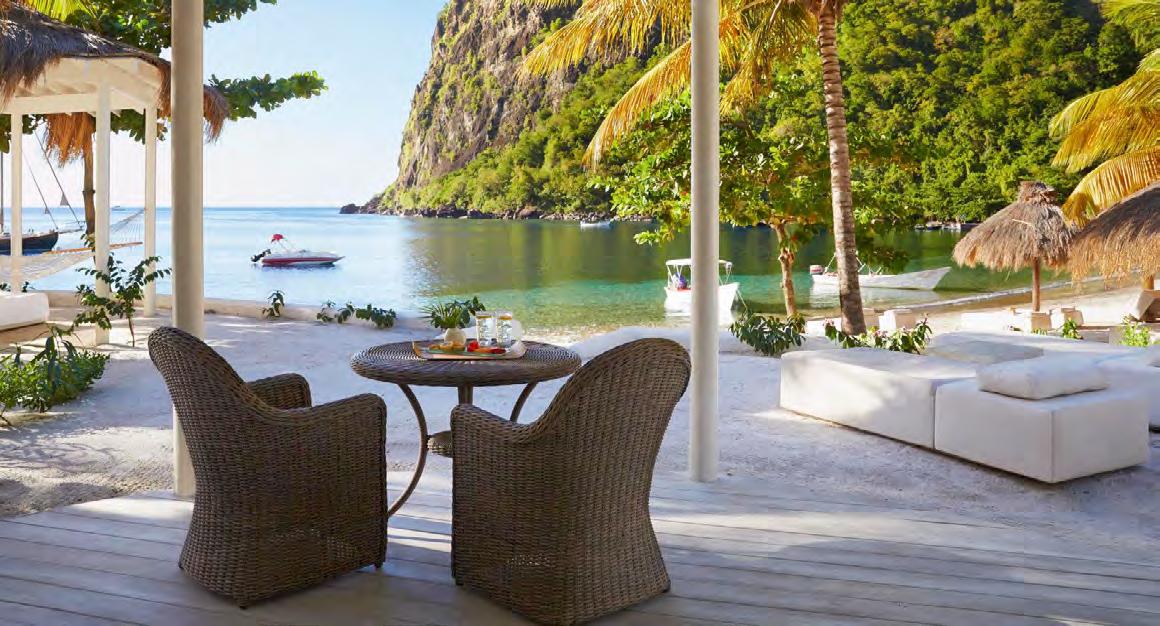
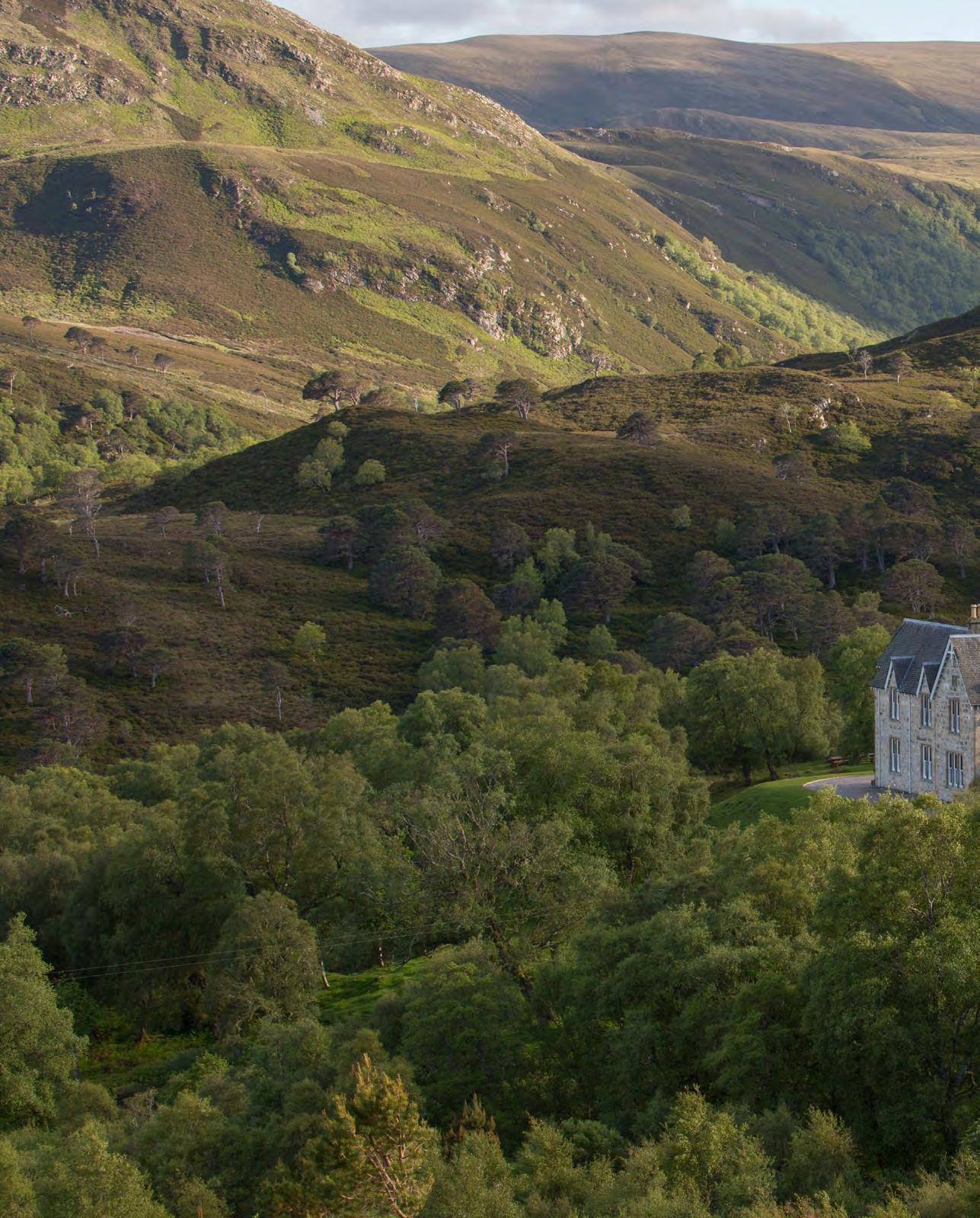
“This isn’t an estate. I despise the word ‘estate’. This is a wilderness reserve”.
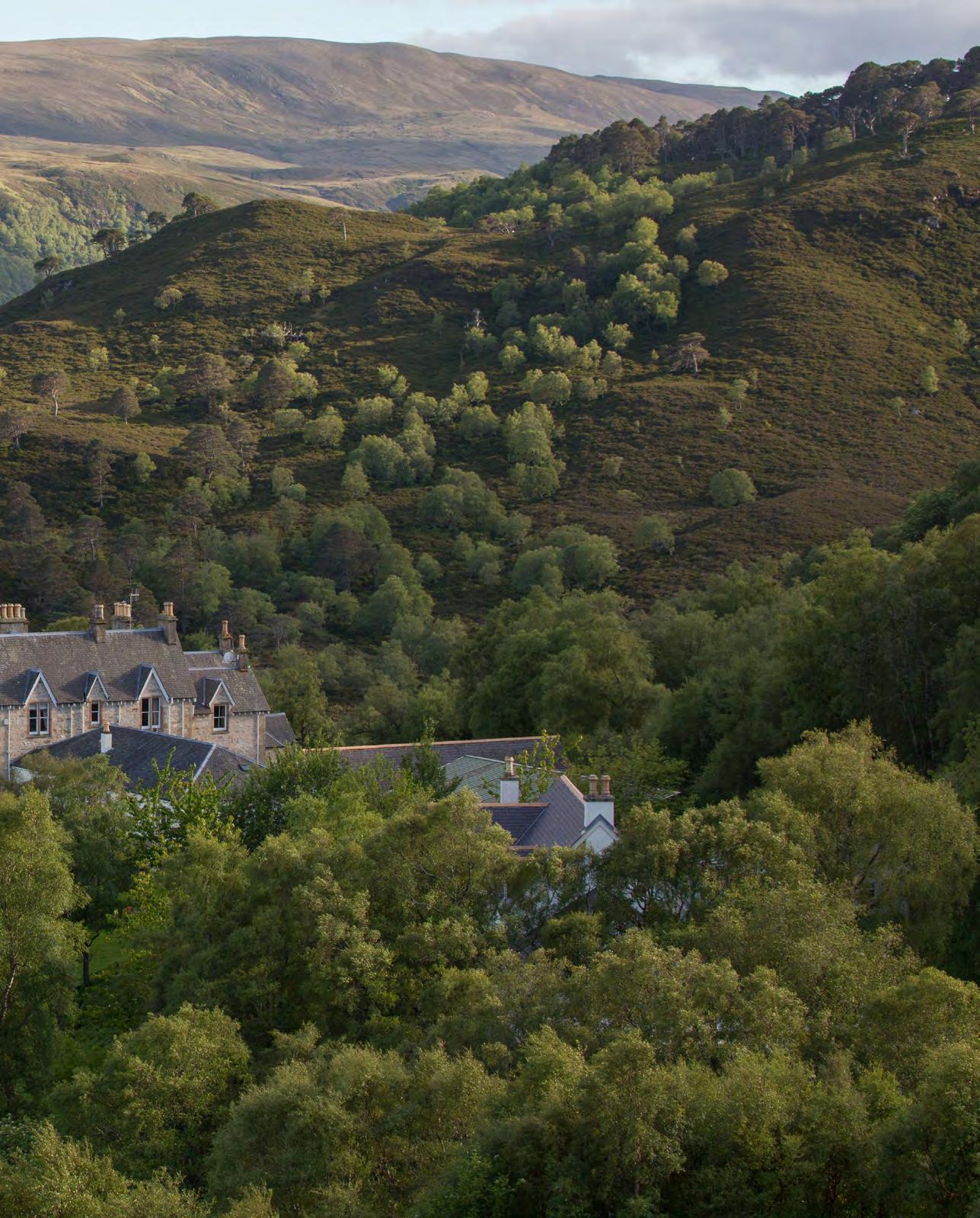
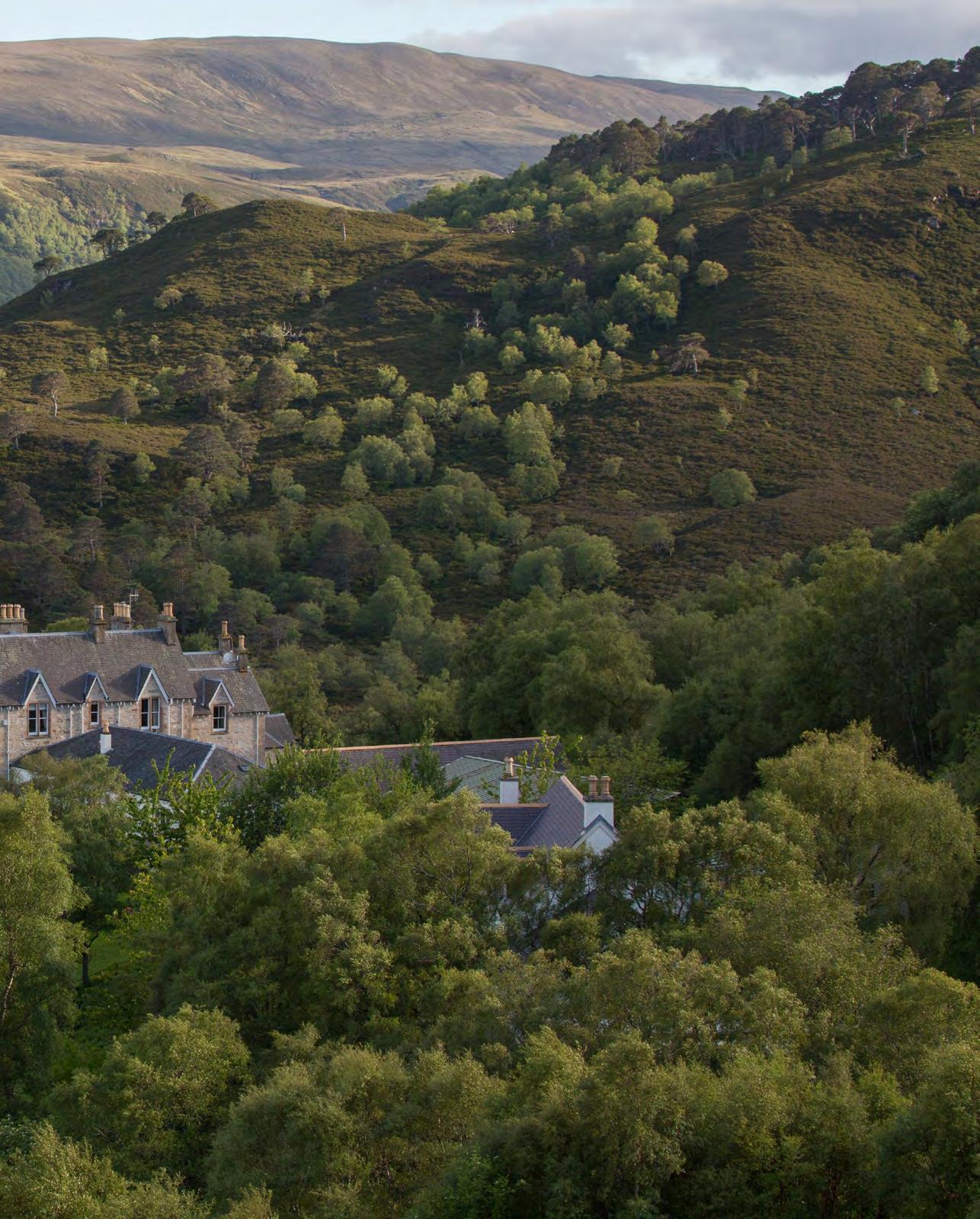
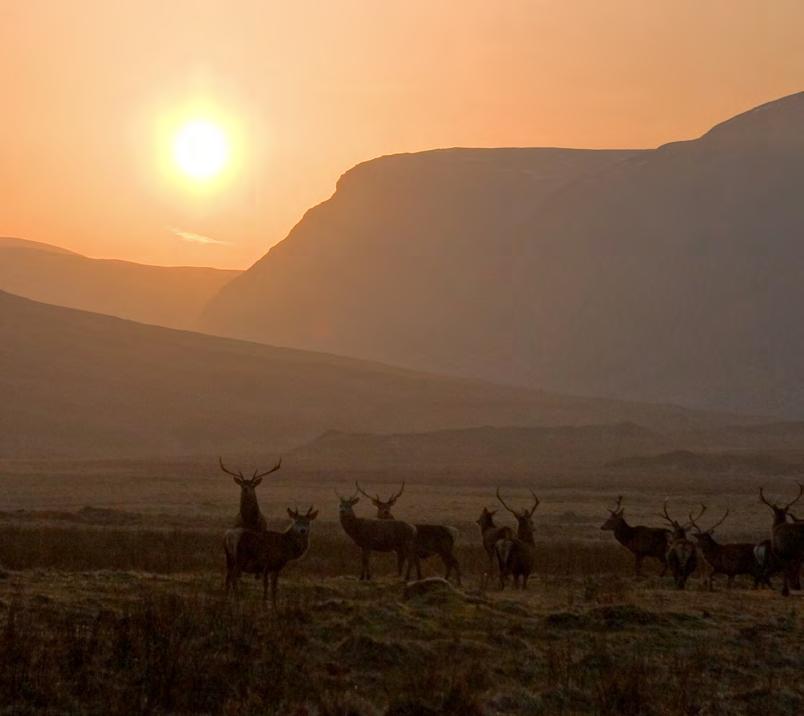
“This isn’t an estate. I despise the word ‘estate’. This is a wilderness reserve”.
Paul Lister, the rather eccentric and very present custodian of Alladale Wilderness Reserve - a vast stretch of flawless heathery glen in the Scottish Highlands - defines much of Alladale and his place in it through what it and he is not. It isn’t a traditional Highlands retreat, as there is no deer stalking, grouse shooting, salmon fishing or hunting of any kind. He most certainly is not an entrepreneur, as he often tells me, but rather a passionate conservationist and ‘something of a tree hugger’. The reserve doesn’t feel the need to set strict - or even particularly loose - itineraries for its exclusive reserves, preferring to go with the flow of its guests’ whims and desires. It also isn’t à la carte in a gastronomic sense. Want chicken, beef, pork, turkey, duck or lamb for dinner? Tough. The only meat on offer is wild venison.
The list could go on.
It quickly becomes apparent, however, that for all that it isn’t, Alladale Wilderness Reserve is defiantly carving itself a fascinating niche in its own breathtaking surroundings.
At first glance, it’s exactly what you’d expect of a high-end Highlands retreat. The Victorian greystone hunting lodge (the largest and most communal of five beautiful accommodation
options on site) is suitably grandiose; my vast bedroom sweeps its way past teak writing desks, wingback armchairs and claw-footed bathtubs to imposing windows overlooking the kind of view that sets a certain type of Scotsman’s kilted legs a-tremble. Rushing rivers, teeming
“Alladale wholeheartedly embraces the notion of the retreat as an honourable pursuit for invigoration, education and self-realisation, with plenty of room for the luxurious flourishes one might expect.”
with silver-sleek leaping salmon? Check. Purple-capped mountains and deep valleys, over which soar golden eagles? Check. Honestto-goodness Monarch of the Glen-style red deer stags leisurely strutting across the lawn? You get the gist, I’m sure. As far as retreats in the northernmost tip of Great Britain go, Alladale packs a remarkable punch, looking
for all the world as though you’ve stepped into the watercolour image on a pricey tin of shortbread.
A second, third and fourth glance - as well as the inevitability of being drawn into conversation with Paul over a glass of wine during your stay - will reveal the many, many facets and complexities that make Alladale Wilderness Reserve such a remarkable endeavour, and one well worth heading north to experience.
Most obviously, there’s the fact that - as already firmly established - this isn’t a hunting or fishing estate. That in itself, considering where Alladale is located, marks it as something of a true original. The reserve is an ecotourism venture in a corner of the country where such concepts aren’t exactly de rigueur, but where one suspects approaches such as rewilding, unique approaches to deer management, peatland restoration and carbon offsetting may become nothing short of essential to ensure their survival.
There’s also the fact that Alladale wholeheartedly embraces the notion of the retreat as an honourable pursuit for invigoration, education and self-realisation, with plenty of room for the luxurious flourishes one might expect. A new yoga centre has just been unveiled, and an earlymorning session of flow yoga and somatic breathing exercises kick-started each day with other guests eager to make the most of even the earliest hours.
After an hour of guided stretching, horizontal nervous system discombobulation (yes, really) and various joint-clicking vinyasas, a communal breakfast immediately follows in the spacious dining room. Here, the guests sit around a huge round table and take our fill of fresh fruits, vibrant juices, home-baked bread and beautifully lean and soft venison sausages, the picturesquely-antlered denizens having been expertly butchered on site and prepared by Natasha, the in-house chef. Other mealtimes (heralded by Paul crashing at a mighty gong, in yet another splash of the eccentric) follow an identical communal style and feature astonishingly hearty, warming and comforting dishes crafted from the estate’s gardens, foraged from the forests, and hunted by the groundskeeper who must - as part of restoring the natural balance of the glen’s ecosystem - ensure the deer population is carefully managed for its own health and success.
Once fully fed and with various chakras opened and spinning happily, if you’re so inclined to believe, it’s time to head out onto the reserve.
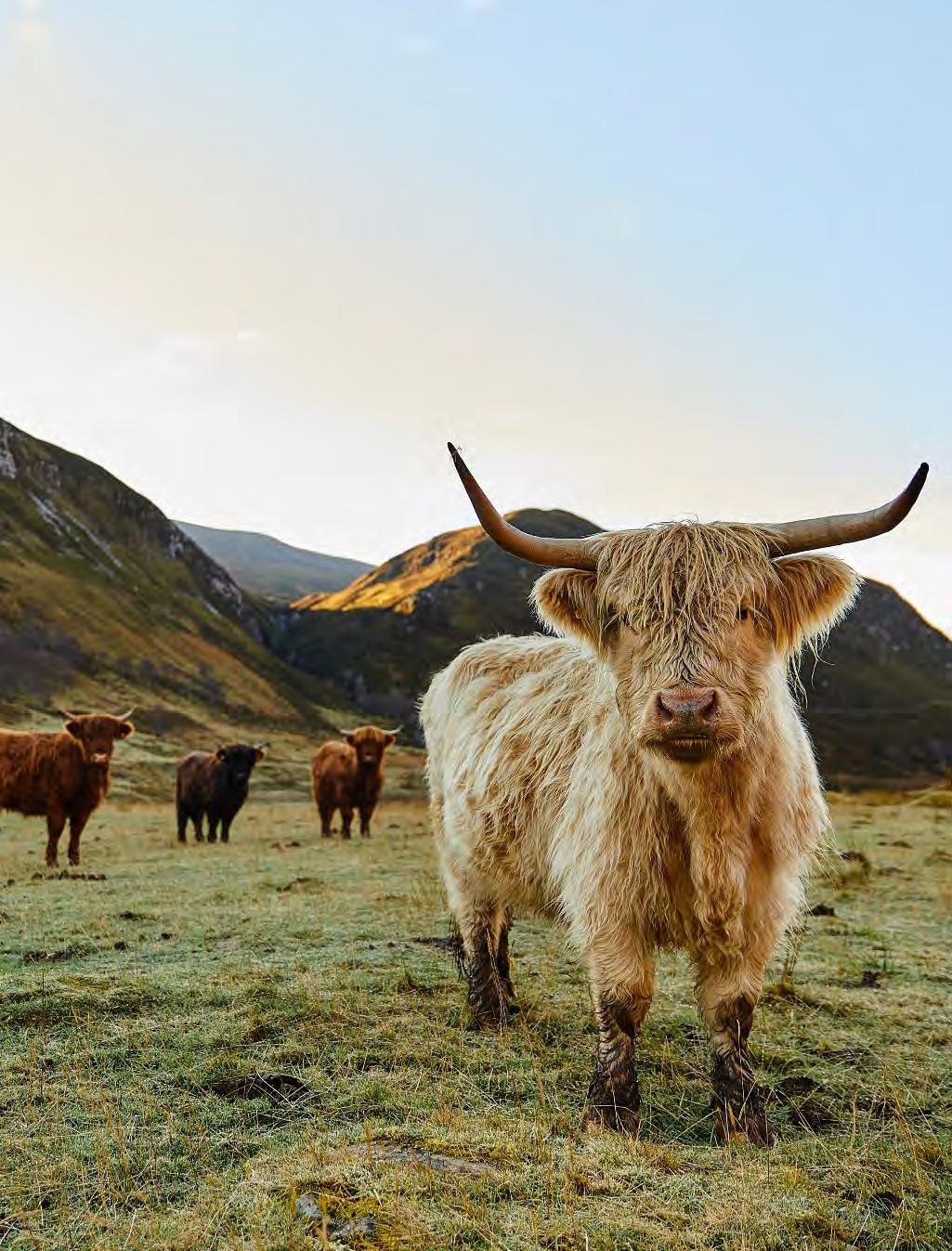
Rushing rivers, teeming with silver-sleek leaping salmon? Check. Purple-capped mountains and deep valleys, over which soar golden eagles? Check.
Alladale offers an impressive range of day trips and activities for its guests, each tailored to present the various attractions inherent to the landscape and location. There are birdwatching retreats, where avid twitchers can gaze upon golden eagles and hen harriers, as well as the iconic grouse, ptarmigan and capercaillie game birds found in the area. There are stays built around various wellness practices and yogic disciplines, and educational visits based on Paul’s impassioned projects involving rewilding and the concept of reintroducing apex predators (Paul Lister is the very man behind the ongoing discussions involving bringing wolves back to the Scottish Highlands).
Day trips to other Highland locations and hotspots can be arranged with the reserve’s fleet of Range Rovers, and specialised retreats for photographers, stargazers, foraging gastronomes and even music enthusiasts are on the cards. Indeed, the week following my stay, Paul was inviting Hungarian piano superstar Balazs Havasi to Alladale, where the composer would spend time with fans and guests, providing entertainment on the baby grand in the drawing room. The week prior, a Leica photography retreat, which captured some of the best images of the Aurora Borealis
I’d ever seen, was held for the first time.
They’re the kind of bespoke and exclusive experiences the lodge - which cossets its inhabitants in timeless comfort far from the bright lights and fast pace of the city - does so very, very well.
My day out in Alladale was a fascinating tour of the reserve itself, hosted by Ryan - a local lad packed to the hilt with in-depth knowledge and insight - which took in the most impressive views of the glen and snow-capped mountains, as well as some visits to many of the projects currently underway. Our small group saw where Paul’s team was reforesting areas of the glen, which centuries ago would have been covered with a dense and varied array of trees, but which were left bare during the Highland Clearances of the 18th century. It’s an impressive endeavour which looks not to the next decade of sustainability, but to at least a century into the future.
We were taken to the river, currently being replanted to ensure the survival of the wild salmon populations which are at critically low numbers due to rising water temperatures, and then onto the Scottish wildcat breeding programme underway deep in the valley. Alladale has an affinity with indigenous
predators, and while Paul no longer holds much hope of seeing wolves return to his property, improving the gene pool of the critically endangered wildcats is very much a recent success story. The felines themselves are bred in a large enclosure (to stop them breeding with domestic cats - a leading cause of their decline) before being released into their natural habitat. It’s a thrilling encounter, and a remarkable passion project to witness first-hand.
We bundle off-road further through the wilderness, stopping to pose with a small herd of Highland Cattle - surely the world’s most photogenic and thus photographed bovines - before heading into a small fisherman’s hide. There, we’re surprised by the hospitality team, who have prepared a cosy and candlelit stop in which to warm ourselves with pots of tea, homemade cakes and, of course, a dram of locally-distilled single malt. It’s a lovely flourish, and one which highlights the attention to detail that goes into ensuring a memorable stay.
Upon returning to the lodge, the gong sounds and reverberates through the building. Dinner (a venison curry, complete with trimmings of homemade samosas and greens from the garden) comes with a choice of excellent wines

and spirits, more anecdotes and plans for ambitious projects in Transylvania, Belize and Chile, and a chance for the guests to exchange stories and experiences. A film about bears living on the outskirts of Rome, produced by Paul Lister during one of his partnership trips to Abruzzo, is shown in the small cinema, and the remainder of the day is spent at will.
Once the final credits of the bear documentary rolled, I poured myself another single malt, luxuriated in the bath, doused myself in locally-crafted heather and wild nettle toiletries, and headed out for another walk. The first snows of the year fell, another stag languorously crossed my path, and the air - so crisp, clean and soul-affirming - provided a lasting reminder as to why the Scottish Highlands remain an unmissable and perennially popular escape from the city.
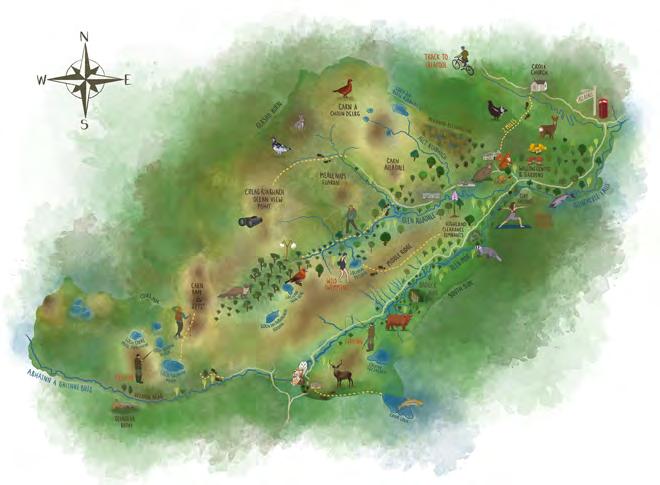
“Upon returning to the lodge, the gong sounds and reverberates through the building”
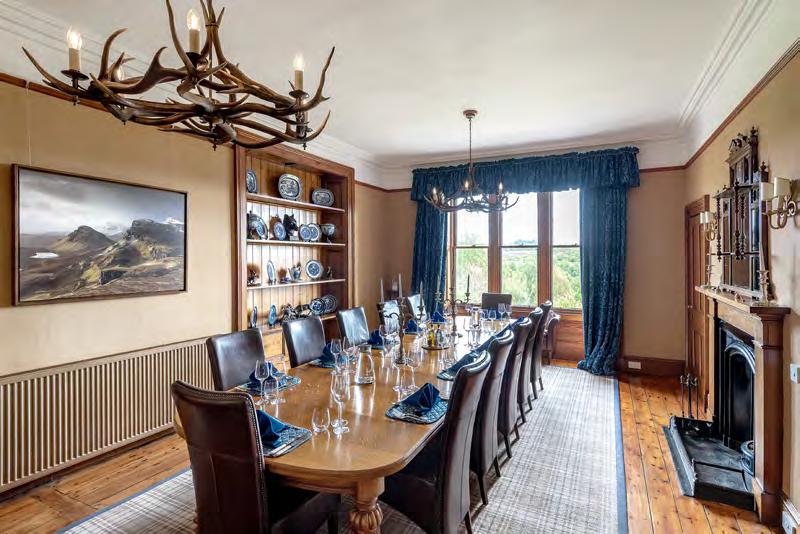
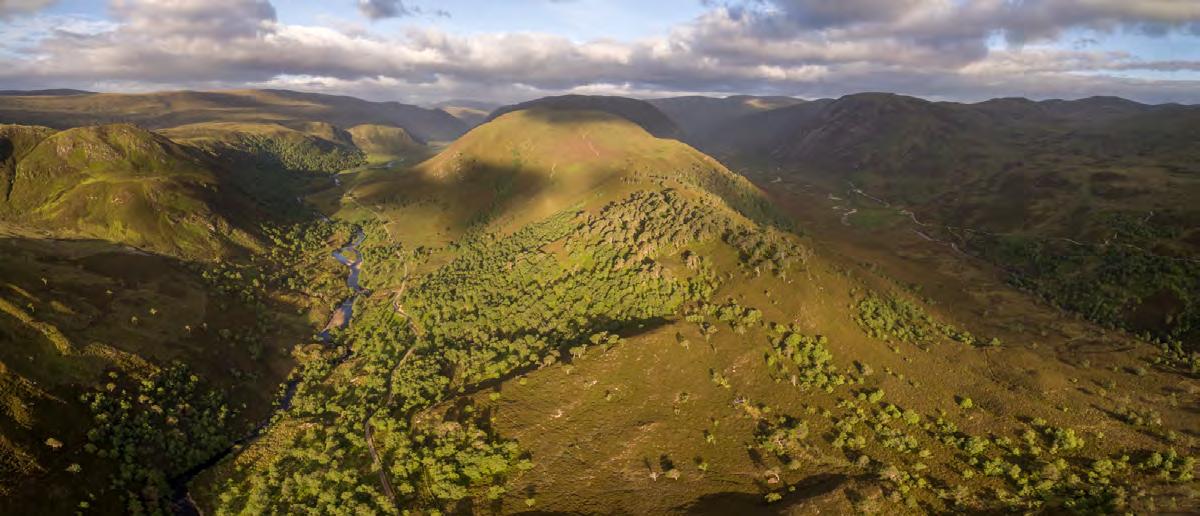

Creative Direction: Naomi Lake & Egle Vasi
Hair and Makeup Artist: Naomi Lake
Model: Tilly Storm at Boundary
Photography: Egle Vasi
This season brings wintery shimmery shades, deep cool satin tones, sultry lash lines and grown-up hints of colour. But whatever the event, be sure to

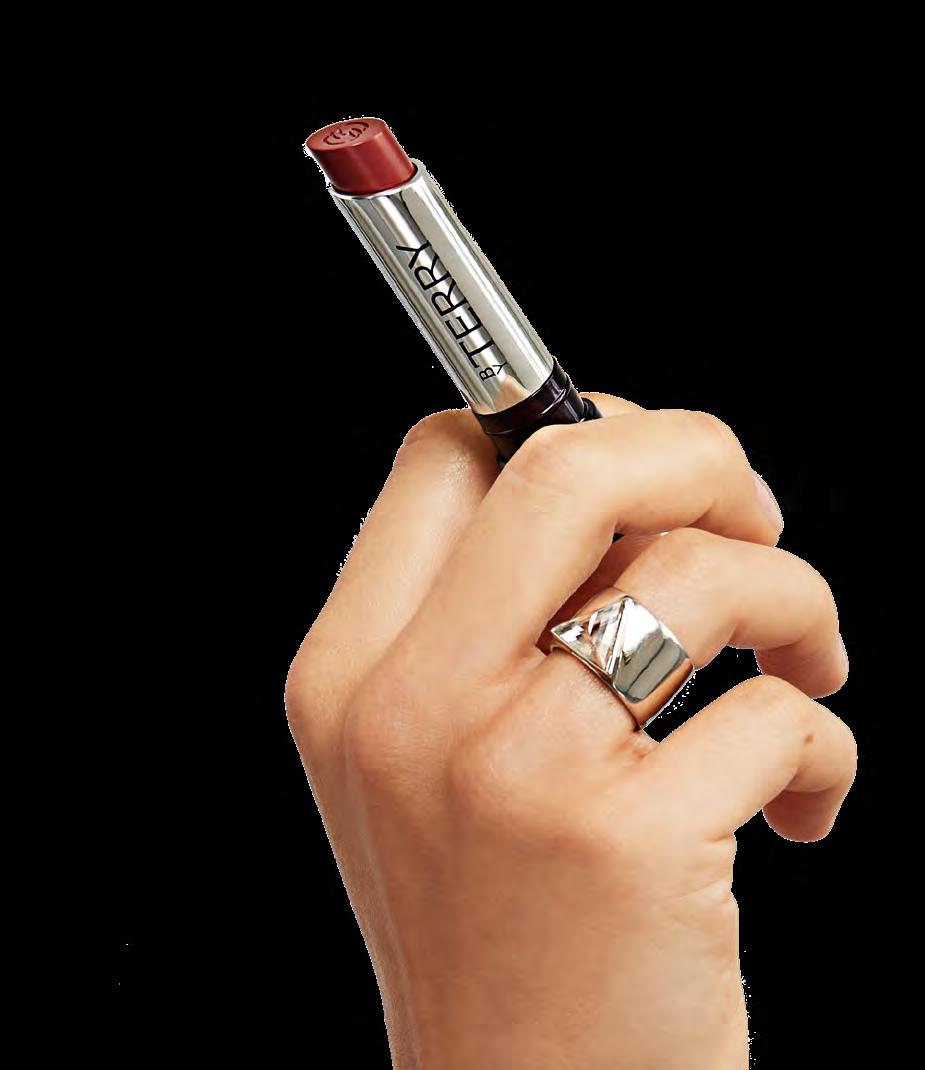

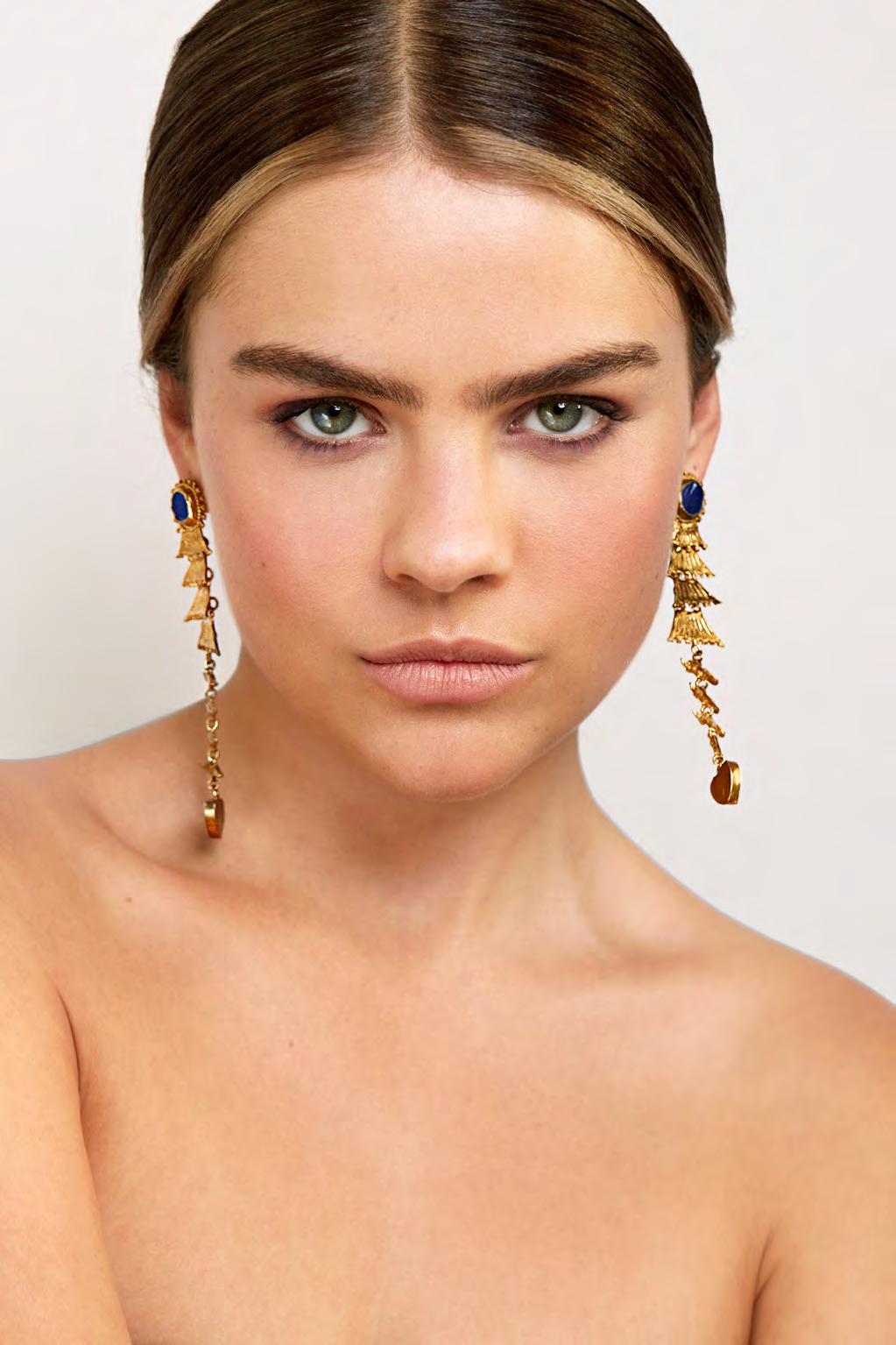
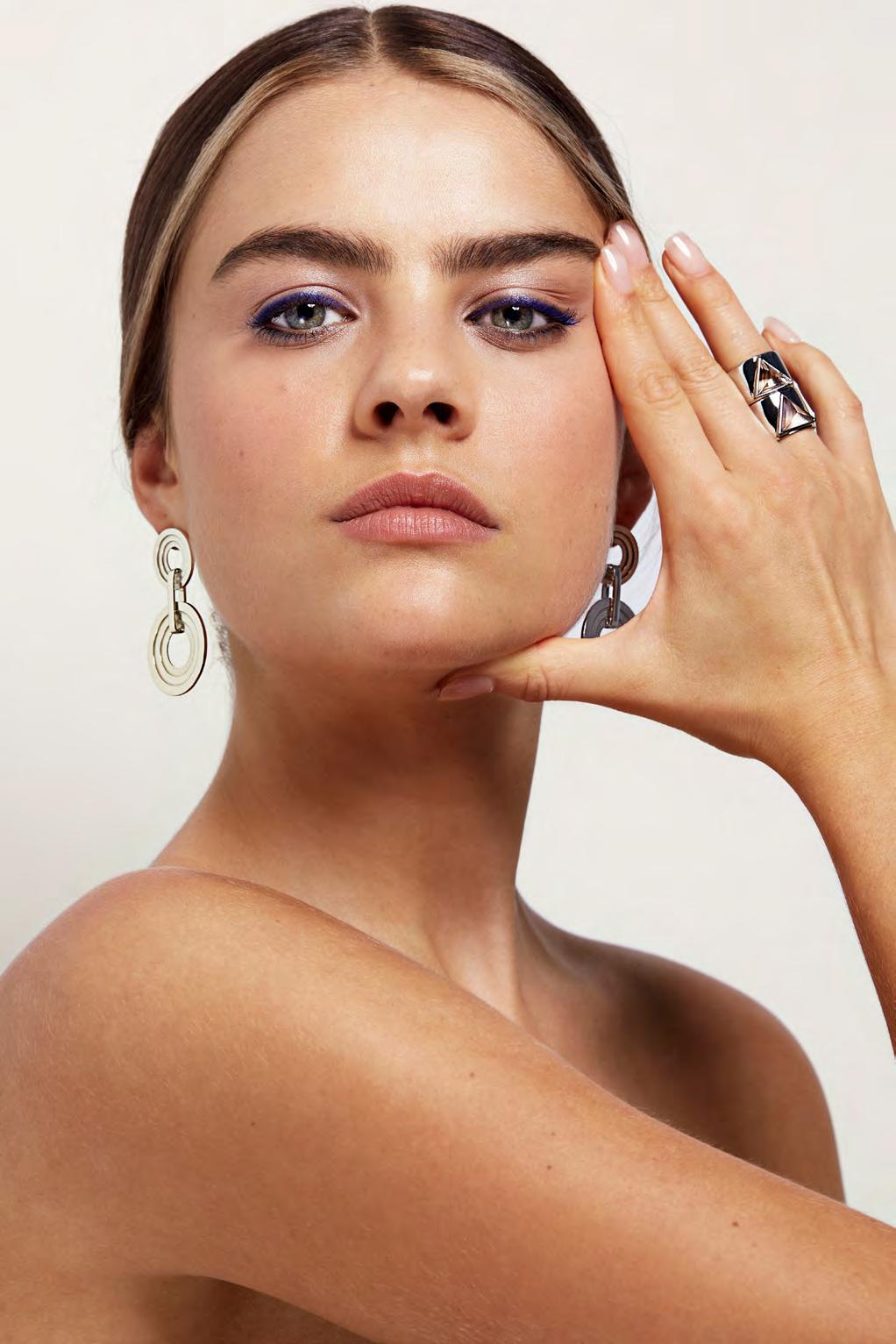


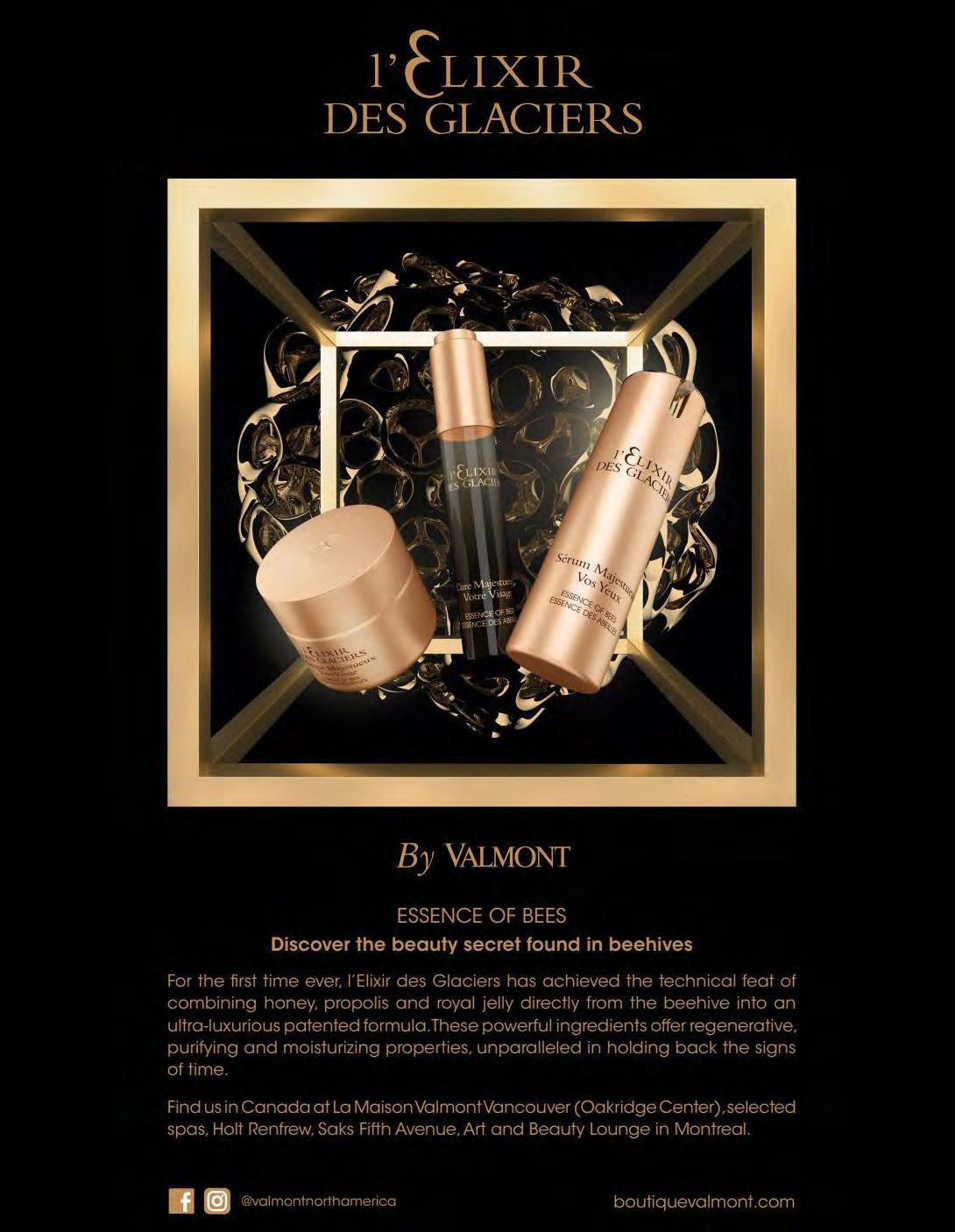
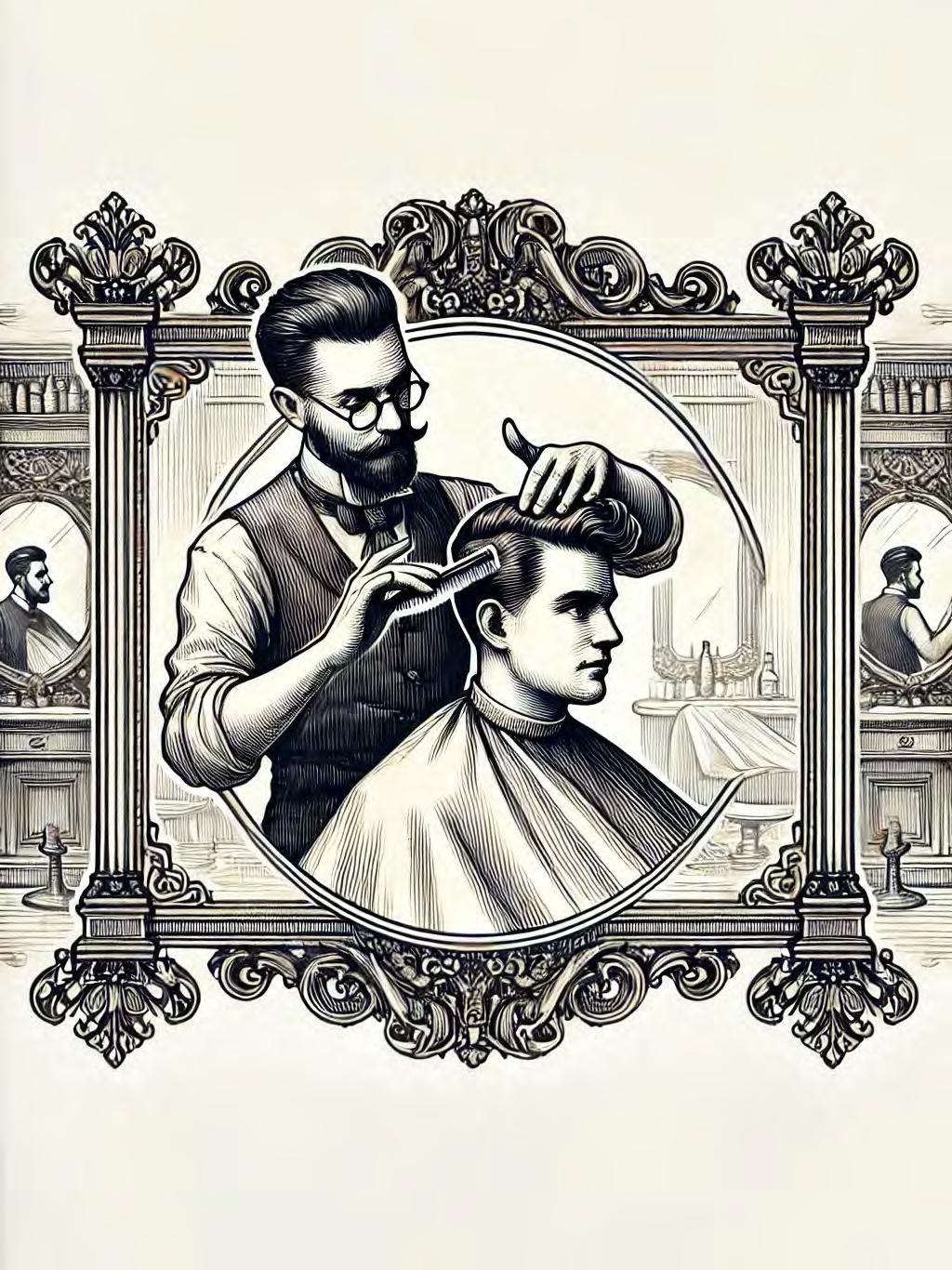
Words: Benjamin Norris - Lifestyle Editor
As the mercury begins rising and the warmer season gets into full swing, our skincare, self-care and beauty routines take on new significance and call for renewed attention.
It’s fair to say that men’s skincare has experienced a period of unprecedented and explosive growth in the past few years. While we can remember the men’s beauty section of even the more well-heeled department stores being little more than the corner of a shelf somewhere near the back, there’s now a hefty plethora of products, serums, creams, treatments, ointments and unguents to choose from.
What’s more - and as you’ll see from this seasonal rundown - many of the most esteemed new brands on the market have done away with gender divisions altogether, refreshingly
focusing on gender-neutral skincare that works wonders on everybody.
With such tyranny of choice to serve a relatively basic need - we just want to look healthier, younger and altogether more radiant than we were perhaps feeling on the chilly winter mornings of the start of the year - a little curation and discernment is called for. As ever, we’ve got your back. Here are our essential picks for men’s skincare and beauty products for the second quarter of the year, sure to leave you exuding effortless confidence and looking your best.
It’s no secret I’m a longtime aficionado of Scandi innovations, and fjör hydrolytic serum - the first hydrolytic serum in the world, or so I’m told - perfectly encapsulates that essence of nordic simplicity of which I’m so fond. In fact, for much of the past month, my skincare routine has consisted of pretty much nothing but a daily application of this serum; it’s designed as a one-step skincare routine for every skin type, making it ideal for men with little time to ritualise their morning ablutions.
The fact that fjör have made an all-in-one serum for all skin types - rough, dry, sensitive, oily, acne prone or rather boringly normal, like mine - is fairly astonishing in itself, and comes down to the serum’s hydrolytic enzyme formula that targets damaged cells while providing a balanced microbiome for the skin. Anti-aging, profound hydration, gentle exfoliation and pollution protection; fjör removes the need for a bag full of moisturisers, retinols and toners, making it ideal for travelling light and looking fantastic.
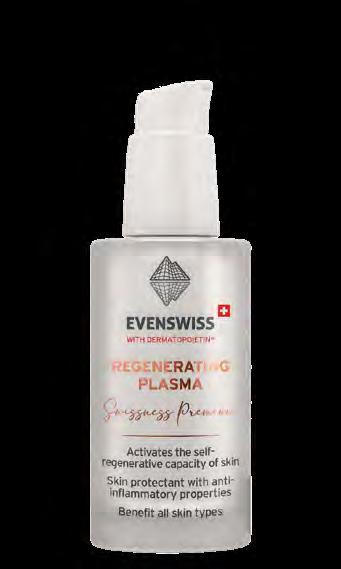

We all need a bit of renewal and rejuvenation when the first flash of warm weather rolls around, and regeneration is the name of the game for this remarkable ‘super skin supporter’ from leading Swiss skincare brand, Evenswiss.
It’s a solid daily all-rounder for men’s skin, and would be a particularly savvy addition to take along on an end-of-season alpine trip - the 5X concentration of dermatopoietin peptide complex (Evenswiss’ unique signature formula for boosting elastin, collagen and hyaluronic acid within the dermis) would work wonders after exposure to the elements, tightening the skin for a youthful and refreshed appearance.
“If there’s one part of my face I wish I’d started taking care of sooner, it’s the skin around my eyes. The combination of late nights, early mornings, rather too many intoxicants.”

If there’s one part of my face I wish I’d started taking care of sooner, it’s the skin around my eyes. The combination of late nights, early mornings, rather too many intoxicants and a laissez-faire approach to overall health throughout my twenties and early thirties meant that now - as I’m facing forty - the more delicate skin around my eyes tell an occasionally tragic tale entirely of their own.
I was introduced to the Environ Youth EssentiA Vita Peptide Eye Gel during a trip to Environ’s HQ on Southwark Bridge, where I was informed about the importance of vitamin A for skincare and how it underpins all of Environ’s worldconquering product range. The eye gel is no exception, combining copious vitamin A with three scientifically-proven peptides for reducing the appearance of wrinkles, as well as enhanced moisturisation to revitalise and rejuvenate the eye area. If, like me, you’re a man whose eyes say more about your nocturnal habits than you’d perhaps like to give away, it’s definitely one to add to your basket.
“My diet is good, I get plenty of fresh air and exercise… could a few pills each day really make a difference?”
GIVING
We’re no strangers to the wonderful items produced by Grown Alchemist here at The Review, but it’s time to give the brand real credit for their applaudable gender-neutral product range and design credentials, alongside formulas that work with a wide array of men’s and women’s skin types.
This is perfectly showcased in the Giving Me Time Gift Set; a sophisticated array of daily essentials for men (or women) in need of Grown Alchemist’s brilliant creations, each containing a kaleidoscopic spectrum of wondrous botanical ingredients optimised for transformative skincare and enduring revitalisation. A gentle gel facial cleanser (featuring the winning Mediterranean garden combo of extracts from geranium, bergamot and rosebud), a hydrating day cream, my new all-time favourite exfoliant and a smoothing serum - it’s a one-way ticket to brighter, more youthful and visibly healthier skin.



I’ve got to be honest, I’d never even considered taking supplements as part of my skincare regimen before. My diet is good, I get plenty of fresh air and exercise… could a few pills each day really make a difference?
The fact of the matter is, yes - they probably can. I’m at the age where not only is my body less capable of producing or metabolising some of the essential components needed by my skin (and ongoing quest to stay looking at least reasonably youthful), but I’m also at the age wherein it’s really starting to show. The ‘Skin Ultimate’ supplements by the Advanced Nutrition Programme feature plenty of goodness which the human body can’t produce by itself, including a huge whack of vitamin A and D and Omegas 3 and 6 (for overall skin health, a host of seven antioxidants for free radical neutralisation, astaxanthin plus biotin for nourishment and a daily dose of CoQ10, everyone’s favourite 21st century skincare discovery for rejuvenation and repair.
There’s also something brilliantly quick and simple about popping a few pills with lunch, and seeing them achieve fairly impressive results within a week or two. I’m a convert.
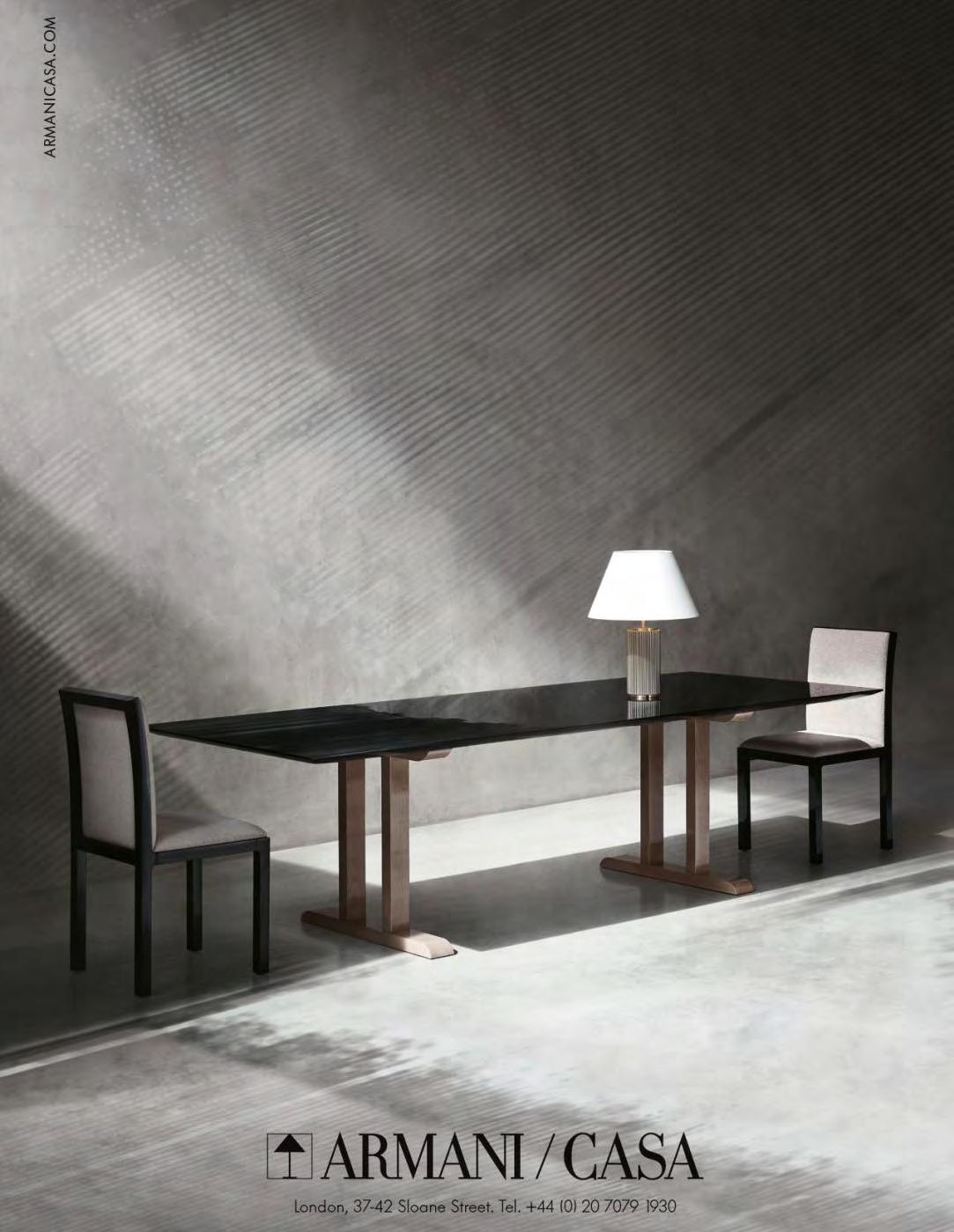
Words: Naomi Lake - Beauty Editor
As I step over the threshold of an unassuming yet celebrity-frequented hair salon, I have no idea that it is about to change my relationship with my hair forever. The slight nervousness before a salon trip always gets me, but today there are mixed emotions, with a heavy sprinkling of excitement too. It’s an extra special visit, as tucked away on Shelton Street, London, this gorgeous and brand new space holds the keys to some of the most bespoke hair services in the UK.

Hadley, the salon’s lead stylist and co-founder, has an enviable styling lineage having previously worked at Harvey Nichols and Hershesons - a household name for anyone wanting to add a little fullness or length to their hair. Ask any extensions technician and they will be able to reel off styles and brands, from weaves to tapes or nano-tips, each with a unique application and look. However, from his life-long obsession, dedication and experience, Hadley developed his own nuanced technique which he coined ‘hair filler’. Having recently moved just around the corner from their first salon in Monmouth Street, this new and bigger space offers all the more opportunity to get into one of their chairs, a very enviable seat indeed.
The consultation regarding my hair intentions went a little differently than usual. Normally my cue here is to reel off my go-to phrasing, like “long and minimal layers to create a fuller look”, or “only slight shaping around the face, to reduce thinning at the ends”. Here, however, we didn’t need to rely on the cut to disguise my very fine hair. Hadley explained how by using extensions, he would be able to add more shape and layers, providing relaxed and flirty movement and encouraging my natural waves, without any of my usual worries of my hair falling flat on all of the above. In his space, he assured me, fine hair is nothing to shy away from.
As we spoke, Hadley’s expert eye passing over
my decidedly average-looking natural locks, he explained how his technique has evolved. “I originally came up with the idea for hair filler because everyone thought extensions were purely for length”, he explained. I had certainly experienced this before, with my previous and only foray into permanent extensions leaving me with the view that they were more for length, and that thickness was a side note often with a heavy hand that can feel very overwhelming on – or damaging to – fine hair.
“I wanted to create a service that used minimal hair for maximum fullness” he shared. “I decided to call it ‘filler’ due to the method of filling in the gaps to build thickness and body”.
I was intrigued to know just how exclusive this was as a technique of his design; were they still the only salon offering this tailor-made service? He explained, “Other salons offer a similar service, but we use a different pattern section”. It was this, I was to later find out, that provides the delicate balance that finally allowed me to feel fully confident with my hair.
Next up, I was in the hands of lead colourist Georgina. Dotting around between different colourists has led to my blonde looking flat, and she wanted to pump my hair full of dimension and create a thicker appearance with colour, using

slightly darker tones spliced through the lighter lengths. After a mix of low, mid and highlights, complemented by the multi-dimensional tones of my soon-to-be extensions, her final flourish was to add a root tap around my face, a slight shading to keep my overall colour light but looking natural, and actually accentuating the fairer shades overall.
Before drying, she finished up with an amino acid treatment at the basin, giving my hair an extra little bit of hydration and strength. Even at this point, I was blown away by the results. Georgina is an artist, her easel is my hair. But there was even more to come, and with that it was back to Hadley, the master sculptor.
Before my hat of ‘beauty journalist’, I was already the wearer of ‘client with many questions’. Throughout Hadley applying each new weft of hair, this was no exception; a fascinating techniquecentric conversation ensued.
He explained how each section is applied using a keratin glue made from a similar material found in the hair shaft itself, momentarily heated up to around 200 degrees (no more than the average hair tool) to bond it. I was intrigued as to how the bonds might act when the hair moves, and he explained why he applies each section at 1.5 cm from the root. Whilst feeling slightly counter-intuitive for longevity, it actually ensures each attachment grows down naturally with the hair, stopping any looping occurring at the scalp. It also ensures they can move in any direction for every kind of styling, so my lazy girl’s day-off messy bun was safe.
So, what exactly is it that makes Hadley’s technique so different? The answer here was actually in the bonds too, not just the pattern in which they are applied. He explained, “For the filler service we normally add 30g of hair, which is applied in nano pieces”. His method involves splitting these hair-ready segments from Great Lengths into two or three, making them smaller and lighter, around the size of a grain of rice each and virtually undetectable even in fine hair. He finished, “Each piece of hair is typically just 0.25g”. For reference, each bond is usually 0.8 - 1g of hair at a length of around 24 inches, with a regular service of extensions probably using around 75 - 100g of hair total for fine hair like mine.
These tiny sections are placed just above the nape of the neck to just below the occipital bone, thickening the longer layers whilst ensuring the attachments are well hidden from above and below. To create fullness to the front, the smallest of sections are applied around the temples, another area where fullness can be limited. The final stage is as simple as cutting them into style.
Always intrigued to know more, we spoke about how this technique can be a remedy to worrisome problems with our hair, beyond enhancing what we were naturally given. Hadley explained, “The hair filler technique can be used to enhance and amplify hair in many ways. It’s perfect for those experiencing postpartum shedding and hair loss,
and can also be used as a correction technique where chemicals and hot tools have damaged the hair.”
As well as correcting haircuts that may not have gone to plan, can this open new options, I wondered? “Of course, we can use hair fillers to also build fullness to fringes. I love adding corners to a fringe to create more of a Bardot look, as well as adding length to the front to make sure it is all consistent.”
With a glorious final flourish, Hadley swings my hair (once it’s in, I’m tentatively calling it mine) over my shoulders for me to view. Now, it’s not a new thing for me to cry after a visit to the salon. After all, I have covered that particular anecdote in another article. But to well up because I’m so overwhelmed by my positive appearance is a new one for me. As Hadley smiles, I somewhat blubber, “My hair has no business looking this good”. His reply was gentle, “This is our business, don’t worry, it happens all the time”, says Hadley, “Well, good tears - the happy ones.”
The only problem now is that the commute to my hair salon is rather a long one. Honestly? It’s worth every mile.
With work this good comes strict instructions on how to protect and care for it. Here are my triedand-tested-go-tos for the job.
Tangle Teezer, The Plant Brush
No doubt, you’re going to need a non-tipped brush to softly move around each bond and the surrounding hair to keep everything smooth and prevent pulling and catching. If you don’t already own a Tangle Teezer I’m not entirely sure how you’ve managed to miss them, but their newest release, The Plant Brush, made of 85% castor beans, is their answer to the industry-wide plastic problem and comes with an excellent returns scheme. Their classic double-tiered design moves lightly through wet or dry hair to swiftly detangle, reducing overall traction damage in the process.
Windle Labs, The Dream Team
Sulphate-free products are a must to protect the keratin bonds, but the hardest thing I found to locate was a suitable purple toning shampoo for blonde-brightening colour upkeep. Windle Labs stepped in with the goods, their creatine complex repairs bonds in colour-treated hair, whilst the violet pigment adjusts brassy tones. Kenyan purple tea extract strengthens hair follicles by increasing blood flow, which isn’t unwelcome in the hair growth department when you have already sought help elsewhere.
Grow Gorgeous, The Repair Collection
For daily cleansing, an unfortunate must for fine
hair (if you know you know) you will want to balance this with something super nourishing for the scalp, but hydrating for the lengths. Grow Gorgeous have created a range that delivers on all fronts, with bio-functional peptides and amino acids that strengthen the hair, to the point where my stylist commented on the change in my hair 6 weeks after I started using it. We also need to congratulate them on their divinely thick hair mask. When I am applying a mask to damp hair in the shower, I don’t want something that feels already watered down.
Grow Gorgeous, Repair Daily Nourishing Leave-In Cream
The newest element to the Repair range needs an extra mention. This light serum-like cream is a saviour to all hair types, its plethora of botanical extracts target every tell-tale sign of stressed hair, with a sugar-derived bonding plex fortifying, avocado and cherry oils nourishing hair, and oat lipids smoothing the cuticle, with many more in the mix too. Add to that its weightless and non-sticky texture when applied wet or dry, it’s a must-have.
Arkive, The Prologue Hair Primer and The Reset Dry Shampoo
Heat protection is a must before any styling, as is SPF at the end of your skincare. Arkive’s The Prologue Hair Primer is a lightweight starter, protecting from heat damage and supporting styling by offering a little hold too, with Baobab oil and protein for shine.
If you’re pushing it to the second day, The Reset Dry Shampoo is light in texture with ultra-fine rice starch, making it fast-acting, whilst adding a beautiful scent and caring for the scalp with added Baobab oil.
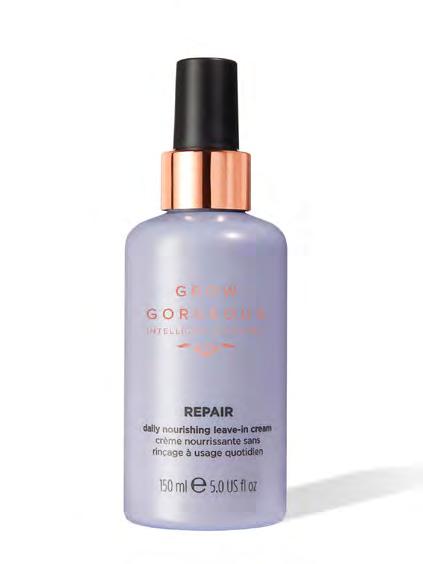
What better time to talk about hair tools, than when we have some exciting new releases?
KEEO Genius Smart Glide Straightener
No doubt about it, if you straighten your hair, you need these. Updating the exceptionally antiquated method of how to tame hair, the KEEO Genius uses two plates with a precision air gap to apply the perfect amount of heat and pressure to smooth the hair shaft, with no clamping grip or tress-stressing tension.
Yes, I have spoken about how fine my hair is, but don’t be dissuaded if your hair is thick or textured: I have taken these to all my recent clients and they have loved them too, just make sure to use a hydrating heat protector like Grow Gorgeous Heat Protection Leave-In Oil for thicker, dryer or more textured hair. That flat look or tell-tale kink at the root? All gone with their waved plates. Get ready for a brand that disrupts the norm.
It’s important not to leave keratin bonds wet for too long, so rough drying at the root is a must, especially for less porous hair which takes longer to dry.
There is something decidedly unsexy about a travel hairdryer but T3 have changed that with their Afar, a compact styler that maintains the multi-settings you don’t want to leave at home. Alongside two speed and three heat options and a frizz-smoothing ion generator, it maintains all the useful qualities, like its overall light weight and folding arm, for a compact packing experience. For those with wavy, curly or coily hair, there is an optional compatible diffuser, which is pretty much unheard of for a travel dryer.
Another industry-disrupting styling tool and I am very much looking forward to seeing the noise it makes. Imagine three tools in one, without any attachments that need to be changed, just sleekly and effortlessly in one for supremely easy travel. A straightener nested in the tapered barrel of a wave wand, with a seamless curling tong clip. It’s a masterpiece that performs with a polish as good as its aesthetic.
It’s clever too, with adjustable heat temperature, Tritonic™ Technology botanical-infused ceramic plates in the irons, a supported pivoting arm to reduce tension on the hand when using them, a smart switch to independently move between functions for safety and cool tip touch at the end of the wand. It’s almost like they were designed by a hairstylist, because, well, they were, having been created from the dream of Yolanda Cooper, when travelling with her session styling kit.
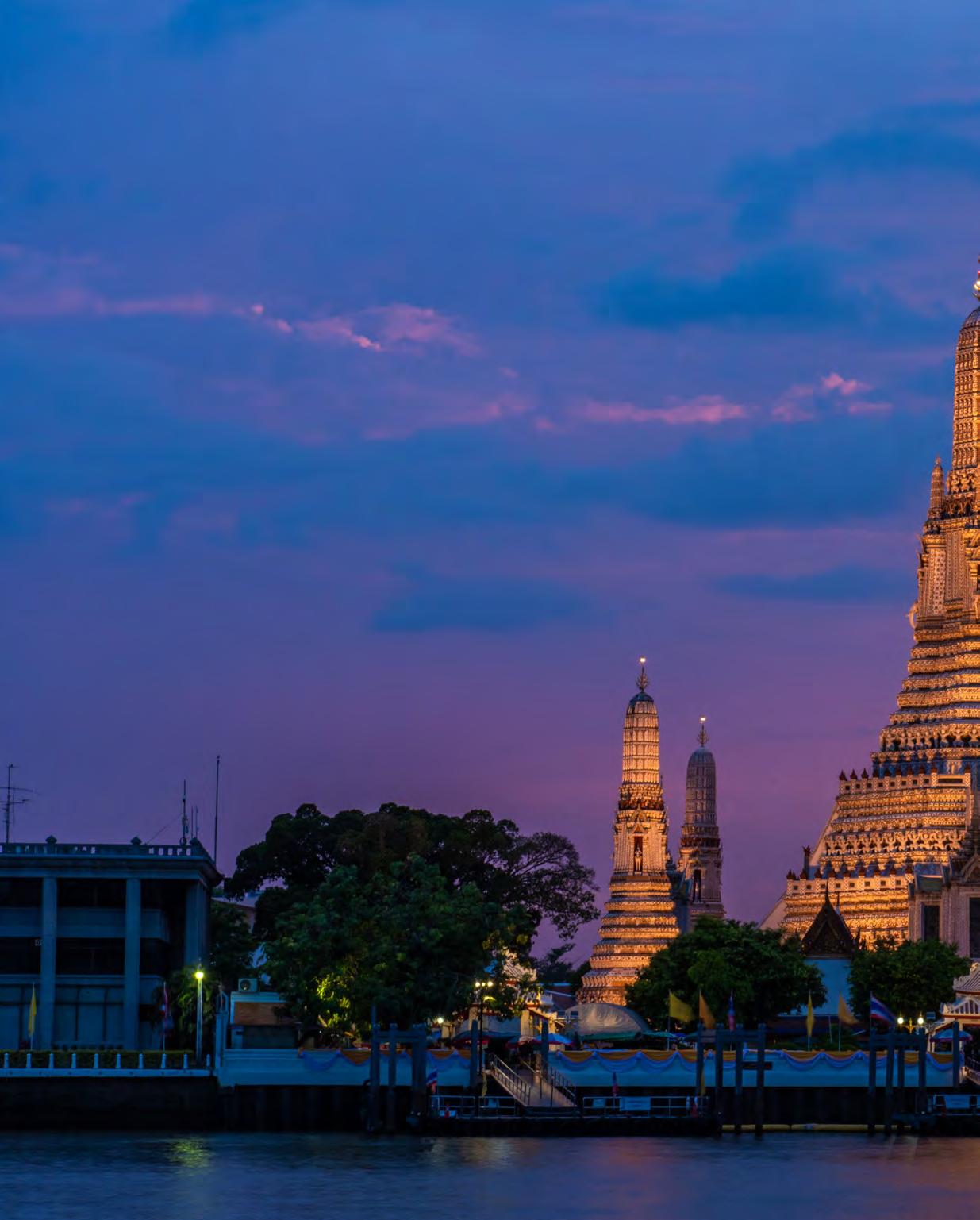
Words: Aaron Edgeworth
It had been nigh on 20 years since I had last trod on Thai soil. Those years seemed an age away as I prepared to return, scheduled for a whistlestop tour of three destinations, three wonderful properties, and so many culinary concoctions I could have rolled home.
The INNSiDE by Melia Bangkok, the Banyan Tree Krabi and Trisara in Phuket would provide the backdrop for my week, all bookended by two wonderfully relaxed flights courtesy of EVA Air and their outstanding Royal Laurel Class. How the invite came about, is another story altogether.
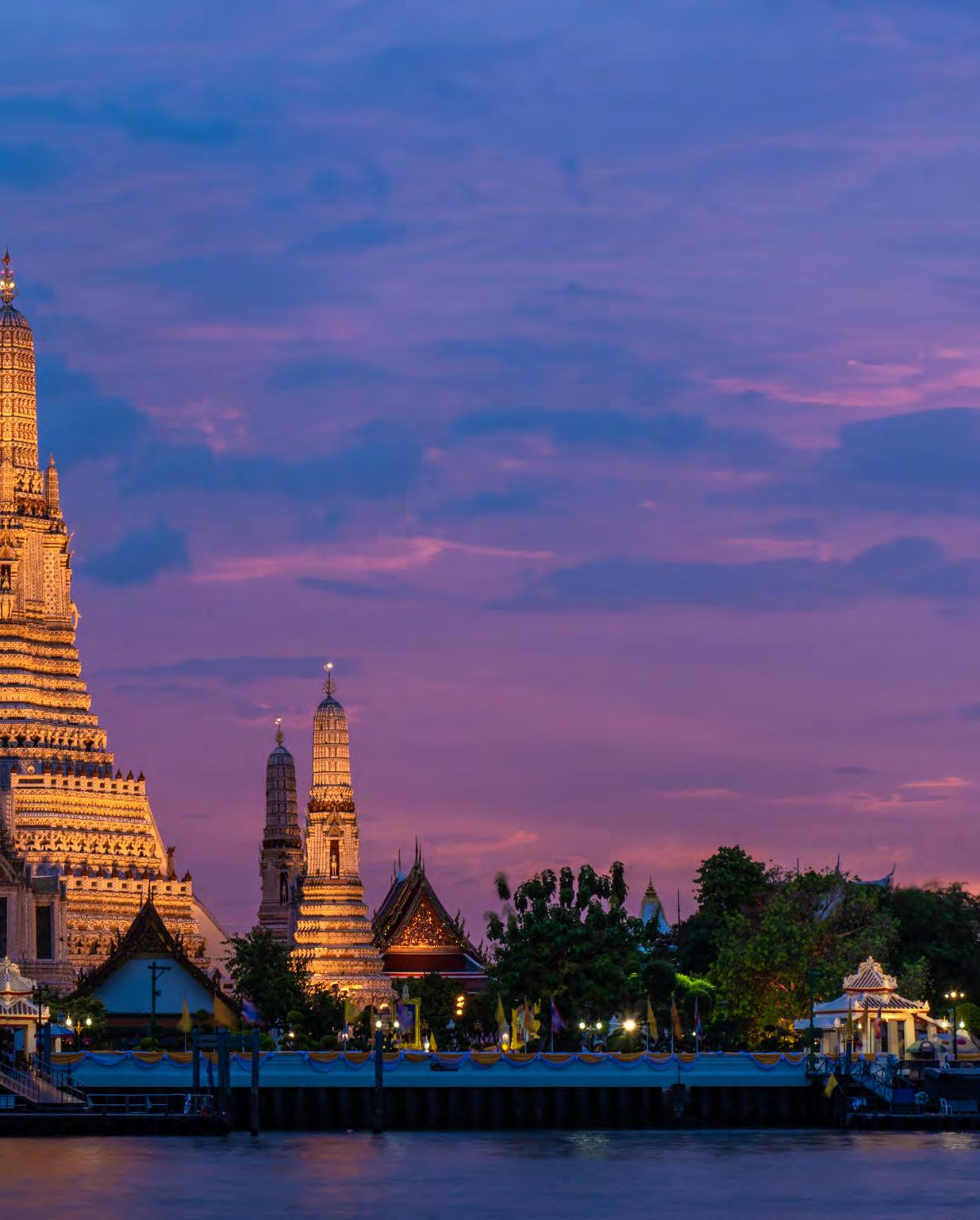
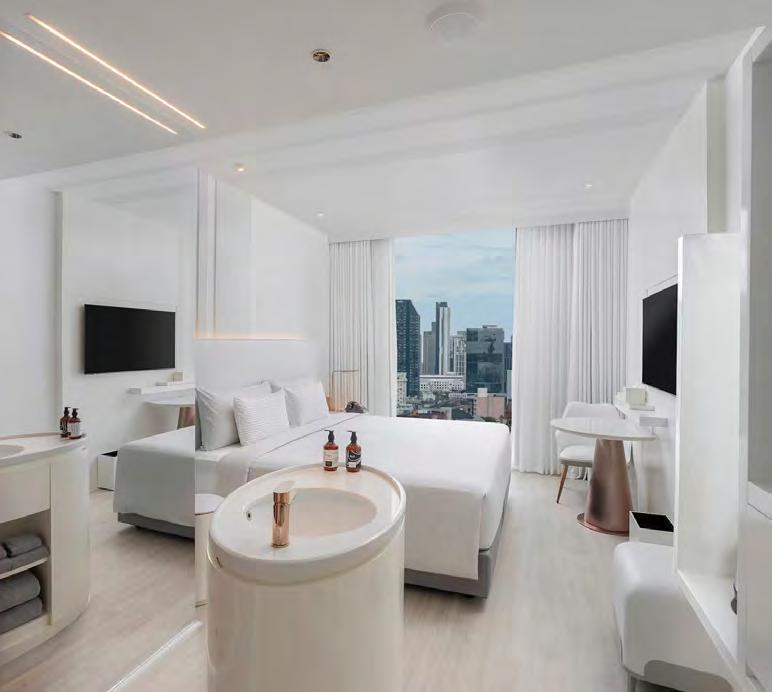
Misfortune. It takes many forms. My erstwhile Editor received some bad news, meaning that time in the sun was recommended against. Misfortune indeed. He had a press trip booked to Thailand within that period that now seemed precarious as a result, and the place needed to be filled to rescue the trip.
Up steps Aaron.
The trip in question was to the far-flung shores of Thailand, which I’d last visited on a trip taken with a former fiancée, in a pre-social media world. The present day is a hugely different place, and it’s fair to say I was eager to see the changes in this neck of the woods.
The trip was a whistlestop three-parter, encompassing Bangkok, Krabi, and finally Phuket. Bangkok had been seen previously by the 2006 version of Aaron in Asia, and it was a city that I enjoyed back then. That the Siam Paragon Mall, a newly built attraction when I was there previously, had just recently fallen victim to a shooting actually didn’t occur to me until I was sat on the flight over.
We flew courtesy of EVA Air, one of the
national carriers of Taiwan. We were privy to their Royal Laurel Class, which is present on their 777 flights. The flight to Bangkok is actually via Bangkok to Taipei, but that’s a mere administrative addition to the tale. EVA has access to a lovely lounge through United Airlines at London’s Heathrow, and
“Bangkok was, as ever, the visceral hub that I guess it has always been and will always be.”
it was with a relaxed gait and a smile on my face that I found myself sitting in said lounge, sipping a lovely glass of champagne whilst perusing amusing reels on Instagram.
Boarding the flight was as simple as one would expect from any flight taken above coach, and I was quickly ensconced in my seat, left of centre aisle. The personal mini cabin is spacious and well-appointed.
Likewise, the amenity kit is resplendent with designer accoutrements. And the pyjamas? Such lovely things. I will contextualise that by saying I only knew of their comfort from the safety of a hotel room, not being a person who frequently changes clothes on flights (I find the prospect of less-than-acceptable daytime attire on a flight a bit odd, but that’s by the by). Food and drink were exceptional, with a choice of Western and Asian dishes across all meals and a healthy wine and cocktail selection. That, combined with the lie-flat bed and the huge individual entertainment screen meant that I passed a remarkably easy and dare I say enjoyable (almost) 11-odd hours in the sky.
Ushered by our awaiting driver, we hopped aboard the quintessentially Thai minivan (though this one certainly in the luxury segment) and made our way to our first port of call: the INNSiDE by Melia Bangkok, Sukhamvit. Now I know the Melia brand from time in Spain and, as a Spanish brand, there is an Iberian twist on much of the property. A very white clean aesthetic combined with artistic representations of the city’s architectural icons makes for a fun and energetic style. The property is entered via a gate and the welcome vestibule leads to elevators that whisk you to the 23rd floor, which houses the reception and the link areas to the dining area and terraced roof, which includes a bar and a pool. All very lovely indeed.
One restaurant offering is a fusion premise combining, you guessed it, Spanish and Thai cuisine. The night we dined there, the food was plentiful, the wine free-flowing and the dishes genuinely representing clever and playful interpretations of the brief.
Bangkok was, as ever, the visceral hub that I guess it has always been and will always be. A heady mix of smell and sound. One needs to be so highly attuned to one’s surroundings when in Bangkok, as traffic is relentless and maybe the least forgiving to be found in the international landscape of metropolises worldwide. That meant the two safest places of refuge when wanting something a little more serene were the ever-efficient Skyrail system and the gated footprint of the INNSiDE by Melia.
The rooftop bar provides a wonderful vantage point to soak in the size of Bangkok, all the while resplendent on a sun lounger with drink in hand. It was certainly the choice of many of the guests who were making good use of the facilities from what I saw across the two days. Winter weight and a lack of swimming skills meant I stayed
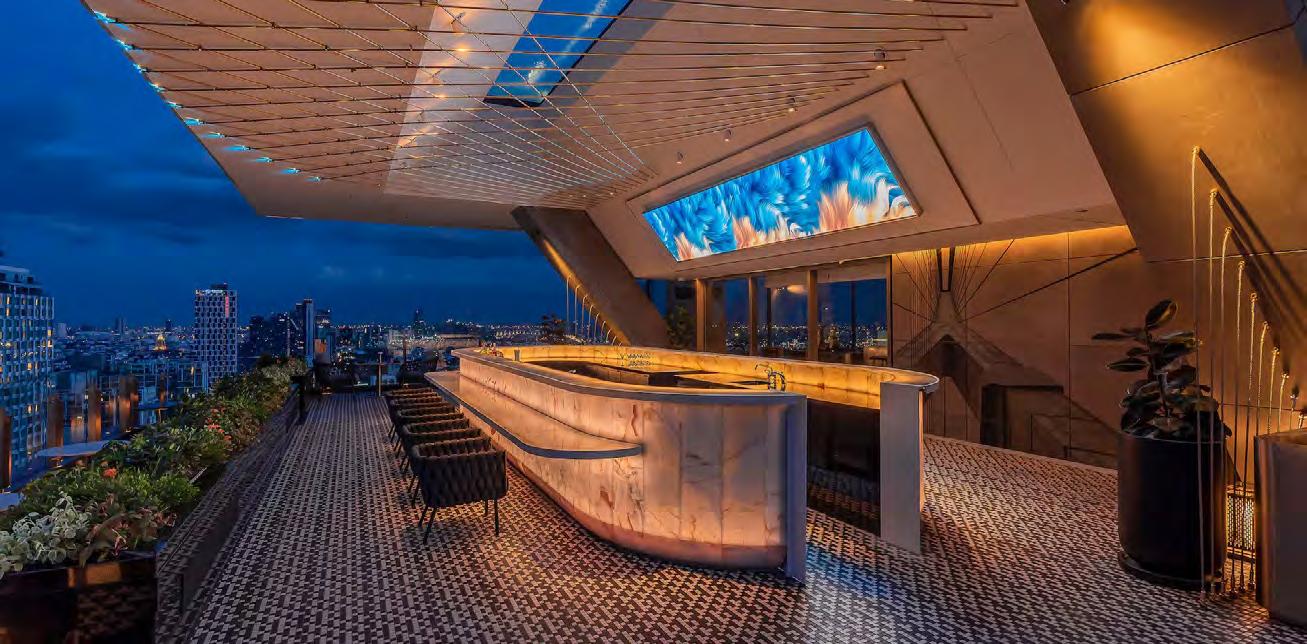
firmly on the pool edge and fully attired, as a gentleman should be. Or something like that. It was, however, only a brief urban sojourn on this whistlestop eastern tour. The INNSiDE by Melia did all that it needed to do, and in fairness, it did it very well. Rooms were elegantly styled and well appointed, if not huge. A curious bathroom configuration means that there is a sort of kitchen sink island in the middle of one’s room. Now, it’s not exactly problematic, nor does it hinder anything in real-world usage. Part of me,
however, couldn’t help but ask a simple question: why?
Anyway, we packed our bags and were whisked across to the other Bangkok airport for a swift flight down to Krabi. The flight was dispatched with all the ease of most domestic flights, and was elevated above the norm by the in-flight availability of chilli chicken skin crisps. I’ll not take too much time waxing lyrical but suffice to say, those things are epic.
Another swift minibus journey and we were welcome to the Banyan Tree Krabi, our second home from home. The reception vista after you climb the gentle incline up to the check-in area opens up to the most glorious views out across their beautiful water feature, incorporating sunken seating to out the horizon at eye level. One gazes out to the cluster of islands that spring up just off the coast in the Andaman Sea. Divine.
Once safely checked in and confirmed we
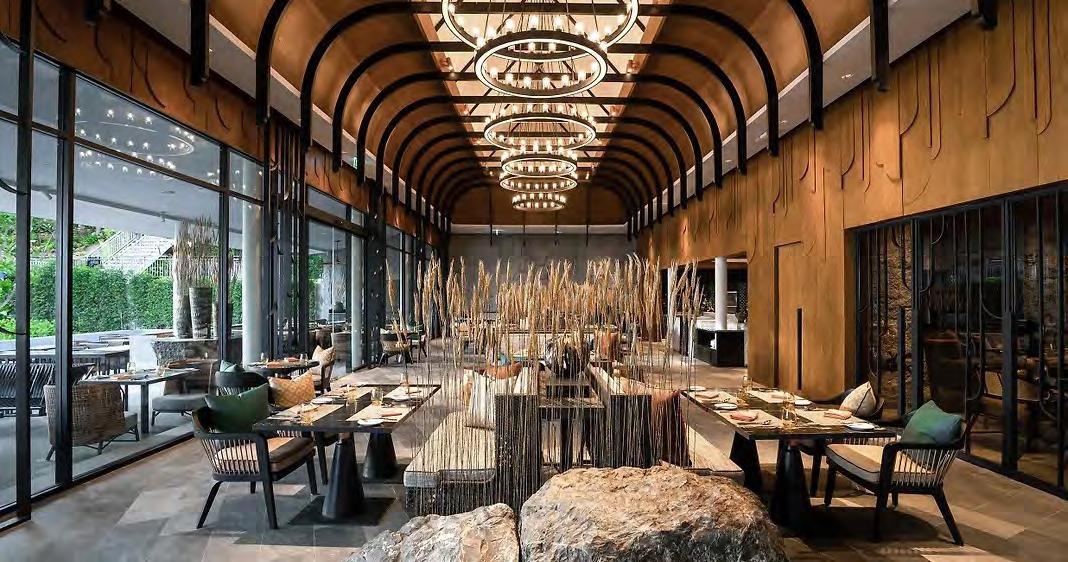
were who we purported to be, I was ferried to my room aboard the ubiquitous golf cart, seen at resorts worldwide since 1993.
The Banyan Tree Krabi is ensconced at the end of Tubkaek beach, with the north side of the property bordering a nature resort. The buildings all aim to sit low in the foliage, meaning that the whole resort has a very boutique and intimate feel. In my room a large walk-in closet awaits, and the minibar and service area is also featured. The main body of the room provides a sideboard at the head of the bed, meaning that from headboard to window, the views out to sea are uninterrupted. A vast bathroom is located from the bedroom, and from both the bathroom and bedroom can be accessed the jewel of the room: the balcony swimming pool.
Well-heeled readers of the magazine may
recall that I’m not really a water baby, so the pool may have been superfluous. But at a reasonably shallow depth, it allowed an evening dip looking out to one of the most spectacular sunsets I can remember seeing: the kind of sunset that reminds you what certain colours actually look like.
The resort is a real haven from the headier pursuits of the area, with a spectacular on-site restaurant, The Naga Kitchen, that serves as a hub for much of what is to enjoy at the Banyan Tree. Mornings will never be the same once you have sampled the huge array of foodstuffs and treats on offer, and indeed, one would need a week longer to really sample the full gamut of what was on offer. Pastries, sushi, sausages, mimosas, and perhaps the jewel of the breakfast crown, freshly made roti on the quaint street vendor-esque cart just outside the restaurant entrance. Yes, it’s a slightly gimmicky set up,
but, quite literally break bread, and one will make allowances.
The resort also possesses a traditional Thai longboat that is available for island tours and excursions. We made use one morning and the automotive editor in me revelled at what was essentially an Isuzu four put with a honking great turbo strapped to it, in turn strapped to what is essentially a scaffold pole with a propeller. The tour did provide some wonderful vistas and added massively to the stay. Again, rather remarkably, a water-based activity gets a tick from Aaron.
On to the next. Our final destination was a shortish hop across to Phuket, whisked again via minibus, which in Asia remains the best way to ride. Opulence has never been a word associated with the minivan, other than perhaps in Thailand. Comfort was never an issue.
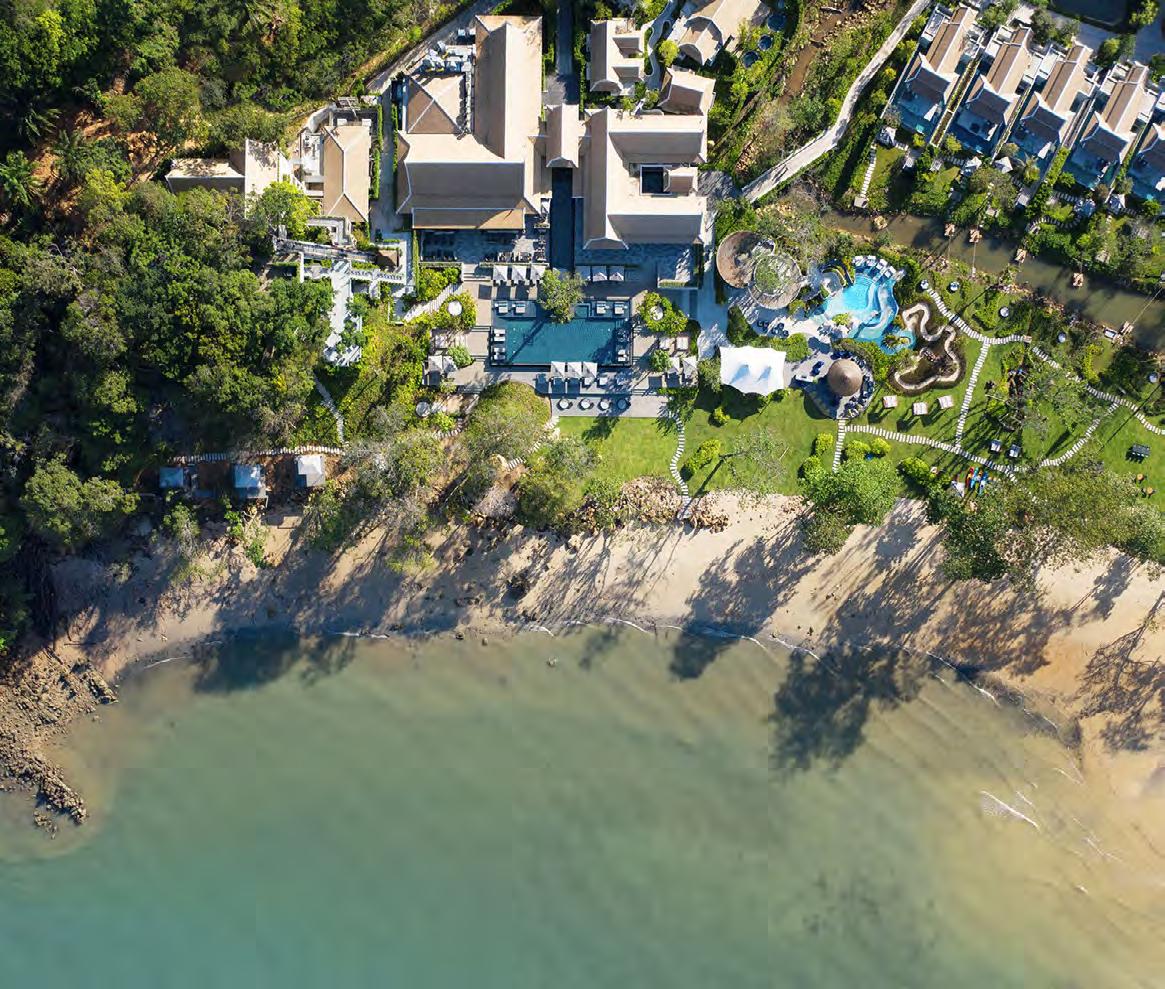
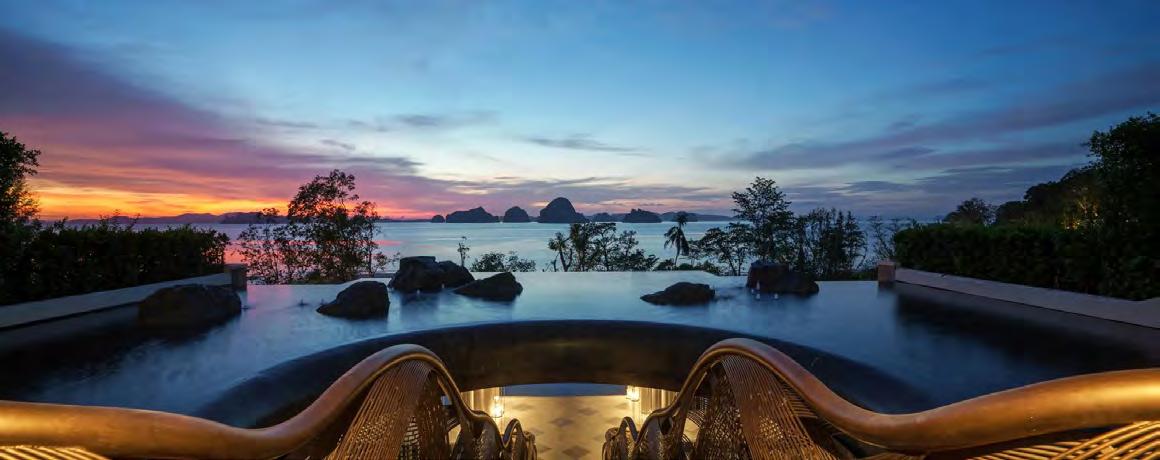
We arrived in Phuket and drove past the innumerable beach bars and shops. We rose a little on the landscape, traversing other minibuses, locals on mopeds, and most precariously, tourists on mopeds, before being ushered through the secure gate that led us into the Trisara resort.
Sprawling across the hill and down to the beach, the resort encompasses private suites and villas that dot the property surrounding a central restaurant and ‘plaza’. The reception area gives a small peek into the vastness and the privacy of the property. One can’t quite make out any of the accommodation but can revel in the views of the lush vegetation and the beach a mere stone’s throw away it seems.
“The resort is nestled in 14 acres, which, given the small guest quota, means that resident guests benefit from real tranquillity and privacy.”
Well, maybe not, but I’ve got a pretty good arm.
The resort is nestled in 14 acres, which, given the small guest quota, means that resident guests benefit from real tranquillity and privacy. None of the accommodation overlooks any other, and each includes luxurious indoor and outdoor spaces as well as private pools.
Formalities completed at reception, safely seated on the (you guessed it) golf cart, I was whisked to my accommodation.
My gracious host opened the wooden door leading to the bungalow and I followed as we passed the private pool, the Alaskan King bed, the banquette seating next to the

TWO BEDROOM
BEACHFRONT POOL VILLA
BANYAN TREE KRABI
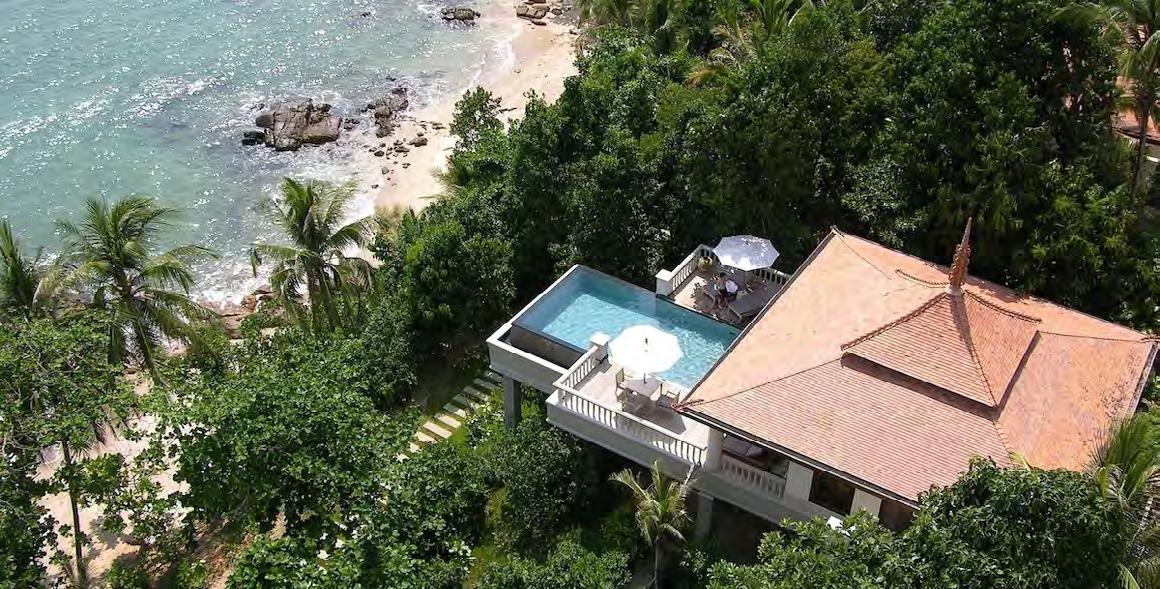
A resort of this kind probably could exist with just the accommodation. With the legalisation of marijuana on these shores, I can think of many, many things worse than holing up in one’s room, ordering some room service, drinking a cocktail, sampling some local wares and then demolishing those cookies. I mean, they’ll be there magically replenished the next day. However, Trisara offers many experiences that are must-tries
on the Island. Their restaurant PRU holds the island’s only Michelin star, and we were treated to their tasting menu one night. With an open kitchen with eye line views out to sea, the ambience is very much modern chic and the food, a mixture of local ingredients with contemporary interpretations. What we had was a wonderful evening sampling flavours that are certainly not commonplace anywhere else I would hazard to guess.
Aged Durian fruit and caviar? Anyone? Me, it turns out. There is a sister restaurant, Jampa, located in their kitchen garden a little journey off-site where we again, sampled a
wonderful tasting menu that surprised and satiated in equal measure.
For foodie travellers, I couldn’t recommend Trisara enough, not least as in addition to the two halo eateries, their on-site restaurants are also spectacular. Our welcome meal consisted of so many dishes I was worried there wouldn’t be space for cookies.
I have never been a massive advocate of massage. I do, however, enjoy a Thai massage and the associated brutality. Maybe that’s a chat I should have elsewhere. Anyway, I was

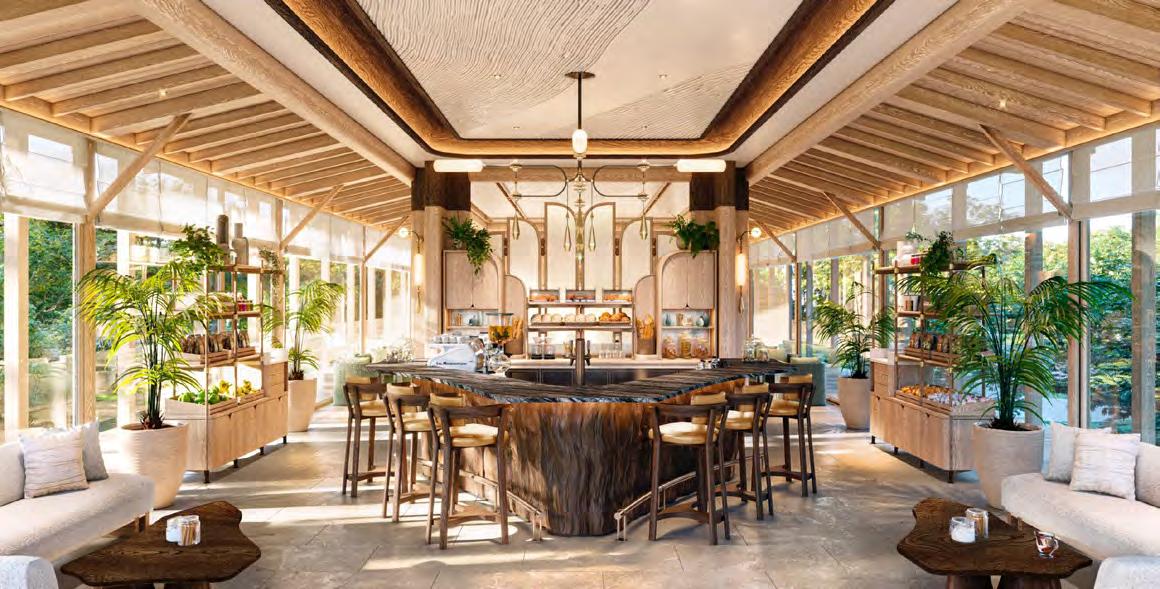
treated to a massage in the resort’s exemplary spa building. Again, nestled, subtly within the grounds, one is whisked in and through the process, and had I not known another attendee was in residence at the same time, I would not have known anyone else was there. The massage was, of course, spectacular. I nigh-on melted off the table and was pleased to be told how fun it was by the masseuse, who found that my muscle tightness and the therefore necessary force required for the massage was seemingly a joy for us both.
So that was that. Thailand in six short days.
Three destinations, three resorts. One airline. All provided their own personalities and uniqueness to make the trip, though short and jam-packed, not for one minute a chore.
EVA Air is a wonderful provider and the journeys in both directions were a testament to their level of service. The planes and associated benefits be it menus, films or amenity kits, all were of a level that would have me happily return on board one of their fleet. The hotels, whilst all different, each provided well-serviced and supremely
well-catered stays. The INNSiDE by Melia is a superb addition to the Bangkok scene and with the Spanish twist, provides something genuinely different across the city. The Banyan Tree provides wonderful seclusion and access to the Islands off the coast, an experience difficult to repeat anywhere. And Trisara. Well, Trisara provided luxury and privacy the likes of which is hard to find across the globe, let alone in the bustling hub that is Phuket. I couldn’t recommend each one enough, and I look forward to the next invitation to cross my desk.
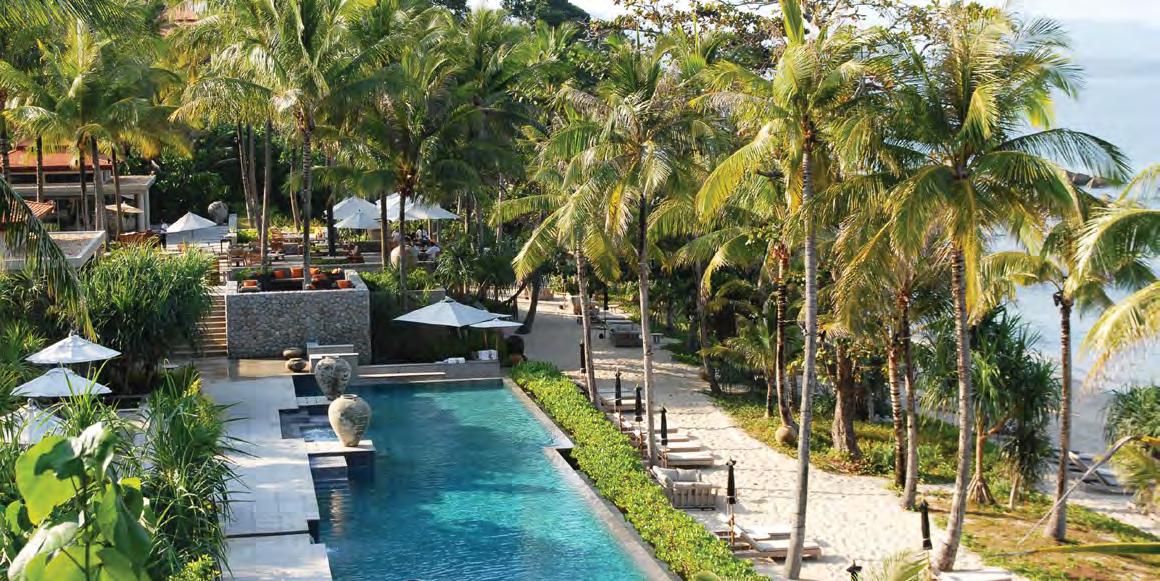
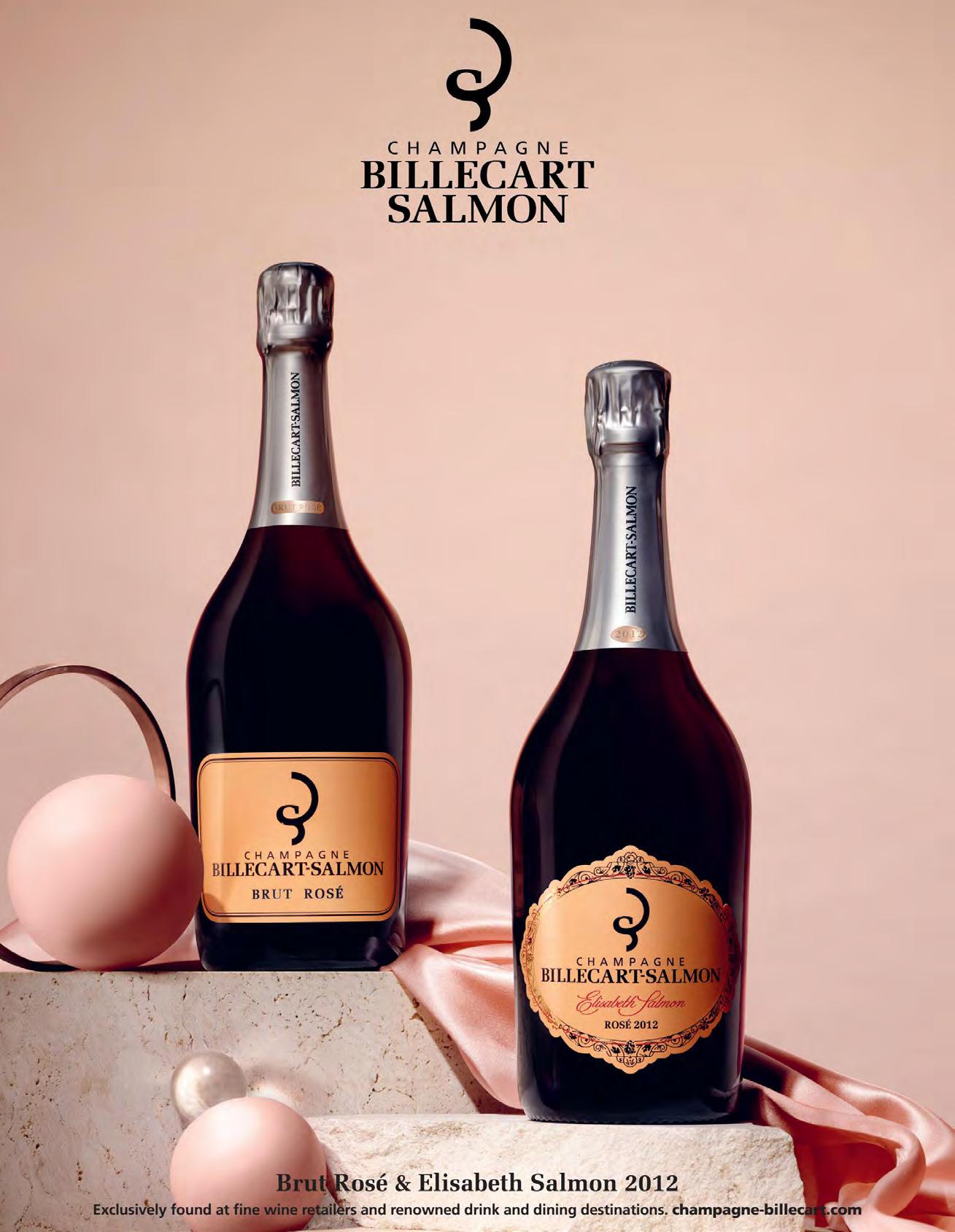
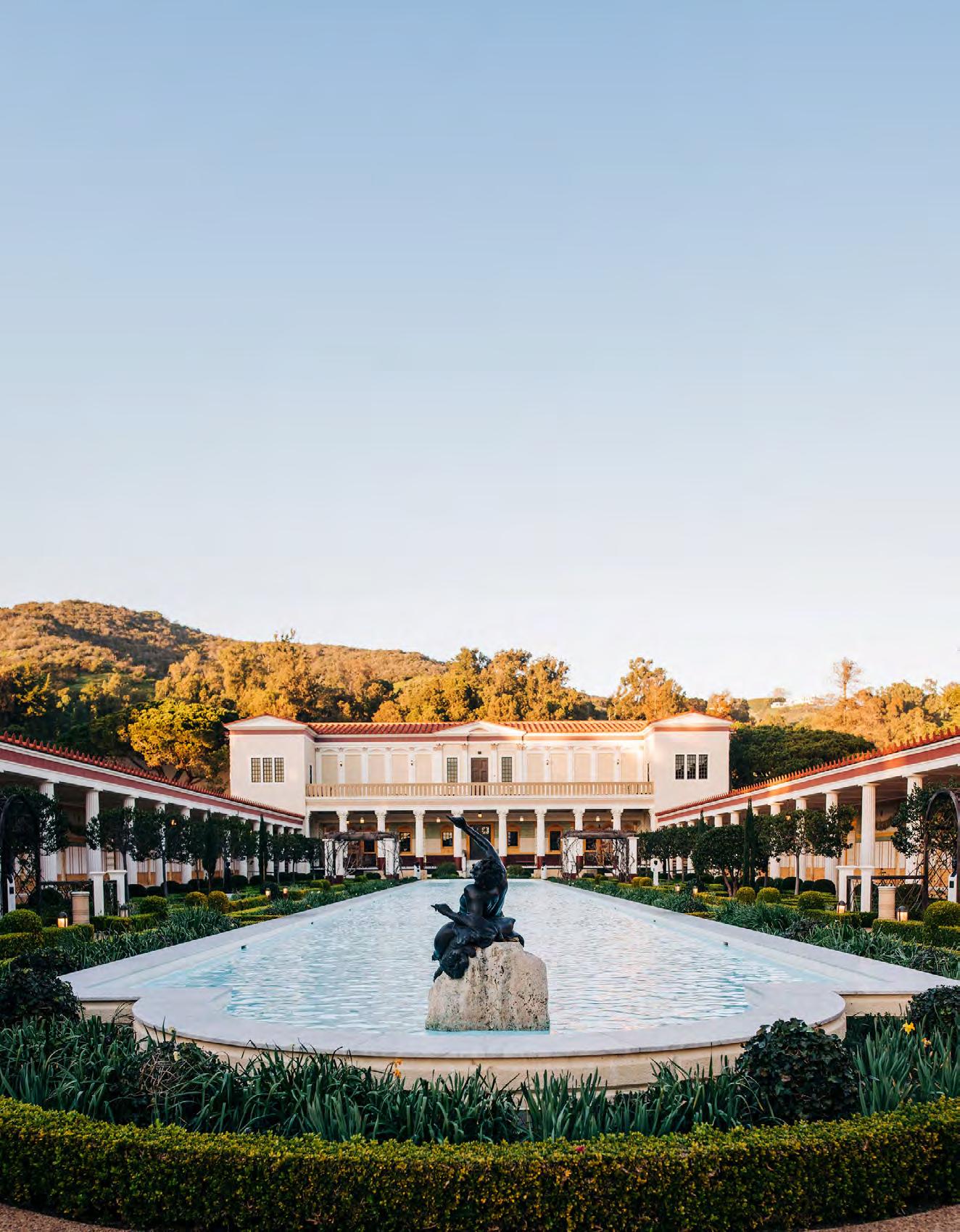
Los Angeles has long been synonymous with glamour, entertainment and luxury. Yet my first experience of the City Of Angels was back in the heady ‘80s as a privileged guest of one of the greatest sports showcases at the Summer Olympics of 1984.
Returning four decades later, I am excited to reconnect with a city perhaps more known for its rich history than its fresh dynamic modernity; a city that now beckons discerning travellers to experience the perfect blend of timeless charm and contemporary chic.
In this exclusive guide we invite you to explore the hot spots of LA, from the iconic Hollywood Sign to the vibrant art scene of Santa Monica.
My first piece of advice? Don’t feel you have to instantly submerge yourself in the heart of the city. For those seeking a more relaxed yet convenient base to explore LA, we chose to start at the Hilton Santa Monica. This luxurious hotel offers world-class amenities just a short walk from the famous Santa Monica pier and boardwalk, where you can wake up to the soothing sounds of the Pacific. It’s the perfect way to recover from travel fatigue and find your equilibrium exploring the more laid-back Santa Monica area.
To slow warming, we need to rapidly remake the global energy system. This means decarbonizing electricity production and then using that clean electricity for most of our energy needs. For example, we need to drastically increase the amount of energy we get from capturing ‘today’s sunlight’ through solar panels. At the same time, we need to rapidly adopt technologies that can use this electricity such as electric vehicles and heat pumps for residential heating and cooling.
If we can ‘green’ the production and consumption of energy, then we’ll be about two-thirds of the way there. But we also need to end deforestation, restore ecosystems, and make food production and consumption far more sustainable. It’s a big challenge, and one where governments must step up with policies to accelerate the transition to climate-safe activities, while simultaneously addressing the world’s other problems like poverty and inequity.
Your stay would be incomplete without a visit to the iconic Santa Monica Pier and boardwalk. Discover the history of this landmark (which was
home to the original Muscle Beach) and indulge in the vibrant energy that surrounds it. Continue south to the eclectic Venice Beach, where skaters and artists gather, adding a touch of bohemian charm to your LA experience.
For a serene escape from the sensory overload of Venice Beach, why not explore Abbot Kinney’s shopping area, often hailed as the “Coolest Block in America,” it offers upscale shopping, gourmet dining, and trendy boutiques. The nearby Venice Canals also provide a peaceful respite, inviting you to take a stroll along tranquil waterways lined with charming architecture and lush gardens.
After the obligatory Santa Monica beach, pier
and boardwalk, take a short drive to the eclectic Bergamot Station Art Centre, a space that has emerged as a cutting-edge hub for contemporary art, offering the largest cultural complex on the West Coast. Discerning travellers seeking the latest in artistic innovation can explore its galleries, which feature thought-provoking exhibitions from both established and emerging artists. There is also entertainment at The City Garage and The Crow. This centre embodies LA’s dynamic art scene, continually pushing boundaries and redefining creativity.
Situated within Bergamot Station, this restaurant is known for its exquisite cuisine that blends old-world flavours with contemporary flair. The dining experience perfectly encapsulates LA’s culinary diversity. Savour the creative menu and enjoy the elegant atmosphere, a top choice for food enthusiasts after a cultural immersion at the station.
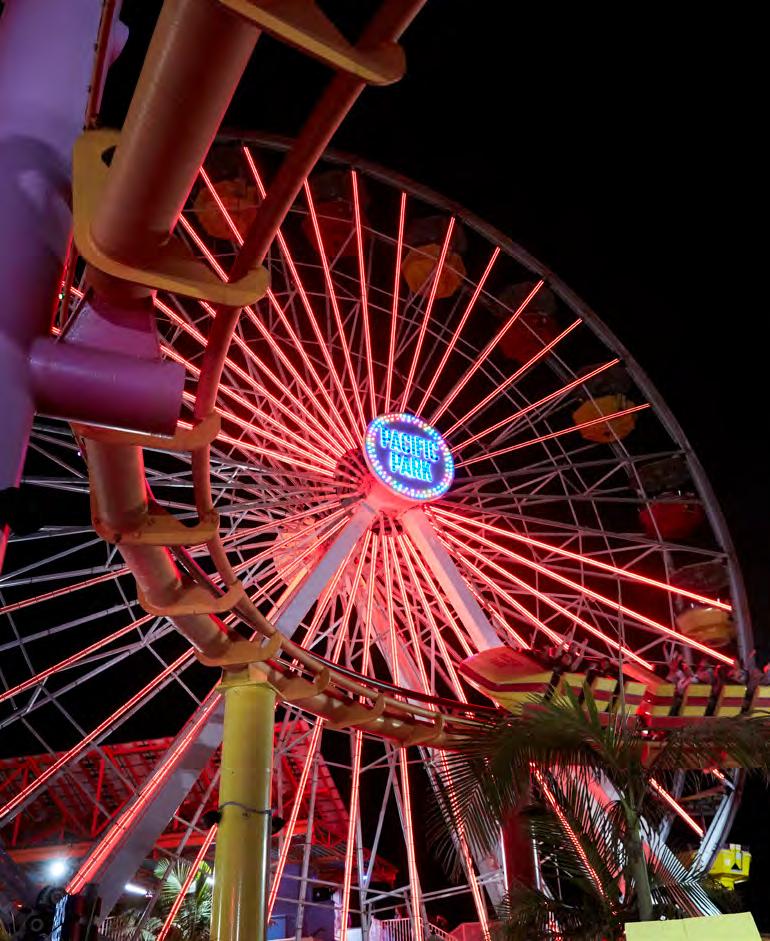
In LA there is only one Getty, but there are two distinct locations. TTe well-trodden path is to the Getty Centre, but we ventured to the more intimate Getty Villa, where antiquities and tranquil gardens await. This hidden gem - located on the Pacific Coast Highway just five miles north of Santa Monica - boasts an impressive collection of art and artefacts from ancient Greece and Rome. Explore the lush gardens and appreciate the serene atmosphere, providing a delightful contrast to the hustle and bustle of the city.
After a few days of acclimatising beachside, we headed into the heart of LA to experience the epitome of old-world Hollywood glamour and the pulse of LA’s modern scene. We stayed at the uber-cool Dreams Hollywood in West Hollywood; a perfect location from which to explore LA.
Celebrate one of Los Angeles’ most iconic landmarks, the Hollywood Sign (which is visible from the hotel roof terrace) standing proud as a symbol of the city’s cinematic heritage. Over a century old, this legendary sign has witnessed the transformation of the entertainment industry and continues to captivate visitors from around the world. For those seeking a touch of nostalgia, a hike to the sign or a guided tour offers a glimpse into the golden age of Hollywood and a breathtaking view over the sprawling metropolis of LA.
Stroll down Rodeo Drive, and immerse yourself in the opulence of Beverly Hills, with a cocktail at the iconic Beverly Hills Hotel. Warner Bros. Studios, with its century of storytelling, is just a short car ride away from Dreams and offers an exclusive glimpse behind the scenes of Hollywood’s magic. For some extra special sprinkles, VIP tours are available.
Staying at Dreams Hollywood also unveils the new ‘too cool for school’ vibe that LA is so renowned for. Designed by the award-winning Rockwell Group, the hotel sets out to echo the classic panache of LA’s mid-century modern roots, with 178 playfully sophisticated modern rooms and suites that balance comfort and elegance.
Our immaculate room had every possible gadget and gizmo to make for the ultimate decadent stay, yet the floor-to-ceiling window with views across downtown LA meant that our focus was firmly on witnessing the pulse of this extraordinary city from a safe vantage point.
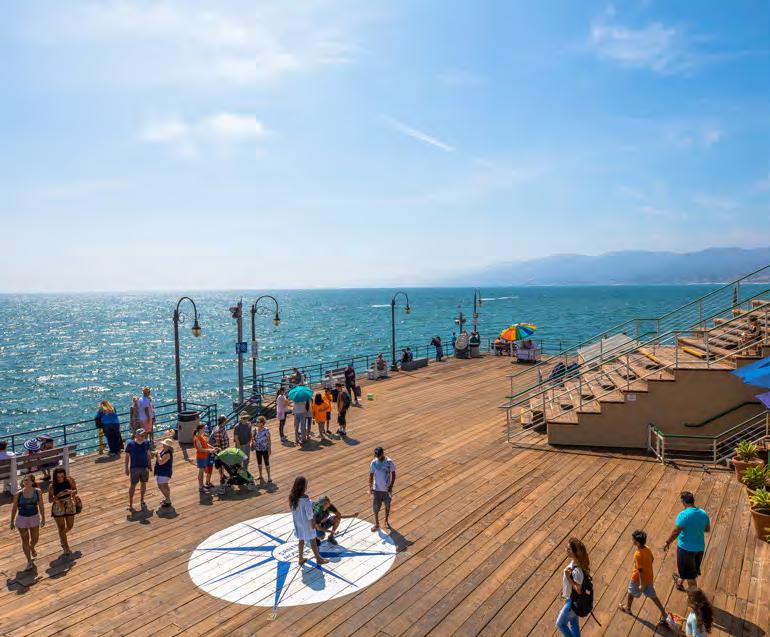
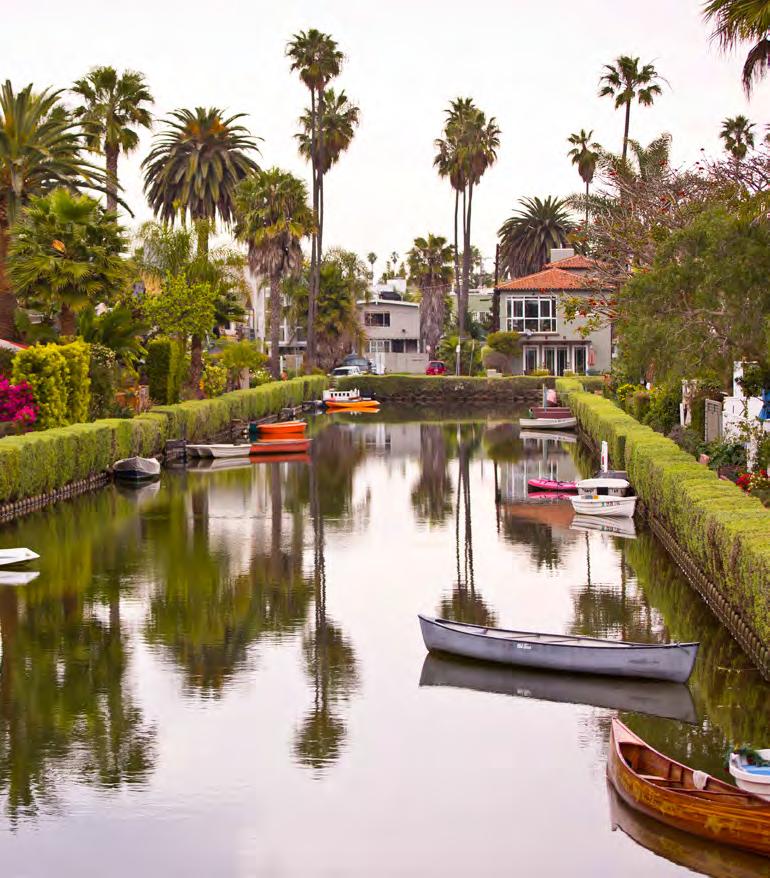
We did make it to The Highlight Lounge, a stunning rooftop terrace with its pool, from where you can gaze at the outstanding 360-degree views including the Hollywood Hills. By night the space becomes one of the coolest rooftop clubs in LA. An array of famous DJs will have you dancing under the stars rubbing shoulders with the new style elite.
Make sure you build in time to dine in the seductive splendour of Beauty & Essex enjoying a multi-ethnic menu crafted by Chris Santos of Tao Group Hospitality.
I am delighted to see that after four decades, this city’s rich history and iconic landmarks intertwine graciously with its new thriving
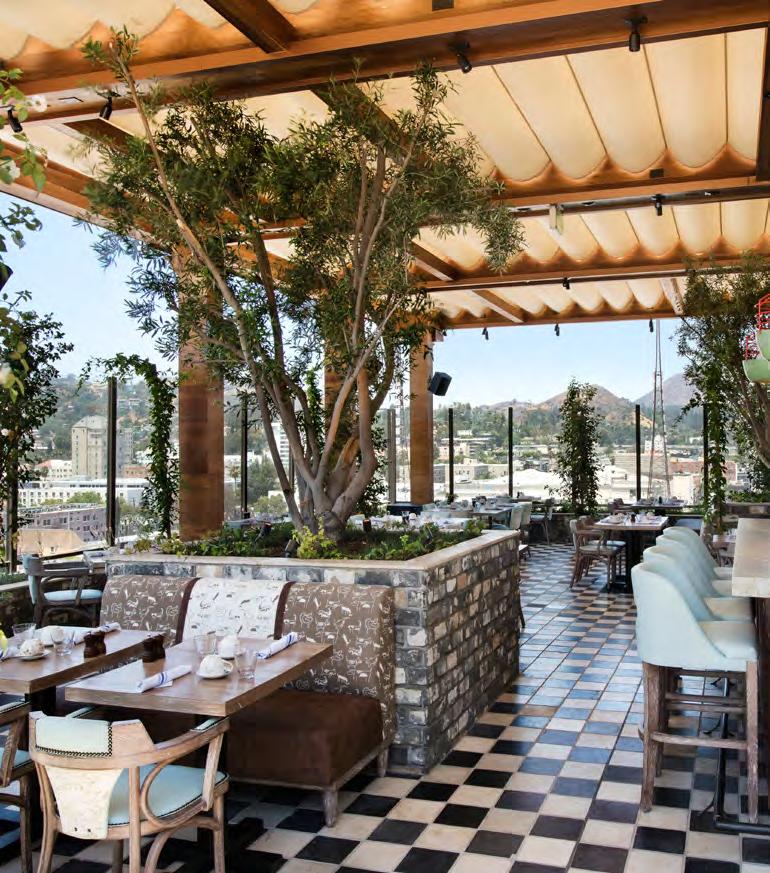
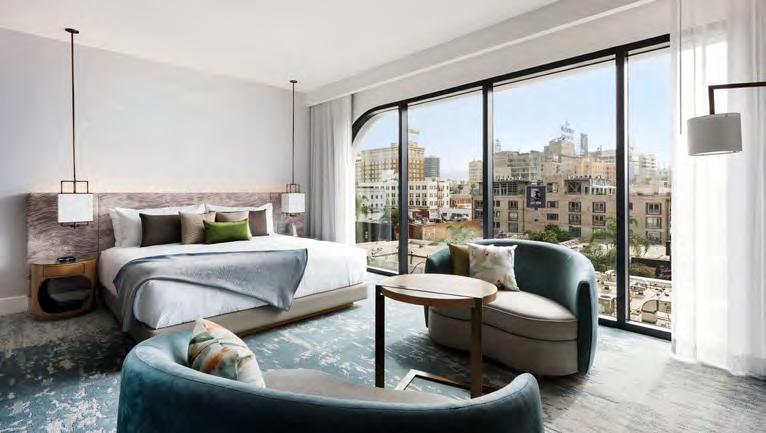
contemporary scene, promising an unforgettable journey through a city that celebrates both its heritage and its innovation. Where the old and new blend in perfect harmony, a tapestry of uplifting experiences in the City of Angels, that seamlessly melds luxury with modern cultural immersion.
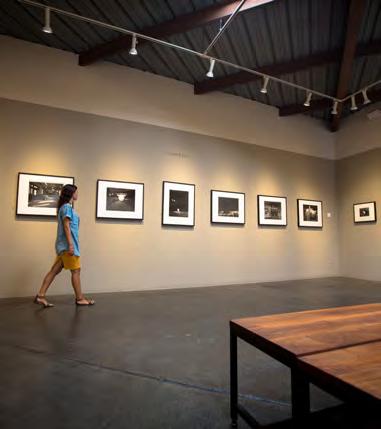




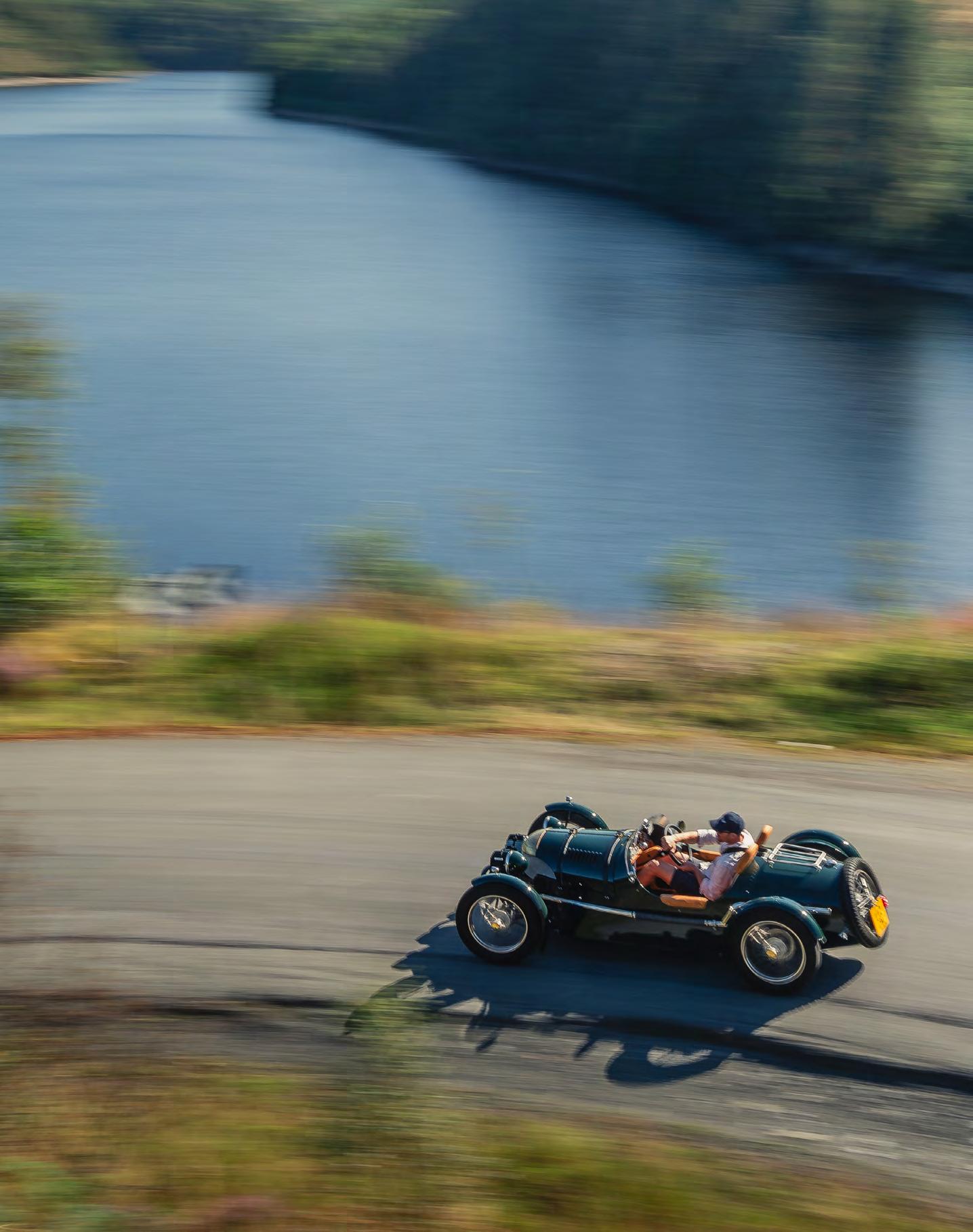
Brand news sports cars with vintage DNA. Celebrating 25 years of joyous motoring. Handcrafted in Britain. from £32,995 +VAT


Words: Aaron Edgeworth - Motoring Editor
One finds himself at a loss as to what to do for the seven weekends I seem to have spare this year. I could venture south to Saint Tropez, firmly planting me into the sights of the Gstaad guy. I could volunteer for a charity. I could ride. I could swim. I could surf. I actually can’t do either of the last two, but maybe this is the year in which that all changes. So what, pray tell, could take up those floating seven spare weekends? Well, if this is an issue that you find yourself ruminating over, I may have a solution.
Jaguar Land Rover. A true behemoth of the automotive landscape. They make many a product, and many that we are more than adequately knowledgeable about. Take in point Roger Chan’s report on the new Sport. Ditto Peter Robinson and the launch of the new Range Rover. They even loaned me a Velar for a couple of months. But what does that mean for my spare weekend? Green laning? Perhaps, though distinctly pedestrian. Getting an SVR and driving obnoxiously for the world to marvel at? Perhaps not. As if in answer to my conundrum, an email falls. It mentions Bowler, and I confirm blind.
Many of us remember Bowler as the maker of the Wildcat and other such beasts. Generally fibreglass bodied on a Land Rover chassis, they were Land Rovers, but not as we knew them. Now, safely ensconced under the wing of Jaguar Land Rover proper, they sit as part of the whole but still remain distinctly original. Indeed, JLR - under the Defender badge - has done something wildly interesting. Wicked cool.
So, take a Defender 90 P300SE and take ALL of the interior out. No really. All of it. Now, stick
some underbody protection and some wide arch protectors. Upgrade the suspension, now stick in a FIA accredited rollcage and some Cobra race seats. Lovely stuff. Now, remove all the driver aids at the flick of a switch. Done? Good. Upgrade cooling all round, add some washer jets for all the mud, and - guess what? You’ve bowlered it.
“This is a single marque championship that doesn’t resemble the Carrera Cup or the Challenge Series. It would be hilarious to see those competitors on this surface.”
This is a single marque championship that doesn’t resemble the Carrera Cup or the Challenge Series. It would be hilarious to see those competitors on this surface. Seven rounds see what are essentially privateers doing battle across mud, ice, snow and gravel. The invite took me up north of the border to sunny Scotland. A lovely evening in the company of staff, an exceptional meal eaten and wine quaffed, I retired early to bed, eager for the next day to start. I was a child on Christmas Eve. The morning light (I won’t say sun, we’re in Scotland after all) breaking through the curtains raised me from slumber, and as my brain awakened I realised what was in store for the day.
We headed out to the hills surrounding Edinburgh for our taster of what it is to go rallying in the new Defender. The format is brilliantly simple: lapped courses that encompass every obstacle one could imagine. Ruts, gates, rocks, ascents and descents to wobble the stomach, slick patches and water. If one could build it, I doubt such variety could be created. The ethos behind the whole series is to develop the driver and then the racer. For example; entrants are treated to a training day at the Land Rover off-road experience in advance of their first excursion. Three formal days of race training and preparation are undertaken and then - and only then - is one unleashed, like the proverbial luminous hound upon the moors. Each event is designed to ask more of and deliver more to the drivers, and over the ideal three-year driver plan, one can advance to the European circuit after the first year… should your skills demand it, of course. Those events are longer and more technically advanced - the Iceland event, as a kind of marquee example of what is possible, covers three days and encompasses 550km.
Freshly breakfasted after a comfortable enough night spent in the city centre, a Defender (naturally) ferried me the 90-odd minutes out of town to the rolling landscape that would play host to the event proper in the days ahead. For us novices, we had a circa one-mile lap that would take on all of the aforementioned obstacles and more.
The ambience is quintessentially motorsport. On site, equality reigns. No time for ego here. A rudimentary pit-style area sits underneath awnings, and a huge transport container is opened to reveal a parts store to rival a franchised dealership. It will take a huge amount to stymie anyone’s progress.
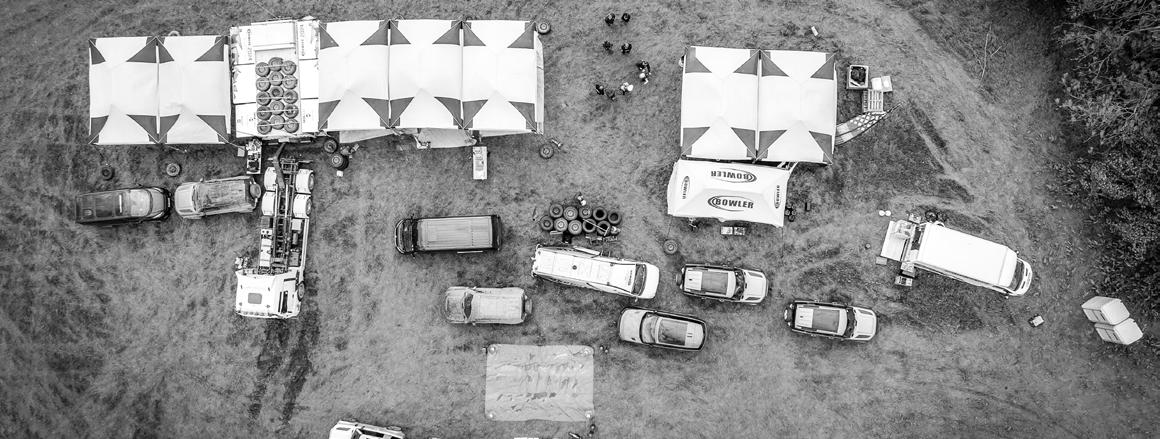
Up close, the product is as functional as it is cool, and it is super cool. Fully liveried, the white base paint on the model I would be driving highlights the race pedigree of the product. From a simple stroll around the car, some aspects are obvious; a roll cage, huge wheels and knobbly BF Goodrich tyres adorn the car. Then there are the less obvious items, such as the radiators providing yet more cooling to the car. Two windscreen wipers are replaced by maybe the largest wiper I’ve ever seen, and then there is the trick suspension, body plating and the map. The Bowler mode is perhaps the most intriguing element of the package. Press this, and everything, literally every driver aid is switched off. This means that in between rallies, one has a road-
compliant and ‘useable’ P300 90, but one that is ready to unleash across any surface at the switch of THAT button.
I was taken on an initial sighting lap by David Lapsley, a British championship veteran and current entry into the Defender series. This was a sedate runaround to introduce the lap, and to advise of any pitfalls and potholes to look out for along the way. The ‘lap’ consisted of several large sweeping turns, some heavily rutted downhill areas, a couple of huge descents and ascents. Overall, it was an absolute riot of mud, hill, dale, rocks, gates, disappearing marker flags and yet more mud. Seats switched and helmet wired on comms, I set out with David - now co-driver - and through the headphones in my helmet, he
barked instructions and advice as we were buffeted around inside the cage. Control of a car such as the 90, in conditions such as are found on Scottish wet hillsides in May, is, well, fraught with danger. But, as a tool to hone a driver’s car control, and, counterintuitive as it may sound, I can’t imagine there is a better series in which to learn.
As far as single marque series go, it is more akin to the Caterham cup than the Carrera. This isn’t a procession of a single line and drivers within 0.1% of each other. This is a test of man and machine, where different lines, different skills and different running orders all come together to create a package that is full of fun and camaraderie. For my first lap, I spent perhaps 87% of it laughing,
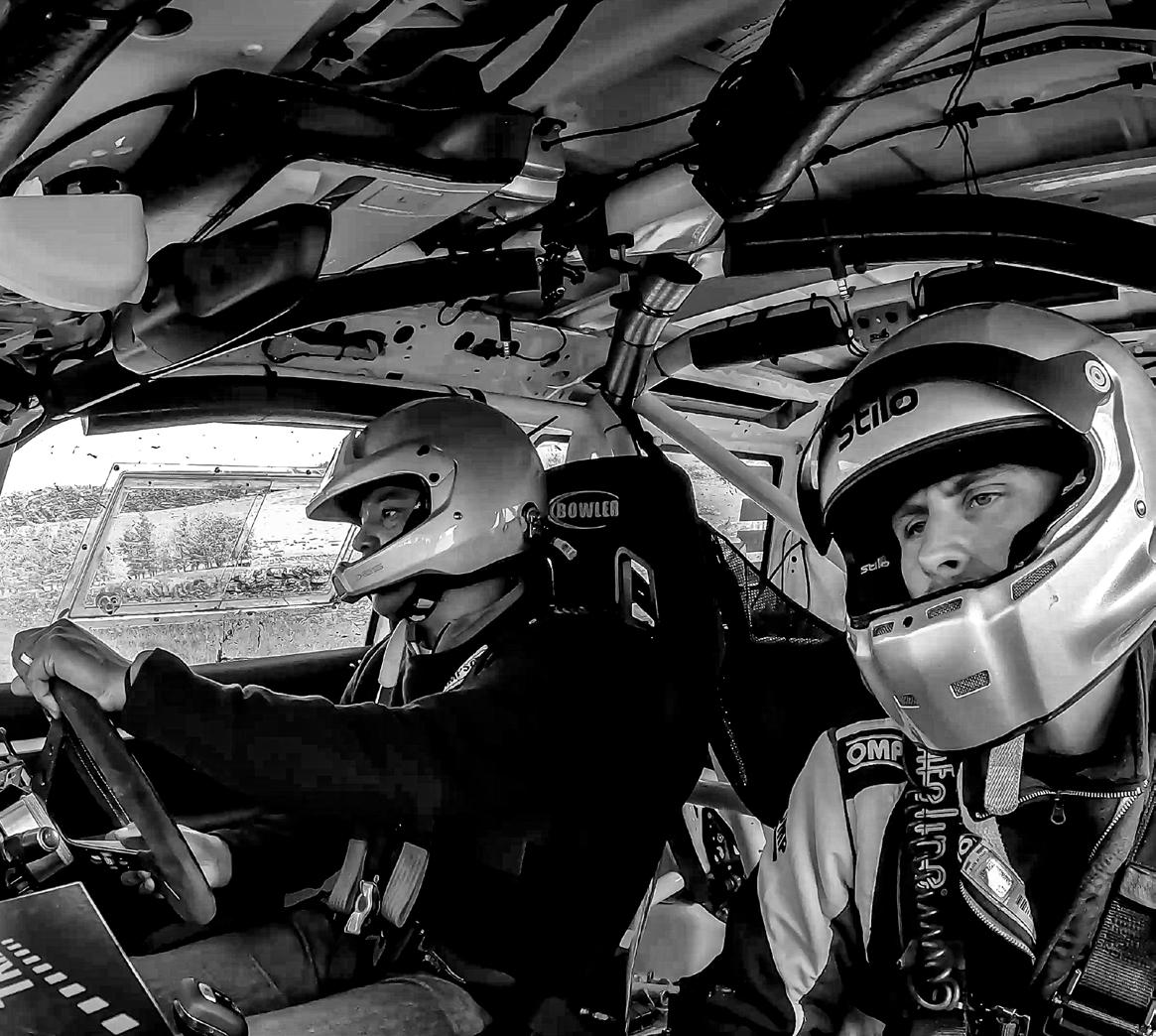
such is the fun of wrestling a car such as the 90 across silken mudded farm tracks. Tipping the squared-off nose over the precipice of a gorge just to stamp on the throttle at the bottom, eyes to the sky as you come back over the ridge on the opposite face? It is such joyous, joyous fun. On each pass, the laughs decrease exponentially. The brow furrows, eyes sharpen, grip tightens and one wantsnay, desires - to do better. To be faster.
I was given a handful of laps across the day and with each, my wish to start the next increased with each turn of the wheel, each flash of mud across the screen and each market point traversed successfully. The rewards are obvious for the driver, and by the day’s end I felt as though my pace had genuinely increased to
something akin to confidence. That was true, right up until David took me for a fast lap to truly demonstrate what the series can offer drivers with perhaps slightly better CVs than my own. I thought I’d laughed a lot earlier, but this was another level of hilarity - albeit marked by the knowledge that my previous confidence was misplaced. The Bowler Defender is a magnificent machine, and in the right hands it can make supreme progress across the worst of conditions. I am humbled to admit that I am not the right hands.
Land Rover and the Defender brand have, in addition to the Bowler series, become the official car partner of the Dakar Rally from 2025. The company will provide a fleet of Defenders to support the event, alongside
transport officials and VIP media during the competition’s duration. This contract extends until 2028, but notably, in 2026 we will see the addition of a works team entrant into the event, which is another demonstration of the Defender brand’s commitment to extreme durability and capability across motorsport.
My takeaways were many and varied, and I recognise more than ever that I need to commit more time and effort to fast-timed driving. That, and the knowledge that Bowler’s understanding and handling of extreme condition driving dynamics is, quite possibly, unrivalled. The JLR team continues to impress. Now I just need to start squirrelling money away for a 2026 entry.
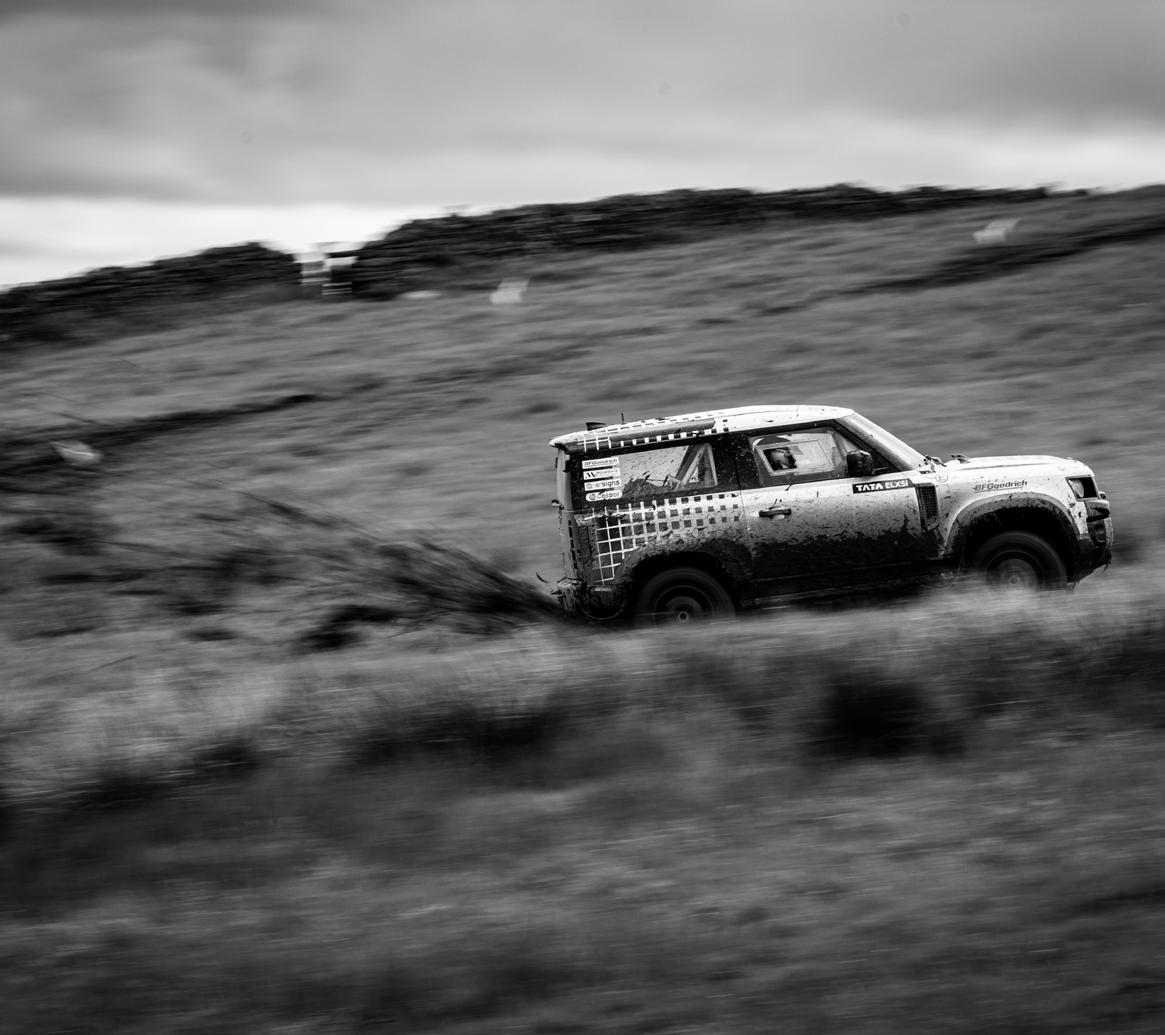
“ by the day’s end I felt as though my pace had genuinely increased to something akin to confidence. That was true, right up until David took me for a fast lap.”
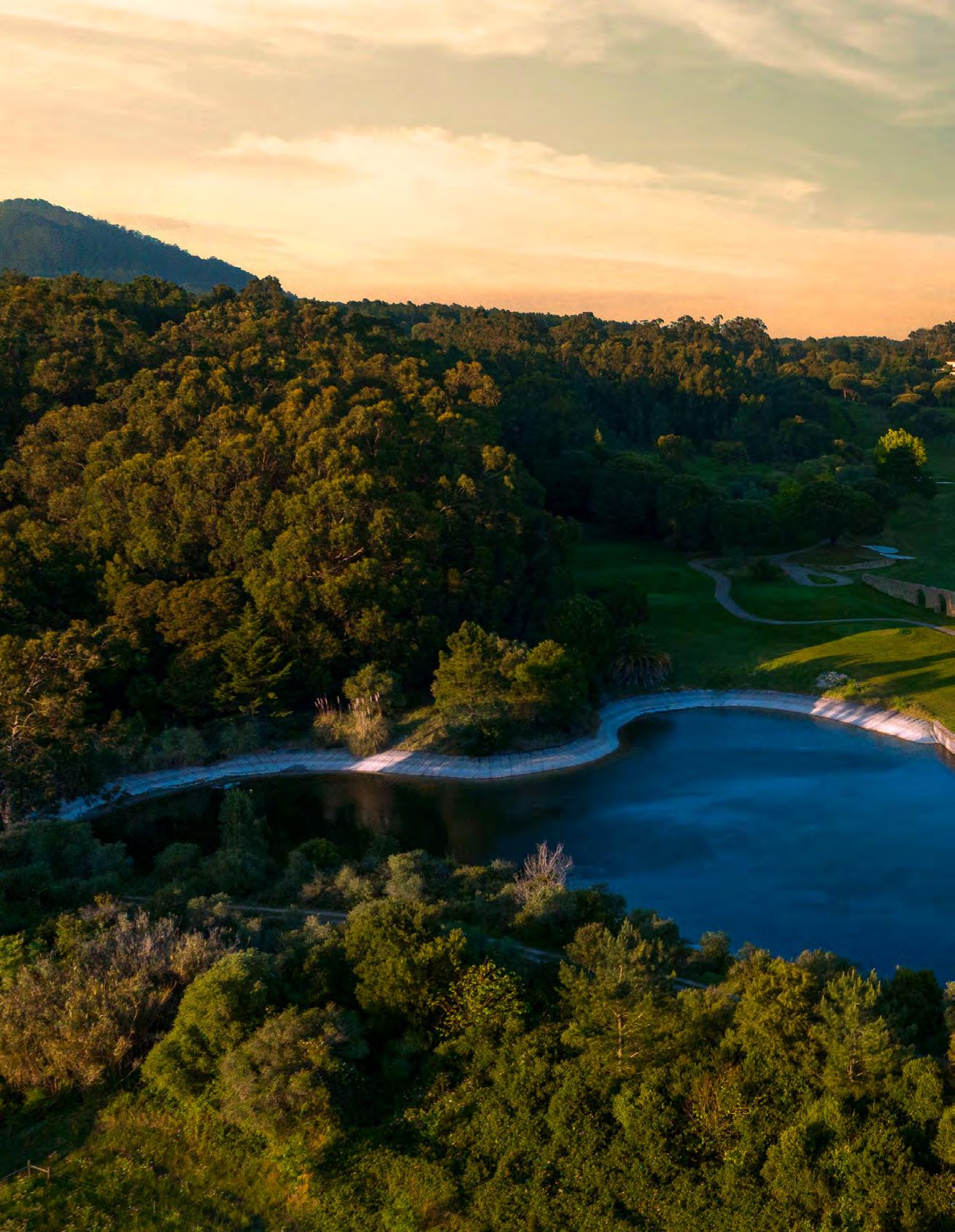

Words: Jake Perry-Gardiner
Nestled just a few hours north of the renowned golfing haven of the Algarve in the Lisboa e Vale de Tejo region of Portugal, lies the exquisite Sintra-Cascais Nature Park. This area, with its stunning landscapes stretching from coastal towns to lush countryside, is a paradise for nature lovers and those seeking a tranquil yet vibrant escape.
At the heart of this verdant expanse, in the southern foothills of the Sintra Mountains, I discovered the Penha Longa Resort; a sanctuary that beautifully marries luxury with the great outdoors and boasts one of the top 30 golf courses in Continental Europe and among the top 10 in Portugal.
Penha Longa, once a hidden monastery, now boasts a prestigious five-star hotel, a challenging 27-hole golf course, a Zen inspired spa and an array of seven delectable restaurants - two of which hold much-coveted Michelin stars. Despite its modern amenities, the resort has managed to retain an aura of seclusion and charm, making it a rather idyllic retreat - how could I possibly resist?
The resort’s crowning glory is undoubtedly its two golf courses: the Penha Longa Championship Atlântico and the nine-hole Mosteiro. Both were masterfully designed by the esteemed architect Robert Trent Jones Jr. in 1992 and 1995, respectively.
This 18-hole course quickly ascended to the top ranks of Portuguese golf courses, and hosted the Portuguese Open in 1994. The design is a testament to Trent Jones Jr.’s genius; it skilfully incorporates the natural contours and elements of the landscape, creating a course that is as challenging as it is beautiful. The fairways wind like a river through the valleys and hills, offering stunning vistas at every turn.
It’s a course that offers a profound connection with nature. The lush greenery seemed almost cinematic as the forests swayed on the distant hills, coming alive under the influence of the Atlantic winds. Towering pine trees and strategically placed bunkers present are as beautiful as they are engaging, urging players to make thoughtful decisions at every shot. The sand grade in the bunkers is soft enough to trap you - be warned.
One of the most striking aspects of the course is the sense of solitude it provides. Rarely did I encounter another player during play, allowing me to immerse myself fully in the natural surroundings. This sense of isolation fundamentally enhances the experience, making each round feel like a journey through a rare and pristine landscape.
The course also pays homage to its historical roots. The famous par-five on the sixth hole, where the green is nestled between a lake and mediaeval archways, offers a glimpse into the past while challenging the present-day golfer. The weather here, however, can be a formidable adversary. The same winds that breathe life into the valley views can turn a straightforward hole into a Herculean task. This is especially true on the 15th hole, where a 155-metre carry over water tests both skill and nerve.
The shorter Mosteiro nine-hole course is no less impressive. Named after the monastery (Mosteiro) around which it weaves, it offers a unique blend of historical ambiance and golfing challenge. Once again, Trent Jones Jr. has used the natural flow of the land to create a course that tests even the most seasoned golfers. Fairway and greenside bunkers are strategically placed to ensure that each shot requires precision and thought, perfect for those seeking to perfect their swing amid spectacular surrounds.
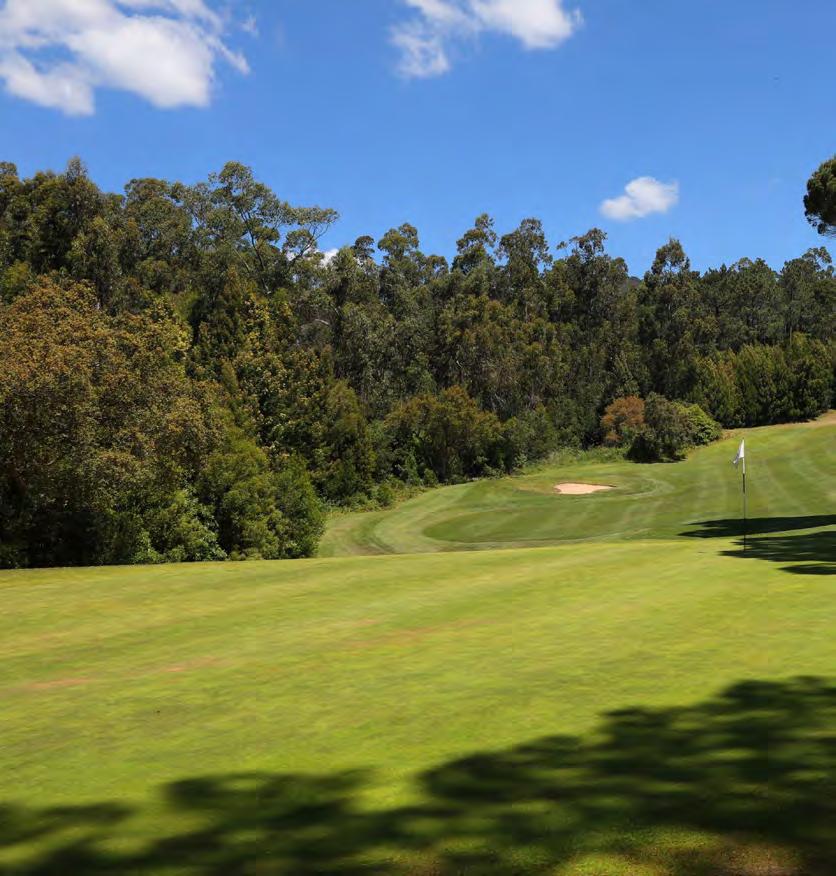
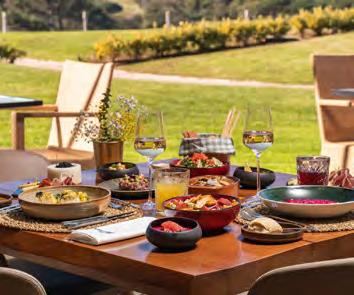
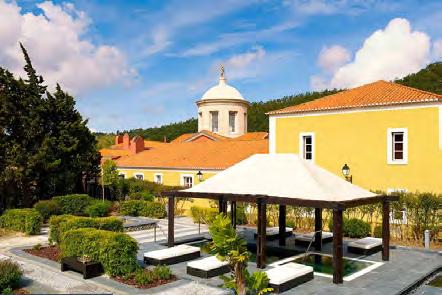
Beyond the golf courses, the Penha Longa Resort offers an array of luxurious amenities. The newly refurbished five-star hotel is equipped with both indoor and outdoor swimming pools, a fully outfitted gym, jacuzzi, and other modern comforts. The architecture of the hotel is designed to harmonise with the surrounding historical structures, ensuring that the 14thcentury monastery remains the focal point.
The monastery, now a venue for weddings and events, adds a layer of nostalgic richness to the overall resort. Walking through its ancient halls, adorned with original hand-painted tiles and featuring a grand 2.5-metre tall open fireplace, you’re transported back to a time when monks prepared their meals in the same kitchens. It’s a blend of historical authenticity and modern functionality, resulting in a breathtaking venue for any event.
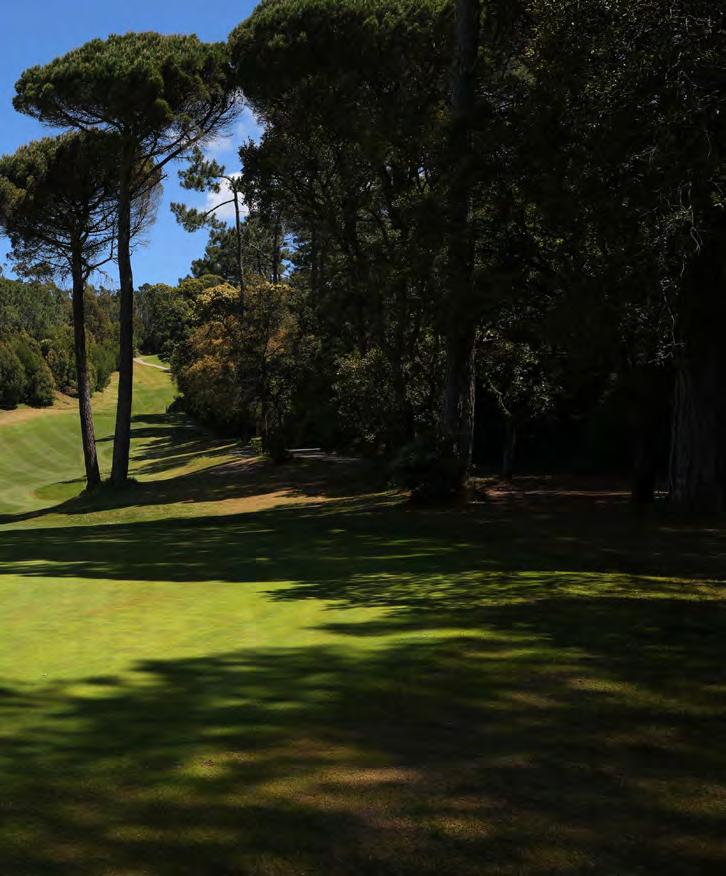
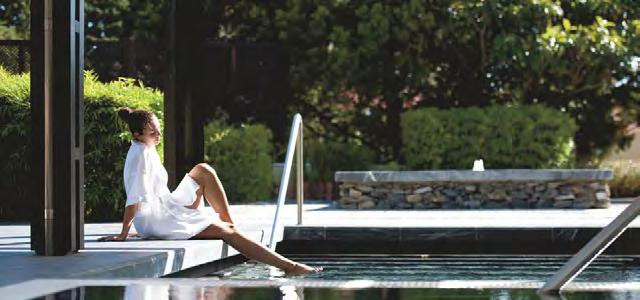
If the golf courses are the heart of Penha Longa, its culinary offerings are the soul. The resort boasts seven restaurants - including two Michelin-starred establishments - ensuring guests are spoiled for choice should they find enough time between rounds to dine.
After a challenging round of golf, the
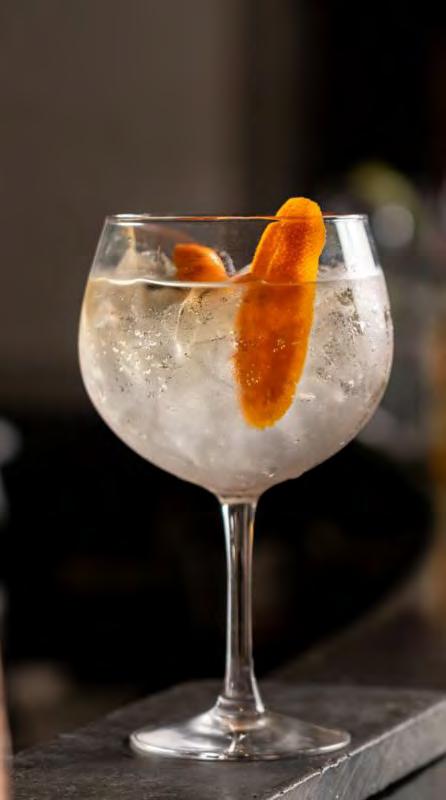
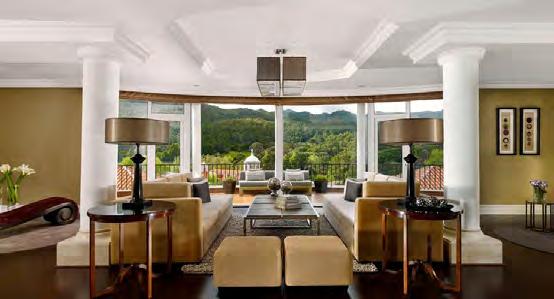
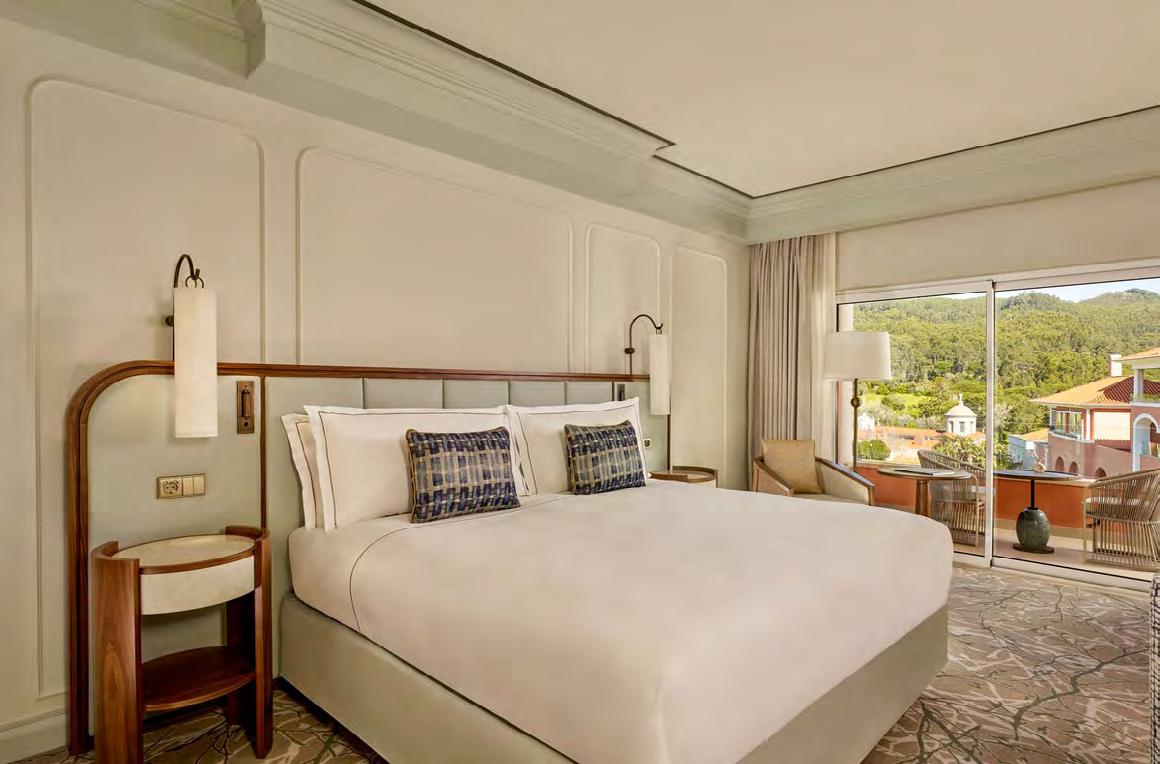
clubhouse restaurant Arola offers a strong blend of traditional Portuguese cuisine with contemporary flair. The menu, a creation of renowned chef Sergi Arola, combines oldschool and new-school elements, delivering dishes that are both impressively forwardthinking and yet rooted in heritage. The waitstaff’s passion for food is evident in their impassioned explanations of each dish’s provenance. Despite its gourmet credentials, Arola maintains a relaxed atmosphere, allowing guests to dine comfortably in their golf attire or casual wear.
This pan-Asian restaurant offers a culinary journey through Thailand, Vietnam, China and Japan. The elegant interior design, coupled with views of the meticulously kept gardens, creates a serene dining environment. Each dish can be expertly paired with a local Portuguese wine, with recommendations from the knowledgeable head sommelier, of course.
As Portugal’s first Michelin-starred Japanese restaurant, Midori delivers an exceptional
dining experience. The name, which means “green” in Japanese and happens to be the name of the original owner’s daughter, is fitting given the lush surroundings of the resort. The intimate setting, accommodating just 20 guests, ensures a highly personalised and intimate dining experience.
The restaurant’s design elements, from murals depicting the arrival of Portuguese sailors in Japan to wave-like wall panelling, enhance the cultural fusion embodied in the menu.
Each morning, I was greeted by the crisp, invigorating air as I prepared for a day on the golf course. The natural beauty of the Sintra Mountains, coupled with the expertly designed courses, provided a golfing experience that was undeniably satisfying.
One particularly memorable moment occurred on the 10th hole of the Championship course. Standing at the highest point, I felt the sharp, cold winds that contrasted starkly with the warmth at the first tee. This hole, with its panoramic views and demanding layout, encapsulated the essence of Penha Longa—stunningly beautiful,
historically rich, and incredibly dynamising.
In the evenings, after a day of navigating fairways and greens, I indulged in the resort’s culinary offerings. The variety and quality of the food were impressive, each meal a celebration of flavours and cultural influences. The Michelin-starred experiences at Midori and the innovative dishes at Arola were highlights, but even the more casual dining options provided a high standard of cuisine.
The blend of history, luxury, and natural beauty at Penha Longa creates an experience that is truly unique. Whether you are a passionate golfer, a history enthusiast, or simply someone looking to escape the hustle and bustle of everyday life, this resort offers something for everyone.
Penha Longa Resort is a destination that transcends the typical golf resort experience. It is a place where history and modernity coexist harmoniously, where nature and luxury are seamlessly integrated. It is a sanctuary that offers both challenge and relaxation, making it a must-visit for anyone seeking an exceptional escape.
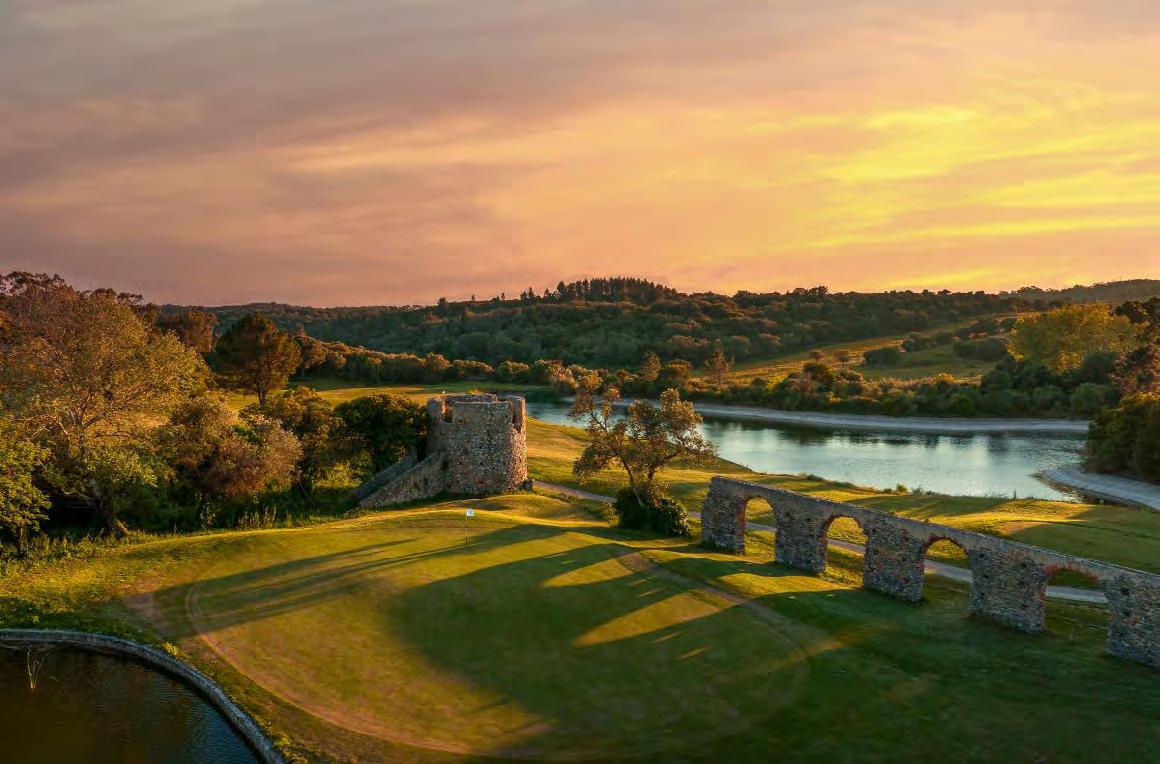
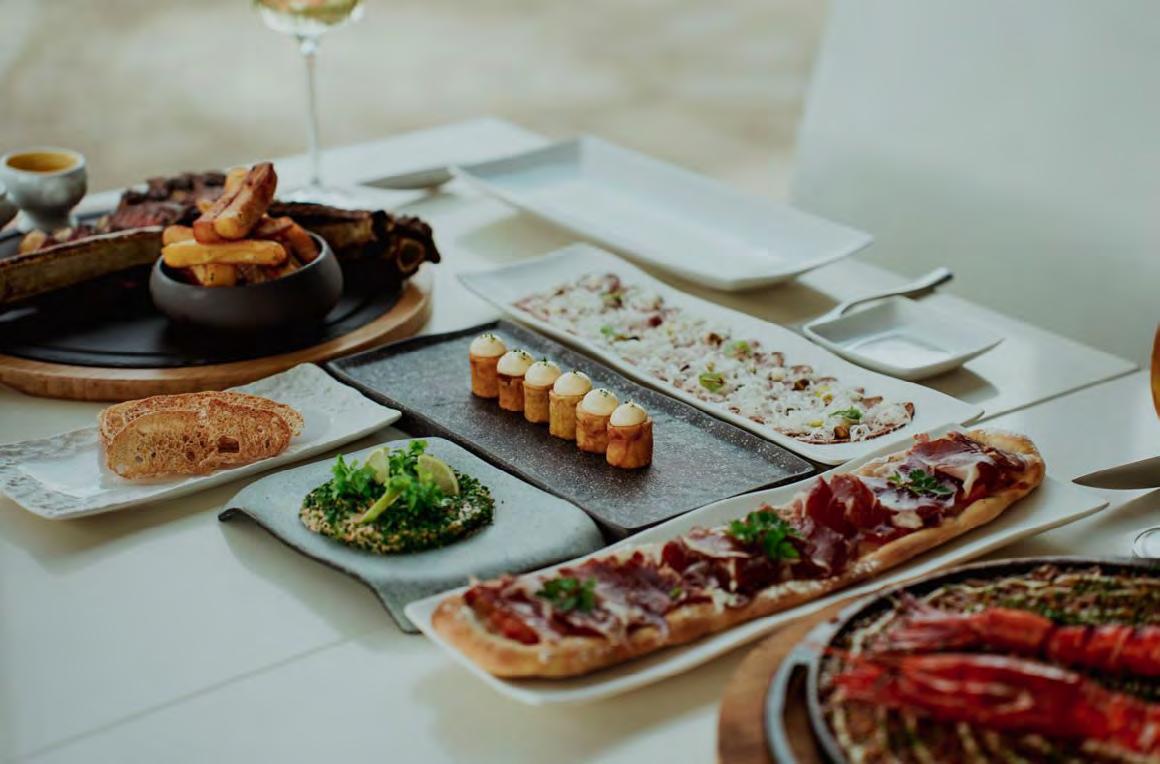
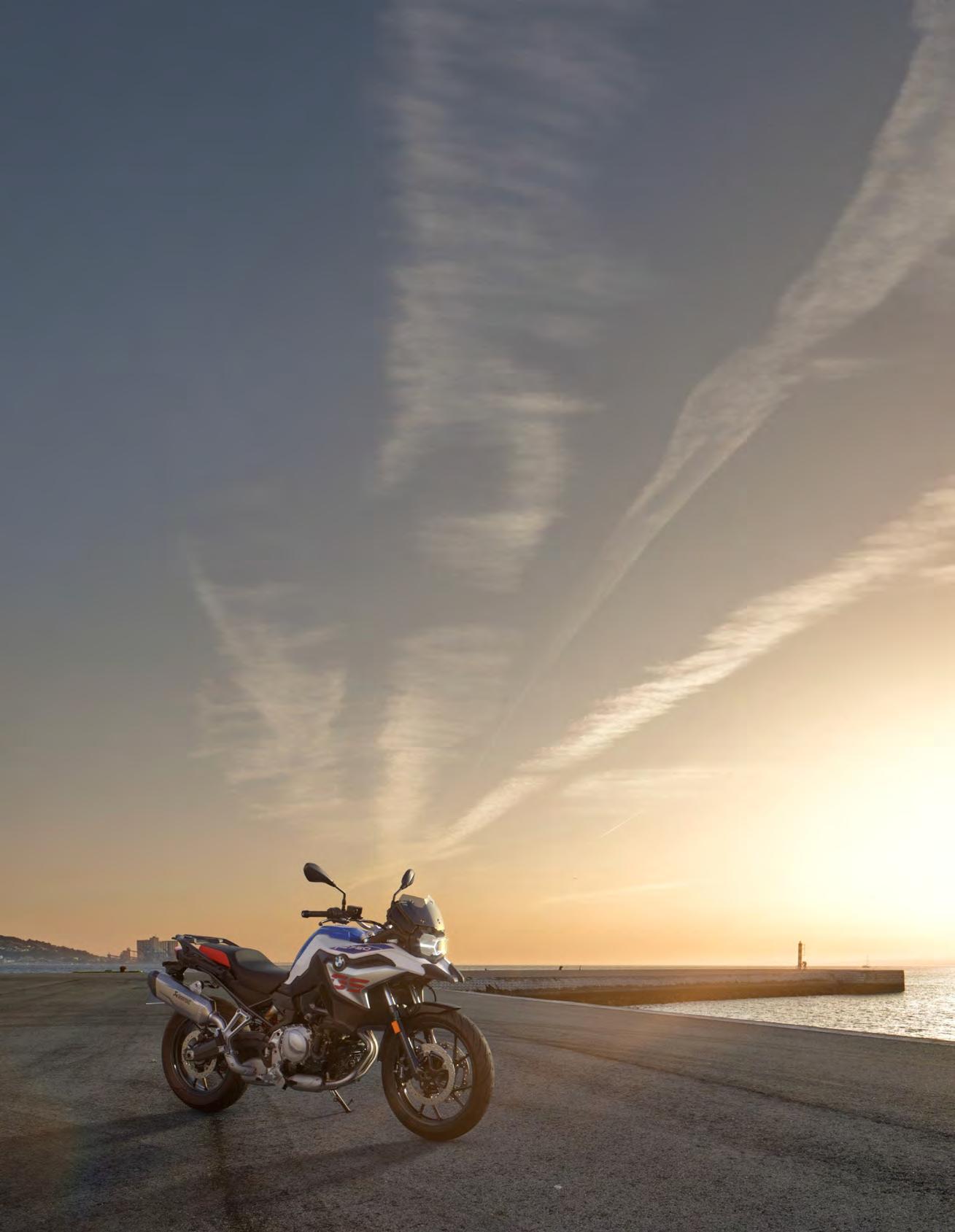
Words: Aaron Edgeworth - Motoring Editor
One’s forties bring with them many things. Grouchiness. Pessimism. Increased back issues. There are, however, other benefits, such as a more laissez-faire attitude to treats and/or frivolities. Toys, if you will. For me, one of those toys that I have always wanted to involve myself in was motorcycles. I have a wide range of interests, automotive being peak among them, but the list is long, and the glaring hole was that of the two-wheeled variety.
In my youth, the issue was very much one of responsibility. My first instinct would be to see how quick something was, and I would have ridden with the fearless abandon that would have seen me riding - and perhaps breathingfor the shortest of periods. I have also always had a penchant for MotoGP, the premier class of motorcycle racing; Formula 1 on two wheels. A love of Valentino Rossi also meant that my context for motorcycling was legout air braking and drifting out of corners.
Whenever presented, mainly with sports, that I have no experience in, the mantra, ‘do it like they do on TV’, has always served me well. With my experience of seeing people on bikes, Isle of Man TT included, that advice would have yielded the shortest two-wheel career ever lived. So, at 42,
newly responsible, and with access to a variety of much safer ways in which to access speed, I made the decision to learn to ride a motorcycle.
There are many routes to licence in the UK. Compulsory Basic Training (or CBT) represents the lowest level. That goes all the way through to direct access courses that enable the rider to finish with a full UK category A licence, meaning unfettered access to the bike market upon completion and passing of the two associated tests.
Looking around for a provider can be somewhat of a minefield. Various providers, various centres, various setups, various instructors. Genuinely, it is a minefield. There is a training centre close to where I live and I routinely saw bikers in their car park being
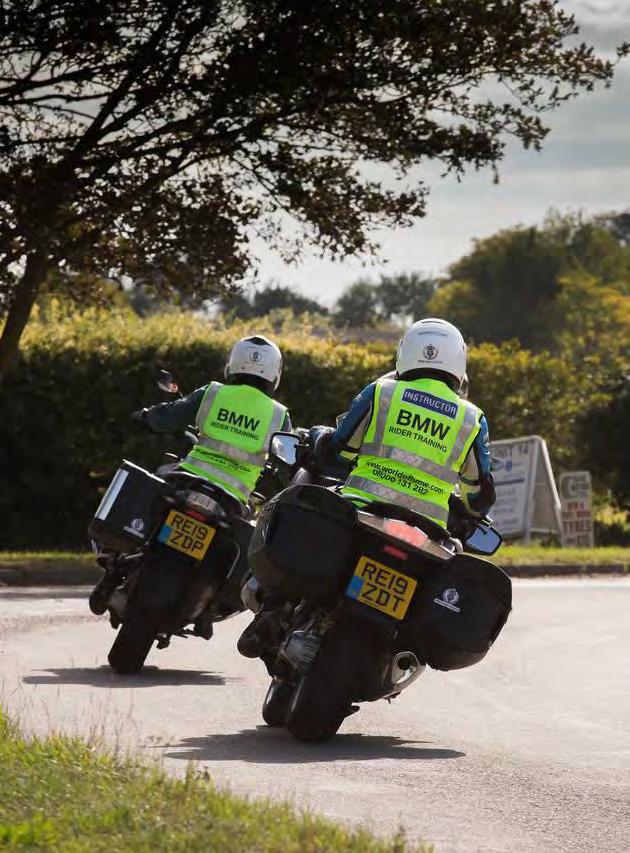
harangued by a man on a big bike while performing laps on underpowered and rather beaten-looking steeds. That wasn’t quite the reassurance I needed. Through conversation with people in the know and riding friends, I was directed towards BMW Motorrad UK, who through a dedicated group of training centres, provide a Rookie-to-Rider training, aimed at people exactly like me. I don’t mean dashing, charismatic, brown. I mean people of a certain age and disposition, perhaps. The course is available in a couple of different iterations, but I booked in for the full fat, unadulterated seven-day intensive course that would take me through, fingers crossed, to a full UK category A licence.
My editor asked what I would be able to ride afterwards, I asked if he had seen the guy who has an eight-litre V10 Dodge Viper engined bike….
Theory came and went. ‘Twas but a trifle. It actually wasn’t, as with most things when tested in a formal environment, there was the usual trepidation, break in confidence, tears. Well, no tears. However, after some strategic studying, I hotfooted to Morden in South London, up the second floor of Athena House, and in mere minutes, left triumphant and smug. Stage one complete. I then had the arduous few weeks’ wait until my scheduled slot to start my seven day intensive. Over that period, my body, my mind, Christ, even my sanity was tested as I rode the upward and downward swell of excitement and outright fear. Yes, I know what a motorcycle is. Yes, I understand that it’s just you, a puny human, atop an engine and bare to the dangers that asphalt and fast-moving automobiles present. Long story short, I knew what it was I was embarking upon, but the reality, I felt, would actually be somewhat different.
The day was nigh.
The training centre that I would be attending is located in Royston, Hertfordshire. A stone’s throw from Cambridge, the centre is nestled amongst fields in a somewhat non-descript countryside industrial complex, the like of which are present, nestled in fields, the country over. The set-up here immediately dispelled any fears I may have had of the facilities and level of equipment and tutelage. In a double barn-esque set-up, the centre houses a welcome area adorned with some classic and some newer models of the BMW lineup. There are two classrooms where attendees discuss safety, maintenance and technique when not out on the bikes.
Ahhhhh, the bikes. The centre houses a huge fleet of bikes that can cater for all of the courses and needs. The basic starter bike for
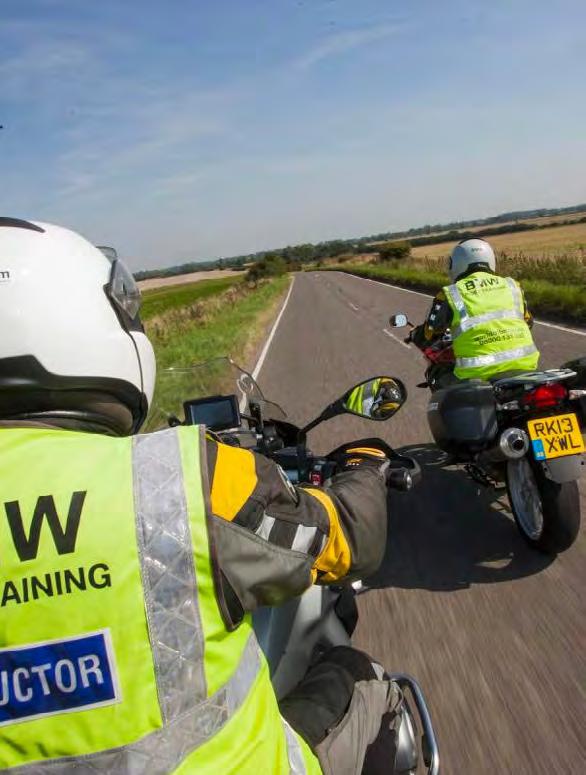
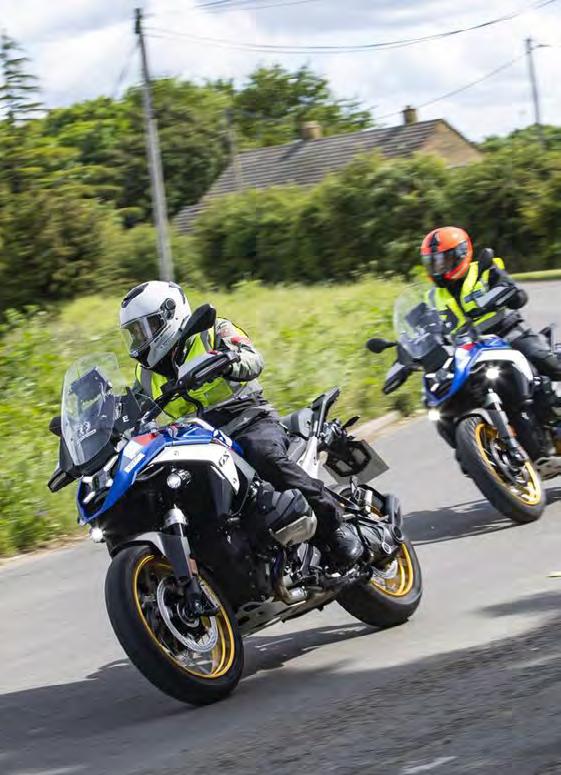
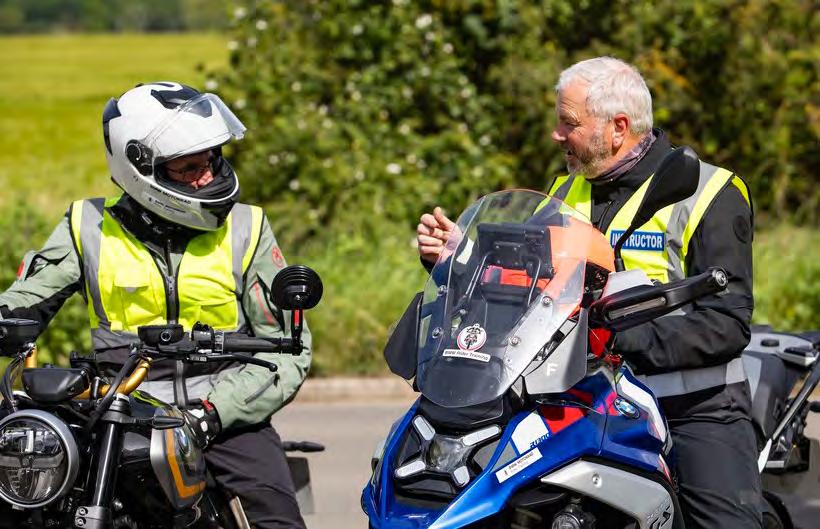
my course was the G310R. A bike that, for all intents and purposes, looks like a serious bit of kit, to the uninitiated at least. Deeper into the garage there are examples from the GS, R and F sport ranges. The F750GS is the larger bike that I would progress to for the latter portion of the training. All bikes bore number plates including ‘23’ so there were no worries of sub-par archaic machinery. I met Ian Biederman, Head Instructor and owner of the company that provides direct BMW training. We discussed many things from trepidation, techniques and what to expect for the week ahead. Training is at a maximum of two students per trainer so the dedication and attention is second to none.
I met Darren who would provide my first day of training, and I was then brought to the equipment that clearly showcases the importance of best practice held by the centre. Helmet, boots, gloves, protective jacket and protective over-trousers are all provided. I should also add that the course includes the bike hire, fuel, equipment, insurance, and the booking and cost of the associated tests for the final two days. It is literally a case of turn up, learn, buy yourself some lunch and that’s all one needs. Given how intense this intensive course is, trust me when I say that one needs no other distractions; it is a tiring few days of concentration and physical effort.
The course, as I have said, is aimed at those who haven’t ridden a geared motorcycle previously and are looking to get the most out of the training. The training adopts an intensive layered approach, immersing the student in the totality of what riding represents. There is a big push towards the idea that one is learning to ride a motorcycle, not to pass a test. If one can ride, one can pass, and it’s more important to teach students the wider aspects of being on a bike than simply the manoeuvres and rules needed for licensing. For such a novice, the light entrance into training consisted of a lot more contextualisation of the issues, dangers and techniques discussed within the theory test. The greater understanding of what a bike is came first and foremost. How this all comes together on a bike, whilst being interspersed with the safety element of riding, meant that when I did approach the bike for the first time much of the initial worry had dissipated.
One’s initial few hours are spent on the aforementioned G310R, a compact bike that introduces the feel of a bigger bike and is best suited to gently ease oneself onto the concept of geared riding. The centre has a tarmac pad setup, akin to the test centre pad where practice and practice and yet more practice is undertaken. I was eased into the slalom, the figure of eight and the U-turn on this contained tarmac, and
as day two started, I found myself out on the large entrance driveway gaining experience in the gearing, the concepts of contra steer, and also the specific necessities of the Module 1 test such as avoidance and the emergency stop. Having never ridden before. Did I mention that?
The first time I hit 18 mph on the bike, I was incredulous as to how they thought I could hit 30. It then dawned on me that the training centre exited onto a 50mph road and at that point, I genuinely thought this entire exercise utterly unobtainable. But it works. It turns out,
it’s not voodoo or some miraculous blend of hypnosis and subterfuge. The layering aspect of the training, coupled with some classroom work to solidify reasoning and context means that not only does everything make sense, but the idea of trust between oneself and the trainer grows exponentially. Soon I was sweeping through the timing gate at 30mph with slightly butterflied abandon.
By the time that I moved onto the larger F750GS, I felt confident in the riding aspects of the course. What do I mean by that? Well, I guess, like many other things in life, one may be

proficient but not perfect. One may have skills, but also quirks. For me, I kept trying to replicate every Uber Eats rider I saw and was attempting stops with my feet dragging to the side. Not to mention that standard when learning, the grip of the front brake in panic eliciting a couple of unsure moments at junctions.
Denis, the trainer for the bulk of my seven days, is not only very aware of your skills and limitations having been with you through the process, but across stops and lunch breaks provides time to answer questions and allay any fears. It is incredible the pace at which confidence comes and with the location as it is, there is more than a sufficient variety of roads to not only provide experience as to the various scenarios one will encounter, but also allow for the day to feel less monotonous. Yes, the area is located close to the testing centre. However, as mentioned: this is about learning to ride, not memorising test routes.
Each course is bespoke to the attendee and their progress, so it isn’t as simple as laying out a schedule for the week that will serve in facsimile for each following attendee. The trainer makes decisions as to progress, and, unbeknownst to me, had been assessing me for the CBT aspect over the first few days of my training. I only realised this when presented with the first of my certificates on offer for the week. Rather than making a decision based on two hours on the road after a car park session, Denis was teaching me to ride a bike ‘covertly’; he had a better idea of my skills, and I was allowed to learn and progress without the burden of the additional stress of being under scrutiny.
Another sensible technique that the centre offers is that on one day of the course, they have access to the DVSA test centre where one undertakes the Module 1 part of the test.
Frequenting the test pad prior to turning up at examination time makes a huge amount of difference to the emotional aspect of the test. In reality, it’s the easier aspect of the test. As Denis put it, ‘If at school, you were told you had a test in five days, and all the questions and answered were provided and you could practice exactly those questions, safe in the knowledge that they are the only things to be tested, would you find it hard?’.
While yes, admittedly, that’s all very well and good in plain logical speak, but the reality is different. For example, I massively got the yips on slow manoeuvres; the figure of eight was causing me huge issues as I sputtered around trying to maintain balance and or momentum. Likewise, the U-turn had me nervous, as space is a premium and a foot down means an instant failure. Whilst it is not rocket science, there are
elements that need to be faultless and therein lies the fear. So, having access to the exact area where I would do battle went a huge distance to quelling some of my fears and reined in at least a portion of those yips.
The test was set for Wednesday, the day before my final test. Stakes were obviously high, but I sashayed my way through questions, manual handling, the slalom, a figure of eight, a U-turn, an emergency stop, avoidance at 30mph, and, most importantly when still high from the intoxication of the test, the safe return to the car park. With three mere minors (more borne out of a strange obsession of not checking blind spots), I had passed Module 1 and was therefore eligible to move onto the full test the next day.
The main test encompasses a 45-minute ride with an independent test appraiser. Like the system employed by the training centre, one is supplied with an intercom to listen to directed riding for the first 30-ish minutes of the test, and then a 15-minute portion of what is referred to as free-riding (but in essence is
just less direction from said instructor). Rather than specific instructions, one is directed to follow the route for Cambridge, for example, and one rides until directed away from the route.
To lead up to this, road riding is the major portion of the training. Once the driveway had been conquered and we moved onto the road, the training then took on much deeper meaning and one could see, feel and hear the advice given by the instructors play out in real-time. For the first ride of the day, a route is generally discussed where any oddities of the road set-up are explained, and the aim of the day is clearly outlined. Denis kept me abreast of deficiencies and provided advice consistently. The advice also comes with praise when deserved, so one feels like there is progress rather than being beaten into toeing the line. Everyone is an adult and everyone is treated as such. When I opted to make the most ill-judged move into the second lane of a dual carriageway at a pace more appropriate to a multistorey car park, I wasn’t admonished like a child, but we discussed the error, discussed best practice and
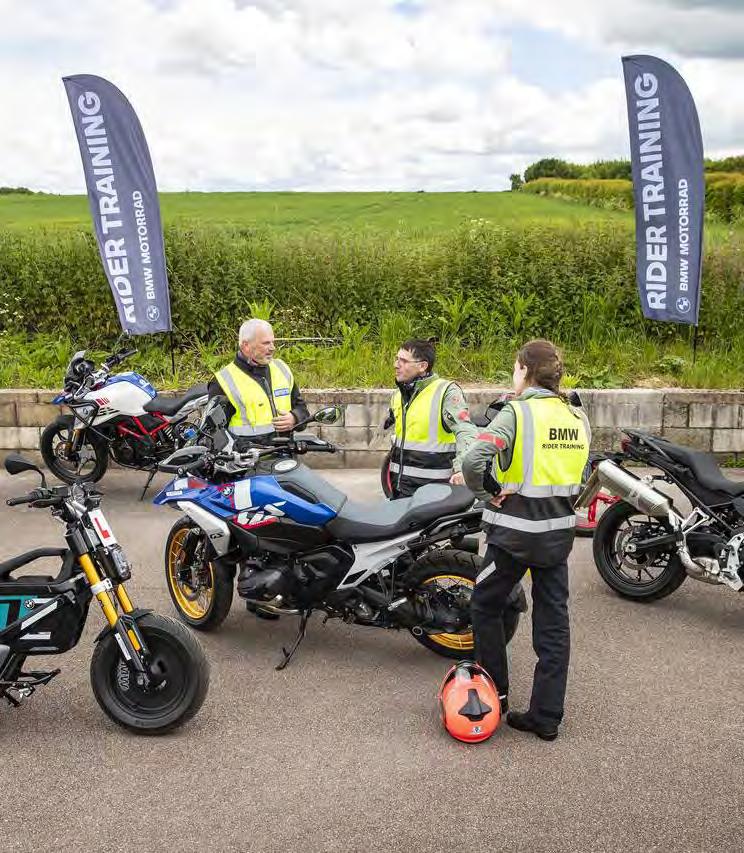
moved on.
Use of gears, visibility, dealing with other road users; the sheer amount of time spent in the seat means that before the day seven test even looms on the horizon, one has encountered many of the road types, users and hazards that not only will be present on the test, but will also punctuate ones riding career far into the distance.
Day seven arrived. Nowhere to hide.
The morning was spent on a long ride before my lunchtime-ish date with destiny. The roads around the locale, now familiar, were traversed with a constant in-helmet commentary from myself. Trying to vocalise the mental advice I was giving myself, and also to keep myself directed towards the hazards, and also the features of my riding, that needed extra attention and care. After all, being able to ride is one thing, being able to ride safely, sensibly, and well, is another thing entirely. The advice of Denis is also ever-present in my ear and there is perhaps 10% increased softness in his voice that day, as
if knowing that the nerves are at play and calm will need to reign supreme.
We returned to the DVSA test centre, the site of my previous day’s success. 13.30 rolled around and now was the time of reckoning. Long story short, I passed.
Part of me wants to luxuriate in my own undoubted skill, but in fairness, I genuinely think it was down to the level of tuition received. I can’t claim that success would have come so simply through an alternative provider, and what I was left with was a feeling of being able to ride a bike, not just for a test, or in terms of basic movements, but in the sense of awareness, safety, consideration, care - all the nuanced aspects that make someone a safe, secure and confident rider.
On my post-successful test ride to the training centre, we discussed advanced techniques as Denis led and I followed, eager to learn more and get more miles under my belt. One major benefit of the centre and that garage is that upon our return, I changed bikes and now sat
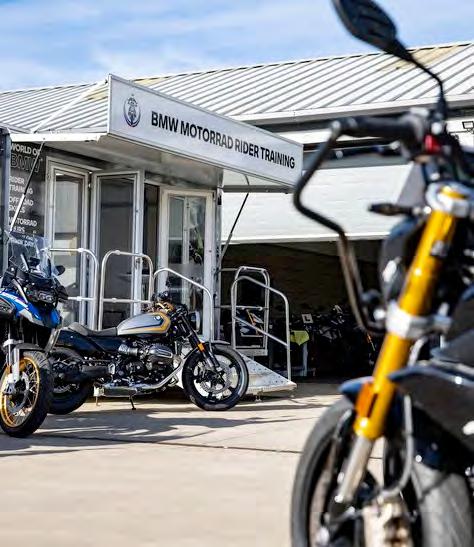
astride an R1250R, a naked roadster variant, a sizeable bike at 1250cc that would give me the opportunity to sample a larger bike in a slightly more unshackled environment. The aim was also to implement some of the more advanced techniques that we had discussed.
Now, we are not talking about knees down and dark lines out of corners, but we are talking about consistent progress, giving oneself more visibility with which one can then gauge braking and judge hazards from more appropriate vantage points. As Denis put it, it is about maintaining progress, not speeding. What transpired was maybe the most enjoyable 45 minutes spent under power. Land, sea, air. Two wheels, or… dare I say it? Dare I? Four wheels. It was that intoxicating.
For those looking to learn, I cannot recommend it enough. From equipment, bikes, set up, location and tuition, everything was the best possible and there is an associated care from the staff that adds another level of service. There is a camaraderie in bikers, we know that, but I was warmed to feel immediately welcomed into that fold. The centre also offers advanced courses, refresher courses and some guided tour rides as well. Should biking be a passion you wish to learn, improve or exploit, I can recommend no better tuition to get yourself there.
Where next for Aaron the Biker? Well, the possibilities are almost endless. I think I need some time to sample the full array of the bike market before settling on my vibe. Right now, I find myself feeling like a nice powerful naked roadster is most attractive, but then I see a bobber or something in the cafe racer style, and my thought process is upended once again.
What of brands such as Harley and Indian? I’ve always noted somewhat redneck tendencies. When resident in Vegas, I often opted to take my friend’s Escalade pickup over the also resident Brabus CLS. Where will I ride? Where will two wheels take me? All I know is that I am in it for the long run.
I have glanced out of the window each morning since attaining my licence and at every dry weather glimpse, I have a pang of disappointment that there isn’t something with two wheels parked outside. That, however, will undoubtedly soon change.
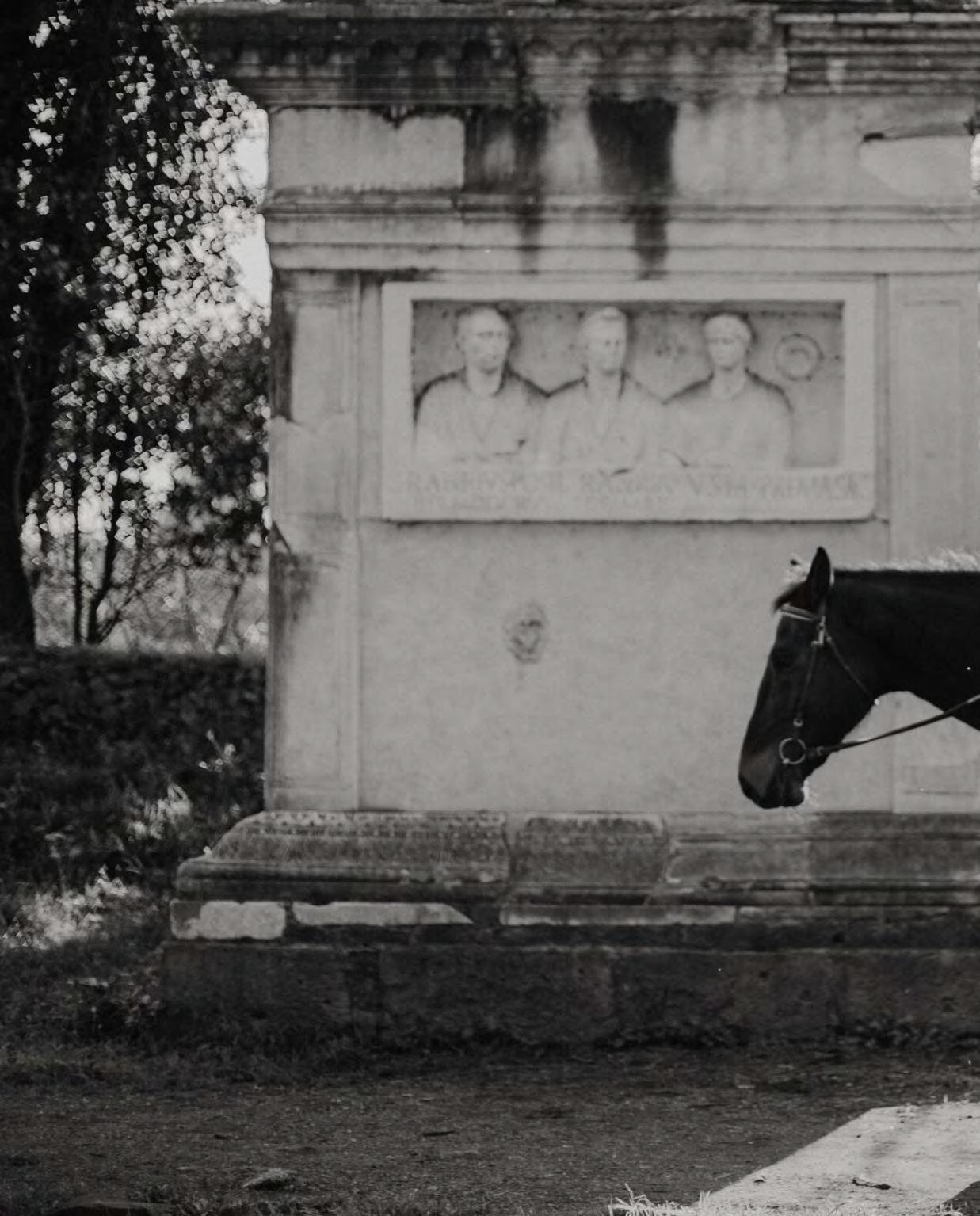
Words: Peter J Robinson - Managing Editor
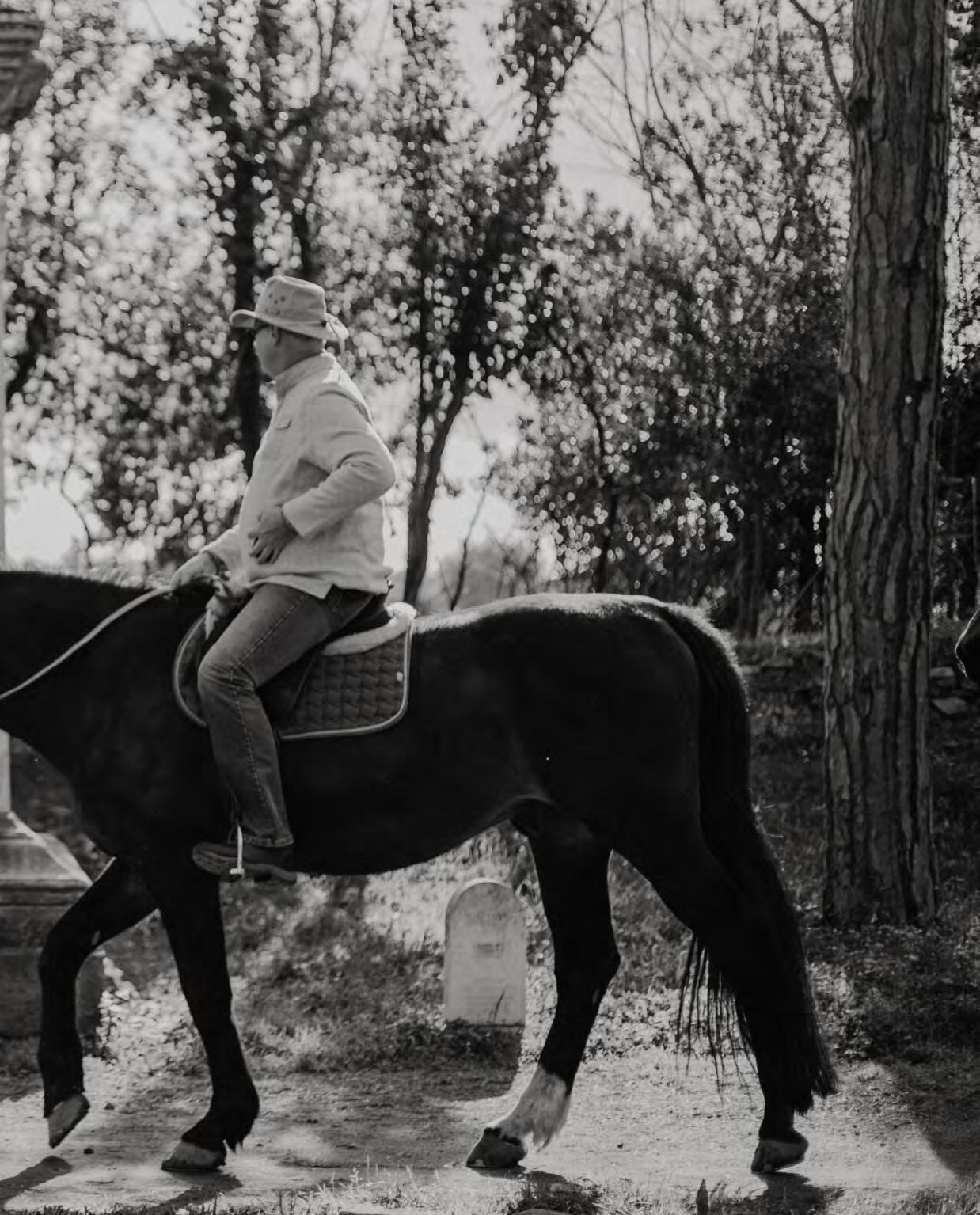

It’s one thing to visit Rome. It’s another to inhabit it, to slip through the crack between postcard and palazzo, past the crowds and cameras, and find the version of the city that’s storied enough that it doesn’t need to perform.
There are many ways to experience Rome. You can queue beneath the dome of St. Peter’s, linger in the glow of Caravaggio’s canvases, or follow the tide of tourists from piazza to piazza, gelato in hand. But every so often, Rome offers a quieter kind of access, not in its monuments, but in its timeless natural beauty. In the sound of water over stone, the scent of warm travertine at dusk, the echo of footsteps in a narrow alley before sunrise. Rome doesn’t need to impress - it’s already eternal. But occasionally, in the right light and with the right company, it gives you something more personal.
This time, we weren’t only soaking in the city, we were attending a travel event hosted by Sirreti. I travelled with my travel editor, Sarah Morgan, a friend I’ve known for more than a decade. Perhaps that shaped the tone from the start. It had been too long since we’d had any kind of downtime together. We’ve crossed time zones and deadlines together, but rarely had the chance to pause, to be in a place without having to chase it. Rome somewhat gave us that space. After the meetings and the pitches, the avaricious nature of these events, we had Rome.
Our base was an apartment tucked, improbably, just metres from the Trevi Fountain. You could almost miss the doorway on Via delle Muratte, heavy, unmarked, folded into the strip of gelato shops and silk vendors. But inside, La Finestra su Fontana di Trevi opened like a stage set. Light pouring in through shuttered windows, stone floors cool underfoot, and beyond the glass, Bernini’s masterpiece erupting in travertine splendor. The view was spectacular. It’s the kind of proximity that takes a moment to believe. The chatter of visitors rises and falls like waves, the sound of cascading water constant, grounding. By early evening, when the crowds begin to thin, the fountain glows in warm floodlight, and it feels like the city is offering you a private performance.
The apartment is compact, bijou in the nicest way, but exquisitely arranged. Two simple but elegant bedrooms, a sitting room with a velvet sofa, a petite dining nook, and a tiny, efficient kitchen perfect for espresso. What it lacks in square footage it makes up for in location and soul. Exposed beams cross the ceiling like brushstrokes; the windows are framed in thick wood, the kind that wants to be thrown open dramatically. And we did, often, especially in the early hours before the day-trippers arrived, when the fountain belonged to us alone.
We made a ritual of mornings: Sarah grinding coffee, me leaning out to watch birds circle the
dome of Santissimo Crocifisso e San Camillo. The fountain’s sound, constant, orchestral, became our score. It was surreal, domestic, and entirely Roman.
The location is, quite literally, the centre of everything. From the front door, it’s a short stroll to the Pantheon, the Spanish Steps, Piazza Venezia. The neighbourhood is animated and unmistakably Roman: espresso bars with standing room only, tailors with shirts in the window like confections, tourists orbiting gelaterias in quiet ecstasy. And yet the apartment is a retreat from all that — a few floors above the swirl, where Rome plays out in surround sound, but never overwhelms.
There’s something powerful about waking up to a landmark so steeped in symbolism. Tossing a coin into the Trevi Fountain is meant to guarantee your return to Rome. From our window, we watched hundreds of visitors take part in that ritual each day and we threw our own from the window at night.
The following morning, we left the centre behind and drove twenty minutes into a different kind of Rome, one with more birdsong than bells, more pine trees than palazzi. Just beyond the city’s southeastern gate lies the Via Appia Antica, one of the oldest roads in the world. Built in 312 BC, it once carried Roman legions and traders toward the coast. Today, it carries riders — a handful of
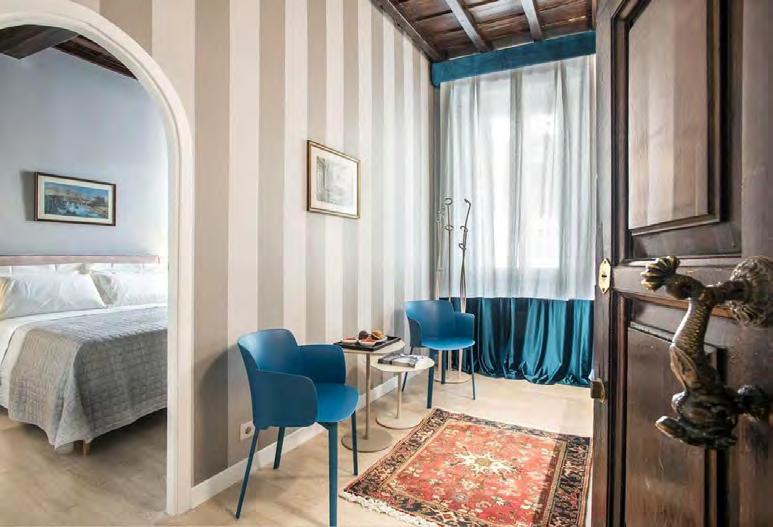
lucky ones — into a version of the past you can still touch.
Our destination was Cavalieri Appia Antica, a historic equestrian centre that has been operating for over a century. The Bernardini family’s connection to this land stretches back to the early 1900s, when Sandro’s ancestors began farming in the region. By 1950, they had officially settled on the six-hectare plot near
Capo di Bove, committing to both cultivation and the care of horses. Seventy years later, the land is still in family hands. A rare continuity in a city where eras tend to bury each other.
We were met by Sandro Bernardini, a quiet, broad-shouldered man with the calm of someone who’s spent his life around horses. For over 30 years, he’s been the soul of this stable, nurturing it from a rural outpost into
a respected riding school with a strong local following. And yet nothing about it feels commercialised. The barns are low and stonebuilt, the gear well-kept, the paddocks clean. You get the sense that every bridle has a story.
The centre covers over two hectares and houses more than 20 paddocks, each sized for one to three horses. There’s a rotation of steady mounts for beginners, and lighter breeds for more advanced riders. Overnight stabling is also available, and foal training and equine rehabilitation are handled onsite by experienced staff. In summer, the centre hosts riding camps for children that focus not just on riding, but on anatomy, care and respect for the animal.
We were paired with two chestnut mares, calm, bright-eyed, and clearly well-trained and set off through a gate onto the ancient road. When checking the directions to the riding school, I noted they stated that the Tomb of Cecilia Metella, Circus of Maxentius and the Catacombs were next to the stable and are served by the 660 bus. Rural Rome. Within minutes, we were riding over original Roman paving stones, flanked by aqueduct ruins and fields of wild herbs. Cypress trees lined the path like sentinels. Tombs and temples stood half-cracked but proud. Every few hundred metres, Sandro would point something out, the remains of a patrician villa, a milestone worn

smooth by time. He’d then fall silent again, letting the surroundings do the talking.
The ride was gentle, meditative, and astonishingly cinematic in a way no curated experience could be. There were moments when the only sounds were the rhythm of hooves softly over stone and the wind through umbrella pines. Sarah and I rode side by side in comfortable silence, taking in the silence between centuries. Occasionally exchanging looks that said, “We should come back and do this for a while, right?” The horses are calm, the pace is easy, and Sandro is always nearby, attentive without intruding - ideal for less experienced riders.
“You don’t need dramatic narration when the story is already underfoot. The Appian Way tells itself.”
We dismounted near a wide clearing where fallen marble and wildflowers mingled freely. Sandro handed us water bottles, then simply looked down the road ahead as if reading a map written in memory. You don’t need dramatic narration when the story is already underfoot. The Appian Way tells itself. So do the Bernardinis, in the way they keep riding it.
For those wishing to experience this rare perspective on Rome, bookings can be arranged directly through ridingancientrome.it, where Sandro and his team offer personalised tours that are anything but formulaic. There are no microphones or matching helmets. Just horses, history, and a stretch of road that has known more footsteps than any in Europe — and still welcomes a few hooves each day.
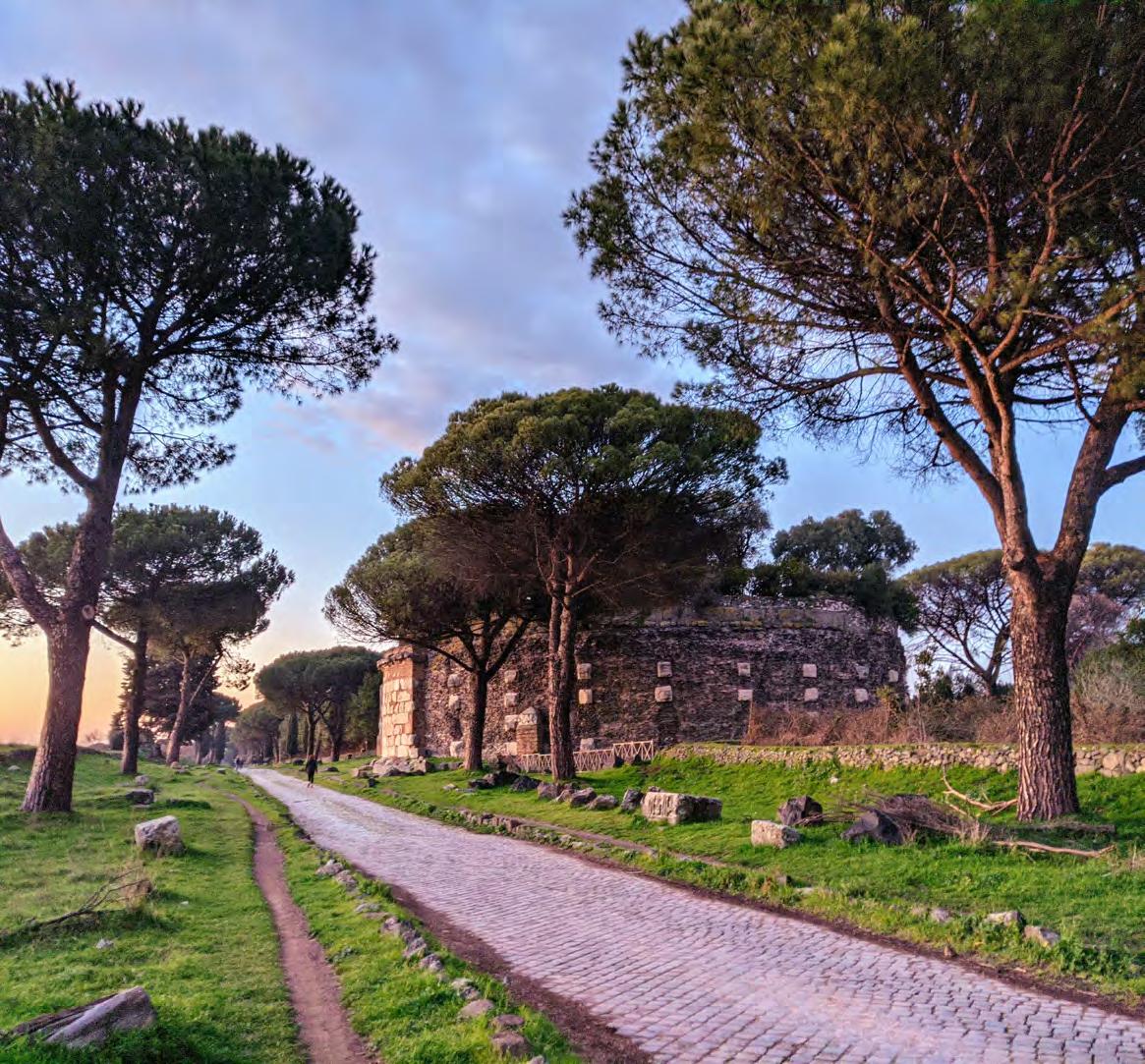




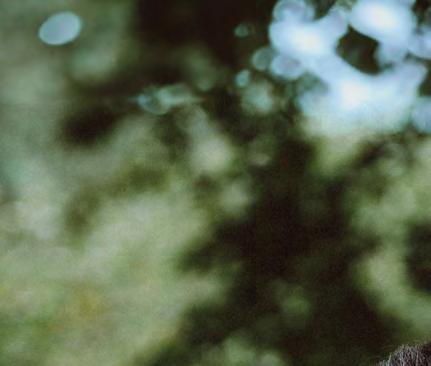
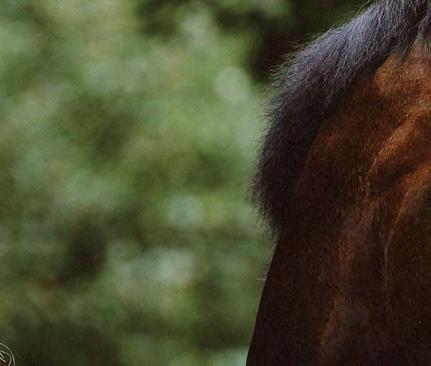
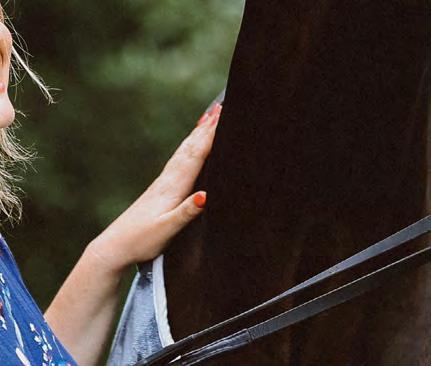
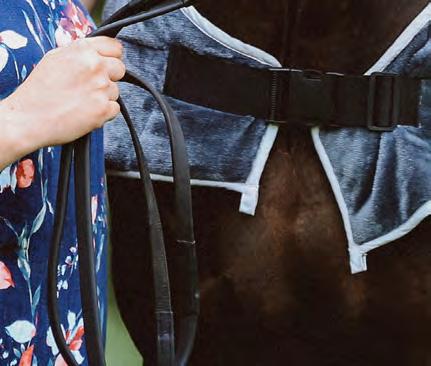
RELAXAH is designed to give your horse peace and relaxation. The true magic of this blanket unfolds in stressful situations like moving to another stable, during transportation or at competitions. Rely on the RELAXAH weighted blanket to give your horse well-being and serenity.
Discover how this blanket strengthens your horse‘s psyche and creates a deeper bond between you and your faithful companion.
The RELAXAH weighted blanket should not be missing in any stable.
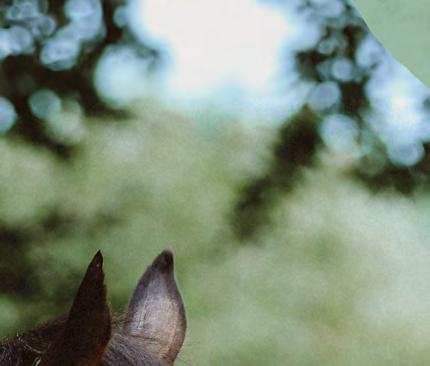
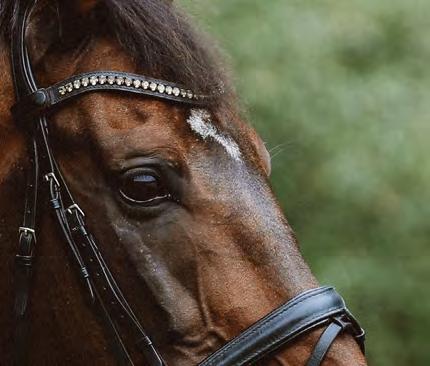
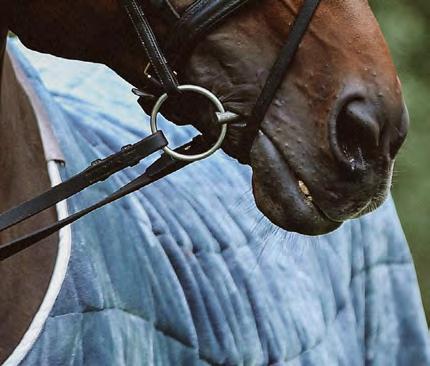
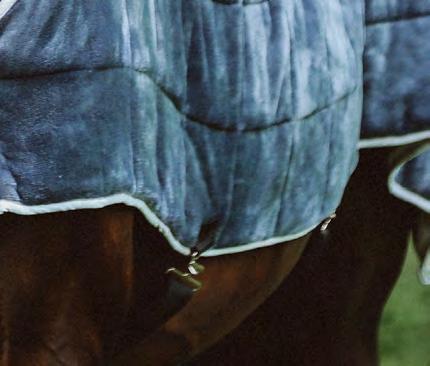
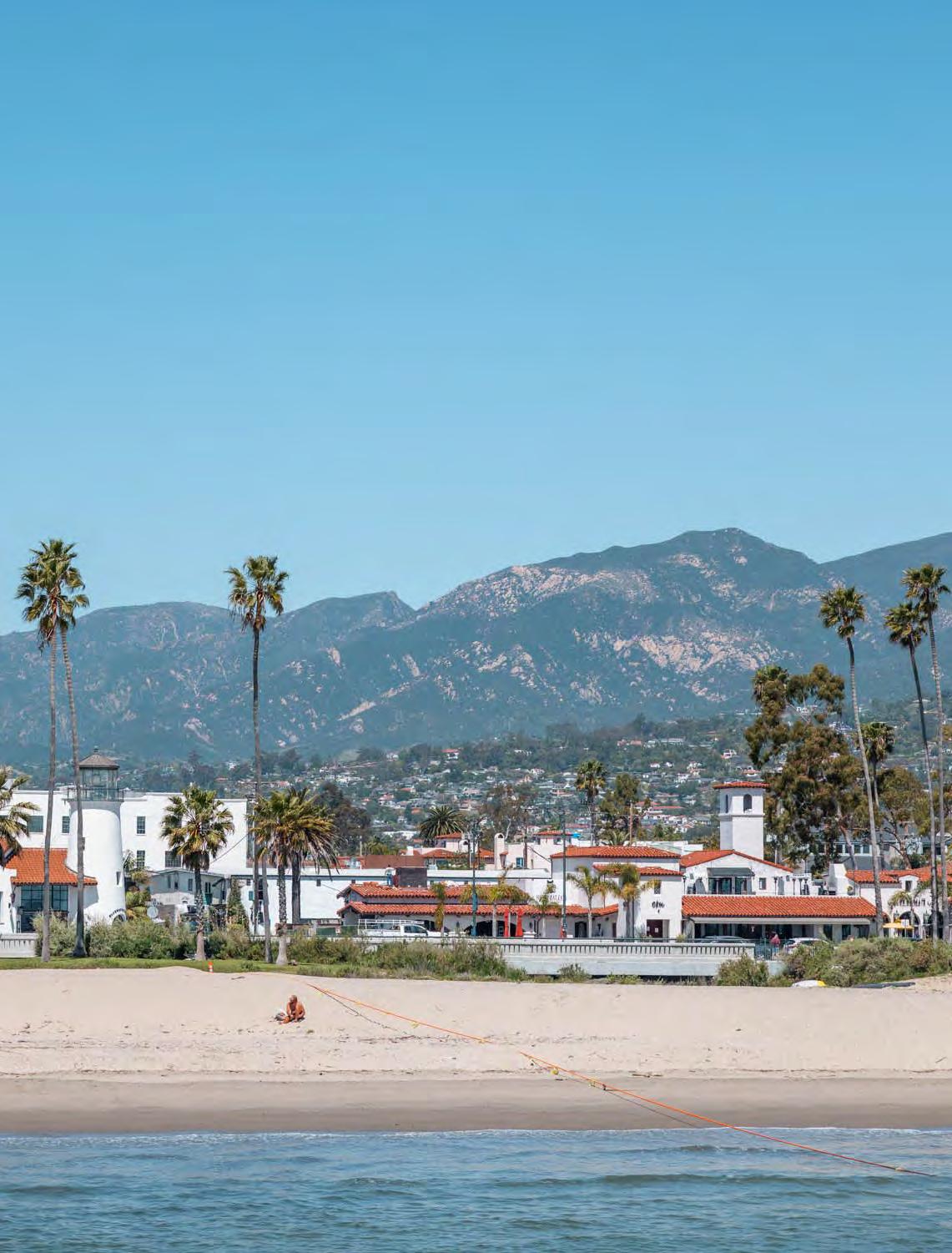
As a travel junkie and writer for The Review I have the absolute privilege to visit and experience the beauty of the widest variety of places, spaces and peoples around the globe.
Nestled between the majestic Santa Ynez mountains and the Pacific Ocean and surrounded by a wild underdeveloped coast, Santa Barbara is my new self-contained paradise.
In a part of California affectionately known as the American Riviera, Santa Barbara is a place that has carved out an authentic laidback bohemian beach vibe, all whilst simultaneously delivering a sophisticated lifestyle for its wellheeled and celebrity residents and visitors.
The city’s distinctive Mediterranean-style architecture with low-rise red roofs and white buildings nods to its historic Spanish influence, a style that has been passionately preserved by a clear and powerful city planning vision to maintain a European aesthetic wrapped up in a distinctively Californian spirit.
It was the Chumash Native Indians who first recognised the abundance of this lush area, so it is an accolade indeed to witness an architectural landscape that has been fostered over centuries, all while still allowing Mother Nature to shine so brightly.
As we arrived in this unexpected haven, the colonnade of palm trees seemed to rise up and welcome us, as did the Santa Barbara City College American Football team who arrived ‘stage right’ to their training ground opposite the beach. It felt like we had inadvertently arrived on an iconic Californian film set.
No surprise, then, to find out that Santa Barbara was in fact a pre-runner to the Hollywood film industry, being home to the first ever Californian studio; ‘The Flying A Studios’, opened back 1910 and responsible for creating over 1200 movies.
Our base to explore this intoxicating place was the Kimpton Canary Hotel, a hacienda-style hotel with a pared-back chilled luxury feel, and a team that went above and beyond on every level. A particular shout out goes to Sebastian and Levi who made every encounter feel like connecting with a great new friend. They were always on-hand to recommend places to check out, top spots to dine and also to hand over our trusted mode of transport for our stay - two complimentary bikes, that gave us total freedom to explore every nook and cranny of this extraordinary place.
The jewel in the stylish crown of this hotel is its rooftop pool, which offers up a breathtaking 360 degree view across the city and to the mountains. The suite we stayed in had everything you could wish for including a sumptuous four-poster bed that made leaving the cocoon of the room challenging. Other sweet spots at the hotel were the complimentary local wine time at five pm ( definitely worth coming back for) and the very best farm-fresh cuisine at Finch and Fork serving healthy, well thought-out meals throughout the day.
Once we managed to drag ourselves away from the hotel, we discovered the real reasons that Santa Barbara County is a magnet to so many travellers.
Its topography and architectural landscape offers up a vast sky and an uncongested heart, which means that it feels spacious, easy going and energetic. Santa Barbara offers exceptional arts and culture opportunities, relaxing resorts and hideaways as well as wellbeing experiences and outdoor adventures both on land and sea.
Add thriving world-class wineries, a hyper-local culinary scene and welcoming people, and there is no denying that Santa Barbara has elevated living well to an artform.
One of the highlights in our stay was a simple bike ride in the warm August sunshine along the coastal road to Montecito. No other town I have visited does low-key luxury or exudes an
“home to the first ever Californian studio; ‘The Flying A Studios’, opened back 1910 and responsible for creating over 1200 movies.”
effortlessly chic vibe like Montecito. Founded in the late 1800s, wealthy East Coast families arriving by train spent their winters in the area. It was also frequented by the black and white movie legends Charlie Chaplain and Fatty Arbuckle, who opened the now famous Montecito Inn. Today, Montecito is home to
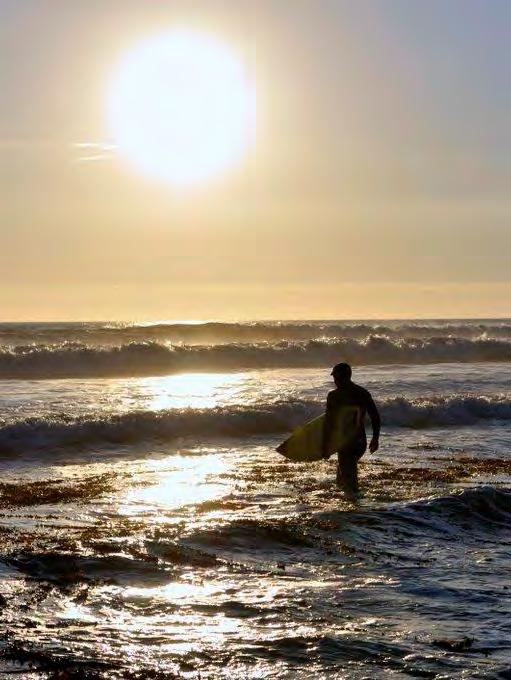

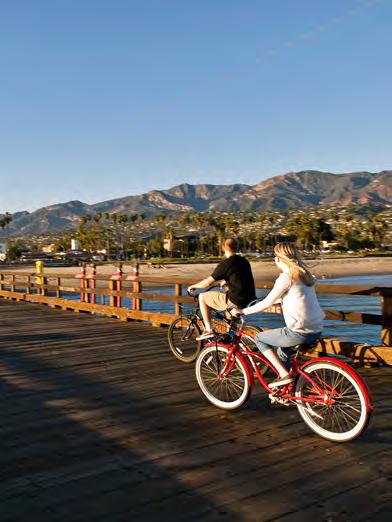
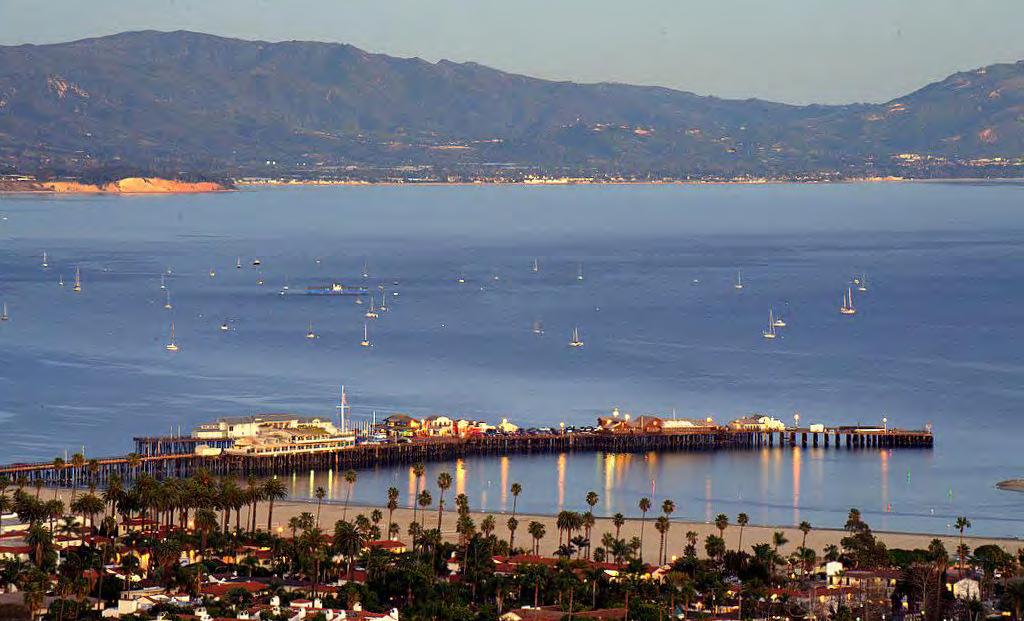
many celebrities from Oprah Winfrey and Harry and Meghan to Katy Perry. We spent a leisurely afternoon on the beautiful Butterfly Beach, which is thankfully free of beach clubs and loungers, making way for simpler approaches to enjoy an unspoilt sweeping white sand beach.
Another unforgettable moment was soaking up the exquisite views of the American Riviera from a 50-foot catamaran, the Double Dolphin, on a two-hour sunset cruise. Sailing along the coast with the backdrop of the Santa Ynez Mountains and Channel Islands in the distance, glass of bubbles in hand, spotting the lazy California sea lions whilst watching the sunset? Pure gold.
For the more adventurous, treat yourself to the ultimate Californian dream: a private surfing lesson. A surf virgin myself, it was one of the most exhausting yet exhilarating few hours, as we fought a pumping surf of waves to find the perfect time to plant your feet and cruise into the beach. The encounter with the elements was pure bliss, even if it was somewhat fleeting.
Having whipped up an appetite, chow time is another sensory delight here. California benefits from a verdant year-round growing season, and along with the sustainable seafood caught fresh every day in the Santa Barbara Channel, I was in for an unforgettable taste adventure.
Local farmers markets spill out onto the streets and assault every sense, whilst the Michelin guide has recognised and lauded 15 Santa Barbara restaurants for their excellence. From my short experience, whether it’s a café, juice bar, ice cream parlour or one of the highly recommended restaurants, when it comes to dining in this corner of the States, you will not be disappointed.
The locals’ passion for food and culinary excellence is only matched by their pride in the wines. One quick watch out is that the restaurants are geared to early evening dining, so unlike its European aesthetic counterpart, you will struggle to find anywhere to dine post 9pm.
With this caveat in mind, you can enjoy wines from one of the most diverse wine-growing locales in the world - the region is home to more than 275 wineries. Primarily produced by smaller, family-owned boutique wineries, its wines are highly acclaimed by connoisseurs worldwide. One of the easiest ways to get to know regional wines is through the tasting rooms of the Santa Barbara Urban Wine Trail, most of which are located in the downtown area of the city. The unique east-west orientation of the region’s mountain ranges helps create a wide variety of microclimates ideal for growing more than 80 varieties of grapes.
I was hosted by Au Bon Climat tasting room. The vineyard was founded by the late Jim Clendenen, one of the legends of Santa Barbara County who helped put the region’s wines on the map. Au Bon Climat creates internationally acclaimed chardonnay and pinot noir of balance and intrigue that are shipped worldwide. The tasting was relaxed, informative and most importantly fun as I sipped my way through some of their exquisite releases.
My final shoutouts for this memorable trip include the vintage open air cinema where we watched a movie under the stars, and the impromptu salsa class that exploded onto the streets one evening and embraced all ages and walks of life.
Cycling along the coast road late afternoon, with the warm sunshine on my back and the sea breeze wafting in my hair, Santa Barbara affirmed its place in my heart. This, combined with yoga on the beach and watching dolphins swim in the bay allowed Santa Barbara’s soulful nature to sink even more deeply into my soul.
This place offers abundance in all its forms; from a rich cultural heritage blended beautifully with its raw natural gifts of spectacular land and sea, an uplifting kind climate, a diverse range of outdoor adventures, to a high bar culinary scene and a dynamic downtown bustle offering exciting arts and cultural escapades.
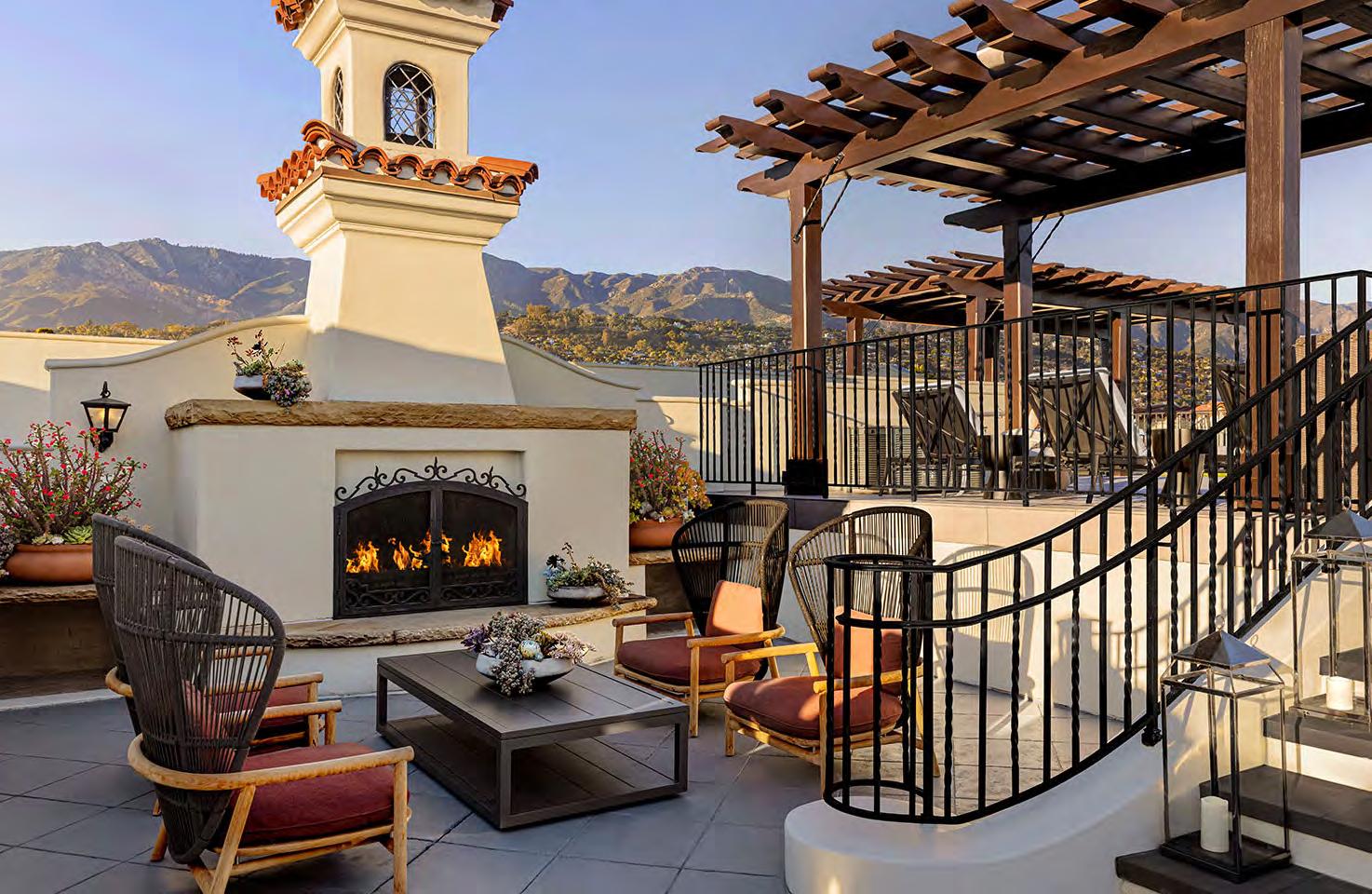
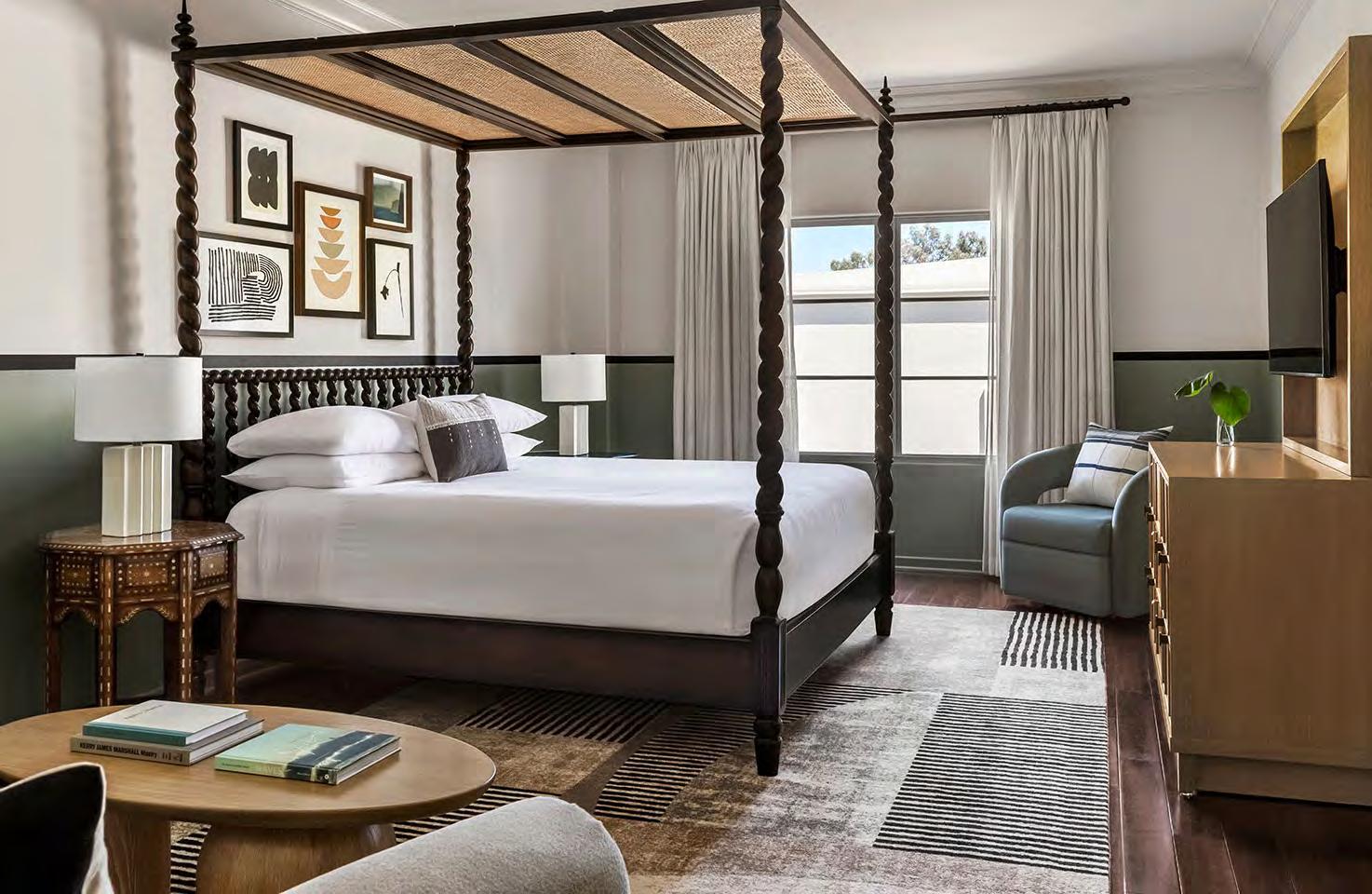
Words: Sarah Morgan - Global Travel Editor

Nestled on the sun-drenched shores of the Costa del Sol, Marbella is an irresistible blend of natural beauty, cultural richness, and unparalleled luxury. Renowned for its breath-taking beaches and glamorous lifestyle, it is also a culinary haven that tantalises even the most discerning visitor.
Marbella’s culinary scene is a feast for the senses that is as vibrant and eclectic as the area itself; a culinary centre for food connoisseurs… and I was delighted to try three of the best restaurants the city had to offer.
My journey started with a visit to the recently opened and highly acclaimed Nota Blu, which is conveniently located between Marbella Town and Puerto Banus. ‘Sparkling lights and gourmet delights’ is their promise, and one they definitely delivered on.
Nota Blu begins to impress from the minute you arrive and climb the cream marble steps towards the magnificent wooden entrance doors. The grand entrance leads into a stunning inner courtyard where beautiful trees, fountains and lights set the scene for the adventure ahead. Although the restaurant is large, the tables feel secluded and intimate with most having sight of the impressive 350 square metre open kitchen where you can witness the culinary masters at work.
Executive Chef Fabian Cangas has built a reputation for creating classic French dishes with a Mediterranean twist. Our experience started with a traditional smoked Norwegian salmon with a horseradish crème fraiche which literally melted in the mouth, along with a cauliflower salad, yellowtail tuna tartare with ponzu sauce, some incredible shredded sweet potato and my personal favourite: the truffle pizza. Our sommelier Adrian expertly guided us to a bottle of fresh and crisp Casa Do Sol
Albarino, a perfect wine to compliment all of our courses.
They were all hard acts to follow. However, the rich flavoured chermoula marinated lamb chops, beautifully buttery gratin sole miso meuniere and the Lobster gratin were equally as memorable. Scorched broccoli, green beans and a very special “Robuchon’’ potatoes purée complemented all our main choices. The service had been constant but subtle throughout our dinner, but our delightful waiter encouraged us to find a ‘little more space’ for their signature chocolate bomb dessert - and it was a wonderful finale.
Having tried a few of the delicious cocktails from their impressive selection of traditional and signature drinks, the party continued in the secret Blu Bar. Featuring a live DJ, this seriously stylish venue with champagne, cocktails and some really cool people to dance with capped off a fantastic evening.
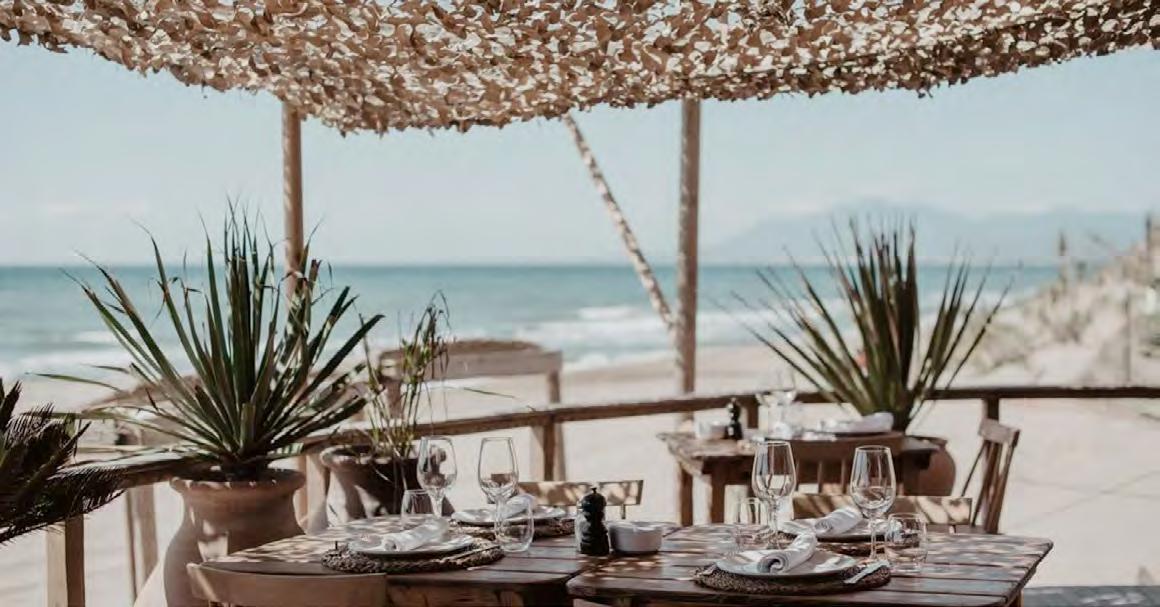
Day two, and it was time for a different sort of a party at La Plage Casanis. Nestled along the glamorous shores of Marbella’s famed Golden Mile, La Plage Casanis beckons with its chic beachfront ambiance and tantalising Mediterranean cuisine.
The breathtaking backdrop of the sparkling sea, golden sands, relaxed atmosphere and cool sophistication create a stunning setting for a memorable experience. We were seated
on the patio in the warm afternoon sunshine where couples, whole families and groups of friends had all gathered to chill for hours, eat, drink and be happy in this haven by the water. The greeting was warm and the staff were very welcoming, taking the time to talk us through the tempting array of Mediterranean-inspired dishes. There is a focus on fresh seafood and locally sourced ingredients, and we were definitely sold on the house speciality of full sized sharing paella.
We chose a selection of starters that included
a platter of delicious local meats, a melt in the mouth Lubina Ho Chi Min fried sea bass with jalapeno mayonnaise, and some Pil Pil Prawns that bubbled in a beautiful sauce that was perfect with the fresh crusty bread. Having washed this all down with a predictably crisp bottle of Whispering Angel, we moved on to the highlight of this gastronomic foray; their speciality Paella La Plage. Overflowing with lobster, scallops, calamari, clams, mussels, prawns and fish, this was a truly authentic encounter with this part of the world’s iconic flavours.
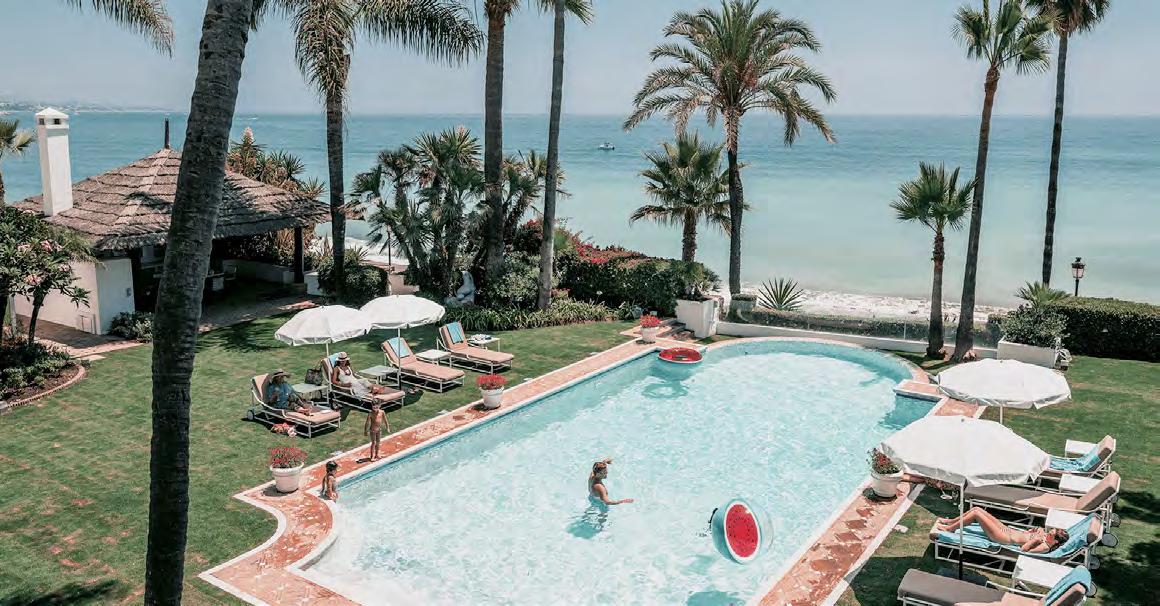
We saved the most traditional Marbella experience to last.
As the owner Prince Alfonso says: “Elegant simplicity – it is the Marbella Club philosophy. It is our way of life.”
The Marbella Club epitomises the region’s gentle microclimate, sea air and mountain views. A haven for royalty, celebrities and the refined since 1954, the MBC is everything that Marbella represents.
El Patio is in the middle of the grand hotel, and stands as a culinary gem nestled in a beautiful courtyard. It promises authentic Andalusian cuisine served in an enchanting ambiance, and the setting is captivating and charming, adorned with fragrant orange trees and flickering candlelight.
The menu at El Patio reflects the culinary heritage of Andalusia, with a focus on fresh, locally sourced ingredients and traditional recipes passed down through generations. Each dish is a masterpiece of flavour and presentation, expertly crafted to showcase
the vibrant tastes and textures of the region. We started with some beautifully presented heritage tomatoes with whipped feta. and a bubbling dish of woodfire tiger prawns with garlic and chill. As tradition dictates, the latter dish was combined with freshly baked flatbreads, ensuring we didn’t waste any of the sauces.
From the tables on the patio you can admire the talented chefs cooking your food in the open kitchen, allowing you to enjoy the alluring aromas of traditional Andalusian cooking. For the main course we were recommended the marucha wagyu steak with chimichurri and the sea bream with olive, tomato and basil salad - both were cooked to perfection. We did manage to find room for their famed chocolate nemesis dessert, which is served with crème fraiche and ensured a luxurious finale to our truly exceptional meal.
The Marbella Club’s hospitality is impeccable, and once we had completed our dining experience we were offered a night cap in the exclusive piano bar. You cannot help but admire the opulent and traditional décor as
you walk through the hotel - the walls are all adorned with photos of famous visitors and special moments across the incredible 80 year history of this iconic location.
The staff know many of the guests personally and many generations of families have made this magical hotel an integral part of their lives. There is an embedded sense of respect and honour in everything about the Marbella Club and we enjoyed the stories of long-serving staff who were allowed to continue living at the hotel long after their service years were over. Simply put, El Patio and The Marbella Club are nothing short of extraordinary. From the exquisite cuisine to the enchanting ambiance and impeccable service, every moment spent in this oasis of tradition and glamour formulated special memories, sure to be cherished.
If anything, these culinary explorations proved beyond all doubt that Marbella is so much more than a destination, it’s a lifestyle… and one I’m honoured to have encountered in such peerless style.
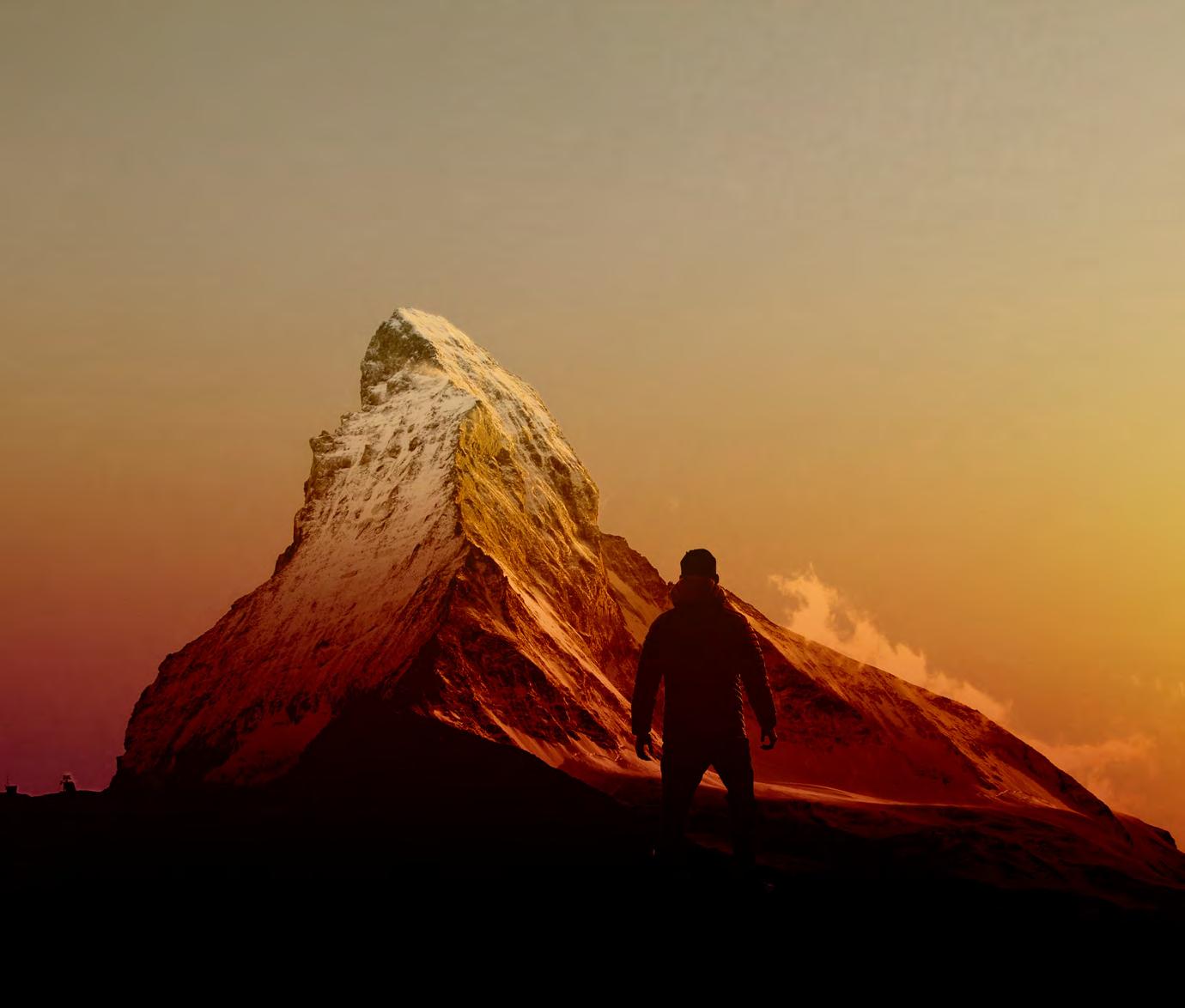



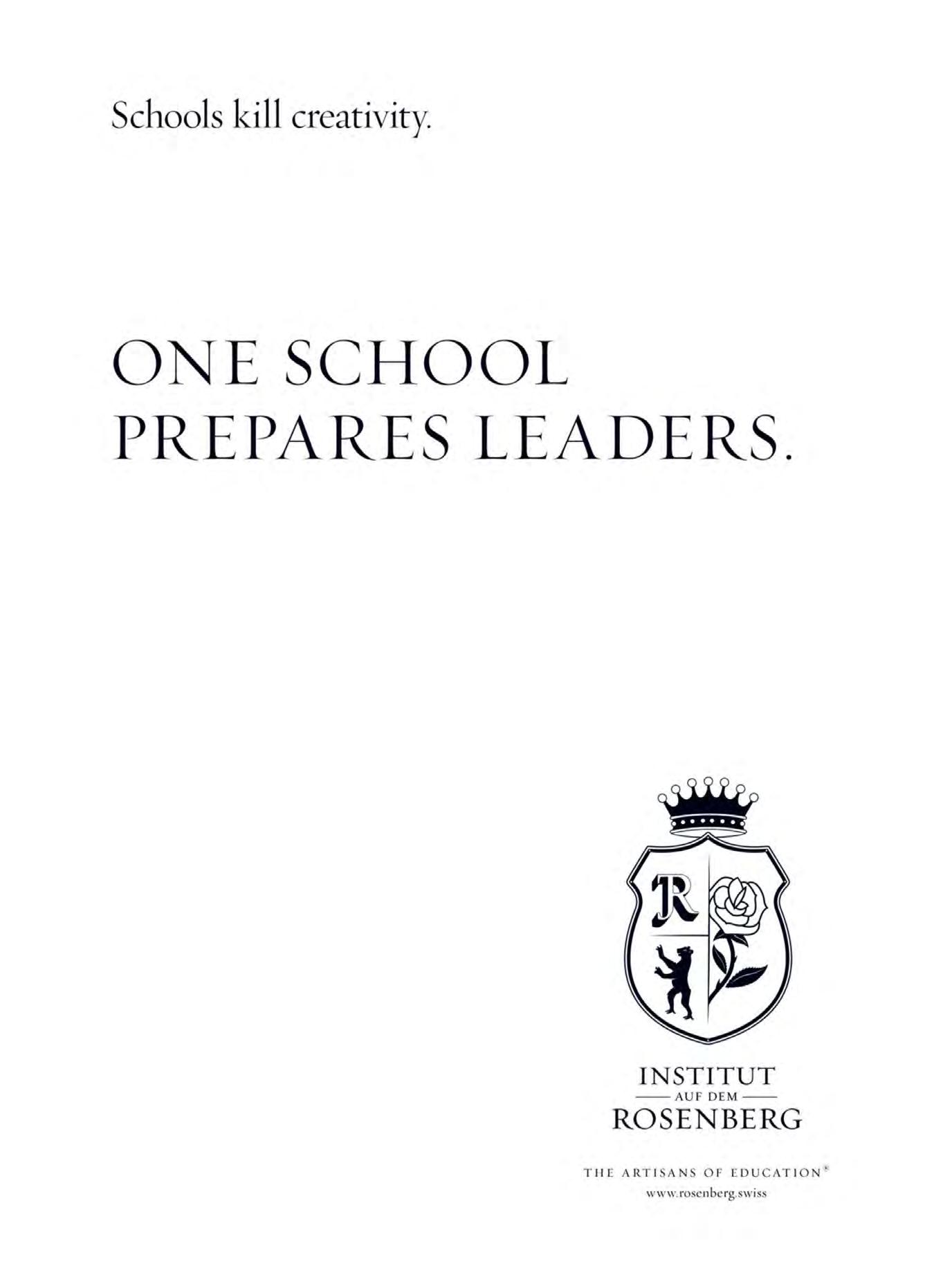
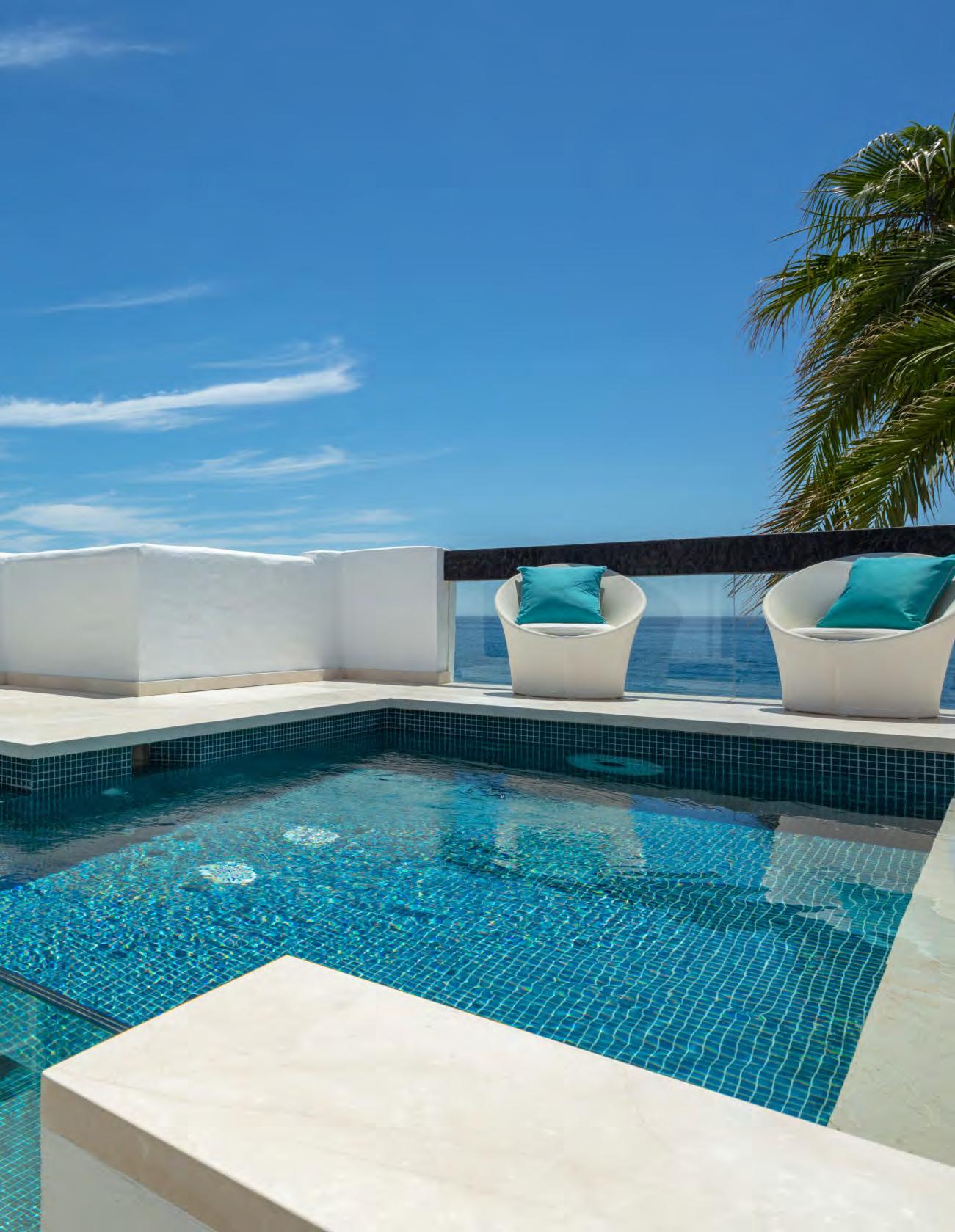
Words: Sarah Morgan - Global Travel Editor
Marbella has long been acknowledged as a playground for the rich and famous; an iconic destination for an international and intellectual jet set as well as Hollywood’s glitterati, who frequented this Andalusian gem back in the 1950s when it first attracted worldwide attention.
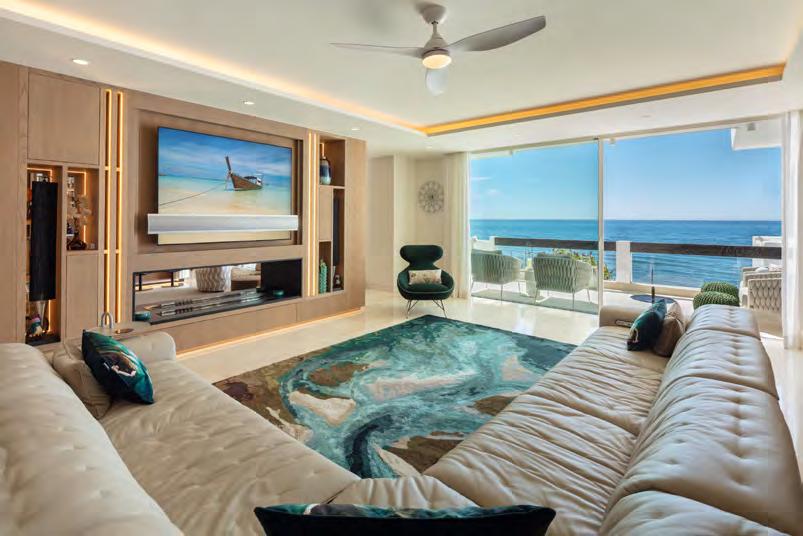
Such avant-garde characters were the foundation of the bohemianaristocratic social circle that made up Marbella’s early DNA. But like every destination, maintaining its appeal over time and generations can be a challenge. Marbella has had its fair share of lovers and haters, and perhaps some of that initial glamour had lost some of its starlit sparkle over more recent years.
I am revisiting Marbella after decades to take a fresh look, as I’ve heard more than a few murmurings that this locale is experiencing a new era of redefined luxury. Indeed, Marbella is said to be undergoing a renaissance created by attracting an entirely new highly sophisticated and professional global jet-set, one that is thriving on a new limitless lifestyle whilst honouring its pedigree and provenance.
Visiting in the shoulder season, it is evident that there is an exciting new energy and a vibrant community rediscovering the delights of Marbella. It comes as a direct and positive by-product of COVID-19; the pandemic gave rise to a new wave of investment from global high-net-worth individuals, now enjoying the dream of digital nomadic life operating out of a landscape that supports both short and longer-term needs. It’s a cohort that fully appreciates Marbella’s climate, its location, and its approach to living, but which just as importantly enjoys being part of a like-
minded internationally savvy community.
Reflective of this, there is also a real sense that Marbella as a destination is both passionate and purposeful about meeting this new demand - one which calls for the very highest standards of excellence and innovation across every aspect of Marbella’s hospitality experience.
Forbes has, in fact, just lauded Marbella as the best European Destination 2024, as voted by one million travellers chosen from 172 countries. With a record number of votes, Marbella’s accolade represents the first time a Spanish destination takes first place in the ranking. As the awards listing announces, “Marbella is a sunny, five-star, natural, sporty, gastronomic destination with everything to please the most demanding travellers.” Enough said.
The list of sweet spots is near endless: 320 days of sunshine each year, the most beautiful old town of Marbella with quaint bougainvillaeafilled narrow streets, authentic cafes, restaurants and stylish boutiques, the longest coastal strip in the Costa Del Sol of fine white sandy beaches, and the dramatic backdrop of Sierra Blanca with spectacular views and trails. I can, and will, easily continue. It’s a place brimming with Andalusian pride and gastronomic flair, with arguably some of the best beach clubs in the world, 16 stunning 5-star hotels delivering excellence across the board, extraordinary spa and wellness
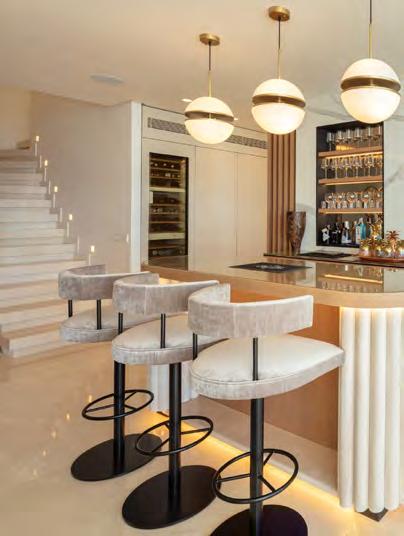
retreats for the healthiest lifestyle, not to mention some of the best golf courses to be found anywhere, rooftop terraces that will take your breath away and a glamorous extravagant nightlife that is legendary the world over.
Let’s not forget that whilst a fascinating destination in its own right, Marbella is a gateway to so much more in Andalusia and beyond. Tarifa, a short drive away, is one of the world’s hotspots for kitesurfing. Sierra Nevada is just 2.5 hours away giving travellers access to a variety of winter sports, and the high-speed train delivers you to the gastronomic delights of Madrid in just over two hours.
So Marbella does have it all. Whether you want to be seen on the Golden Mile or hide away and unplug, you will find exactly what you need to be spoiled at every level. From stunning hotels to exquisite villas and apartments, the choice of where you stay and what to do is extraordinary… if a little overwhelming.
So for those looking to source the very best that Marbella has to offer, I may have found one of the jewels in Marbella’s new crown. 3SA Estate - A new breed of luxury lifestyle partner
Let me introduce you to 3SA (3 Steps Ahead) a new innovative breed of property and lifestyle consultancy, born to meet an emerging new global demand for the most

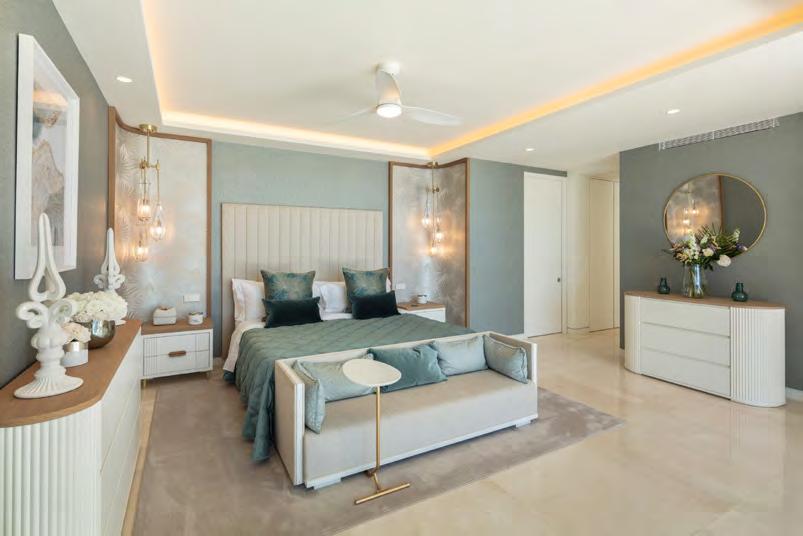
exquisite properties and highest levels of service excellence in Marbella.
The brainchild behind this thriving young business is Jimmy Widen, a Swedish entrepreneur with a keen eye for the sublime backed by a very strong grounding in business.
3SA operates for ultra-high-net-worth individuals globally, who want to connect with a trusted company to source and navigate the property landscape across an entire lifespan of buying, building, renovating, and renting with a lifestyle management team attached. A partnership that delivers three paces ahead and a reassuring ‘every step of the way’ philosophy.
Over the last six years, Jimmy and his dedicated team have managed over €440m in property transactions, building a bespoke ecosystem that blends the full property lifecycle under one seamless umbrella. A client can buy, build or renovate a property, rent it when not needed, and access a full lifestyle concierge service to handle every small detail of the short or longer-term stay. The concierge team has their finger firmly on the pulse of Marbella’s new heartbeatthe very best black book in town!
As a result of this 3SA unique offering, an extraordinary portfolio of exceptionally rare properties is now coming into the short-term rental market. Simply put, if you are looking for luxury without limits, these are your
people.
The Penthouse by 3SA Estate - elevated luxury
Within this rare portfolio, the 3SA team are launching an exclusive Marbella property this Summer; one that has been described as the most exclusive penthouse available in the area, if not the whole of Spain and Southern Europe.
“211 m² of terraces and 180-degree views of the Mediterranean unveil themselves in truly breathtaking fashion.
As we are always in pursuit of unearthing that which lies beyond the ordinary, we had to take the first look. Frankly, we were not disappointed.
The Penthouse by 3SA Estate is a spectacular six-bedroomed duplex penthouse nestled in the heart of the prestigious Puente Romano
Resort, on the famous Golden Mile. Its build price of €22m ensures guests that every last detail has been meticulously considered to deliver the ultimate luxury stay.
The entrance to the penthouse is deceptively understated and humble. Yet as you enter the expansive 452m² space, you are first aware of its commanding position and the exquisite indoor outdoor living space. Indeed, a spectacular 211 m² of terraces and 180-degree views of the Mediterranean unveil themselves in truly breathtaking fashion.
The design of the apartment has been graciously planned, enabling it to seem as though the ocean blends effortlessly with the penthouse, its presence felt throughout the entire expanse on both floors. The light bounces off every surface and highlights the thoughtful interiors, all of which have been carefully considered to amplify the sea’s connection to this space.
The main living level offers a spectacular sitting area with an opulent bar, as well as four spacious en-suite bedrooms with stunning sea or mountain views. The complete effect is a voluptuous sense of serenity and a powerful connection to nature. A private lift or staircase leads up to the luxurious master suite - arguably the showpiece of this stunning property, featuring his-and-hers walk-in closets and stunning bathrooms with panoramic Mediterranean views.
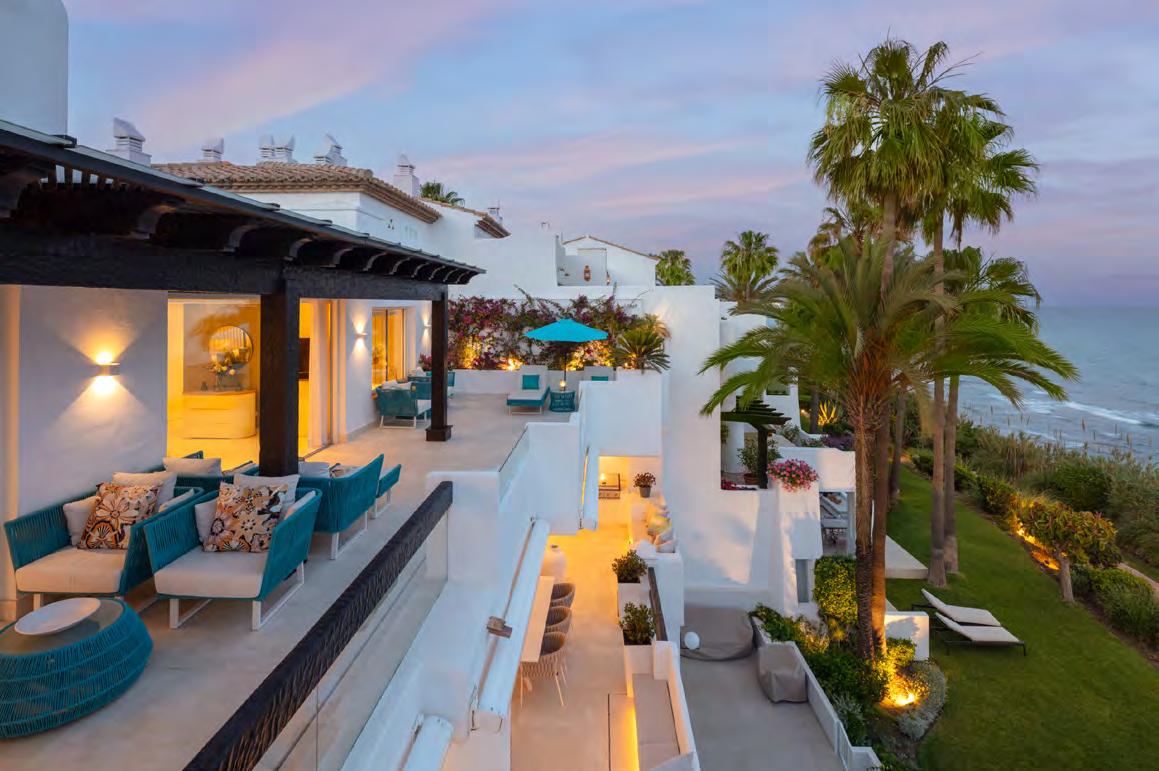
The state-of-the-art kitchen (equipped with high-quality Gaggenau appliances) is a culinary haven, and the outdoor cooking area and terraces offer perfect al fresco dining with priceless sea vistas, creating the moments of any stay that matter. The apartment also has a well-equipped gym and a heated plunge pool with resistance swimming equipment, ensuring guests can burn off those leisurely late dinners.
Beyond the apartment, The Penthouse by 3SA Estate grants access to all of the stunning five-star facilities at the awardwinning Puente Romano resort. These include world-famous tennis and golf clubs, and an eclectic sophisticated mix of over 20 restaurants from renowned global brands such as COYA Cipriani or Nobu and simple but sensational home-grown outlets like Rachel’s Eco Love (for healthy ‘food for the soul’) or the acclaimed Sea Grill. On the
The Penthouse by 3SA Estate is a truly exceptional property and arguably one of the rarest of Spain’s most exclusive duplex penthouses. It’s a coastal sanctuary like no other, delivering limitless luxury for the most discerning of travellers.

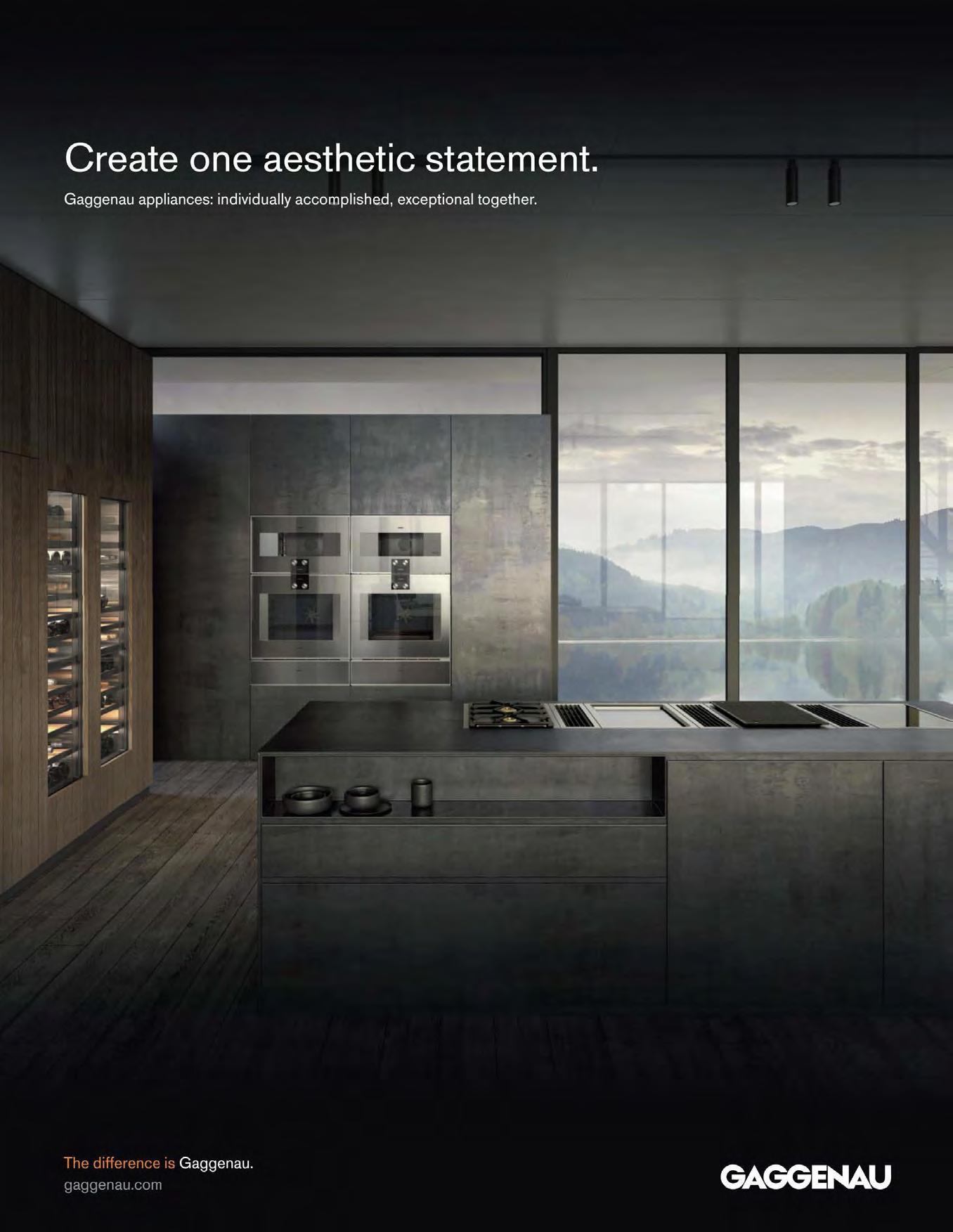

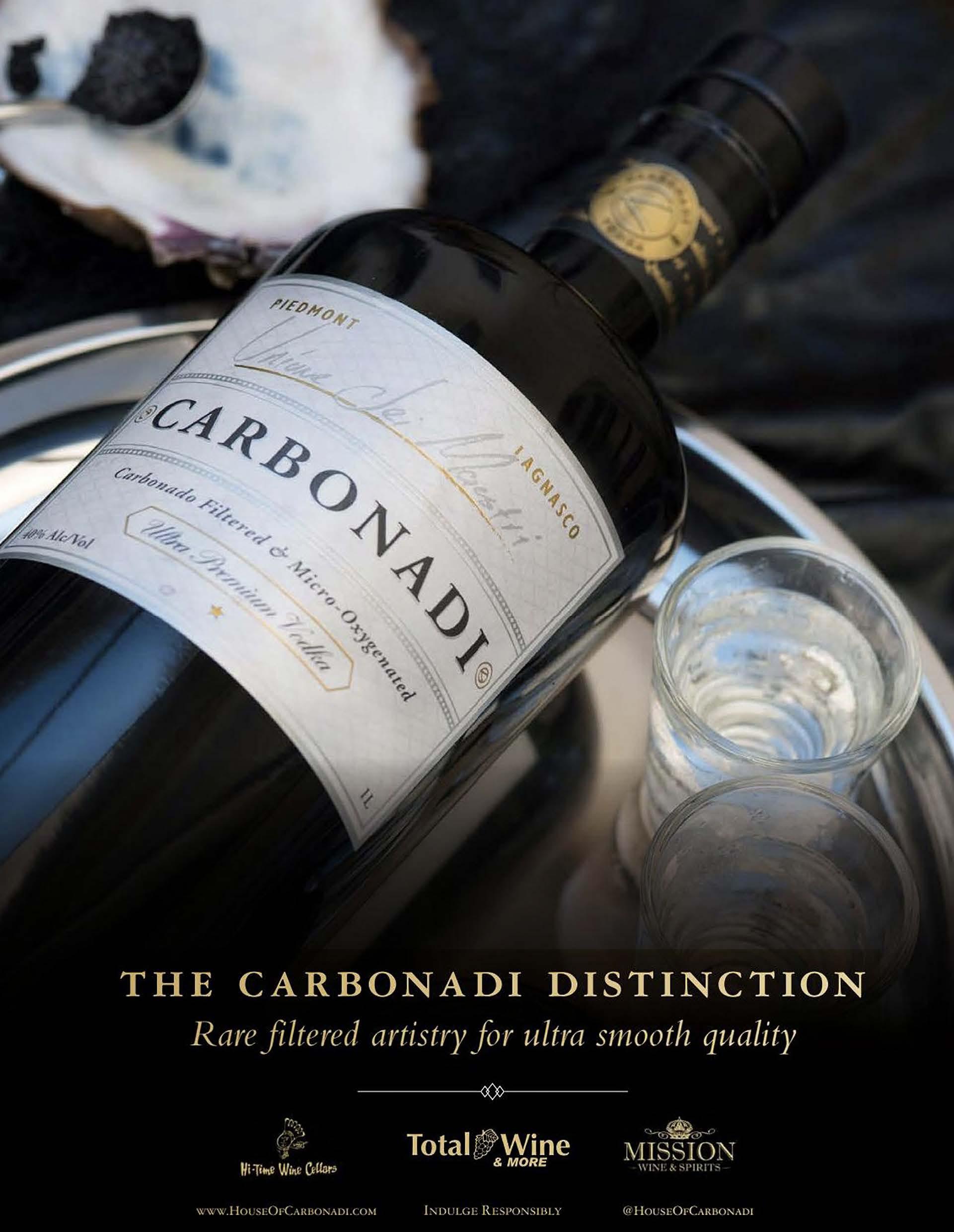
Words: Peter J Robinson - Managing Editor ETT Industries’ Trayser 2.0 A Radical Design Philosophy
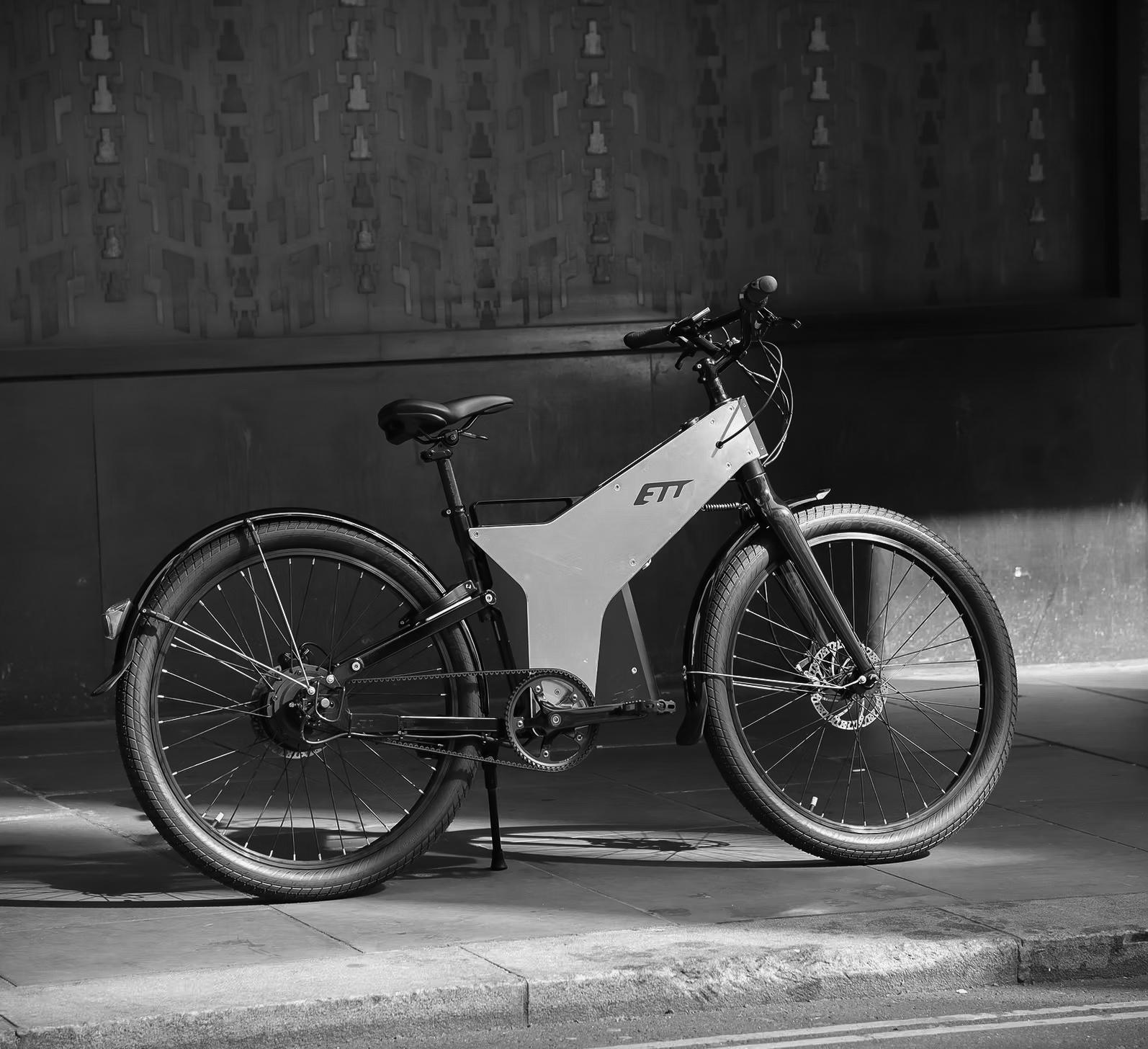
A Study in Going Sideways
Words: Aaron Edgeworth - Motoring Editor
Founded by New Zealander Jay Wen in 2012, ETT Industries arrived onto the scene with a mission to revolutionise personal electric transport. Wen, who earned a Master’s in Automotive Design in Milan and cut his teeth at Peugeot and Citroën, infused the company with a bold vision: to make electric bikes objects of desire, not just utility. Wen stated: “For the design of ETT Industries’ Trayser, there was one core goal… they should be radical enough to change how people view electric bikes.”
The mission was clear: to build the first e-bike that is both desirable and obtainable, shifting perceptions of “electric bike” toward aspiration and excitement. ETT’s philosophy actively rebels against conservative concepts in vehicle design, bringing future-forward aesthetics and tech into the present. It’s an ethos that won immediate acclaim - indeed, the company’s first models scooped prestigious iF Design Awards for their striking looks.
Central to ETT’s design approach is the use of a patented monocoque frame – a single structural shell akin to an F1 chassis, but applied in a way never before seen on bikes. The result is a future-proof look: sharp-edged, dynamic, and perfectly proportioned. Nothing else on the road looks like these bikes. Yet the eye-catching forms always serve function. The minimalist frames shed extraneous parts, reducing weight while maintaining strength, and they even incorporate modular elements for easy maintenance.
ETT’s focus on innovation extends to its embrace of 3D printing: from the start, the company has provided open-source STL files for various components, inviting owners to print their own replacement parts or custom accessories at will. This isn’t just an efficiency play – it’s part
of ETT’s culture of personalisation and user empowerment. “ETT is all about expressing yourself,” Wen says, describing an on-demand ‘future factory’ where riders can tweak and tailor their bikes to reflect individual personalities and specific needs. In an industry often split between utilitarian blandness and extravagant concept bikes, ETT Industries stands apart with a design philosophy that is at once elegant, rebellious and deeply user-centric.
“developed in association with Universal Pictures as an official tie-in to The Fate of the Furious. The result was the H1L.”
The star of ETT’s lineup is undoubtedly the Trayser 2.0, an electrically-assisted pedal cycle (EPAC) that encapsulates the company’s vision for the ultimate urban bike. At first glance, the Trayser’s appearance stops you in your tracks. The Trayser’s radical geometry – all angular aluminum panels and skeletal cut-outs bolted to a robust black frame – is unlike anything else on city streets. It wears its modernity proudly. Where many e-bikes try to hide their battery and motor, the Trayser announces itself with spaceage design. The large battery housing forms the bike’s core aesthetic, a purposeful bulk that also serves as the structural heart of the machine.

Beneath the edgy styling, the technical features are equally impressive. The Trayser 2.0’s removable 42V lithium-ion power pack juices a 250W rear hub motor, providing pedal assistance up to the legal 15.5 mph limit (25 km/h). Of course, you can adjust the settings to deliver a speed closer to 20-25 mph, if you so wish. Thanks to ETT’s efficiency tuning, a single charge, about four hours for a full top-up, yields roughly 50–60 miles of range in real-world use, more than enough to traverse the city and back. This healthy range addresses practical needs, but it’s the manner of delivery that delights: the Trayser’s electric boost is immediate and smooth, lending a feeling of effortlessness to each pedal stroke. The bike all but erases hills and headwinds, yet remains a true bicycle. In essence, the Trayser takes as much of the grind out of cycling as legally possible, delivering a ride that is equal parts leisurely and exhilarating.
Unsurprisingly, the engineering of the Trayser 2.0 marries industrial toughness with thoughtful details. The chassis is a stiff, lightweight aluminum monocoque, lending the bike a solid, pothole-proof feel without the clutter of a traditional frame. This not only contributes to its sleek profile but also its impressive durability. High-quality components round out the package: disc brakes on both wheels for confident stopping, a gated carbon belt drive for silent, maintenance-free power transfer, and internal hub gearing. Despite its futuristic silhouette, the Trayser isn’t a fragile showpiece - it’s built to be a daily rider. In fact, ETT proved the Trayser’s robustness by launching a rental fleet for London couriers in 2019. If it can survive the abuse of courier life, it can certainly handle an enthusiastic owner’s commute or weekend adventures.
Thanks to the modular design, the entire outer

shell can be removed or replaced piece by piece. In a world of sealed, disposable gadgets, the Trayser invites you to grab an Allen key and get involved – or simply download a replacement mudguard file and 3D-print your own spare.
Yet for all its bleeding-edge tech, the Trayser 2.0 never loses sight of style. It comes in a curated palette of finishes – from a vivid cobalt blue to understated grey and white – all meant to complement its bold form. The overall impression? This is a machine that is comfortable in its skin.
Suddenly, the usual drudgery of city travel transforms into something akin to play. Imagine speeding past lines of idling traffic, breezing through green lights with time to spare, and then peeling off onto a riverside path in Sunbury, the electric whirr nearly silent as you overtake conventional cyclists with ease. Crucially, this thrill doesn’t come at the cost of comfort or confidence. The Trayser’s upright yet engaged
riding position and well-tuned front suspension smooth out rough terrain. There’s an inherent stability from the weight of the battery down low, so the bike glides rather than jitters. And thanks to top-notch brakes and the intuitive assist that responds instantly to your pedaling, control is always firmly in hand. Whether darting through roundabouts or carving along the Thames embankment, the Trayser feels planted and predictable, encouraging you to enjoy the scenery instead of worrying about range or reliability.
ETT Industries may have made its name with the Trayser e-bike, but the company’s creative range doesn’t stop there. Alongside the Trayser, ETT launched the Raker, a sibling two-wheeler that’s essentially a street-legal electric motorbike. It shares the Trayser’s striking monocoque architecture, but swaps pedals for foot pegs and ups the ante with a 4,000W motor capable of 28 mph.
The true measure of ETT’s design prowess, however, might be the H1L, a limited-edition electric superbike developed in association with Universal Pictures as an official tie-in to The Fate of the Furious. The result was the H1L: a stealth-black, angular electric motorcycle that looks like it leapt off the pages of a graphic novel. It was produced in an ultra-exclusive run of just 88 bikes, making it a coveted collector’s item. The H1L isn’t just a marketing gimmick – it’s a serious piece of engineering with a 6 kW motor and a top speed of 130 km/h (80 mph). In other words, the H1L encapsulates ETT’s signature style at an extreme – concept-car futurism fully realised in rideable form.
In just a few years, ETT Industries’ blend of avant-garde aesthetics and everyday usability has garnered a reputation that most niche manufacturers only dream of. In a world of homogenisation, ETT’s creations stand proudly apart.
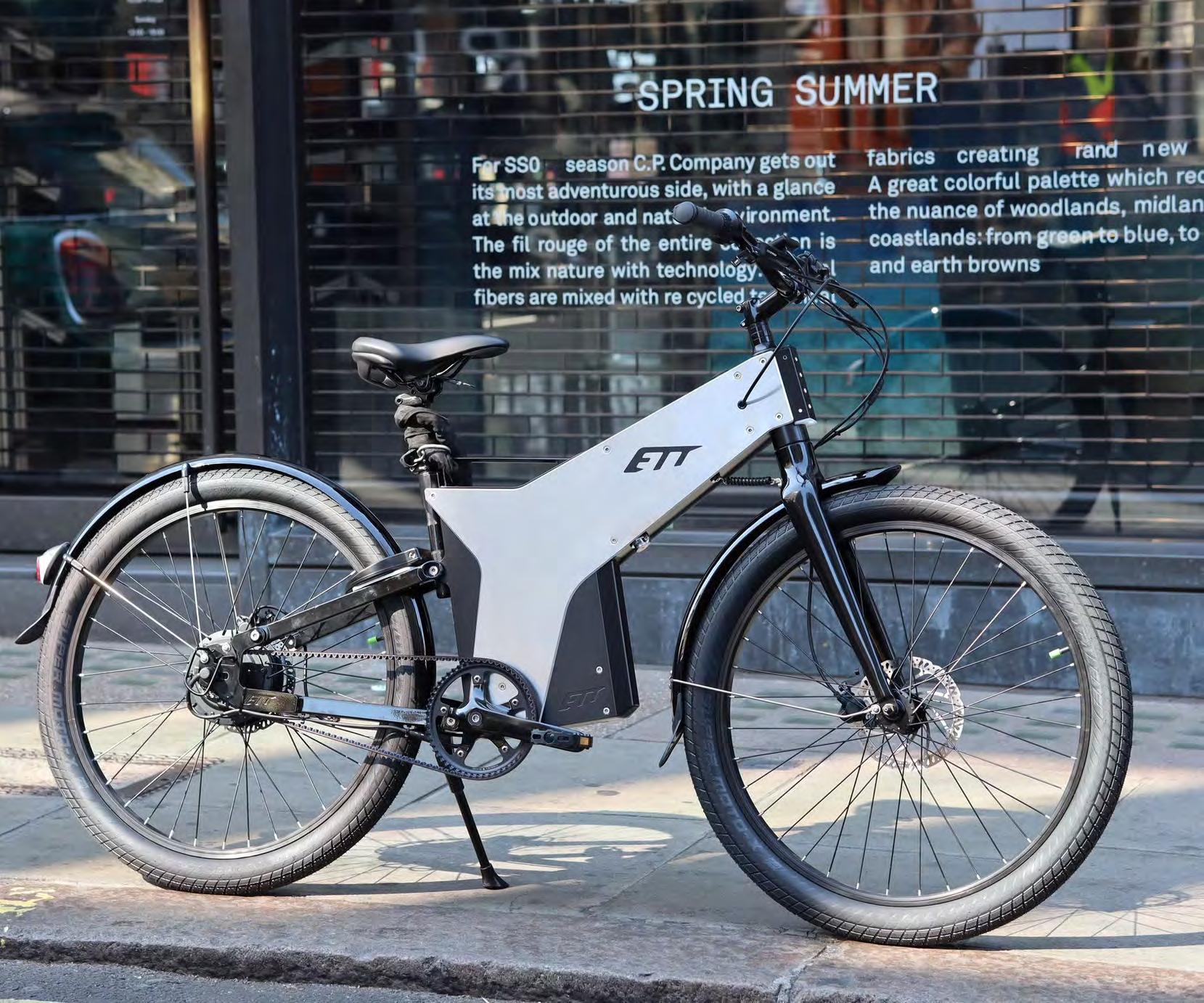

The artist has arrived, and not a moment too soon. Marina Abramović is welcomed by the Royal Academy in this retrospective spanning her 50-year career.
Whatever your opinion is on performance art, you’d be one of few to feel unmoved by the bravery, verve and you could even say the stupidity of young Serbian-born Abramović.
Decisions made on Abramović’s artistic drawing board in the 1970’s would literally threaten her life. To then enact them with full aplomb, raising themes of life, death, love, sex and suffering was nothing short of remarkable. Performance art back then was not held in the same high regard as paint or sculpture; it was an emerging form which coincided with second wave feminism and the rise of the body politic. Her use of her body in acts of violence and risk towards herself were deeply political, pioneering and resoundingly brave.
A knife - held by a fast moving hand jutting between her splayed fingers - cuts and red blood splatters in Rhythm 10 1973. A gun, rope, food, matches, knives, Abramović’s naked body and a note to the audience which read, ‘There are 72 objects on the table that one can use on me as desired’ in Rhythm 0 1974. Vulnerable, powerful, dangerous. Trusting? You’d have to ask Abramović. She presented an opportunity for the lay public to demonstrate their potential for depravity and kindness, with one woman’s body as the central object of testimony.
Love and death coexist in many of her works. Perhaps none more palpably than those with former partner and performance peer, Ulay. Potent in tension, many of their works feature the duality of love and hate. In Rest Energy 1980, Ulay leans back holding the end of an arrow, Abramović leans in with the handle of the bow. This is no fairytale Cupid, but a couple facing potential tragedy together.
The exhibition has drawn some criticism for the absence of the artist herself. It’s a bold contrast from her seminal piece at MoMA in 2010, The Artist is Present, which saw her sit for over 700 hours meeting the gaze of her patiently awaiting audience, one person at a time, witnessing each other in a gentle meeting of souls. Health reasons prevent Abramović from performing now, and instead we are offered the chance to drink in Abramović’s lifetime of work through creative curation on screen. To witness through film offers the chance to feel those same emotions of fear, admiration, disgust, infatuation and fascination for her work, and for old and new fans alike to experience and learn from their messages.
If you’re wondering if there are any live performances, a reenactment of Imponderabilia, first performed in 1977 by Abramović and Ulay, can satiate this desire. Two naked people stand creating a doorway for visitors to pass through more and less comfortably depending on personal size and stature. There is little else, however, leaving the question of how performance art is shown and or replicated in the absence of the artist - a question Abramović herself is concerned with.
Curating a retrospective of performance artwork is no easy feat, necessitating the challenge of creatively engaging audiences with works whose greatest potency is saturated in their liveness. Objects and sets from past performances are interwoven in the physical space amongst filmic displays, giving quality to the flow of visitors and varied engagement. An example of this is the mound of plastic cow’s bones stacked high on the gallery floor, replicating the 1,500 bones painstakingly scrubbed clean by Abramovic in her performance titled, Balkan Baroque. Originally dedicated to the victims of the war in Yugoslavia and performed at the Venice Biennale in 1997, it remains potent in this static form.
Coming to the latter part of her career, the
final rooms display more recent works, many of which are glamorous in a way which her historic works are not. They were raw and without lavish adornment, simple and powerful testaments to a bold new vision. Of course, she is now a star - one can’t help but question how her celebrity might affect creativity. Later works feature costumes designed by Burberry and feature Willem Defoe as her male co-star. These additions leave Abramović feeling further from us in her realness, a connection which could be felt more palpably in the human quality of her early work, where she felt like one of us.
Undeniably, Abramović deserves to fill the galleries at the Royal Academy and receive praise and respect for her career, which is nothing short of astounding. A lifetime of work, her exploration of the human capacity to endure all the things that life presents us will irrefutably hold a presence in the echelons of art history.
